Tag #identification
1308 papers:
 EDM-2019-AlexandronVP #detection #online #towards
EDM-2019-AlexandronVP #detection #online #towards- Towards a General Purpose Anomaly Detection Method to Identify Cheaters in Massive Open Online Courses (GA, JARV, DEP).
 EDM-2019-HarrakBLB #automation #learning #self
EDM-2019-HarrakBLB #automation #learning #self- Automatic identification of questions in MOOC forums and association with self-regulated learning (FH, FB, VL, RB).
 EDM-2019-HuangBS #collaboration #machine learning #using
EDM-2019-HuangBS #collaboration #machine learning #using- Identifying Collaborative Learning States Using Unsupervised Machine Learning on Eye-Tracking, Physiological and Motion Sensor Data (KH, TB, BS).
 EDM-2019-JayaramanGG #machine learning #student #using
EDM-2019-JayaramanGG #machine learning #student #using- Supporting Minority Student Success by using Machine Learning to Identify At-Risk Students (JDJ, SG, JG).
 EDM-2019-JuZABC #learning
EDM-2019-JuZABC #learning- Identifying Critical Pedagogical Decisions through Adversarial Deep Reinforcement Learning (SJ, GZ, HA, TB, MC).
 EDM-2019-OliveiraM #bias #performance #student
EDM-2019-OliveiraM #bias #performance #student- Identifying bias and underlying knowledge structures in Brazilian National Exam of Students Performance (MSO, CEM).
 ICSME-2019-Alsuhaibani #identifier #markov #modelling
ICSME-2019-Alsuhaibani #identifier #markov #modelling- Applying Markov Models to Identify Grammatical Patterns of Function Identifiers (RSA), pp. 610–614.
 ICSME-2019-PalacioMMBPS #learning #network #using
ICSME-2019-PalacioMMBPS #learning #network #using- Learning to Identify Security-Related Issues Using Convolutional Neural Networks (DNP, DM, KM, CBC, DP, CS), pp. 140–144.
 ICSME-2019-YangW #comprehension
ICSME-2019-YangW #comprehension- Identifying the Within-Statement Changes to Facilitate Change Understanding (CY, JW), pp. 191–201.
 ICSME-2019-ZaidAM #automation
ICSME-2019-ZaidAM #automation- Automated Identification of Over-Privileged SmartThings Apps (AAZ, MHA, AM), pp. 247–251.
 MSR-2019-DietrichLD #case study #stack overflow
MSR-2019-DietrichLD #case study #stack overflow- Man vs machine: a study into language identification of stack overflow code snippets (JD0, MLR, ED), pp. 205–209.
 MSR-2019-MontandonSV #framework #git #library
MSR-2019-MontandonSV #framework #git #library- Identifying experts in software libraries and frameworks among GitHub users (JEM, LLS, MTV), pp. 276–287.
 SANER-2019-ChochlovEBIS #case study #industrial
SANER-2019-ChochlovEBIS #case study #industrial- Identifying Feature Clones: An Industrial Case Study (MC, ME, JB, DI, MS), pp. 544–548.
 SANER-2019-RenZKW #development
SANER-2019-RenZKW #development- Identifying Redundancies in Fork-based Development (LR, SZ, CK, AW), pp. 230–241.
 FSCD-2019-Diaz-CaroD #logic #normalisation #proving
FSCD-2019-Diaz-CaroD #logic #normalisation #proving- Proof Normalisation in a Logic Identifying Isomorphic Propositions (ADC, GD), p. 23.
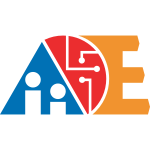 AIIDE-2019-DemediukYDWB #analysis
AIIDE-2019-DemediukYDWB #analysis- Role Identification for Accurate Analysis in Dota 2 (SD, PY, AD, JAW, FB), pp. 130–138.
 CoG-2019-FowlerNC #case study #game studies
CoG-2019-FowlerNC #case study #game studies- Identifying Cognitive Load in a Computer Game: An exploratory study of young children (AF, KN, AC), pp. 1–6.
 DiGRA-2019-RegnathE #game studies #social
DiGRA-2019-RegnathE #game studies #social- Me, myself and others: Connecting player identification to gaming social capital (FR, AE).
 FDG-2019-BoweyFM
FDG-2019-BoweyFM - Red or blue pill: fostering identification and transportation through dialogue choices in RPGs (JTB, MAF, RLM), p. 11.
 VS-Games-2019-BakalosRDDPV #network #using
VS-Games-2019-BakalosRDDPV #network #using- Choreographic Pose Identification using Convolutional Neural Networks (NB, IR, ND, AD, EP, AV), pp. 1–7.
 CIKM-2019-AliARR #named
CIKM-2019-AliARR #named- EPA: Exoneration and Prominence based Age for Infection Source Identification (SSA, TA, AR, SAMR), pp. 891–900.
 CIKM-2019-FanZDCSL #approach #graph #learning #network #novel
CIKM-2019-FanZDCSL #approach #graph #learning #network #novel- Learning to Identify High Betweenness Centrality Nodes from Scratch: A Novel Graph Neural Network Approach (CF, LZ, YD, MC, YS, ZL), pp. 559–568.
 CIKM-2019-LiECL #clustering #mobile #multi #network
CIKM-2019-LiECL #clustering #mobile #multi #network- Multi-scale Trajectory Clustering to Identify Corridors in Mobile Networks (LL, SME, CAC, CL), pp. 2253–2256.
 CIKM-2019-LiuLLZS #classification
CIKM-2019-LiuLLZS #classification- Sexual Harassment Story Classification and Key Information Identification (YL, QL, XL, QZ, LS), pp. 2385–2388.
 CIKM-2019-SinhaMSMS0 #approach #multi #twitter
CIKM-2019-SinhaMSMS0 #approach #multi #twitter- #suicidal - A Multipronged Approach to Identify and Explore Suicidal Ideation in Twitter (PPS, RM, RS, DM, RRS, HL0), pp. 941–950.
 CIKM-2019-SrinivasanRSG
CIKM-2019-SrinivasanRSG - Identifying Facet Mismatches In Search Via Micrographs (SS, NSR, KS, LG), pp. 1663–1672.
 CIKM-2019-ZhangFYZS #framework #network
CIKM-2019-ZhangFYZS #framework #network- Key Player Identification in Underground Forums over Attributed Heterogeneous Information Network Embedding Framework (YZ, YF, YY, LZ, CS), pp. 549–558.
 CIKM-2019-ZhengSKY #clique #set
CIKM-2019-ZhengSKY #clique #set- Author Set Identification via Quasi-Clique Discovery (YZ, CS, XK, YY), pp. 771–780.
 ECIR-p1-2019-TrienesB #community
ECIR-p1-2019-TrienesB #community- Identifying Unclear Questions in Community Question Answering Websites (JT, KB), pp. 276–289.
 ECIR-p2-2019-ElsayedNBHSMA #automation #exclamation #verification
ECIR-p2-2019-ElsayedNBHSMA #automation #exclamation #verification- CheckThat! at CLEF 2019: Automatic Identification and Verification of Claims (TE, PN, ABC, MH, RS, GDSM, PA), pp. 309–315.
 ECIR-p2-2019-JolyGBKPSGBVPSS #challenge #predict
ECIR-p2-2019-JolyGBKPSGBVPSS #challenge #predict- LifeCLEF 2019: Biodiversity Identification and Prediction Challenges (AJ, HG, CB, SK, MP, MS, HG, PB, WPV, RP, JS, FRS, HM), pp. 275–282.
 ECIR-p2-2019-PritsosRS #distance #nearest neighbour #using #web
ECIR-p2-2019-PritsosRS #distance #nearest neighbour #using #web- Open-Set Web Genre Identification Using Distributional Features and Nearest Neighbors Distance Ratio (DAP, AR0, ES), pp. 3–11.
 ICML-2019-ChaudhuriK #multi #probability
ICML-2019-ChaudhuriK #multi #probability- PAC Identification of Many Good Arms in Stochastic Multi-Armed Bandits (ARC, SK), pp. 991–1000.
 ICML-2019-JaberZB #equivalence #markov
ICML-2019-JaberZB #equivalence #markov- Causal Identification under Markov Equivalence: Completeness Results (AJ, JZ, EB), pp. 2981–2989.
 ICML-2019-SarkarR #finite #linear
ICML-2019-SarkarR #finite #linear- Near optimal finite time identification of arbitrary linear dynamical systems (TS, AR), pp. 5610–5618.
 KDD-2019-ChakrabortyF #framework #robust
KDD-2019-ChakrabortyF #framework #robust- A Robust Framework for Accelerated Outcome-driven Risk Factor Identification from EHR (PC, FF), pp. 1800–1808.
 KDD-2019-HanYZSLZ0K #graph #matrix #named #network
KDD-2019-HanYZSLZ0K #graph #matrix #named #network- GCN-MF: Disease-Gene Association Identification By Graph Convolutional Networks and Matrix Factorization (PH, PY, PZ, SS, YL0, JZ, XG0, PK), pp. 705–713.
 KDD-2019-Ning00LR
KDD-2019-Ning00LR - Spatio-temporal Event Forecasting and Precursor Identification (YN, LZ0, FC0, CTL, HR), pp. 3237–3238.
 KDD-2019-SchulzeMRLB #using
KDD-2019-SchulzeMRLB #using- Context by Proxy: Identifying Contextual Anomalies Using an Output Proxy (JPS, AM, ER, HAL, KB), pp. 2059–2068.
 KDD-2019-Venkataraman0 #towards
KDD-2019-Venkataraman0 #towards- Towards Identifying Impacted Users in Cellular Services (SV, JW0), pp. 3029–3039.
 KDD-2019-YinH #analysis #estimation #testing
KDD-2019-YinH #analysis #estimation #testing- The Identification and Estimation of Direct and Indirect Effects in A/B Tests through Causal Mediation Analysis (XY, LH), pp. 2989–2999.
 ASE-2019-NamHMMV #api #mining #named #problem #usability
ASE-2019-NamHMMV #api #mining #named #problem #usability- MARBLE: Mining for Boilerplate Code to Identify API Usability Problems (DN, AH, AM, BAM, BV), pp. 615–627.
 ASE-2019-ReicheltKH #named #performance
ASE-2019-ReicheltKH #named #performance- PeASS: A Tool for Identifying Performance Changes at Code Level (DGR, SK, WH), pp. 1146–1149.
 ASE-2019-Zhang #approach #injection #machine learning #sql
ASE-2019-Zhang #approach #injection #machine learning #sql- A Machine Learning Based Approach to Identify SQL Injection Vulnerabilities (KZ), pp. 1286–1288.
 ESEC-FSE-2019-Cetin #developer #graph #traceability #using
ESEC-FSE-2019-Cetin #developer #graph #traceability #using- Identifying the most valuable developers using artifact traceability graphs (HAC), pp. 1196–1198.
 ESEC-FSE-2019-FucciMM #api #documentation #machine learning #on the #using
ESEC-FSE-2019-FucciMM #api #documentation #machine learning #on the #using- On using machine learning to identify knowledge in API reference documentation (DF, AM, WM), pp. 109–119.
- ICSE-2019-Du0LGZLJ #assessment #metric #named
- Leopard: identifying vulnerable code for vulnerability assessment through program metrics (XD, BC0, YL, JG, YZ, YL0, YJ0), pp. 60–71.
- ICSE-2019-HeCHWPY #fault #locality
- A system identification based Oracle for control-CPS software fault localization (ZH, YC, EH, QW, YP0, HY), pp. 116–127.
- ICSE-2019-XiaoWCWG #android #automation #classification #named #user interface
- IconIntent: automatic identification of sensitive UI widgets based on icon classification for Android apps (XX, XW, ZC, HW, PG), pp. 257–268.
 CASE-2019-DuHD #physics #using
CASE-2019-DuHD #physics #using- Model Identification and Physical Exercise Control using Nonlinear Heart Rate Model and Particle Filter (DD, ZH, YD), pp. 405–410.
 CASE-2019-MatsuokaNT #approach #machine learning #problem #scheduling
CASE-2019-MatsuokaNT #approach #machine learning #problem #scheduling- Machine Learning Approach for Identification of Objective Function in Production Scheduling Problems (YM, TN, KT), pp. 679–684.
 CASE-2019-Pinitnanthakorn #parametricity
CASE-2019-Pinitnanthakorn #parametricity- Parameters Identification of a Five-Axis Machine Tool by Haar Wavelet (AP, SLC), pp. 271–274.
 FASE-2019-PonzioBPAF #api #automation
FASE-2019-PonzioBPAF #api #automation- Automatically Identifying Sufficient Object Builders from Module APIs (PP, VSB, MP, NA, MFF), pp. 427–444.
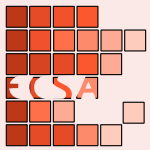 ECSA-2018-MartiniFBR #architecture #case study #scalability #smell
ECSA-2018-MartiniFBR #architecture #case study #scalability #smell- Identifying and Prioritizing Architectural Debt Through Architectural Smells: A Case Study in a Large Software Company (AM, FAF, AB, RR), pp. 320–335.
 EDM-2018-Andrews-ToddFSR #collaboration #online #problem
EDM-2018-Andrews-ToddFSR #collaboration #online #problem- Identifying Profiles of Collaborative Problem Solvers in an Online Electronics Environment (JAT, CF, JS, AR).
 EDM-2018-LeeCN #framework #online #platform #video
EDM-2018-LeeCN #framework #online #platform #video- Identifying User Engagement Patterns in an Online Video Discussion Platform (SYL, HSC, GN).
 ICPC-2018-BlasiG #clone detection #named
ICPC-2018-BlasiG #clone detection #named- Replicomment: identifying clones in code comments (AB, AG), pp. 320–323.
 ICPC-2018-DoiHASK #automation #on the #question
ICPC-2018-DoiHASK #automation #on the #question- On the naturalness of auto-generated code: can we identify auto-generated code automatically? (MD, YH, RA, KS, SK), pp. 340–343.
 ICPC-2018-LiuDAA #behaviour #component #execution #interface
ICPC-2018-LiuDAA #behaviour #component #execution #interface- Component interface identification and behavioral model discovery from software execution data (CL, BFvD, NA, WMPvdA), pp. 97–107.
 ICPC-2018-MessaoudiPBBS #approach #search-based
ICPC-2018-MessaoudiPBBS #approach #search-based- A search-based approach for accurate identification of log message formats (SM, AP, DB, LCB, RS), pp. 167–177.
 ICPC-2018-ShatnawiSSASS #api #component #dynamic analysis #object-oriented
ICPC-2018-ShatnawiSSASS #api #component #dynamic analysis #object-oriented- Identifying software components from object-oriented APIs based on dynamic analysis (AS, HS, MAS, ZA, HAS, AS), pp. 189–199.
 ICSME-2018-KlusenerMKW #abstraction
ICSME-2018-KlusenerMKW #abstraction- Reducing Code Duplication by Identifying Fresh Domain Abstractions (SK, AJM, JK, HvW), pp. 569–578.
 MSR-2018-ClaesMKF08 #automation #developer #open source #towards
MSR-2018-ClaesMKF08 #automation #developer #open source #towards- Towards automatically identifying paid open source developers (MC, MM, MK, UF), pp. 437–441.
 MSR-2018-OttAHBL08 #approach #image #learning #source code #video
MSR-2018-OttAHBL08 #approach #image #learning #source code #video- A deep learning approach to identifying source code in images and video (JO, AA, PH, AB, EL), pp. 376–386.
 MSR-2018-WilkieHKLNRPK #developer #ide #using
MSR-2018-WilkieHKLNRPK #developer #ide #using- Who's this?: developer identification using IDE event data (JW, ZAH, AK, JL, GN, CR, MP, JK), pp. 90–93.
 SANER-2018-BurgerG #locality #named
SANER-2018-BurgerG #locality #named- FINALIsT2: Feature identification, localization, and tracing tool (AB, SG), pp. 532–537.
 SANER-2018-Salem #agile #mining #named
SANER-2018-Salem #agile #mining #named- GoldRusher: A miner for rapid identification of hidden code (AS), pp. 517–521.
 SCAM-2018-ChochlovEBIS
SCAM-2018-ChochlovEBIS - [Engineering Paper] Identifying Feature Clones in a Suite of Systems (MC, ME, JB, DI, MS), pp. 149–154.
 CIKM-2018-Avigdor-Elgrabli #email #thread
CIKM-2018-Avigdor-Elgrabli #email #thread- More than Threads: Identifying Related Email Messages (NAE, RG, IGZ, AR), pp. 1711–1714.
 CIKM-2018-FanLFSL #network #semantics
CIKM-2018-FanLFSL #network #semantics- A Globalization-Semantic Matching Neural Network for Paraphrase Identification (MF, WL, YF, MS, PL0), pp. 2067–2075.
 CIKM-2018-GaoJLD0 #network #social
CIKM-2018-GaoJLD0 #network #social- User Identification with Spatio-Temporal Awareness across Social Networks (XG, WJ, YL0, YD, WD0), pp. 1831–1834.
 CIKM-2018-HashemiWKZC18a #learning
CIKM-2018-HashemiWKZC18a #learning- Impact of Domain and User's Learning Phase on Task and Session Identification in Smart Speaker Intelligent Assistants (SHH, KW, AEK, IZ, PAC), pp. 1193–1202.
 CIKM-2018-NobariAHN #comprehension #query
CIKM-2018-NobariAHN #comprehension #query- Query Understanding via Entity Attribute Identification (ADN, AA, FH, MN), pp. 1759–1762.
 CIKM-2018-Yu0LYL #adaptation #network #recommendation #social
CIKM-2018-Yu0LYL #adaptation #network #recommendation #social- Adaptive Implicit Friends Identification over Heterogeneous Network for Social Recommendation (JY, MG0, JL, HY, HL0), pp. 357–366.
 ICML-2018-Katz-SamuelsS
ICML-2018-Katz-SamuelsS - Feasible Arm Identification (JKS, CS), pp. 2540–2548.
 ICML-2018-TaoBZ #dependence #linear
ICML-2018-TaoBZ #dependence #linear- Best Arm Identification in Linear Bandits with Linear Dimension Dependency (CT, SAB, YZ0), pp. 4884–4893.
 ICML-2018-ZanetteB #bound #learning #problem
ICML-2018-ZanetteB #bound #learning #problem- Problem Dependent Reinforcement Learning Bounds Which Can Identify Bandit Structure in MDPs (AZ, EB), pp. 5732–5740.
 ICPR-2018-AiZYH #algorithm #named
ICPR-2018-AiZYH #algorithm #named- iCushion: A Pressure Map Algorithm for High Accuracy Human Identification (HA, LZ, ZY, HH), pp. 3483–3488.
 ICPR-2018-BoudraYB #metaprogramming #statistics
ICPR-2018-BoudraYB #metaprogramming #statistics- Plant identification from bark: A texture description based on Statistical Macro Binary Pattern (SB, IY, AB), pp. 1530–1535.
 ICPR-2018-CaoCHP #learning #metric
ICPR-2018-CaoCHP #learning #metric- Region-specific Metric Learning for Person Re-identification (MC, CC0, XH, SP), pp. 794–799.
 ICPR-2018-DuSZ #contest #multi #network
ICPR-2018-DuSZ #contest #multi #network- Which Part is Better: Multi-Part Competition Network for person Re-Identification (PD, YS, YZ0), pp. 1634–1639.
 ICPR-2018-FerrariBB #dataset
ICPR-2018-FerrariBB #dataset- Extended YouTube Faces: a Dataset for Heterogeneous Open-Set Face Identification (CF, SB, ADB), pp. 3408–3413.
 ICPR-2018-GuoLLL #adaptation #kernel #ranking
ICPR-2018-GuoLLL #adaptation #kernel #ranking- Density-Adaptive Kernel based Re-Ranking for Person Re-Identification (RPG, CGL, YL, JL), pp. 982–987.
 ICPR-2018-HanAMYU
ICPR-2018-HanAMYU - Script Identification of Central Asia Based on Fused Texture Features (XkH, AA, HM, NY, KU), pp. 3675–3680.
 ICPR-2018-HuangXG #incremental #kernel #null
ICPR-2018-HuangXG #incremental #kernel #null- Incremental Kernel Null Foley-Sammon Transform for Person Re-identification (XH, JX, GG), pp. 1683–1688.
 ICPR-2018-JiangLSWZW #learning #similarity
ICPR-2018-JiangLSWZW #learning #similarity- Orientation-Guided Similarity Learning for Person Re-identification (NJ, JL, CS, YW, ZZ, WW), pp. 2056–2061.
 ICPR-2018-LicandroSRDDSLK
ICPR-2018-LicandroSRDDSLK - WGAN Latent Space Embeddings for Blast Identification in Childhood Acute Myeloid Leukaemia (RL, TS, MR, MD, MD, AS, GL, MK), pp. 3868–3873.
 ICPR-2018-LiPZ
ICPR-2018-LiPZ - Vehicle Re-Identification by Deep Feature Fusion Based on Joint Bayesian Criterion (SL, MP, LZ), pp. 2032–2037.
 ICPR-2018-LiuZWWZ #mining #multi
ICPR-2018-LiuZWWZ #mining #multi- Identification of Hypertension by Mining Class Association Rules from Multi-dimensional Features (FL0, XZ, ZW, TW, YZ), pp. 3114–3119.
 ICPR-2018-LiZO #video
ICPR-2018-LiZO #video- Identification of ASD Children based on Video Data (JL0, YZ, GO), pp. 367–372.
 ICPR-2018-MahboubiBC #approach #problem
ICPR-2018-MahboubiBC #approach #problem- A structural approach to Person Re-identification problem (AM, LB, DC), pp. 1616–1621.
 ICPR-2018-MukherjeeOP0
ICPR-2018-MukherjeeOP0 - A Dravidian Language Identification System (HM, SMO, SP, KR0), pp. 2654–2657.
 ICPR-2018-NavyaSSRGPL #gender #multi
ICPR-2018-NavyaSSRGPL #gender #multi- Multi-Gradient Directional Features for Gender Identification (BJN, GCS, PS, SR, DSG, UP0, TL), pp. 3657–3662.
 ICPR-2018-SoleymaniDKDN #abstraction #multimodal #network
ICPR-2018-SoleymaniDKDN #abstraction #multimodal #network- Multi-Level Feature Abstraction from Convolutional Neural Networks for Multimodal Biometric Identification (SS, AD, HK, JMD, NMN), pp. 3469–3476.
 ICPR-2018-WangWLW0 #detection
ICPR-2018-WangWLW0 #detection- Temporal Action Detection by Joint Identification-Verification (WW, YW, HL, SW, JC0), pp. 2026–2031.
 ICPR-2018-WuYSZ #learning #ranking
ICPR-2018-WuYSZ #learning #ranking- Joint Semi-supervised Learning and Re-ranking for Vehicle Re-identification (FW, SY, JSS, BZ), pp. 278–283.
 ICPR-2018-WuZZKZC #visual notation
ICPR-2018-WuZZKZC #visual notation- Joint Identification-Verification Model for Visual Tracking (MW, YZ, YZ, TK, LZ, BC), pp. 1676–1682.
 ICPR-2018-XiangLHH
ICPR-2018-XiangLHH - Person Re-identification Based on Feature Fusion and Triplet Loss Function (JX, RL, JH, WH), pp. 3477–3482.
 ICPR-2018-YanKM
ICPR-2018-YanKM - Person Re-Identification with Vision and Language (FY0, JK, KM), pp. 2136–2141.
 ICPR-2018-ZhangCQZW
ICPR-2018-ZhangCQZW - Person Re-Identification with Weighted Spatial-Temporal Features (DZ, RC, ZQ, WZ, QW), pp. 1426–1431.
 ICPR-2018-ZhangSOS #network #using
ICPR-2018-ZhangSOS #network #using- Person Re-identification Using Two-Stage Convolutional Neural Network (YZ, JS, DO, HTS), pp. 3341–3346.
 ICPR-2018-ZhuZLLZC #network
ICPR-2018-ZhuZLLZC #network- A Shortly and Densely Connected Convolutional Neural Network for Vehicle Re-identification (JZ, HZ, ZL, SL, LZ, CC), pp. 3285–3290.
 KDD-2018-CobbEMR #calculus #multi #process
KDD-2018-CobbEMR #calculus #multi #process- Identifying Sources and Sinks in the Presence of Multiple Agents with Gaussian Process Vector Calculus (ADC, RE, AM, SJR), pp. 1254–1262.
 KDD-2018-KoptelovZBBC #named
KDD-2018-KoptelovZBBC #named- PrePeP: A Tool for the Identification and Characterization of Pan Assay Interference Compounds (MK, AZ, PB, RB, BC), pp. 462–471.
 KDD-2018-LinKLZSXZQZ #big data #interactive #multi #named
KDD-2018-LinKLZSXZQZ #big data #interactive #multi #named- BigIN4: Instant, Interactive Insight Identification for Multi-Dimensional Big Data (QL, WK, JGL, HZ0, KS, YX, ZZ, BQ, DZ), pp. 547–555.
 KDD-2018-SunTYWZ #modelling #predict
KDD-2018-SunTYWZ #modelling #predict- Identify Susceptible Locations in Medical Records via Adversarial Attacks on Deep Predictive Models (MS, FT, JY, FW, JZ), pp. 793–801.
 OOPSLA-2018-VeduradaN #refactoring #subclass
OOPSLA-2018-VeduradaN #refactoring #subclass- Identifying refactoring opportunities for replacing type code with subclass and state (JV, VKN), p. 28.
 PLATEAU-2018-ZengC #online #rust
PLATEAU-2018-ZengC #online #rust- Identifying Barriers to Adoption for Rust through Online Discourse (AZ, WC), p. 6.
 ASE-2018-DegiovanniMRA #algorithm #search-based
ASE-2018-DegiovanniMRA #algorithm #search-based- A genetic algorithm for goal-conflict identification (RD, FM, GR, NA), pp. 520–531.
 ASE-2018-DouHXZ0 #spreadsheet
ASE-2018-DouHXZ0 #spreadsheet- Expandable group identification in spreadsheets (WD, SH, LX, DZ, JW0), pp. 498–508.
 ASE-2018-YanDWW0Z #android #process
ASE-2018-YanDWW0Z #android #process- Characterizing and identifying misexposed activities in Android applications (JY, XD, PW, TW, JY0, JZ), pp. 691–701.
 ESEC-FSE-2018-HeLLZLZ #analysis #problem
ESEC-FSE-2018-HeLLZLZ #analysis #problem- Identifying impactful service system problems via log analysis (SH, QL, JGL, HZ0, MRL, DZ), pp. 60–70.
- ICSE-2018-GaoZLK #analysis #online #overview
- Online app review analysis for identifying emerging issues (CG, JZ, MRL, IK), pp. 48–58.
- ICSE-2018-GarciaHM #android #detection #lightweight #obfuscation #product line
- Lightweight, obfuscation-resilient detection and family identification of Android malware (JG, MH, SM), p. 497.
- ICSE-2018-SousaOOBGLKMFOL #design #problem #source code
- Identifying design problems in the source code: a grounded theory (LdSS, AO, WNO, SDJB, AG, JL, MK, RMdM, BF, RFO, CL, RBdP), pp. 921–931.
- ICSE-2018-XiongLZ00 #correctness #program repair
- Identifying patch correctness in test-based program repair (YX, XL, MZ, LZ0, GH0), pp. 789–799.
- ICSE-2018-ZhouSLXWK
- Identifying features in forks (SZ, SS, OL, YX, AW, CK), pp. 105–116.
 CASE-2018-LuPC #automation #process
CASE-2018-LuPC #automation #process- Automated Process State Identification for Metal Additive Manufacturing based on Power Data (ZL, TP, WC), pp. 1587–1592.
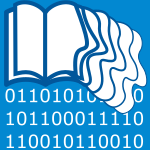 JCDL-2017-HassanAH #information management #using
JCDL-2017-HassanAH #information management #using- Identifying Important Citations Using Contextual Information from Full Text (SUH, AA, PH), pp. 41–48.
 JCDL-2017-YangHHOZKG #learning #library #using
JCDL-2017-YangHHOZKG #learning #library #using- Smart Library: Identifying Books on Library Shelves Using Supervised Deep Learning for Scene Text Reading (XY, DH, WH, AO, ZZ, DK, CLG), pp. 245–248.
 EDM-2017-DianaSK #education #logic
EDM-2017-DianaSK #education #logic- Teaching Informal Logical Fallacy Identification with a Cognitive Tutor (ND, JCS, KRK).
 EDM-2017-GitinabardLHB #community #student
EDM-2017-GitinabardLHB #community #student- Identifying student communities in blended courses (NG, CL, SH, TB).
 EDM-2017-HarrakBL #behaviour #student
EDM-2017-HarrakBL #behaviour #student- Identifying relationships between students' questions type and their behavior (FH, FB, VL).
 ICPC-2017-MondalRS #debugging
ICPC-2017-MondalRS #debugging- Identifying code clones having high possibilities of containing bugs (MM, CKR, KAS), pp. 99–109.
 ICPC-2017-TangL #feature model #variability
ICPC-2017-TangL #feature model #variability- Constructing feature model by identifying variability-aware modules (YT, HL), pp. 263–274.
 SANER-2017-RahmanR #concept #information retrieval #named #strict
SANER-2017-RahmanR #concept #information retrieval #named #strict- STRICT: Information retrieval based search term identification for concept location (MMR0, CKR), pp. 79–90.
 SANER-2017-SilvaVB #dependence #javascript #legacy
SANER-2017-SilvaVB #dependence #javascript #legacy- Statically identifying class dependencies in legacy JavaScript systems: First results (LHS, MTV, AB), pp. 427–431.
 SANER-2017-Ujihara0II #named #refactoring
SANER-2017-Ujihara0II #named #refactoring- c-JRefRec: Change-based identification of Move Method refactoring opportunities (NU, AO0, TI, KI), pp. 482–486.
 SEFM-2017-MasciZJC #analysis #requirements #safety #user interface
SEFM-2017-MasciZJC #analysis #requirements #safety #user interface- A Hazard Analysis Method for Systematic Identification of Safety Requirements for User Interface Software in Medical Devices (PM, YZ0, PLJ, JCC), pp. 284–299.
 FDG-2017-LeeR
FDG-2017-LeeR - Identifying and evaluating successful non-meta strategies in league of legends (CSL, IR), p. 6.
 VS-Games-2017-BacklundEMT #challenge #game studies #research
VS-Games-2017-BacklundEMT #challenge #game studies #research- Developing games for non-leisure contexts: Identification of challenges and research gaps (PB, HE, BBM, MT), pp. 15–22.
 CIKM-2017-FaniBD #community
CIKM-2017-FaniBD #community- Temporally Like-minded User Community Identification through Neural Embeddings (HF, EB, WD), pp. 577–586.
 CIKM-2017-HuangZLLZH #graph #named
CIKM-2017-HuangZLLZH #graph #named- KIEM: A Knowledge Graph based Method to Identify Entity Morphs (LH, LZ, SL, FL, YZ, SH), pp. 2111–2114.
 CIKM-2017-LinMZ #approach #modelling #multi #topic
CIKM-2017-LinMZ #approach #modelling #multi #topic- An Enhanced Topic Modeling Approach to Multiple Stance Identification (JL, WM, YZ), pp. 2167–2170.
 CIKM-2017-MandalGPG #automation #documentation
CIKM-2017-MandalGPG #automation #documentation- Automatic Catchphrase Identification from Legal Court Case Documents (AM, KG, AP0, SG0), pp. 2187–2190.
 CIKM-2017-MumtazW #network
CIKM-2017-MumtazW #network- Identifying Top-K Influential Nodes in Networks (SM, XW), pp. 2219–2222.
 CIKM-2017-ZhengSWH #generative #keyword #twitter
CIKM-2017-ZhengSWH #generative #keyword #twitter- Semi-Supervised Event-related Tweet Identification with Dynamic Keyword Generation (XZ, AS, SW0, JH), pp. 1619–1628.
 ECIR-2017-JhamtaniRCN #enterprise
ECIR-2017-JhamtaniRCN #enterprise- Leveraging Site Search Logs to Identify Missing Content on Enterprise Webpages (HJ, RSR, NC, EN), pp. 506–512.
 ICML-2017-ChenC0Z #adaptation #multi
ICML-2017-ChenC0Z #adaptation #multi- Adaptive Multiple-Arm Identification (JC, XC0, QZ0, YZ0), pp. 722–730.
 ICML-2017-ChenKB #equation #linear #modelling #testing #using
ICML-2017-ChenKB #equation #linear #modelling #testing #using- Identification and Model Testing in Linear Structural Equation Models using Auxiliary Variables (BC, DK, EB), pp. 757–766.
 ICML-2017-MaystreG17a #named #network
ICML-2017-MaystreG17a #named #network- ChoiceRank: Identifying Preferences from Node Traffic in Networks (LM, MG), pp. 2354–2362.
 ICML-2017-SenSDS #online
ICML-2017-SenSDS #online- Identifying Best Interventions through Online Importance Sampling (RS, KS, AGD, SS), pp. 3057–3066.
 ICML-2017-ZhouLZ #equilibrium #game studies #nash #random
ICML-2017-ZhouLZ #equilibrium #game studies #nash #random- Identify the Nash Equilibrium in Static Games with Random Payoffs (YZ, JL, JZ0), pp. 4160–4169.
 KDD-2017-AlbertKG #network #scalability #using
KDD-2017-AlbertKG #network #scalability #using- Using Convolutional Networks and Satellite Imagery to Identify Patterns in Urban Environments at a Large Scale (AA, JK, MCG), pp. 1357–1366.
 KDD-2017-SoskaGRC #automation
KDD-2017-SoskaGRC #automation- Automatic Application Identification from Billions of Files (KS, CSG, KAR, NC), pp. 2021–2030.
 ASE-2017-RupprechtC0BLB #c #c++ #data type #named
ASE-2017-RupprechtC0BLB #c #c++ #data type #named- DSIbin: identifying dynamic data structures in C/C++ binaries (TR, XC0, DHW0, JHB, GL, HB), pp. 331–341.
 ESEC-FSE-2017-Kohli #android #named
ESEC-FSE-2017-Kohli #android #named- DecisionDroid: a supervised learning-based system to identify cloned Android applications (AK), pp. 1059–1061.
 ESEC-FSE-2017-PastoreMM #behaviour #named
ESEC-FSE-2017-PastoreMM #behaviour #named- BDCI: behavioral driven conflict identification (FP, LM, DM), pp. 570–581.
 ESEC-FSE-2017-ZhouS #automation #commit #debugging #security
ESEC-FSE-2017-ZhouS #automation #commit #debugging #security- Automated identification of security issues from commit messages and bug reports (YZ, AS), pp. 914–919.
 ASPLOS-2017-ZhangSGCS #security #verification
ASPLOS-2017-ZhangSGCS #security #verification- Identifying Security Critical Properties for the Dynamic Verification of a Processor (RZ, NS, CG, AC, CS), pp. 541–554.
 CASE-2017-ChenGL #analysis #markov #online #performance
CASE-2017-ChenGL #analysis #markov #online #performance- Load identification based on Factorial Hidden Markov Model and online performance analysis (SC, FG, TL0), pp. 1249–1253.
 ECSA-2016-AbukwaikAR #analysis #api #automation #concept #constraints #documentation #towards
ECSA-2016-AbukwaikAR #analysis #api #automation #concept #constraints #documentation #towards- Towards Seamless Analysis of Software Interoperability: Automatic Identification of Conceptual Constraints in API Documentation (HA, MA, HDR), pp. 67–83.
 WICSA-2016-TsigkanosK #formal method #on the #specification
WICSA-2016-TsigkanosK #formal method #on the #specification- On Formalizing and Identifying Patterns in Cloud Workload Specifications (CT, TK), pp. 262–267.
 EDM-2016-CraigHXFH #behaviour #learning #persistent #predict
EDM-2016-CraigHXFH #behaviour #learning #persistent #predict- Identifying relevant user behavior and predicting learning and persistence in an ITS-based afterschool program (SDC, XH, JX, YF, XH), pp. 581–582.
 EDM-2016-MoriC #behaviour #online #performance #student
EDM-2016-MoriC #behaviour #online #performance #student- Identifying Student Behaviors Early in the Term for Improving Online Course Performance (MM, PC), pp. 611–612.
 EDM-2016-WangC #online #student
EDM-2016-WangC #online #student- A Nonlinear State Space Model for Identifying At-Risk Students in Open Online Courses (FW0, LC0), pp. 527–532.
 ICPC-2016-BeckMW #comparison #composition #multi #visual notation
ICPC-2016-BeckMW #comparison #composition #multi #visual notation- Identifying modularization patterns by visual comparison of multiple hierarchies (FB0, JM, DW), pp. 1–10.
 ICPC-2016-FernandezBAIG #component
ICPC-2016-FernandezBAIG #component- Glyph-based software component identification (IF, AB, JPSA, AI, TG), pp. 1–10.
 ICPC-2016-SuBKS
ICPC-2016-SuBKS - Identifying functionally similar code in complex codebases (FHS, JB0, GEK, SS), pp. 1–10.
 ICSME-2016-WieseSSTG #ambiguity #heuristic #multi
ICSME-2016-WieseSSTG #ambiguity #heuristic #multi- Who is Who in the Mailing List? Comparing Six Disambiguation Heuristics to Identify Multiple Addresses of a Participant (ISW, JTdS, IS, CT, MAG), pp. 345–355.
 SANER-2016-DamZ #classification #natural language
SANER-2016-DamZ #classification #natural language- Software Language Identification with Natural Language Classifiers (JKvD, VZ), pp. 624–628.
 SANER-2016-MendesVHS #random #using
SANER-2016-MendesVHS #random #using- Identifying Utility Functions Using Random Forests (TM, MTV, ACH, AS), pp. 614–618.
 CIKM-2016-0064NRR #detection #framework #learning #multi
CIKM-2016-0064NRR #detection #framework #learning #multi- A Multiple Instance Learning Framework for Identifying Key Sentences and Detecting Events (WW0, YN, HR, NR), pp. 509–518.
 CIKM-2016-ManshaKKA #network #self #speech
CIKM-2016-ManshaKKA #network #self #speech- A Self-Organizing Map for Identifying InfluentialCommunities in Speech-based Networks (SM, FK, AK, AA), pp. 1965–1968.
 CIKM-2016-NguyenGMD #multi
CIKM-2016-NguyenGMD #multi- Multiple Infection Sources Identification with Provable Guarantees (HTN0, PG, MLM, TND), pp. 1663–1672.
 ECIR-2016-PotthastBBDFGKL #information retrieval #research #web
ECIR-2016-PotthastBBDFGKL #information retrieval #research #web- Who Wrote the Web? Revisiting Influential Author Identification Research Applicable to Information Retrieval (MP, SB, TB, FD, FF, JMG, JK, WL, FM, MEM, RP, BR, LR, TR, TS, MT, SW, BS0, ES, MH), pp. 393–407.
 ICPR-2016-AdakCB #testing
ICPR-2016-AdakCB #testing- Writer identification by training on one script but testing on another (CA, BBC, MB), pp. 1153–1158.
 ICPR-2016-Alonso-PerezERS
ICPR-2016-Alonso-PerezERS - A foveation technique applied to face de-identification (VAP, REC, JMRC, LES), pp. 4268–4273.
 ICPR-2016-BertoliniOS #difference #multi #using
ICPR-2016-BertoliniOS #difference #multi #using- Multi-script writer identification using dissimilarity (DB, LSO, RS), pp. 3025–3030.
 ICPR-2016-CarbonneauGG #learning #multi #random #using
ICPR-2016-CarbonneauGG #learning #multi #random #using- Witness identification in multiple instance learning using random subspaces (MAC, EG, GG), pp. 3639–3644.
 ICPR-2016-HeCL #re-engineering
ICPR-2016-HeCL #re-engineering- Cross-view transformation based sparse reconstruction for person re-identification (WXH, YCC, JHL), pp. 3410–3415.
 ICPR-2016-HsiaoC #algorithm #orthogonal #re-engineering #recognition
ICPR-2016-HsiaoC #algorithm #orthogonal #re-engineering #recognition- Over-atoms accumulation orthogonal matching pursuit reconstruction algorithm for fish recognition and identification (YHH, CCC), pp. 1071–1076.
 ICPR-2016-JermanPLSC #analysis #automation
ICPR-2016-JermanPLSC #analysis #automation- Automatic cutting plane identification for computer-aided analysis of intracranial aneurysms (TJ, FP, BL, ZS, AC), pp. 1484–1489.
 ICPR-2016-KsibiMA
ICPR-2016-KsibiMA - Topological weighted fisher vectors for person re-identification (SK, MM, CBA), pp. 3097–3102.
 ICPR-2016-LiGYZ
ICPR-2016-LiGYZ - Person re-identification via person DPM based partition (SL, CG, HY, JZ), pp. 3856–3861.
 ICPR-2016-LinK
ICPR-2016-LinK - Improving cross sensor interoperability for fingerprint identification (CL, AK0), pp. 943–948.
 ICPR-2016-MaoFWH #kernel #performance
ICPR-2016-MaoFWH #kernel #performance- Fast kernel SVM training via support vector identification (XM, ZF, OW, WH), pp. 1554–1559.
 ICPR-2016-MartinelFM #distributed
ICPR-2016-MartinelFM #distributed- Distributed and Unsupervised Cost-Driven Person Re-Identification (NM, GLF, CM), pp. 1225–1230.
 ICPR-2016-Martinho-Corbishley #semantics
ICPR-2016-Martinho-Corbishley #semantics- Retrieving relative soft biometrics for semantic identification (DMC, MSN, JNC), pp. 3067–3072.
 ICPR-2016-MatsukawaS #using
ICPR-2016-MatsukawaS #using- Person re-identification using CNN features learned from combination of attributes (TM, ES), pp. 2428–2433.
 ICPR-2016-MeiDSB #network
ICPR-2016-MeiDSB #network- Scene text script identification with Convolutional Recurrent Neural Networks (JM, LD, BS, XB), pp. 4053–4058.
 ICPR-2016-NishiyamaNYYIS #physics #using
ICPR-2016-NishiyamaNYYIS #physics #using- Person re-identification using co-occurrence attributes of physical and adhered human characteristics (MN, SN, TY, HY, YI, KS), pp. 2085–2090.
 ICPR-2016-PratesS #kernel
ICPR-2016-PratesS #kernel- Kernel Hierarchical PCA for person re-identification (RFdCP, WRS), pp. 2091–2096.
 ICPR-2016-RaymondI
ICPR-2016-RaymondI - Bus trajectory identification by map-matching (RR, TI), pp. 1618–1623.
 ICPR-2016-SamarasMP #robust
ICPR-2016-SamarasMP #robust- Robustness in blind camera identification (SS, VM, IP), pp. 3874–3879.
 ICPR-2016-ShwetaE0B #architecture #interactive #learning
ICPR-2016-ShwetaE0B #architecture #interactive #learning- A deep learning architecture for protein-protein Interaction Article identification (S, AE, SS0, PB), pp. 3128–3133.
 ICPR-2016-WangZWGSH #learning #metric #similarity
ICPR-2016-WangZWGSH #learning #metric #similarity- Contextual Similarity Regularized Metric Learning for person re-identification (JW0, JZ, ZW, CG, NS, RH0), pp. 2048–2053.
 ICPR-2016-ZhaoSJ #classification #robust
ICPR-2016-ZhaoSJ #classification #robust- Robust signal identification for dynamic pattern classification (RZ, GS, QJ), pp. 3910–3915.
 KDD-2016-CartonHJMPWCPHG
KDD-2016-CartonHJMPWCPHG - Identifying Police Officers at Risk of Adverse Events (SC, JH, KJ, AM, YP, JW, CC, CPTEP, LH, RG), pp. 67–76.
 KDD-2016-HanZWZ #interactive
KDD-2016-HanZWZ #interactive- Generalized Hierarchical Sparse Model for Arbitrary-Order Interactive Antigenic Sites Identification in Flu Virus Data (LH0, YZ0, XFW, TZ0), pp. 865–874.
 KDD-2016-WulczynKVHWBG
KDD-2016-WulczynKVHWBG - Identifying Earmarks in Congressional Bills (EW, MK, VV, MH, JW, CB, RG), pp. 303–311.
 KDD-2016-YuCG #network #social
KDD-2016-YuCG #network #social- Identifying Decision Makers from Professional Social Networks (SY, EC, AG), pp. 333–342.
 ASE-2016-Greene0 #developer #mining #named #open source
ASE-2016-Greene0 #developer #mining #named #open source- CVExplorer: identifying candidate developers by mining and exploring their open source contributions (GJG, BF), pp. 804–809.
 ASE-2016-ThakurG #specification
ASE-2016-ThakurG #specification- Identifying domain elements from textual specifications (JST, AG), pp. 566–577.
 FSE-2016-Costa #collaboration
FSE-2016-Costa #collaboration- Identifying participants for collaborative merge (CC), pp. 1100–1102.
 FSE-2016-FordSGP #stack overflow
FSE-2016-FordSGP #stack overflow- Paradise unplugged: identifying barriers for female participation on stack overflow (DF, JS0, PJG, CP), pp. 846–857.
 FSE-2016-Meng #fine-grained
FSE-2016-Meng #fine-grained- Fine-grained binary code authorship identification (XM), pp. 1097–1099.
- ICSE-2016-LinLZZ #named #problem
- iDice: problem identification for emerging issues (QL, JGL, HZ0, DZ), pp. 214–224.
- ICSE-2016-XiaoCKMF #architecture
- Identifying and quantifying architectural debt (LX0, YC, RK, RM, QF), pp. 488–498.
 CASE-2016-HuYLD #automation #petri net #scalability
CASE-2016-HuYLD #automation #petri net #scalability- Critical stages and their identification in large scale automated manufacturing systems via Petri nets (HH, YY, YL0, ND), pp. 413–420.
 CASE-2016-LiZHS #detection #fault
CASE-2016-LiZHS #detection #fault- Fusing system configuration information for building cooling plant Fault Detection and severity level identification (DL, YZ, GH, CJS), pp. 1319–1325.
 CASE-2016-OetingerKS #design #parametricity
CASE-2016-OetingerKS #design #parametricity- Parameter identification and controller design for high-rack feeder systems and fork lifts (DO, KLK, OS), pp. 509–514.
 CASE-2016-RonB #industrial #modelling #probability
CASE-2016-RonB #industrial #modelling #probability- Stochastic modelling and identification of industrial robots (MR, PB), pp. 342–347.
 CASE-2016-TanCT #automation #component #diagrams #preprocessor
CASE-2016-TanCT #automation #component #diagrams #preprocessor- Automated identification of components in raster piping and instrumentation diagram with minimal pre-processing (WCT, IMC, HKT), pp. 1301–1306.
 QoSA-2015-DurisicST #architecture #set #standard
QoSA-2015-DurisicST #architecture #set #standard- Identifying Optimal Sets of Standardized Architectural Features: A Method and its Automotive Application (DD, MS, MT), pp. 103–112.
 WICSA-2015-LiLA #architecture #technical debt
WICSA-2015-LiLA #architecture #technical debt- Architectural Technical Debt Identification Based on Architecture Decisions and Change Scenarios (ZL, PL, PA), pp. 65–74.
 DRR-2015-LiGTY #documentation
DRR-2015-LiGTY #documentation- Cross-reference identification within a document (SL, LG, ZT, YY), p. 940209.
 JCDL-2015-WeissmanABL #wiki
JCDL-2015-WeissmanABL #wiki- Identifying Duplicate and Contradictory Information in Wikipedia (SW, SA, JB, JJL), pp. 57–60.
 SIGMOD-2015-RazniewskiKNS #database #query
SIGMOD-2015-RazniewskiKNS #database #query- Identifying the Extent of Completeness of Query Answers over Partially Complete Databases (SR, FK, WN, DS), pp. 561–576.
 EDM-2015-MostowGEG #automation #learning #word
EDM-2015-MostowGEG #automation #learning #word- Automatic Identification of Nutritious Contexts for Learning Vocabulary Words (JM, DG, RE, RG), pp. 266–273.
 EDM-2015-RiddleBGMCCP #mining
EDM-2015-RiddleBGMCCP #mining- Mining a Written Values Affirmation Intervention to Identify the Unique Linguistic Features of Stigmatized Groups (TR, SB, WG, SM, GC, JC, VPV), pp. 274–281.
 EDM-2015-SharmaJD #towards
EDM-2015-SharmaJD #towards- Identifying Styles and Paths toward Success in MOOCs (KS, PJ, PD), pp. 408–411.
 ICSME-2015-BaloghABVGV #developer #interactive
ICSME-2015-BaloghABVGV #developer #interactive- Identifying wasted effort in the field via developer interaction data (GB, GA, ÁB, LV, TG, AZV), pp. 391–400.
 MSR-2015-BlincoeHD #ecosystem #git #using
MSR-2015-BlincoeHD #ecosystem #git #using- Ecosystems in GitHub and a Method for Ecosystem Identification Using Reference Coupling (KB, FH, DD), pp. 202–211.
 MSR-2015-GuptaSPA #challenge #overview #process #scalability
MSR-2015-GuptaSPA #challenge #overview #process #scalability- Identifying Software Process Management Challenges: Survey of Practitioners in a Large Global IT Company (MG, AS, SP, AMA), pp. 346–356.
 SANER-2015-InfanteB
SANER-2015-InfanteB - Efficiently identifying object production sites (AI, AB), pp. 575–579.
 SANER-2015-OumarouAEDK
SANER-2015-OumarouAEDK - Identifying the exact fixing actions of static rule violation (HO, NA, AE, SD, DTK), pp. 371–379.
 SANER-2015-QiuSM #graph #library #morphism #using
SANER-2015-QiuSM #graph #library #morphism #using- Library functions identification in binary code by using graph isomorphism testings (JQ, XS, PM), pp. 261–270.
 SANER-2015-RahmanR
SANER-2015-RahmanR - TextRank based search term identification for software change tasks (MMR, CKR), pp. 540–544.
 SANER-2015-SharmaTL #automation #named #twitter
SANER-2015-SharmaTL #automation #named #twitter- NIRMAL: Automatic identification of software relevant tweets leveraging language model (AS, YT, DL), pp. 449–458.
 SCAM-2015-GhafariGR #automation #testing
SCAM-2015-GhafariGR #automation #testing- Automatically identifying focal methods under test in unit test cases (MG, CG, KR), pp. 61–70.
 LATA-2015-UlyantsevZS #automaton #symmetry
LATA-2015-UlyantsevZS #automaton #symmetry- BFS-Based Symmetry Breaking Predicates for DFA Identification (VU, IZ, AS), pp. 611–622.
 CHI-2015-FlatlaATKS #named #people
CHI-2015-FlatlaATKS #named #people- ColourID: Improving Colour Identification for People with Impaired Colour Vision (DRF, ARA, RDT, DLK, CS), pp. 3543–3552.
 CHI-2015-HolzBK #mobile #named #using
CHI-2015-HolzBK #mobile #named #using- Bodyprint: Biometric User Identification on Mobile Devices Using the Capacitive Touchscreen to Scan Body Parts (CH, SB, MK), pp. 3011–3014.
 DHM-EH-2015-ColomboFRV15a #automation
DHM-EH-2015-ColomboFRV15a #automation- Automatic Identification of Below-Knee Residuum Anatomical Zones (GC, GF, CR, AV), pp. 327–335.
 DUXU-UI-2015-SunJ
DUXU-UI-2015-SunJ - Lyricon (Lyrics + Earcons) Improves Identification of Auditory Cues (YS, MJ), pp. 382–389.
 HIMI-IKC-2015-WangN #analysis #matrix
HIMI-IKC-2015-WangN #analysis #matrix- Dot Matrix Analysis of Plant Operation Data for Identifying Sequential Alarms Triggered by Single Root Cause (ZW, MN), pp. 152–158.
 SCSM-2015-VillelaXP #collaboration #network
SCSM-2015-VillelaXP #collaboration #network- Identifying Collaboration Strategies in Scientific Collaboration Networks (MLBV, SX, ROP), pp. 253–264.
 ICEIS-v1-2015-EnriquezLGMC #open data #problem
ICEIS-v1-2015-EnriquezLGMC #open data #problem- Entity Identification Problem in Big and Open Data (JGE, VL, MG, FJDM, MJEC), pp. 404–408.
 ICEIS-v1-2015-PfaffK #automation #benchmark #classification #documentation #metric #natural language
ICEIS-v1-2015-PfaffK #automation #benchmark #classification #documentation #metric #natural language- Natural Language Processing Techniques for Document Classification in IT Benchmarking — Automated Identification of Domain Specific Terms (MP, HK), pp. 360–366.
 ICEIS-v2-2015-BeraOC #component #modelling #representation #variability
ICEIS-v2-2015-BeraOC #component #modelling #representation #variability- Evidence-based SMarty Support for Variability Identification and Representation in Component Models (MHGB, EOJ, TEC), pp. 295–302.
 ICEIS-v2-2015-JuniorP #approach #named #ontology #requirements
ICEIS-v2-2015-JuniorP #approach #named #ontology #requirements- OnTheme/Doc — An Ontology-based Approach for Crosscutting Concern Identification from Software Requirements (PAPJ, RADP), pp. 188–200.
 ICEIS-v3-2015-Wissotzki #approach #process
ICEIS-v3-2015-Wissotzki #approach #process- A Process Approach for Capability Identification and Management (MW), pp. 204–212.
 CIKM-2015-BerardiEMO0 #automation #classification
CIKM-2015-BerardiEMO0 #automation #classification- Semi-Automated Text Classification for Sensitivity Identification (GB, AE, CM, IO, FS0), pp. 1711–1714.
 CIKM-2015-BizidNBFD #learning #microblog #sequence
CIKM-2015-BizidNBFD #learning #microblog #sequence- Identification of Microblogs Prominent Users during Events by Learning Temporal Sequences of Features (IB, NN, PB, SF, AD), pp. 1715–1718.
 CIKM-2015-KourogiFKN #social #social media
CIKM-2015-KourogiFKN #social #social media- Identifying Attractive News Headlines for Social Media (SK, HF, AK, HN), pp. 1859–1862.
 CIKM-2015-MazumderMP #consistency #twitter
CIKM-2015-MazumderMP #consistency #twitter- Identifying Top-k Consistent News-Casters on Twitter (SM, SM, DP), pp. 1875–1878.
 CIKM-2015-RezvaniLXL #network #scalability #social
CIKM-2015-RezvaniLXL #network #scalability #social- Identifying Top-k Structural Hole Spanners in Large-Scale Social Networks (MR, WL, WX, CL), pp. 263–272.
 ECIR-2015-GogMP #on the #statistics #using
ECIR-2015-GogMP #on the #statistics #using- On Identifying Phrases Using Collection Statistics (SG, AM, MP), pp. 278–283.
 ICML-2015-GeigerZSGJ #component #process
ICML-2015-GeigerZSGJ #component #process- Causal Inference by Identification of Vector Autoregressive Processes with Hidden Components (PG, KZ, BS, MG, DJ), pp. 1917–1925.
 ICML-2015-WuGS #combinator #feedback #finite #on the
ICML-2015-WuGS #combinator #feedback #finite #on the- On Identifying Good Options under Combinatorially Structured Feedback in Finite Noisy Environments (YW, AG, CS), pp. 1283–1291.
 KDD-2015-KicKimanR #social #social media #towards
KDD-2015-KicKimanR #social #social media #towards- Towards Decision Support and Goal Achievement: Identifying Action-Outcome Relationships From Social Media (EK, MR), pp. 547–556.
 KDD-2015-LakkarajuASMBGA #framework #machine learning #student
KDD-2015-LakkarajuASMBGA #framework #machine learning #student- A Machine Learning Framework to Identify Students at Risk of Adverse Academic Outcomes (HL, EA, CS, DM, NB, RG, KLA), pp. 1909–1918.
 KDD-2015-RongCM #modelling #social #why
KDD-2015-RongCM #modelling #social #why- Why It Happened: Identifying and Modeling the Reasons of the Happening of Social Events (YR, HC, ZM), pp. 1015–1024.
 KDD-2015-ShaabaniASB
KDD-2015-ShaabaniASB - Early Identification of Violent Criminal Gang Members (ES, AA, PS, JB), pp. 2079–2088.
 KDD-2015-ShahafHM
KDD-2015-ShahafHM - Inside Jokes: Identifying Humorous Cartoon Captions (DS, EH, RM), pp. 1065–1074.
 MLDM-2015-Babu #classification #using
MLDM-2015-Babu #classification #using- Offline Writer Identification in Tamil Using Bagged Classification Trees (SB), pp. 342–354.
 SEKE-2015-Tasse #analysis #metric #using
SEKE-2015-Tasse #analysis #metric #using- Using peak analysis for identifying lagged effects between software metrics (JT), pp. 512–515.
 SEKE-2015-TironiMRM #approach #learning
SEKE-2015-TironiMRM #approach #learning- An approach to identify relevant subjects for supporting the Learning Scheme creation task (HT, ALAM, SSR, AM), pp. 506–511.
 SEKE-2015-YangL #classification #requirements
SEKE-2015-YangL #classification #requirements- Identification and Classification of Requirements from App User Reviews (HY, PL), pp. 7–12.
 SIGIR-2015-AlbakourMO #data type #metadata #topic #using
SIGIR-2015-AlbakourMO #data type #metadata #topic #using- Using Sensor Metadata Streams to Identify Topics of Local Events in the City (MDA, CM, IO), pp. 711–714.
 SIGIR-2015-HarelY #clustering #query
SIGIR-2015-HarelY #clustering #query- Modularity-Based Query Clustering for Identifying Users Sharing a Common Condition (MGOH, EYT), pp. 819–822.
 MoDELS-2015-StephanC #clone detection #detection #using
MoDELS-2015-StephanC #clone detection #detection #using- Identification of Simulink model antipattern instances using model clone detection (MS, JRC), pp. 276–285.
 ESEC-FSE-2015-Konopka #dependence #eye tracking #navigation
ESEC-FSE-2015-Konopka #dependence #eye tracking #navigation- Combining eye tracking with navigation paths for identification of cross-language code dependencies (MK), pp. 1057–1059.
 ESEC-FSE-2015-ZhengMZ #capacity #constraints #problem #process
ESEC-FSE-2015-ZhengMZ #capacity #constraints #problem #process- A method to identify and correct problematic software activity data: exploiting capacity constraints and data redundancies (QZ, AM, MZ), pp. 637–648.
 SAC-2015-Chakraborti #multi #optimisation #summary #topic
SAC-2015-Chakraborti #multi #optimisation #summary #topic- Multi-document text summarization for competitor intelligence: a methodology based on topic identification and artificial bee colony optimization (SC), pp. 1110–1111.
 SAC-2015-FahnrichSP #database #in memory #search-based
SAC-2015-FahnrichSP #database #in memory #search-based- Facing the genome data deluge: efficiently identifying genetic variants with in-memory database technology (CF, MPS, HP), pp. 18–25.
 SAC-2015-Jung0B #analysis #embedded #encoding #power management
SAC-2015-Jung0B #analysis #embedded #encoding #power management- Identification of embedded control units by state encoding and power consumption analysis (EJ, CM, LB), pp. 1957–1959.
 SAC-2015-StegagnoMB #distributed
SAC-2015-StegagnoMB #distributed- Distributed target identification in robotic swarms (PS, CM, HHB), pp. 307–313.
 CASE-2015-BasileCC #modelling #petri net #realtime
CASE-2015-BasileCC #modelling #petri net #realtime- Real time identification of Time Petri net faulty models (FB, PC, JC), pp. 280–285.
 CASE-2015-RonBF
CASE-2015-RonBF - Identification of operations at robotic welding lines (MR, PB, OF), pp. 470–476.
 CASE-2015-RoyelYLLH #optimisation #parametricity #using
CASE-2015-RoyelYLLH #optimisation #parametricity #using- A hysteresis model and parameter identification for MR pin joints using immune particle swarm optimization (SR, YY, YL, JL, QPH), pp. 1319–1324.
 DAC-2015-TashjianD #on the #using
DAC-2015-TashjianD #on the #using- On using control signals for word-level identification in a gate-level netlist (ET, AD), p. 6.
 DATE-2015-ChungSS
DATE-2015-ChungSS - Identifying redundant inter-cell margins and its application to reducing routing congestion (WC, SS, YS), pp. 1659–1664.
 DATE-2015-DoblerHRPRB #adaptation #named
DATE-2015-DoblerHRPRB #adaptation #named- Bordersearch: an adaptive identification of failure regions (MD, MH, MR, GP, WR, MB), pp. 1036–1041.
 DATE-2015-OyaSYT #classification
DATE-2015-OyaSYT #classification- A score-based classification method for identifying hardware-trojans at gate-level netlists (MO, YS, MY, NT), pp. 465–470.
 DATE-2015-SteinhorstL #composition
DATE-2015-SteinhorstL #composition- Topology identification for smart cells in modular batteries (SS, ML), pp. 1249–1252.
 PDP-2015-LuWWCZ #named #performance
PDP-2015-LuWWCZ #named #performance- RaceChecker: Efficient Identification of Harmful Data Races (KL, ZW, XW, CC, XZ), pp. 78–85.
 PPoPP-2015-JinLMLLPCK #automation #benchmark #generative #metric #modelling #parallel #statistics
PPoPP-2015-JinLMLLPCK #automation #benchmark #generative #metric #modelling #parallel #statistics- Combining phase identification and statistic modeling for automated parallel benchmark generation (YJ, ML, XM, QL, JSL, NP, JYC, SK), pp. 269–270.
 ICST-2015-CarboneCPP #security #testing
ICST-2015-CarboneCPP #security #testing- Security Threat Identification and Testing (RC, LC, AP, SEP), pp. 1–8.
 ICTSS-2015-GrozSPO #finite #sequence #state machine #using
ICTSS-2015-GrozSPO #finite #sequence #state machine #using- Inferring Finite State Machines Without Reset Using State Identification Sequences (RG, AdSS, AP, CO), pp. 161–177.
 DRR-2014-FielHGS #documentation
DRR-2014-FielHGS #documentation- Writer identification on historical Glagolitic documents (SF, FH, MG, RS), pp. 902102–10.
 DRR-2014-TaghvaA #fault #web
DRR-2014-TaghvaA #fault #web- Utilizing web data in identification and correction of OCR errors (KT, SA), pp. 902109–6.
 HT-2014-KumarHL #approach #behaviour #twitter
HT-2014-KumarHL #approach #behaviour #twitter- A behavior analytics approach to identifying tweets from crisis regions (SK, XH, HL), pp. 255–260.
 HT-2014-Saez-Trumper #twitter
HT-2014-Saez-Trumper #twitter- Fake tweet buster: a webtool to identify users promoting fake news ontwitter (DST), pp. 316–317.
 JCDL-2014-BatjargalKKM #database #image #multi #using
JCDL-2014-BatjargalKKM #database #image #multi #using- Identifying the same records across multiple Ukiyo-e image databases using textual data in different languages (BB, TK, FK, AM), pp. 193–196.
 JCDL-2014-SultanBS #automation #concept #education #towards
JCDL-2014-SultanBS #automation #concept #education #towards- Towards automatic identification of core concepts in educational resources (MAS, SB, TS), pp. 379–388.
 VLDB-2014-LiagourisT #knowledge base #owl #performance
VLDB-2014-LiagourisT #knowledge base #owl #performance- Efficient Identification of Implicit Facts in Incomplete OWL2-EL Knowledge Bases (JL, MT), pp. 1993–2004.
 EDM-2014-YeKB #learning #mining #multi #process
EDM-2014-YeKB #learning #mining #multi #process- Mining and Identifying Relationships Among Sequential Patterns in Multi-Feature, Hierarchical Learning Activity Data (CY, JSK, GB), pp. 389–390.
 ITiCSE-2014-FalknerVF #learning #self
ITiCSE-2014-FalknerVF #learning #self- Identifying computer science self-regulated learning strategies (KF, RV, NJGF), pp. 291–296.
 ITiCSE-2014-TedreBMC #classification #concept #education #towards
ITiCSE-2014-TedreBMC #classification #concept #education #towards- Towards identification and classification of core and threshold concepts in methodology education in computing (MT, DB, SMB, JCC), pp. 237–242.
 CSMR-WCRE-2014-AntinyanSMOWWHH #agile #case study #development #experience #industrial #risk management
CSMR-WCRE-2014-AntinyanSMOWWHH #agile #case study #development #experience #industrial #risk management- Identifying risky areas of software code in Agile/Lean software development: An industrial experience report (VA, MS, WM, PÖ, EW, JW, AH, JH), pp. 154–163.
 ICPC-2014-EshkevariACP #php
ICPC-2014-EshkevariACP #php- Identifying and locating interference issues in PHP applications: the case of WordPress (LME, GA, JRC, MDP), pp. 157–167.
 ICPC-2014-White #data type #named
ICPC-2014-White #data type #named- dsOli: data structure operation location and identification (DHW), pp. 48–52.
 ICSME-2014-AlalfiRSSDC #automation #modelling #representation #variability
ICSME-2014-AlalfiRSSDC #automation #modelling #representation #variability- Semi-automatic Identification and Representation of Subsystem Variability in Simulink Models (MHA, EJR, AS, MS, TRD, JRC), pp. 486–490.
 MSR-2014-NguyenNHNF #automation #case study #industrial #performance
MSR-2014-NguyenNHNF #automation #case study #industrial #performance- An industrial case study of automatically identifying performance regression-causes (THDN, MN, AEH, MNN, PF), pp. 232–241.
 SCAM-2014-KawamitsuIKKRI #repository #reuse #similarity #source code #using
SCAM-2014-KawamitsuIKKRI #repository #reuse #similarity #source code #using- Identifying Source Code Reuse across Repositories Using LCS-Based Source Code Similarity (NK, TI, TK, RGK, CDR, KI), pp. 305–314.
 SCAM-2014-MondalRS #automation #refactoring
SCAM-2014-MondalRS #automation #refactoring- Automatic Identification of Important Clones for Refactoring and Tracking (MM, CKR, KAS), pp. 11–20.
 AIIDE-2014-Valls-VargasZO #automation #towards
AIIDE-2014-Valls-VargasZO #automation #towards- Toward Automatic Role Identification in Unannotated Folk Tales (JVV, JZ, SO).
 FDG-2014-HicksCB #game studies #quality
FDG-2014-HicksCB #game studies #quality- Part of the game: Changing level creation to identify and filter low quality user-generated levels (AH, VC, TB).
 FDG-2014-YangHR #game studies #predict
FDG-2014-YangHR #game studies #predict- Identifying patterns in combat that are predictive of success in MOBA games (PY, BEH, DLR).
 CHI-2014-HayashiMH #gesture #using
CHI-2014-HayashiMH #gesture #using- Wave to me: user identification using body lengths and natural gestures (EH, MM, JIH), pp. 3453–3462.
 CHI-2014-ReetzG #gesture
CHI-2014-ReetzG #gesture- Making big gestures: effects of gesture size on observability and identification for co-located group awareness (AR, CG), pp. 4087–4096.
 CSCW-2014-ShoresHSKR #game studies #multi
CSCW-2014-ShoresHSKR #game studies #multi- The identification of deviance and its impact on retention in a multiplayer game (KBS, YH, KLS, RK, JR), pp. 1356–1365.
 DUXU-ELAS-2014-GeabelJHABA #using
DUXU-ELAS-2014-GeabelJHABA #using- Pilgrim Smart Identification Using RFID Technology (PSI) (AG, KJ, RAH, RA, MB, MA), pp. 273–280.
 DUXU-TMT-2014-Tao #analysis #user interface
DUXU-TMT-2014-Tao #analysis #user interface- Grammatical Analysis of User Interface Events for Task Identification (YT), pp. 197–205.
 HCI-AIMT-2014-ChakravartyC #artificial reality #using
HCI-AIMT-2014-ChakravartyC #artificial reality #using- Frontal-Standing Pose Based Person Identification Using Kinect (KC, TC), pp. 215–223.
 HCI-AS-2014-Stopka #mobile #requirements
HCI-AS-2014-Stopka #mobile #requirements- Identification of User Requirements for Mobile Applications to Support Door-to-Door Mobility in Public Transport (US), pp. 513–524.
 HCI-TMT-2014-MattosPP #interactive
HCI-TMT-2014-MattosPP #interactive- Can Users Speak for Themselves? Investigating Users Ability to Identify Their Own Interactive Breakdowns (BAMM, RLSP, ROP), pp. 521–532.
 HCI-TMT-2014-PenderL
HCI-TMT-2014-PenderL - Identifying Intention and Perception Mismatches in Digitally Augmented Museum Settings (HLP, DL), pp. 565–576.
 HIMI-AS-2014-JiangLLC #network #sequence
HIMI-AS-2014-JiangLLC #network #sequence- Neural Networks for Identifying Civil Pilot’s Operation Sequences (ZJ, QL, YL, BC), pp. 241–252.
 SCSM-2014-FrischlichRR #social
SCSM-2014-FrischlichRR #social- I’d Rather Die Than Be with You: The Effects of Mortality Salience and Negative Social Identity on Identification with a Virtual Group (LF, DR, OR), pp. 440–451.
 SCSM-2014-LeonardoFGPSSUWC #social #social media #trust
SCSM-2014-LeonardoFGPSSUWC #social #social media #trust- Identifying Locations of Social Significance: Aggregating Social Media Content to Create a New Trust Model for Exploring Crowd Sourced Data and Information (ADL, SF, AG, FP, WS, TS, AU, DW, JBC), pp. 170–177.
 SCSM-2014-Scheiner #dependence #social #social media
SCSM-2014-Scheiner #dependence #social #social media- The Importance of Social Media as Source of Information in the Technology Identification in Dependence of External and Internal Factors (CWS), pp. 103–112.
 CAiSE-2014-GralhaG0 #composition #modelling #requirements
CAiSE-2014-GralhaG0 #composition #modelling #requirements- Identifying Modularity Improvement Opportunities in Goal-Oriented Requirements Models (CG, MG, JA), pp. 91–104.
 CAiSE-2014-SimouKKG #challenge #forensics
CAiSE-2014-SimouKKG #challenge #forensics- Cloud Forensics: Identifying the Major Issues and Challenges (SS, CK, EK, SG), pp. 271–284.
 ICEIS-v2-2014-HoosGKM #analysis #framework #mobile #process
ICEIS-v2-2014-HoosGKM #analysis #framework #mobile #process- Improving Business Processes Through Mobile Apps — An Analysis Framework to Identify Value-added App Usage Scenarios (EH, CG, SK, BM), pp. 71–82.
 CIKM-2014-ElsawyMM #social #social media
CIKM-2014-ElsawyMM #social #social media- TweetMogaz v2: Identifying News Stories in Social Media (EE, MM, WM), pp. 2042–2044.
 CIKM-2014-GuptaB #query
CIKM-2014-GuptaB #query- Identifying Time Intervals of Interest to Queries (DG, KB), pp. 1835–1838.
 CIKM-2014-HasanainEM #microblog
CIKM-2014-HasanainEM #microblog- Identification of Answer-Seeking Questions in Arabic Microblogs (MH, TE, WM), pp. 1839–1842.
 CIKM-2014-LiangZHGB #named #novel #sentiment #word
CIKM-2014-LiangZHGB #named #novel #sentiment #word- CONR: A Novel Method for Sentiment Word Identification (JL, XZ, YH, LG, SB), pp. 1943–1946.
 CIKM-2014-Liu0LXL #towards
CIKM-2014-Liu0LXL #towards- Towards Pathway Variation Identification: Aligning Patient Records with a Care Pathway (HL, YL, XL, GTX, GTL), pp. 1359–1368.
 CIKM-2014-LuSY #network #social
CIKM-2014-LuSY #network #social- Identifying Your Customers in Social Networks (CTL, HHS, PSY), pp. 391–400.
 CIKM-2014-WenR #behaviour #mining #online
CIKM-2014-WenR #behaviour #mining #online- Identifying Latent Study Habits by Mining Learner Behavior Patterns in Massive Open Online Courses (MW, CPR), pp. 1983–1986.
 CIKM-2014-ZengBLLL #keyword #named #query #relational
CIKM-2014-ZengBLLL #keyword #named #query #relational- ExpressQ: Identifying Keyword Context and Search Target in Relational Keyword Queries (ZZ, ZB, TNL, MLL, TWL), pp. 31–40.
 ECIR-2014-MeguebliKDP #approach
ECIR-2014-MeguebliKDP #approach- Unsupervised Approach for Identifying Users’ Political Orientations (YM, MK, BLD, FP), pp. 507–512.
 ICML-c2-2014-ZhouCL #crowdsourcing #multi
ICML-c2-2014-ZhouCL #crowdsourcing #multi- Optimal PAC Multiple Arm Identification with Applications to Crowdsourcing (YZ, XC, JL), pp. 217–225.
 ICPR-2014-BertoliniOJS
ICPR-2014-BertoliniOJS - Assessing Textural Features for Writer Identification on Different Writing Styles and Forgeries (DB, LSO, EJRJ, RS), pp. 268–272.
 ICPR-2014-ChanK #geometry #image #using
ICPR-2014-ChanK #geometry #image #using- Using Leg Geometry to Align Androgenic Hair Patterns in Low Resolution Images for Criminal and Victim Identification (FKSC, AWKK), pp. 495–500.
 ICPR-2014-ChaudhariGN #online
ICPR-2014-ChaudhariGN #online- Unsupervised Focus Group Identification from Online Product Reviews (SC, RG, BN), pp. 1886–1891.
 ICPR-2014-ChenZW #learning #metric
ICPR-2014-ChenZW #learning #metric- Relevance Metric Learning for Person Re-identification by Exploiting Global Similarities (JC, ZZ, YW), pp. 1657–1662.
 ICPR-2014-DuCZ #aspect-oriented #using
ICPR-2014-DuCZ #aspect-oriented #using- A Product Aspects Identification Method by Using Translation-Based Language Model (JD, WC, XZ), pp. 2790–2795.
 ICPR-2014-EikvilH #automation #evaluation #performance
ICPR-2014-EikvilH #automation #evaluation #performance- Evaluation of Binary Descriptors for Fast and Fully Automatic Identification (LE, MH), pp. 154–159.
 ICPR-2014-FeckerAMEF #documentation
ICPR-2014-FeckerAMEF #documentation- Writer Identification for Historical Arabic Documents (DF, AA, VM, JES, TF), pp. 3050–3055.
 ICPR-2014-GarciaMFGM
ICPR-2014-GarciaMFGM - Person Orientation and Feature Distances Boost Re-identification (JG, NM, GLF, AG, CM), pp. 4618–4623.
 ICPR-2014-GuoCLHS #ambiguity #automation #multi
ICPR-2014-GuoCLHS #ambiguity #automation #multi- Multi-shot Person Re-identification with Automatic Ambiguity Inference and Removal (CCG, SZC, JHL, XJH, SCS), pp. 3540–3545.
 ICPR-2014-HeS #invariant
ICPR-2014-HeS #invariant- Delta-n Hinge: Rotation-Invariant Features for Writer Identification (SH, LS), pp. 2023–2028.
 ICPR-2014-KrishFROB
ICPR-2014-KrishFROB - Pre-registration for Improved Latent Fingerprint Identification (RPK, JF, DRC, JOG, JB), pp. 696–701.
 ICPR-2014-KumarPJ #music
ICPR-2014-KumarPJ #music- Identifying Ragas in Indian Music (VK, HP, CVJ), pp. 767–772.
 ICPR-2014-LiuZC #learning #metric #multi #parametricity
ICPR-2014-LiuZC #learning #metric #multi #parametricity- Parametric Local Multi-modal Metric Learning for Person Re-identification (KL, ZCZ, AC), pp. 2578–2583.
 ICPR-2014-MatsukawaOS
ICPR-2014-MatsukawaOS - Person Re-identification via Discriminative Accumulation of Local Features (TM, TO, YS), pp. 3975–3980.
 ICPR-2014-NegiC #image #set
ICPR-2014-NegiC #image #set- Identifying Diverse Set of Images in Flickr (SN, SC), pp. 3624–3629.
 ICPR-2014-RenL14a #matrix
ICPR-2014-RenL14a #matrix- Person Re-identification Based on Relaxed Nonnegative Matrix Factorization with Regularizations (WR, GL), pp. 4654–4659.
 ICPR-2014-SantanaLH #geometry #people #semantics
ICPR-2014-SantanaLH #geometry #people #semantics- People Semantic Description and Re-identification from Point Cloud Geometry (MCS, JLN, DHS), pp. 4702–4707.
 ICPR-2014-ShivakumaraSPBT #video
ICPR-2014-ShivakumaraSPBT #video- Gradient-Angular-Features for Word-wise Video Script Identification (PS, NS, UP, MB, CLT), pp. 3098–3103.
 ICPR-2014-ShivramRG #case study #comparative #modelling #online
ICPR-2014-ShivramRG #case study #comparative #modelling #online- Data Sufficiency for Online Writer Identification: A Comparative Study of Writer-Style Space vs. Feature Space Models (AS, CR, VG), pp. 3121–3125.
 ICPR-2014-YangD #novel #using
ICPR-2014-YangD #novel #using- Novel HHT-Based Features for Biometric Identification Using EEG Signals (SY, FD), pp. 1922–1927.
 ICPR-2014-YangLLYL #estimation #modelling
ICPR-2014-YangLLYL #estimation #modelling- Color Models and Weighted Covariance Estimation for Person Re-identification (YY, SL, ZL, DY, SZL), pp. 1874–1879.
 ICPR-2014-YiLLL #learning #metric
ICPR-2014-YiLLL #learning #metric- Deep Metric Learning for Person Re-identification (DY, ZL, SL, SZL), pp. 34–39.
 KDD-2014-DundarYR #towards
KDD-2014-DundarYR #towards- Batch discovery of recurring rare classes toward identifying anomalous samples (MD, HZY, BR), pp. 223–232.
 KDD-2014-KloumannK #community #set
KDD-2014-KloumannK #community #set- Community membership identification from small seed sets (IMK, JMK), pp. 1366–1375.
 KDD-2014-LiDDCZ #process
KDD-2014-LiDDCZ #process- Identifying and labeling search tasks via query-based hawkes processes (LL, HD, AD, YC, HZ), pp. 731–740.
 KDD-2014-XueWCG
KDD-2014-XueWCG - Identifying tourists from public transport commuters (MX, HW, WC, WSN, GHG), pp. 1779–1788.
 KDIR-2014-BarbantanLP #approach #health #ontology
KDIR-2014-BarbantanLP #approach #health #ontology- Disease Identification in Electronic Health Records — An Ontology based Approach (IB, CL, RP), pp. 261–268.
 KDIR-2014-BarcanteJDCCS #mining #using
KDIR-2014-BarcanteJDCCS #mining #using- Identifying Drug Repositioning Targets using Text Mining (EB, MJ, FD, EC, OGC, FS), pp. 348–353.
 KDIR-2014-JohnsonC #clustering #network
KDIR-2014-JohnsonC #clustering #network- Mathematical Foundations of Networks Supporting Cluster Identification (JEJ, JWC), pp. 277–285.
 KDIR-2014-OkumuraYSO #twitter
KDIR-2014-OkumuraYSO #twitter- Identifying Tweets that Contain a “Heartwarming Story” (MO, YY, MS, HO), pp. 323–326.
 MLDM-2014-AbdullahiCM #approach #novel #using
MLDM-2014-AbdullahiCM #approach #novel #using- A Novel Approach for Identifying Banded Patterns in Zero-One Data Using Column and Row Banding Scores (FBA, FC, RM), pp. 58–72.
 SEKE-2014-AdjoyanSS #legacy #metric #migration #object-oriented #quality #towards
SEKE-2014-AdjoyanSS #legacy #metric #migration #object-oriented #quality #towards- Service Identification Based on Quality Metrics — Object-Oriented Legacy System Migration Towards SOA (SA, ADS, AS), pp. 1–6.
 SEKE-2014-NetoC
SEKE-2014-NetoC - Identifying Threats to Validity and Control Actions in the Planning Stages of Controlled Experiments (AAN, TC), pp. 256–261.
 SEKE-2014-SantosM #detection
SEKE-2014-SantosM #detection- Identifying strategies on god class detection in two controlled experiments (JAMS, MGM), pp. 244–249.
 SEKE-2014-YangL #agile #architecture #development
SEKE-2014-YangL #agile #architecture #development- Identifying and Recording Software Architectural Assumptions in Agile Development (CY, PL), pp. 308–313.
 SIGIR-2014-WangZZL #keyword #twitter
SIGIR-2014-WangZZL #keyword #twitter- Efficiently identify local frequent keyword co-occurrence patterns in geo-tagged Twitter stream (XW, YZ, WZ, XL), pp. 1215–1218.
 ECMFA-2014-MartinezZKT #variability #visualisation
ECMFA-2014-MartinezZKT #variability #visualisation- Identifying and Visualising Commonality and Variability in Model Variants (JM, TZ, JK, YLT), pp. 117–131.
 SPLC-2014-AngererPLGG #dependence #graph #product line
SPLC-2014-AngererPLGG #dependence #graph #product line- Identifying inactive code in product lines with configuration-aware system dependence graphs (FA, HP, DL, AG, PG), pp. 52–61.
 ECOOP-2014-NittaKT #framework
ECOOP-2014-NittaKT #framework- Identifying Mandatory Code for Framework Use via a Single Application Trace (NN, IK, YT), pp. 593–617.
 RE-2014-Ionita #evaluation #information management #risk management #security
RE-2014-Ionita #evaluation #information management #risk management #security- Context-sensitive Information security Risk identification and evaluation techniques (DI), pp. 485–488.
 RE-2014-MasseyRAS #ambiguity #requirements
RE-2014-MasseyRAS #ambiguity #requirements- Identifying and classifying ambiguity for regulatory requirements (AKM, RLR, AIA, PPS), pp. 83–92.
 RE-2014-RiazKSW #automation #natural language #requirements #security
RE-2014-RiazKSW #automation #natural language #requirements #security- Hidden in plain sight: Automatically identifying security requirements from natural language artifacts (MR, JTK, JS, LAW), pp. 183–192.
 FSE-2014-BosuCHHJ #empirical
FSE-2014-BosuCHHJ #empirical- Identifying the characteristics of vulnerable code changes: an empirical study (AB, JCC, MH, PH, DJ), pp. 257–268.
 SAC-2014-AnderssonDA #artificial reality #using
SAC-2014-AnderssonDA #artificial reality #using- Anthropometric and human gait identification using skeleton data from Kinect sensor (VOA, RD, RMdA), pp. 60–61.
 SAC-2014-GraziadioDSSUME #game studies #video
SAC-2014-GraziadioDSSUME #game studies #video- Bespoke video games to provide early response markers to identify the optimal strategies for maximizing rehabilitation (SG, RD, KS, KMAS, GU, GM, JAE), pp. 20–24.
 SAC-2014-HosokawaNY #information retrieval
SAC-2014-HosokawaNY #information retrieval- Location-aware information retrieval for identifying local and distant landmark (YH, YN, TY), pp. 428–435.
 SAC-2014-HuergoPD #approach #modelling #using
SAC-2014-HuergoPD #approach #modelling #using- A method to identify services using master data and artifact-centric modeling approach (RSH, PFP, FCD), pp. 1225–1230.
 CASE-2014-HuangYL #approach
CASE-2014-HuangYL #approach- An intelligent approach to identify elderly body information (YPH, WJY, SYL), pp. 824–829.
 CASE-2014-HuangYTC #design
CASE-2014-HuangYTC #design- Design of client device identification by clock skew in clouds (DJH, KTY, WCT, GMC), pp. 1133–1138.
 CASE-2014-LeeJMC #framework #recognition #robust
CASE-2014-LeeJMC #framework #recognition #robust- Iterative identification framework for robust hand-written digit recognition under extremely noisy conditions (HL, SJ, TM, NYC), pp. 728–733.
 DAC-2014-SullivanBZZJ #functional #hardware #named
DAC-2014-SullivanBZZJ #functional #hardware #named- FIGHT-Metric: Functional Identification of Gate-Level Hardware Trustworthiness (DS, JB, GZ, SZ, YJ), p. 4.
 DAC-2014-WaksmanRSS #analysis #assessment #functional
DAC-2014-WaksmanRSS #analysis #assessment #functional- A Red Team/Blue Team Assessment of Functional Analysis Methods for Malicious Circuit Identification (AW, JR, MS, SS), p. 4.
 DAC-2014-WendtKP
DAC-2014-WendtKP - Techniques for Foundry Identification (JBW, FK, MP), p. 6.
 DAC-2014-ZhengBB #analysis #named #robust #towards
DAC-2014-ZhengBB #analysis #named #robust #towards- CACI: Dynamic Current Analysis Towards Robust Recycled Chip Identification (YZ, AB, SB), p. 6.
 DATE-2014-BeneventiBVDB #analysis #logic
DATE-2014-BeneventiBVDB #analysis #logic- Thermal analysis and model identification techniques for a logic + WIDEIO stacked DRAM test chip (FB, AB, PV, DD, LB), pp. 1–4.
 OSDI-2014-ChenKWZK #web
OSDI-2014-ChenKWZK #web- Identifying Information Disclosure in Web Applications with Retroactive Auditing (HC, TK, XW, NZ, MFK), pp. 555–569.
 PPoPP-2014-IsaacsGBBSH #execution #logic #parallel
PPoPP-2014-IsaacsGBBSH #execution #logic #parallel- Extracting logical structure and identifying stragglers in parallel execution traces (KEI, TG, AB, PTB, MS, BH), pp. 397–398.
 TACAS-2014-BozzanoCGT #component #design #detection #fault #logic #using
TACAS-2014-BozzanoCGT #component #design #detection #fault #logic #using- Formal Design of Fault Detection and Identification Components Using Temporal Epistemic Logic (MB, AC, MG, ST), pp. 326–340.
 ISSTA-2014-NejatiB #constraints #cpu #trade-off #using
ISSTA-2014-NejatiB #constraints #cpu #trade-off #using- Identifying optimal trade-offs between CPU time usage and temporal constraints using search (SN, LCB), pp. 351–361.
 HT-2013-KumarMZL
HT-2013-KumarMZL - Whom should I follow?: identifying relevant users during crises (SK, FM, RZ, HL), pp. 139–147.
 ICDAR-2013-AlkalaiBSL #analysis
ICDAR-2013-AlkalaiBSL #analysis- Improving Formula Analysis with Line and Mathematics Identification (MA, JBB, VS, XL), pp. 334–338.
 ICDAR-2013-AmaralFB #feature model #forensics
ICDAR-2013-AmaralFB #feature model #forensics- Feature Selection for Forensic Handwriting Identification (AMMMA, COdAF, FB), pp. 922–926.
 ICDAR-2013-ChenL
ICDAR-2013-ChenL - Alternatives for Page Skew Compensation in Writer Identification (JC, DPL), pp. 927–931.
 ICDAR-2013-DanielsB
ICDAR-2013-DanielsB - Discriminating Features for Writer Identification (ZAD, HSB), pp. 1385–1389.
 ICDAR-2013-FerrerMP
ICDAR-2013-FerrerMP - LBP Based Line-Wise Script Identification (MAF, AM, UP), pp. 369–373.
 ICDAR-2013-FielS #retrieval #using #visual notation
ICDAR-2013-FielS #retrieval #using #visual notation- Writer Identification and Writer Retrieval Using the Fisher Vector on Visual Vocabularies (SF, RS), pp. 545–549.
 ICDAR-2013-HangargeSP
ICDAR-2013-HangargeSP - Directional Discrete Cosine Transform for Handwritten Script Identification (MH, KCS, RP), pp. 344–348.
 ICDAR-2013-JainD13a #using
ICDAR-2013-JainD13a #using- Writer Identification Using an Alphabet of Contour Gradient Descriptors (RJ, DSD), pp. 550–554.
 ICDAR-2013-KchaouKO #independence #online
ICDAR-2013-KchaouKO #independence #online- Text-Independent Writer Identification on Online Arabic Handwriting (MGK, SK, JMO), pp. 428–432.
 ICDAR-2013-KhanKS #problem #question #verification
ICDAR-2013-KhanKS #problem #question #verification- Can Signature Biometrics Address Both Identification and Verification Problems? (SHK, ZK, FS), pp. 981–985.
 ICDAR-2013-KimLT #classification #heuristic #using
ICDAR-2013-KimLT #classification #heuristic #using- Identification of Investigator Name Zones Using SVM Classifiers and Heuristic Rules (JK, DXL, GRT), pp. 140–144.
 ICDAR-2013-KleberFDS #database #named #retrieval #word
ICDAR-2013-KleberFDS #database #named #retrieval #word- CVL-DataBase: An Off-Line Database for Writer Retrieval, Writer Identification and Word Spotting (FK, SF, MD, RS), pp. 560–564.
 ICDAR-2013-LouloudisGSP #contest
ICDAR-2013-LouloudisGSP #contest- ICDAR 2013 Competition on Writer Identification (GL, BG, NS, AP), pp. 1397–1401.
 ICDAR-2013-MalikLAOBF #contest #verification
ICDAR-2013-MalikLAOBF #contest #verification- ICDAR 2013 Competitions on Signature Verification and Writer Identification for On- and Offline Skilled Forgeries (SigWiComp 2013) (MIM, ML, LA, WO, MB, BF), pp. 1477–1483.
 ICDAR-2013-Newell #question #what
ICDAR-2013-Newell #question #what- What Should We Be Comparing for Writer Identification? (AJN), pp. 418–422.
 ICDAR-2013-RaniDL #multi
ICDAR-2013-RaniDL #multi- Script Identification of Pre-segmented Multi-font Characters and Digits (RR, RD, GSL), pp. 1150–1154.
 ICDAR-2013-SaidaniEB #word
ICDAR-2013-SaidaniEB #word- Identification of Machine-Printed and Handwritten Words in Arabic and Latin Scripts (AS, AKE, AB), pp. 798–802.
 ICDAR-2013-SharmaCPB #video
ICDAR-2013-SharmaCPB #video- Word-Wise Script Identification from Video Frames (NS, SC, UP, MB), pp. 867–871.
 JCDL-2013-FenlonV #library
JCDL-2013-FenlonV #library- Local histories in global digital libraries: identifying demand and evaluating coverage (KF, VEVJ), pp. 191–194.
 JCDL-2013-HeMNS #using
JCDL-2013-HeMNS #using- Identification of works of manga using LOD resources: an experimental FRBRization of bibliographic data of comic books (WH, TM, MN, SS), pp. 253–256.
 JCDL-2013-RoochiTHH #case study #social #social media
JCDL-2013-RoochiTHH #case study #social #social media- Identification of useful user comments in social media: a case study on flickr commons (EMR, KT, BH, GJH), pp. 1–10.
 PODS-2013-Gottlob #polynomial
PODS-2013-Gottlob #polynomial- Deciding monotone duality and identifying frequent itemsets in quadratic logspace (GG), pp. 25–36.
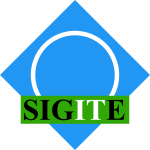 SIGITE-2013-LuntA #source code
SIGITE-2013-LuntA #source code- Identifying information technology graduate-level programs (BML, MQA), pp. 55–58.
 CSMR-2013-KazatoHKOOMHS #feature model #incremental #source code
CSMR-2013-KazatoHKOOMHS #feature model #incremental #source code- Incremental Feature Location and Identification in Source Code (HK, SH, TK, TO, SO, SM, TH, MS), pp. 371–374.
 ICPC-2013-MondalRS #co-evolution #empirical
ICPC-2013-MondalRS #co-evolution #empirical- Insight into a method co-change pattern to identify highly coupled methods: An empirical study (MM, CKR, KAS), pp. 103–112.
 ICSM-2013-Karus #automation #development
ICSM-2013-Karus #automation #development- Automatic Means of Identifying Evolutionary Events in Software Development (SK), pp. 412–415.
 ICSM-2013-LiguCCY #smell
ICSM-2013-LiguCCY #smell- Identification of Refused Bequest Code Smells (EL, AC, TC, NY), pp. 392–395.
 ICSM-2013-RoehmBHP #behaviour #specification #towards
ICSM-2013-RoehmBHP #behaviour #specification #towards- Towards Identification of Software Improvements and Specification Updates by Comparing Monitored and Specified End-User Behavior (TR, BB, TMH, BP), pp. 464–467.
 ICSM-2013-ToroiRV #case study #process #testing
ICSM-2013-ToroiRV #case study #process #testing- Identifying Process Improvement Targets in Test Processes: A Case Study (TT, AR, LV), pp. 11–19.
 MSR-2013-ManiNMNSN #debugging #repository
MSR-2013-ManiNMNSN #debugging #repository- Bug resolution catalysts: identifying essential non-committers from bug repositories (SM, SN, DM, RN, VSS, AAN), pp. 193–202.
 DiGRA-2013-FortimG #community #exclamation #women
DiGRA-2013-FortimG #community #exclamation #women- Attention whore! Perception of female players who identify themselves as women in the communities of MMOs (IF, CdMG).
 DiGRA-2013-GreuterT #game studies #student
DiGRA-2013-GreuterT #game studies #student- Engaging students in OH&S hazard identification through a game (SG, ST).
 DiGRA-2013-NixonB #interactive
DiGRA-2013-NixonB #interactive- Press X for Meaning: Interaction Leads to Identification in Heavy Rain (MN, JB).
 CHI-2013-BirnbaumBFDK #behaviour #using
CHI-2013-BirnbaumBFDK #behaviour #using- Using behavioral data to identify interviewer fabrication in surveys (BEB, GB, ADF, BD, ARK), pp. 2911–2920.
 CHI-2013-HaraLF #artificial reality #crowdsourcing #problem
CHI-2013-HaraLF #artificial reality #crowdsourcing #problem- Combining crowdsourcing and google street view to identify street-level accessibility problems (KH, VL, JF), pp. 631–640.
 CSCW-2013-SmithQC #analysis #using
CSCW-2013-SmithQC #analysis #using- Finger on the pulse: identifying deprivation using transit flow analysis (CSC, DQ, LC), pp. 683–692.
 DUXU-CXC-2013-CarignanK #case study #gamification
DUXU-CXC-2013-CarignanK #case study #gamification- Case Study: Identifying Gamification Opportunities in Sales Applications (JC, SLK), pp. 501–507.
 HCI-AMTE-2013-SantosM #automation #design #implementation #interactive
HCI-AMTE-2013-SantosM #automation #design #implementation #interactive- Design and Implementation of ErgoIdentifier: A Tool for Automated Identification of Websites Interaction Elements (OFdS, MM), pp. 249–255.
 HCI-UC-2013-RodilJRW #representation
HCI-UC-2013-RodilJRW #representation- Identifying and Representing Elements of Local Contexts in Namibia (KR, KLJ, MR, HWT), pp. 332–341.
 HIMI-HSM-2013-SakamotoT #interactive
HIMI-HSM-2013-SakamotoT #interactive- Identification of Agency through Virtual Embodied Interaction (TS, YT), pp. 301–307.
 OCSC-2013-RichterBKF #contest #idea #online
OCSC-2013-RichterBKF #contest #idea #online- Online Idea Contests: Identifying Factors for User Retention (SR, SPB, GK, JF), pp. 76–85.
 ICEIS-J-2013-SuB13a #fine-grained #graph #security
ICEIS-J-2013-SuB13a #fine-grained #graph #security- Foundation for Fine-Grained Security and DRM Control Based on a Service Call Graph Context Identification (ZS, FB), pp. 226–241.
 CIKM-2013-GuGZLG #effectiveness #named #towards
CIKM-2013-GuGZLG #effectiveness #named #towards- AnchorMF: towards effective event context identification (HG, MG, LZ, QL, DG), pp. 629–638.
 ECIR-2013-PritsosS #automation #classification
ECIR-2013-PritsosS #automation #classification- Open-Set Classification for Automated Genre Identification (DAP, ES), pp. 207–217.
 ICML-c1-2013-BubeckWV #multi
ICML-c1-2013-BubeckWV #multi- Multiple Identifications in Multi-Armed Bandits (SB, TW, NV), pp. 258–265.
 KDD-2013-SunBK #optimisation #polynomial
KDD-2013-SunBK #optimisation #polynomial- Quadratic optimization to identify highly heritable quantitative traits from complex phenotypic features (JS, JB, HRK), pp. 811–819.
 KDD-2013-WangDYWCSI #clustering #data mining #framework #mining #towards
KDD-2013-WangDYWCSI #clustering #data mining #framework #mining #towards- Towards long-lead forecasting of extreme flood events: a data mining framework for precipitation cluster precursors identification (DW, WD, KY, XW, PC, DLS, SI), pp. 1285–1293.
 KDD-2013-ZhouLSYWY #named
KDD-2013-ZhouLSYWY #named- FeaFiner: biomarker identification from medical data through feature generalization and selection (JZ, ZL, JS, LY, FW, JY), pp. 1034–1042.
 KDIR-KMIS-2013-BastosBGRCSF #modelling
KDIR-KMIS-2013-BastosBGRCSF #modelling- Managing Information and Knowledge — A Proposal Methodology for Building an Integrated Model based on Information Assets Identification (CAMB, ACMB, ASG, LSdR, MAFC, MLdS, SJMdSF), pp. 520–525.
 KEOD-2013-GeibelEZKJSBMNSTUFTSHT #documentation #information management #ontology
KEOD-2013-GeibelEZKJSBMNSTUFTSHT #documentation #information management #ontology- Patient Identification for Clinical Trials with Ontology-based Information Extraction from Documents (PG, HE, LZ, SK, KJ, JS, AB, FM, CHN, JFS, ST, TU, MF, MT, TS, AH, TT), pp. 230–236.
 KEOD-2013-SagaeF #development #image
KEOD-2013-SagaeF #development #image- Knowledge Resource Development for Identifying Matching Image Descriptions (AS, SEF), pp. 100–108.
 MLDM-2013-ChungJKL #personalisation #recommendation
MLDM-2013-ChungJKL #personalisation #recommendation- Personalized Expert-Based Recommender System: Training C-SVM for Personalized Expert Identification (YC, HWJ, JK, JHL), pp. 434–441.
 SEKE-2013-AnchietaSM #case study #diagrams #prototype #uml #user interface #using
SEKE-2013-AnchietaSM #case study #diagrams #prototype #uml #user interface #using- Using NLP Techniques for Identifying GUI Prototypes and UML Diagrams From Use Cases (RTA, RFdS, RSM), pp. 48–53.
 SEKE-2013-DengWH #algorithm #combinator #multi #using
SEKE-2013-DengWH #algorithm #combinator #multi #using- Combining multiple stress identification algorithms using combinatorial fusion (YD, ZW, DFH), pp. 421–428.
 SEKE-2013-KayaF
SEKE-2013-KayaF - Identifying Extract Method Opportunities Based on Variable References (MK, JWF), pp. 153–158.
 SEKE-2013-Kung #case study #on the
SEKE-2013-Kung #case study #on the- On Use Case Identification (DCK), pp. 759–764.
 SEKE-2013-LosadaJ #documentation #semantics
SEKE-2013-LosadaJ #documentation #semantics- Processing rhetorical, morphosyntactic, and semantic features from corporate technical documents for identifying organizational domain knowledge (BML, CMZJ), pp. 268–272.
 SEKE-2013-MarcalGCJ #mining #repository #using
SEKE-2013-MarcalGCJ #mining #repository #using- Mining Software Repository to Identify Crosscutting Concerns Using Combined Techniques (IM, REG, RCMC, COJ), pp. 338–343.
 SPLC-2013-KoziolekGGDS #analysis #case study #experience #reuse
SPLC-2013-KoziolekGGDS #analysis #case study #experience #reuse- Experiences from identifying software reuse opportunities by domain analysis (HK, TG, TdG, DD, SS), pp. 208–217.
 ER-BR-2013-OliveiraBLC #portuguese
ER-BR-2013-OliveiraBLC #portuguese- Utilizando sistemas de conhecimento para a identificação da presença de metas flexíveis em uma linguagem de domínio (ADPO, JLB, CL, LC).
 RE-2013-NcubeLD #challenge #requirements #research
RE-2013-NcubeLD #challenge #requirements #research- Identifying top challenges for international research on requirements engineering for systems of systems engineering (CN, SLL, HD), pp. 342–344.
 RE-2013-ZarghamiVESW #risk management
RE-2013-ZarghamiVESW #risk management- Assumption-based risk identification method (ARM) in dynamic service provisioning (AZ, EV, MZE, MvS, RW), pp. 175–184.
 REFSQ-2013-CallelePW #interface #requirements #risk management
REFSQ-2013-CallelePW #interface #requirements #risk management- Risk Identification at the Interface between Business Case and Requirements (DC, BP, KW), pp. 253–268.
 ASE-2013-SumnerZ #analysis #execution
ASE-2013-SumnerZ #analysis #execution- Identifying execution points for dynamic analyses (WNS, XZ), pp. 81–91.
 ESEC-FSE-2013-BlincoeVD #coordination #dependence
ESEC-FSE-2013-BlincoeVD #coordination #dependence- Do all task dependencies require coordination? the role of task properties in identifying critical coordination needs in software projects (KB, GV, DD), pp. 213–223.
 ESEC-FSE-2013-GarciaPSHM #distributed
ESEC-FSE-2013-GarciaPSHM #distributed- Identifying message flow in distributed event-based systems (JG, DP, GS, WGJH, NM), pp. 367–377.
 ICSE-2013-ChoudharyPO #named #web
ICSE-2013-ChoudharyPO #named #web- X-PERT: accurate identification of cross-browser issues in web applications (SRC, MRP, AO), pp. 702–711.
 ICSE-2013-Ell #developer #network
ICSE-2013-Ell #developer #network- Identifying failure inducing developer pairs within developer networks (JE), pp. 1471–1473.
 ICSE-2013-Khalid #on the
ICSE-2013-Khalid #on the- On identifying user complaints of iOS apps (HK), pp. 1474–1476.
 SAC-2013-AraujoGA #artificial reality #towards #using
SAC-2013-AraujoGA #artificial reality #towards #using- Towards skeleton biometric identification using the microsoft kinect sensor (RMA, GG, VA), pp. 21–26.
 SAC-2013-HerzogKHFK #automation #web
SAC-2013-HerzogKHFK #automation #web- Feature-based object identification for web automation (CH, IK, WH, RRF, BKS), pp. 742–749.
 SAC-2013-InzingerHSLD #implementation #using
SAC-2013-InzingerHSLD #implementation #using- Identifying incompatible service implementations using pooled decision trees (CI, WH, BS, PL, SD), pp. 485–492.
 SAC-2013-KumarR #algorithm #data type #online
SAC-2013-KumarR #algorithm #data type #online- Online identification of frequently executed acyclic paths by leveraging data stream algorithms (GK, SR), pp. 1694–1695.
 SAC-2013-PorterA #algorithm
SAC-2013-PorterA #algorithm- An evolutionary spline fitting algorithm for identifying filamentous cyanobacteria (JP, DVA), pp. 40–45.
 CASE-2013-BengtssonL #algorithm #behaviour #modelling #using #visualisation
CASE-2013-BengtssonL #algorithm #behaviour #modelling #using #visualisation- Operation behavior modeling using relation identification and visualization algorithms (KB, BL), pp. 368–373.
 CASE-2013-JuLXA #evaluation #performance #quality
CASE-2013-JuLXA #evaluation #performance #quality- Integrated model of productivity and quality in serial production lines with repairs: Performance evaluation and bottleneck identification (FJ, JL, GX, JA), pp. 783–788.
 CC-2013-KempfVP #parallel
CC-2013-KempfVP #parallel- Compiler-Guided Identification of Critical Sections in Parallel Code (SK, RV, MP), pp. 204–223.
 DAC-2013-YousofshahiOLH #capacity #nondeterminism
DAC-2013-YousofshahiOLH #capacity #nondeterminism- Gene modification identification under flux capacity uncertainty (MY, MO, KL, SH), p. 5.
 DATE-2013-BernardiBSRB #embedded #fault #online
DATE-2013-BernardiBSRB #embedded #fault #online- On-line functionally untestable fault identification in embedded processor cores (PB, MB, ES, MSR, OB), pp. 1462–1467.
 DATE-2013-DiversiBTBB
DATE-2013-DiversiBTBB - SCC thermal model identification via advanced bias-compensated least-squares (RD, AB, AT, FB, LB), pp. 230–235.
 DATE-2013-LagraaTP #concurrent #data access #data mining #memory management #mining #simulation
DATE-2013-LagraaTP #concurrent #data access #data mining #memory management #mining #simulation- Data mining MPSoC simulation traces to identify concurrent memory access patterns (SL, AT, FP), pp. 755–760.
 PDP-2013-SuboticSLV #data flow #modelling #programming
PDP-2013-SuboticSLV #data flow #modelling #programming- Identifying Critical Code Sections in Dataflow Programming Models (VS, JCS, JL, MV), pp. 29–37.
 TACAS-2013-WhiteL #data type #evolution #in memory #learning #memory management
TACAS-2013-WhiteL #data type #evolution #in memory #learning #memory management- Identifying Dynamic Data Structures by Learning Evolving Patterns in Memory (DHW, GL), pp. 354–369.
 ICST-2013-Mercaldo #database #process
ICST-2013-Mercaldo #database #process- Identification of Anomalies in Processes of Database Alteration (FM), pp. 513–514.
 ISSTA-2013-XiaoHZX #performance
ISSTA-2013-XiaoHZX #performance- Context-sensitive delta inference for identifying workload-dependent performance bottlenecks (XX, SH, DZ, TX), pp. 90–100.
 WICSA-ECSA-2012-KebirSCC #approach #component #object-oriented
WICSA-ECSA-2012-KebirSCC #approach #component #object-oriented- Quality-Centric Approach for Software Component Identification from Object-Oriented Code (SK, ADS, SC, AC), pp. 181–190.
 DRR-2012-KimLT #classification
DRR-2012-KimLT #classification- Combining SVM classifiers to identify investigator name zones in biomedical articles (JK, DXL, GRT).
 DRR-2012-LinGTHL #documentation #embedded #using
DRR-2012-LinGTHL #documentation #embedded #using- Identification of embedded mathematical formulas in PDF documents using SVM (XL, LG, ZT, XH, XL).
 DRR-2012-PorwalRG #framework
DRR-2012-PorwalRG #framework- An Oracle-based co-training framework for writer identification in offline handwriting (UP, SR, VG).
 JCDL-2012-FosterSDOS #concept #education
JCDL-2012-FosterSDOS #concept #education- Identifying core concepts in educational resources (JMF, MAS, HD, IO, TS), pp. 35–42.
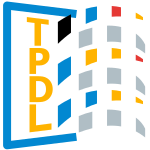 TPDL-2012-BolandREM #dataset
TPDL-2012-BolandREM #dataset- Identifying References to Datasets in Publications (KB, DR, KE, BM), pp. 150–161.
 TPDL-2012-MenesesFS #distributed #documentation #fault
TPDL-2012-MenesesFS #distributed #documentation #fault- Identifying “Soft 404” Error Pages: Analyzing the Lexical Signatures of Documents in Distributed Collections (LM, RF, FS), pp. 197–208.
 VLDB-2012-AgarwalRB #clustering #graph #realtime
VLDB-2012-AgarwalRB #clustering #graph #realtime- Real Time Discovery of Dense Clusters in Highly Dynamic Graphs: Identifying Real World Events in Highly Dynamic Environments (MKA, KR, MB), pp. 980–991.
 VLDB-2012-AngelKSS #maintenance #realtime #streaming
VLDB-2012-AngelKSS #maintenance #realtime #streaming- Dense Subgraph Maintenance under Streaming Edge Weight Updates for Real-time Story Identification (AA, NK, NS, DS), pp. 574–585.
 SIGITE-2012-ShaikhK #delphi #education #learning #metric
SIGITE-2012-ShaikhK #delphi #education #learning #metric- Identifying measures to foster teachers’ competence for personal learning environment conceived teaching scenarios: a delphi study (ZAS, SAK), pp. 127–132.
 SIGITE-2012-UzokaCGJ #education #industrial #project management #requirements #standard
SIGITE-2012-UzokaCGJ #education #industrial #project management #requirements #standard- Identifying the link between project management standards and practices in IT education and the industry expectations and requirements (FMEU, AC, KG, JJ), pp. 91–92.
 CSMR-2012-BertranAGCS #architecture #on the
CSMR-2012-BertranAGCS #architecture #on the- On the Relevance of Code Anomalies for Identifying Architecture Degradation Symptoms (IMB, RA, AG, CC, AvS), pp. 277–286.
 CSMR-2012-HottaHK #dependence #graph #refactoring
CSMR-2012-HottaHK #dependence #graph #refactoring- Identifying, Tailoring, and Suggesting Form Template Method Refactoring Opportunities with Program Dependence Graph (KH, YH, SK), pp. 53–62.
 CSMR-2012-KlattDKKSW #component #evolution
CSMR-2012-KlattDKKSW #component #evolution- Identify Impacts of Evolving Third Party Components on Long-Living Software Systems (BK, ZD, HK, KK, JS, RW), pp. 461–464.
 CSMR-2012-MurtazaSHC #comparison #kernel #on the
CSMR-2012-MurtazaSHC #comparison #kernel #on the- On the Comparison of User Space and Kernel Space Traces in Identification of Software Anomalies (SSM, AS, AHL, MC), pp. 127–136.
 CSMR-2012-NonnenI #monitoring
CSMR-2012-NonnenI #monitoring- Identifying Knowledge Divergence by Vocabulary Monitoring in Software Projects (JN, PI), pp. 441–446.
 CSMR-2012-TianSL #debugging
CSMR-2012-TianSL #debugging- Improved Duplicate Bug Report Identification (YT, CS, DL), pp. 385–390.
 CSMR-2012-ZiadiFSZ #source code
CSMR-2012-ZiadiFSZ #source code- Feature Identification from the Source Code of Product Variants (TZ, LF, MAAdS, MZ), pp. 417–422.
 ICPC-2012-AlawnehH #communication
ICPC-2012-AlawnehH #communication- Identifying computational phases from inter-process communication traces of HPC applications (LA, AHL), pp. 133–142.
 ICSM-2012-BertranACGS #architecture
ICSM-2012-BertranACGS #architecture- Supporting the identification of architecturally-relevant code anomalies (IMB, RA, EC, AG, AvS), pp. 662–665.
 CHI-2012-HollandKT #algorithm #detection #usability #visual notation
CHI-2012-HollandKT #algorithm #detection #usability #visual notation- Identifying usability issues via algorithmic detection of excessive visual search (CH, OK, DET), pp. 2943–2952.
 CSCW-2012-PalMK
CSCW-2012-PalMK - Question temporality: identification and uses (AP, JM, JAK), pp. 257–260.
 CSCW-2012-ZhuKK12a #modelling #online #social
CSCW-2012-ZhuKK12a #modelling #online #social- Organizing without formal organization: group identification, goal setting and social modeling in directing online production (HZ, RK, AK), pp. 935–944.
 EDOC-2012-HarrisonBADN #detection #framework
EDOC-2012-HarrisonBADN #detection #framework- A Framework for Detecting Malware in Cloud by Identifying Symptoms (KH, BB, STTA, CID, APN), pp. 164–172.
 CIKM-2012-BalogN12a #query
CIKM-2012-BalogN12a #query- Hierarchical target type identification for entity-oriented queries (KB, RN), pp. 2391–2394.
 CIKM-2012-CamposBDC #feature model
CIKM-2012-CamposBDC #feature model- Time feature selection for identifying active household members (PGC, AB, FD, IC), pp. 2311–2314.
 CIKM-2012-CamposDJN #approach #higher-order #named #web
CIKM-2012-CamposDJN #approach #higher-order #named #web- GTE: a distributional second-order co-occurrence approach to improve the identification of top relevant dates in web snippets (RC, GD, AJ, CN), pp. 2035–2039.
 CIKM-2012-RamachandranG #graph #representation
CIKM-2012-RamachandranG #graph #representation- A word-order based graph representation for relevance identification (LR, EFG), pp. 2327–2330.
 CIKM-2012-YuR #query
CIKM-2012-YuR #query- Role-explicit query identification and intent role annotation (HY, FR), pp. 1163–1172.
 ECIR-2012-DasMG #classification #topic
ECIR-2012-DasMG #classification #topic- Phrase Pair Classification for Identifying Subtopics (SD, PM, CLG), pp. 489–493.
 ICML-2012-BootsG #problem
ICML-2012-BootsG #problem- Two Manifold Problems with Applications to Nonlinear System Identification (BB, GJG), p. 8.
 ICML-2012-PrasseSLS #email #learning #regular expression
ICML-2012-PrasseSLS #email #learning #regular expression- Learning to Identify Regular Expressions that Describe Email Campaigns (PP, CS, NL, TS), p. 146.
 ICML-2012-RossB #learning #modelling
ICML-2012-RossB #learning #modelling- Agnostic System Identification for Model-Based Reinforcement Learning (SR, DB), p. 247.
 ICPR-2012-ChandaPF
ICPR-2012-ChandaPF - Font identification — In context of an Indic script (SC, UP, KF), pp. 1655–1658.
 ICPR-2012-ChenL
ICPR-2012-ChenL - Exploiting ruling line artifacts in writer identification (JC, DPL), pp. 3737–3740.
 ICPR-2012-DattaBFP #modelling #using
ICPR-2012-DattaBFP #modelling #using- Appearance modeling for person re-identification using Weighted Brightness Transfer Functions (AD, LMGB, RF, SP), pp. 2367–2370.
 ICPR-2012-DuAL #evaluation
ICPR-2012-DuAL #evaluation- Evaluation of color spaces for person re-identification (YD, HA, SL), pp. 1371–1374.
 ICPR-2012-KawaiMHIY #using
ICPR-2012-KawaiMHIY #using- Person re-identification using view-dependent score-level fusion of gait and color features (RK, YM, CH, HI, YY), pp. 2694–2697.
 ICPR-2012-MinCMD #3d #realtime
ICPR-2012-MinCMD #3d #realtime- Real-time 3D face identification from a depth camera (RM, JC, GGM, JLD), pp. 1739–1742.
 ICPR-2012-NejatiZSM0 #image
ICPR-2012-NejatiZSM0 #image- Wonder ears: Identification of identical twins from ear images (HN, LZ, TS, EMM, DG), pp. 1201–1204.
 ICPR-2012-OliverAA #3d #people
ICPR-2012-OliverAA #3d #people- 3D descriptor for people re-identification (JO, AA, AA), pp. 1395–1398.
 ICPR-2012-SnellCK
ICPR-2012-SnellCK - Texture and shape in fluorescence pattern identification for auto-immune disease diagnosis (VS, WJC, JK), pp. 3750–3753.
 ICPR-2012-TakalaP #dataset #named #network #people
ICPR-2012-TakalaP #dataset #named #network #people- CMV100: A dataset for people tracking and re-identification in sparse camera networks (VT, MP), pp. 1387–1390.
 ICPR-2012-TanK #image
ICPR-2012-TanK #image- Human identification from at-a-distance images by simultaneously exploiting iris and periocular features (CWT, AK), pp. 553–556.
 ICPR-2012-TyagiKFSR #classification
ICPR-2012-TyagiKFSR #classification- Fusing biographical and biometric classifiers for improved person identification (VT, HPK, TAF, LVS, NKR), pp. 2351–2354.
 ICPR-2012-YiicelMH #evaluation #modelling
ICPR-2012-YiicelMH #evaluation #modelling- Modeling and identification of group motion via compound evaluation of positional and directional cues (ZY, TM, NH), pp. 1172–1176.
 KDD-2012-Mayer #internet #multi
KDD-2012-Mayer #internet #multi- Bootstrapped language identification for multi-site internet domains (UFM), pp. 579–585.
 KDD-2012-WangZSY #community #network #social
KDD-2012-WangZSY #community #network #social- Magnet community identification on social networks (GW, YZ, XS, PSY), pp. 588–596.
 KDIR-2012-FengYS #documentation #robust
KDIR-2012-FengYS #documentation #robust- Robust Template Identification of Scanned Documents (XF, AY, SS), pp. 103–110.
 KDIR-2012-SchonebergM #documentation
KDIR-2012-SchonebergM #documentation- Contextual Approaches for Identification of Toponyms in Ancient Documents (HS, FM), pp. 163–168.
 KDIR-2012-SorkhiAHH #framework #game studies #network #social
KDIR-2012-SorkhiAHH #framework #game studies #network #social- A Game-Theoretic Framework to Identify Top-K Teams in Social Networks (MS, HA, SH, AH), pp. 252–257.
 MLDM-2012-HossainC #behaviour
MLDM-2012-HossainC #behaviour- Combination of Physiological and Behavioral Biometric for Human Identification (EH, GC), pp. 380–393.
 SEKE-2012-BoaratiP #design #guidelines #interface
SEKE-2012-BoaratiP #design #guidelines #interface- Identification Guidelines for the Design of Interfaces in the context of ECAs and ADHD (SRSB, CSAP), pp. 594–598.
 SEKE-2012-MaZQQXY #analysis #dependence #design pattern #using
SEKE-2012-MaZQQXY #analysis #dependence #design pattern #using- Identification of Design Patterns Using Dependence Analysis (WM, XZ, XQ, JQ, LX, RY), pp. 289–292.
 SEKE-2012-MiaoCLZZ #clustering #correctness #fault #locality #testing
SEKE-2012-MiaoCLZZ #clustering #correctness #fault #locality #testing- Identifying Coincidental Correctness for Fault Localization by Clustering Test Cases (YM, ZC, SL, ZZ, YZ), pp. 267–272.
 SIGIR-2012-SpinaMROBB #aspect-oriented #microblog
SIGIR-2012-SpinaMROBB #aspect-oriented #microblog- Identifying entity aspects in microblog posts (DS, EM, MdR, AO, MTB, MB), pp. 1089–1090.
 SIGIR-2012-TanGS #exclamation
SIGIR-2012-TanGS #exclamation- $100, 000 prize jackpot. call now!: identifying the pertinent features of SMS spam (HT, NG, MS), pp. 1175–1176.
 SIGIR-2012-ZhangXCHDALC #information management #semantics #sentiment #syntax
SIGIR-2012-ZhangXCHDALC #information management #semantics #sentiment #syntax- Sentiment identification by incorporating syntax, semantics and context information (KZ, YX, YC, DH, DD, AA, WkL, ANC), pp. 1143–1144.
 SPLC-2012-LeitnerZTW #variability
SPLC-2012-LeitnerZTW #variability- Requirement identification for variability management in a co-simulation environment (AL, JZ, PT, DW), pp. 269–274.
 SPLC-2012-PatzkeBSSSF #case study #evolution #product line
SPLC-2012-PatzkeBSSSF #case study #evolution #product line- Identifying improvement potential in evolving product line infrastructures: 3 case studies (TP, MB, MS, KS, JES, TF), pp. 239–248.
 TOOLS-EUROPE-2012-MarrD #abstraction #concurrent #implementation #multi #virtual machine
TOOLS-EUROPE-2012-MarrD #abstraction #concurrent #implementation #multi #virtual machine- Identifying a Unifying Mechanism for the Implementation of Concurrency Abstractions on Multi-language Virtual Machines (SM, TD), pp. 171–186.
 RE-2012-CharradaKG #requirements #source code
RE-2012-CharradaKG #requirements #source code- Identifying outdated requirements based on source code changes (EBC, AK, MG), pp. 61–70.
 RE-2012-Todoran #communication #in the cloud #named #requirements
RE-2012-Todoran #communication #in the cloud #named #requirements- StakeCloud: Stakeholder requirements communication and resource identification in the cloud (IT), pp. 353–356.
 REFSQ-2012-BeckersFKS
REFSQ-2012-BeckersFKS - A Pattern-Based Method for Identifying and Analyzing Laws (KB, SF, JCK, HS), pp. 256–262.
 ASE-2012-Meananeatra #maintenance #refactoring #sequence
ASE-2012-Meananeatra #maintenance #refactoring #sequence- Identifying refactoring sequences for improving software maintainability (PM), pp. 406–409.
 ASE-2012-MorenoM #automation #java #named
ASE-2012-MorenoM #automation #java #named- JStereoCode: automatically identifying method and class stereotypes in Java code (LM, AM), pp. 358–361.
 ICSE-2012-MengWZM #approach #evolution #framework
ICSE-2012-MengWZM #approach #evolution #framework- A history-based matching approach to identification of framework evolution (SM, XW, LZ, HM), pp. 353–363.
 ICSE-2012-MitchellS #process
ICSE-2012-MitchellS #process- Software process improvement through the identification and removal of project-level knowledge flow obstacles (SMM, CBS), pp. 1265–1268.
 ICSE-2012-TianLL #debugging #linux
ICSE-2012-TianLL #debugging #linux- Identifying Linux bug fixing patches (YT, JLL, DL), pp. 386–396.
 ICSE-2012-Vetro #automation #static analysis #technical debt #using
ICSE-2012-Vetro #automation #static analysis #technical debt #using- Using automatic static analysis to identify technical debt (AV), pp. 1613–1615.
 ICSE-2012-Yu #analysis #using
ICSE-2012-Yu #analysis #using- Improving failure-inducing changes identification using coverage analysis (KY), pp. 1604–1606.
 SAC-2012-MakanjuZML #clustering #composition #detection
SAC-2012-MakanjuZML #clustering #composition #detection- Spatio-temporal decomposition, clustering and identification for alert detection in system logs (AM, ANZH, EEM, ML), pp. 621–628.
 SAC-2012-MaruhashiTT #using
SAC-2012-MaruhashiTT #using- A method for identification of moving objects by integrative use of a camera and accelerometers (NM, TT, MT), pp. 1–6.
 SAC-2012-ParkDNDKK #memory management #named
SAC-2012-ParkDNDKK #memory management #named- HotDataTrap: a sampling-based hot data identification scheme for flash memory (DP, BKD, YN, DHCD, YK, YK), pp. 1610–1617.
 SAC-2012-SantosCSLB #analysis #heuristic #modelling #process
SAC-2012-SantosCSLB #analysis #heuristic #modelling #process- Analysis of heuristics to identify crosscutting concerns in business process models (FJNS, CC, FMS, JCSdPL, TVB), pp. 1725–1726.
 SAC-2012-SardinhaYNR #aspect-oriented #named #traceability
SAC-2012-SardinhaYNR #aspect-oriented #named #traceability- EA-tracer: identifying traceability links between code aspects and early aspects (AS, YY, NN, AR), pp. 1035–1042.
 ASPLOS-2012-JoaoSMP #parallel #scheduling #thread
ASPLOS-2012-JoaoSMP #parallel #scheduling #thread- Bottleneck identification and scheduling in multithreaded applications (JAJ, MAS, OM, YNP), pp. 223–234.
 CASE-2012-HeZWZ #using
CASE-2012-HeZWZ #using- Identification of dynamic posture in lower extremity using optical fiber sensor (CH, XZ, YW, ZZ), pp. 1057–1060.
 CASE-2012-LiuJCLX #analysis #canonical #correlation #fault #linear #research
CASE-2012-LiuJCLX #analysis #canonical #correlation #fault #linear #research- Research on fault identification for complex system based on generalized linear canonical correlation analysis (DL, DJ, XC, AL, GX), pp. 474–478.
 CASE-2012-WakamatsuAMAH #image #towards
CASE-2012-WakamatsuAMAH #image #towards- Property identification of a deformable belt object from its static images toward its manipulation (HW, MA, EM, EA, SH), pp. 448–453.
 DAC-2012-ZhangTT #using
DAC-2012-ZhangTT #using- Identification of recovered ICs using fingerprints from a light-weight on-chip sensor (XZ, NT, MT), pp. 703–708.
 DATE-2012-RudolfTWW #automation #configuration management
DATE-2012-RudolfTWW #automation #configuration management- Automated critical device identification for configurable analogue transistors (RR, PT, RW, PRW), pp. 858–861.
 ISMM-2012-InoueN #hardware #java #source code
ISMM-2012-InoueN #hardware #java #source code- Identifying the sources of cache misses in Java programs without relying on hardware counters (HI, TN), pp. 133–142.
 PPoPP-2012-SimDKV #analysis #framework #performance
PPoPP-2012-SimDKV #analysis #framework #performance- A performance analysis framework for identifying potential benefits in GPGPU applications (JS, AD, HK, RWV), pp. 11–22.
 ICST-2012-GhandehariLXKK #combinator #testing
ICST-2012-GhandehariLXKK #combinator #testing- Identifying Failure-Inducing Combinations in a Combinatorial Test Set (LSGG, YL, TX, DRK, RK), pp. 370–379.
 SAT-2012-ZhangMZ #constraints #interactive #optimisation #theorem proving
SAT-2012-ZhangMZ #constraints #interactive #optimisation #theorem proving- Faulty Interaction Identification via Constraint Solving and Optimization (JZ, FM, ZZ), pp. 186–199.
 ECSA-2011-StolAB #design pattern #evaluation #open source #process
ECSA-2011-StolAB #design pattern #evaluation #open source #process- Design and Evaluation of a Process for Identifying Architecture Patterns in Open Source Software (KJS, PA, MAB), pp. 147–163.
 DRR-2011-ChenCL #constraints #using
DRR-2011-ChenCL #constraints #using- Using perturbed handwriting to support writer identification in the presence of severe data constraints (JC, WC, DPL), pp. 1–10.
 DRR-2011-CutterBSB #using
DRR-2011-CutterBSB #using- Font group identification using reconstructed fonts (MPC, JvB, FS, TMB), pp. 1–10.
 DRR-2011-KimLT #automation #using
DRR-2011-KimLT #automation #using- Automated identification of biomedical article type using support Vector machines (ICK, DXL, GRT), pp. 1–10.
 DRR-2011-SiddiqiKV #analysis
DRR-2011-SiddiqiKV #analysis- Feature relevance analysis for writer identification (IS, KK, NV), pp. 1–10.
 DRR-2011-YouADRGT #automation #documentation #hybrid #image #retrieval #towards
DRR-2011-YouADRGT #automation #documentation #hybrid #image #retrieval #towards- Automatic identification of ROI in figure images toward improving hybrid (text and image) biomedical document retrieval (DY, SA, DDF, MMR, VG, GRT), pp. 1–10.
 HT-2011-ChoudhuryCC #social #social media
HT-2011-ChoudhuryCC #social #social media- Identifying relevant social media content: leveraging information diversity and user cognition (MDC, SC, MC), pp. 161–170.
 ICDAR-2011-BerettaL #algorithm #evaluation #performance
ICDAR-2011-BerettaL #algorithm #evaluation #performance- Performance Evaluation of Algorithms for Newspaper Article Identification (RB, LL), pp. 394–398.
 ICDAR-2011-BuiVPO #recognition #using #word
ICDAR-2011-BuiVPO #recognition #using #word- Writer Identification Using TF-IDF for Cursive Handwritten Word Recognition (QAB, MV, SP, JMO), pp. 844–848.
 ICDAR-2011-CaoPN #adaptation #recognition
ICDAR-2011-CaoPN #adaptation #recognition- OCR-Driven Writer Identification and Adaptation in an HMM Handwriting Recognition System (HC, RP, PN), pp. 739–743.
 ICDAR-2011-CaoPN11a #markov #modelling #recognition #using
ICDAR-2011-CaoPN11a #markov #modelling #recognition #using- Handwritten and Typewritten Text Identification and Recognition Using Hidden Markov Models (HC, RP, PN), pp. 744–748.
 ICDAR-2011-ChaabouniBKAA #independence #modelling #multi #online
ICDAR-2011-ChaabouniBKAA #independence #modelling #multi #online- Multi-fractal Modeling for On-line Text-Independent Writer Identification (AC, HB, MK, AMA, HEA), pp. 623–627.
 ICDAR-2011-ChaabouniBKAA11a #feature model #online
ICDAR-2011-ChaabouniBKAA11a #feature model #online- Combining of Off-line and On-line Feature Extraction Approaches for Writer Identification (AC, HB, MK, AMA, HEA), pp. 1299–1303.
 ICDAR-2011-ChandaFP
ICDAR-2011-ChandaFP - Identification of Indic Scripts on Torn-Documents (SC, KF, UP), pp. 713–717.
 ICDAR-2011-DuL #privacy
ICDAR-2011-DuL #privacy- Preservative License Plate De-identification for Privacy Protection (LD, HL), pp. 468–472.
 ICDAR-2011-FornesDGL #contest #music
ICDAR-2011-FornesDGL #contest #music- The ICDAR 2011 Music Scores Competition: Staff Removal and Writer Identification (AF, AD, AG, JL), pp. 1511–1515.
 ICDAR-2011-GhoshC #detection #image
ICDAR-2011-GhoshC #detection #image- Composite Script Identification and Orientation Detection for Indian Text Images (SG, BBC), pp. 294–298.
 ICDAR-2011-HassaineAAJB #contest
ICDAR-2011-HassaineAAJB #contest- The ICDAR2011 Arabic Writer Identification Contest (AH, SAM, JMA, AJ, AB), pp. 1470–1474.
 ICDAR-2011-JainD #using
ICDAR-2011-JainD #using- Offline Writer Identification Using K-Adjacent Segments (RJ, DSD), pp. 769–773.
 ICDAR-2011-KimL #library
ICDAR-2011-KimL #library- Functional-Based Table Category Identification in Digital Library (SK, YL), pp. 1364–1368.
 ICDAR-2011-LinGTLH #documentation
ICDAR-2011-LinGTLH #documentation- Mathematical Formula Identification in PDF Documents (XL, LG, ZT, XL, XH), pp. 1419–1423.
 ICDAR-2011-LouloudisSG #contest
ICDAR-2011-LouloudisSG #contest- ICDAR 2011 Writer Identification Contest (GL, NS, BG), pp. 1475–1479.
 ICDAR-2011-PhanSDLT #video
ICDAR-2011-PhanSDLT #video- Video Script Identification Based on Text Lines (TQP, PS, ZD, SL, CLT), pp. 1240–1244.
 JCDL-2011-GollapalliGMC #library #on the
JCDL-2011-GollapalliGMC #library #on the- On identifying academic homepages for digital libraries (SDG, CLG, PM, CC), pp. 123–132.
 JCDL-2011-MurthyLHFPDT #using
JCDL-2011-MurthyLHFPDT #using- Use of subimages in fish species identification: a qualitative study (UM, LTL, EH, EAF, MAPQ, LMLD, RdST), pp. 185–194.
 ITiCSE-2011-GiannakosV #education #predict
ITiCSE-2011-GiannakosV #education #predict- Identifying the predictors of educational webcasts’ adoption (MNG, PV), p. 376.
 SIGITE-2011-RoweLH #assessment #framework #source code
SIGITE-2011-RoweLH #assessment #framework #source code- An assessment framework for identifying information technology programs (DCR, BML, CRGH), pp. 123–128.
 ICPC-J-2009-HammadCM11 #automation #evolution #traceability
ICPC-J-2009-HammadCM11 #automation #evolution #traceability- Automatically identifying changes that impact code-to-design traceability during evolution (MH, MLC, JIM), pp. 35–64.
 ICPC-J-2009-PoonTTK11 #category theory #experience #testing
ICPC-J-2009-PoonTTK11 #category theory #experience #testing- Contributions of tester experience and a checklist guideline to the identification of categories and choices for software testing (PLP, THT, SFT, FCK), pp. 141–163.
 SCAM-J-2009-DesharnaisAS11 #analysis #metric
SCAM-J-2009-DesharnaisAS11 #analysis #metric- Identification and analysis of attributes and base measures within ISO 9126 (JMD, AA, WS), pp. 447–460.
 CSMR-2011-BelderrarKGAG #architecture #evolution #mining #object-oriented
CSMR-2011-BelderrarKGAG #architecture #evolution #mining #object-oriented- Sub-graph Mining: Identifying Micro-architectures in Evolving Object-Oriented Software (AB, SK, YGG, GA, PG), pp. 171–180.
 ICSM-2011-SoaresMG #implementation #refactoring
ICSM-2011-SoaresMG #implementation #refactoring- Identifying overly strong conditions in refactoring implementations (GS, MM, RG), pp. 173–182.
 ICSM-2011-SyerAH #concurrent #performance #thread
ICSM-2011-SyerAH #concurrent #performance #thread- Identifying performance deviations in thread pools (MDS, BA, AEH), pp. 83–92.
 ICSM-2011-YousefiS #distributed #mining
ICSM-2011-YousefiS #distributed #mining- Identifying distributed features in SOA by mining dynamic call trees (AY, KS), pp. 73–82.
 DiGRA-2011-Shaw #exclamation #game studies #quote #representation #video
DiGRA-2011-Shaw #exclamation #game studies #quote #representation #video- “He could be a bunny rabbit for all I care!”: Identification with video game characters and arguments for diversity in representation (AS).
 FDG-2011-DominguezYR #3d #automation #game studies #generative
FDG-2011-DominguezYR #3d #automation #game studies #generative- Automatic identification and generation of highlight cinematics for 3D games (MD, RMY, SR), pp. 259–261.
 CHI-2011-EppLM #using
CHI-2011-EppLM #using- Identifying emotional states using keystroke dynamics (CE, ML, RLM), pp. 715–724.
 CHI-2011-LinGTMA #people #question
CHI-2011-LinGTMA #people #question- Does domain highlighting help people identify phishing sites? (EL, SG, ET, DM, JA), pp. 2075–2084.
 CHI-2011-MiyataF #documentation
CHI-2011-MiyataF #documentation- Document area identification for extending books without markers (AM, KF), pp. 3189–3198.
 CHI-2011-YoderS #facebook #interface #social
CHI-2011-YoderS #facebook #interface #social- Identifying social capital in the facebook interface (CY, FS), pp. 585–588.
 CHI-2011-ZhuKWK #wiki
CHI-2011-ZhuKWK #wiki- Identifying shared leadership in Wikipedia (HZ, REK, YCW, AK), pp. 3431–3434.
 DUXU-v2-2011-KomogortsevTMCH #approach #automation #named #usability
DUXU-v2-2011-KomogortsevTMCH #approach #automation #named #usability- EMA: Automated Eye-Movement-Driven Approach for Identification of Usability Issues (OVK, DET, CJM, JC, CH), pp. 459–468.
 HCI-ITE-2011-AokiKIMKK #gesture
HCI-ITE-2011-AokiKIMKK #gesture- Gesture Identification Based on Zone Entry and Axis Crossing (RA, YK, MI, AM, MK, SK), pp. 194–203.
 HCI-MIIE-2011-BraunK #smarttech
HCI-MIIE-2011-BraunK #smarttech- Passive Identification and Control of Arbitrary Devices in Smart Environments (AB, FK), pp. 147–154.
 HCI-MIIE-2011-HyrkkanenN #functional #how #mobile #physics #question
HCI-MIIE-2011-HyrkkanenN #functional #how #mobile #physics #question- The Virtual Workplace of a Mobile Employee — How Does Vischer’s Model Function in Identifying Physical, Functional and Psychosocial Fit? (UH, SN), pp. 69–75.
 HCI-UA-2011-NisimuraMKKI #automation #development #interface #recognition #speech
HCI-UA-2011-NisimuraMKKI #automation #development #interface #recognition #speech- Development of Web-Based Voice Interface to Identify Child Users Based on Automatic Speech Recognition System (RN, SM, LK, HK, TI), pp. 607–616.
 IDGD-2011-ChenCC11b #user interface
IDGD-2011-ChenCC11b #user interface- Identifying the Features of Friendly User Interfaces from Emotional Perspectives (LCC, PYC, YMC), pp. 293–301.
 ICEIS-v2-2011-BaiW #detection #fuzzy #multi
ICEIS-v2-2011-BaiW #detection #fuzzy #multi- Applying Fuzzy Multiple Criteria Decision Making to Evaluate and Identify Optimal Explosive Detection Equipments (YB, DW), pp. 118–124.
 ICEIS-v2-2011-LiOAK #fault #modelling #network #using
ICEIS-v2-2011-LiOAK #fault #modelling #network #using- Patterns Identification for Hitting Adjacent Key Errors Correction using Neural Network Models (JL, KO, MSA, HBK), pp. 5–12.
 ICEIS-v3-2011-JuniorNI #execution #legacy #overview #source code
ICEIS-v3-2011-JuniorNI #execution #legacy #overview #source code- Survey and Proposal of a Method for Business Rules Identification in Legacy Systems Source Code and Execution Logs (WARJ, GSdN, CI), pp. 207–213.
 ICEIS-v3-2011-Li11c #performance
ICEIS-v3-2011-Li11c #performance- An Efficient Method to Identify Customer Value in Tourist Hotel Management (CL), pp. 165–169.
 ICEIS-v3-2011-QuG #analysis #outsourcing #risk management
ICEIS-v3-2011-QuG #analysis #outsourcing #risk management- The Analysis of IT Outsourcing Risk Identification on Principal-agent Theory (LQ, ZG), pp. 488–491.
 CIKM-2011-LiSLKC #twitter
CIKM-2011-LiSLKC #twitter- Question identification on twitter (BL, XS, MRL, IK, EYC), pp. 2477–2480.
 ICML-2011-LeeW #learning #online #probability
ICML-2011-LeeW #learning #online #probability- Manifold Identification of Dual Averaging Methods for Regularized Stochastic Online Learning (SL, SJW), pp. 1121–1128.
 KDD-2011-NamataKG #graph
KDD-2011-NamataKG #graph- Collective graph identification (GN, SK, LG), pp. 87–95.
 KDIR-2011-ReuterC #learning #similarity #using
KDIR-2011-ReuterC #learning #similarity #using- Learning Similarity Functions for Event Identification using Support Vector Machines (TR, PC), pp. 208–215.
 SEKE-2011-ZaatarHH #approach #implementation #product line
SEKE-2011-ZaatarHH #approach #implementation #product line- An Approach for Identifying and Implementing Aspectual Features inSoftware Product Lines (MAZ, HSH, AEFH), pp. 722–728.
 SIGIR-2011-CetintasRSF #modelling #network #people #probability #social
SIGIR-2011-CetintasRSF #modelling #network #people #probability #social- Identifying similar people in professional social networks with discriminative probabilistic models (SC, MR, LS, YF), pp. 1209–1210.
 SIGIR-2011-JethavaCBBD #multi #scalability #using
SIGIR-2011-JethavaCBBD #multi #scalability #using- Scalable multi-dimensional user intent identification using tree structured distributions (VJ, LCB, RABY, CB, DPD), pp. 395–404.
 SIGIR-2011-YangGU #clustering #self
SIGIR-2011-YangGU #clustering #self- Identifying points of interest by self-tuning clustering (YY, ZG, LHU), pp. 883–892.
 MoDELS-2011-BavotaGOLTGC #comprehension #diagrams #uml
MoDELS-2011-BavotaGOLTGC #comprehension #diagrams #uml- Identifying the Weaknesses of UML Class Diagrams during Data Model Comprehension (GB, CG, RO, ADL, GT, MG, JACL), pp. 168–182.
 MoDELS-2011-LettnerTM #embedded #migration #overview #problem
MoDELS-2011-LettnerTM #embedded #migration #overview #problem- A Critical Review of Applied MDA for Embedded Devices: Identification of Problem Classes and Discussing Porting Efforts in Practice (ML, MT, RM), pp. 228–242.
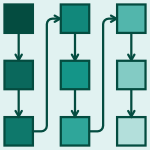 PLEASE-2011-Li #evolution #product line
PLEASE-2011-Li #evolution #product line- Identifying best practice by analyzing the evolution of the FISCAN MTMSIS software product line (DL), pp. 40–44.
 RE-2011-BoutkovaH #automation #specification
RE-2011-BoutkovaH #automation #specification- Semi-automatic identification of features in requirement specifications (EB, FH), pp. 313–318.
 RE-2011-MaxwellAS #requirements #taxonomy
RE-2011-MaxwellAS #requirements #taxonomy- A legal cross-references taxonomy for identifying conflicting software requirements (JCM, AIA, PPS), pp. 197–206.
 ASE-2011-ParizekL #traversal
ASE-2011-ParizekL #traversal- Identifying future field accesses in exhaustive state space traversal (PP, OL), pp. 93–102.
 ICSE-2011-FokaefsTSC #named #refactoring
ICSE-2011-FokaefsTSC #named #refactoring- JDeodorant: identification and application of extract class refactorings (MF, NT, ES, AC), pp. 1037–1039.
 ICSE-2011-HolmesN #behaviour
ICSE-2011-HolmesN #behaviour- Identifying program, test, and environmental changes that affect behaviour (RH, DN), pp. 371–380.
 ICSE-2011-HolmesN11a #behaviour
ICSE-2011-HolmesN11a #behaviour- Identifying opaque behavioural changes (RH, DN), pp. 995–997.
 ICSE-2011-LimDF #network #requirements #social #using
ICSE-2011-LimDF #network #requirements #social #using- StakeSource2.0: using social networks of stakeholders to identify and prioritise requirements (SLL, DD, AF), pp. 1022–1024.
 ICSE-2011-OlivetoGBPL #smell
ICSE-2011-OlivetoGBPL #smell- Identifying method friendships to remove the feature envy bad smell (RO, MG, GB, DP, ADL), pp. 820–823.
 ICSE-2011-Xiao #developer #generative #problem #testing #towards
ICSE-2011-Xiao #developer #generative #problem #testing #towards- Problem identification for structural test generation: first step towards cooperative developer testing (XX), pp. 1179–1181.
 ICSE-2011-XiaoXTH #generative #precise #problem #testing
ICSE-2011-XiaoXTH #generative #precise #problem #testing- Precise identification of problems for structural test generation (XX, TX, NT, JdH), pp. 611–620.
 ICSE-2011-XiaoXTH11a #named #precise #problem
ICSE-2011-XiaoXTH11a #named #precise #problem- Covana: precise identification of problems in pex (XX, TX, NT, JdH), pp. 1004–1006.
 SAC-2011-KimDB #dependence #diagrams #state machine #uml
SAC-2011-KimDB #dependence #diagrams #state machine #uml- Identifying properties of UML state machine diagrams that affect data and control dependence (HK, VD, DHB), pp. 1464–1469.
 SAC-2011-TariqBGMTAZ #correlation
SAC-2011-TariqBGMTAZ #correlation- Identifying the provenance of correlated anomalies (DT, BB, AG, SM, RT, AA, FZ), pp. 224–229.
 SAC-2011-WangZG #classification #network
SAC-2011-WangZG #classification #network- Traffic classification beyond application level: identifying content types from network traces (YW, ZZ, LG), pp. 540–541.
 CASE-2011-AranovskiyBB #metric
CASE-2011-AranovskiyBB #metric- The method of identification for the “motor-dual-section device” system through output signal measurements (SA, AAB, VB), pp. 346–350.
 DATE-2011-SreedharK #design #on the #process
DATE-2011-SreedharK #design #on the #process- On design of test structures for lithographic process corner identification (AS, SK), pp. 800–805.
 CAV-2011-AndreychenkoMSW #markov #modelling #parametricity
CAV-2011-AndreychenkoMSW #markov #modelling #parametricity- Parameter Identification for Markov Models of Biochemical Reactions (AA, LM, DS, VW), pp. 83–98.
 ECSA-2010-KiwelekarJ10a #architecture #communication #concept analysis
ECSA-2010-KiwelekarJ10a #architecture #communication #concept analysis- Identifying Architectural Connectors through Formal Concept Analysis of Communication Primitives (AWK, RKJ), pp. 515–518.
 HT-2010-GippB #approach #detection #independence
HT-2010-GippB #approach #detection #independence- Citation based plagiarism detection: a new approach to identify plagiarized work language independently (BG, JB), pp. 273–274.
 HT-2010-ZhangQHJWHHJ #approach #collaboration #hybrid #web
HT-2010-ZhangQHJWHHJ #approach #collaboration #hybrid #web- Collaborative identification and annotation of government deep web resources: a hybrid approach (PZ, YQ, CH, PTJ, JW, WSH, JEH, XJ), pp. 285–286.
 JCDL-2010-AngroshCS #library #random #towards #using
JCDL-2010-AngroshCS #library #random #towards #using- Context identification of sentences in related work sections using a conditional random field: towards intelligent digital libraries (MAA, SC, NS), pp. 293–302.
 VLDB-2010-MathioudakisBK
VLDB-2010-MathioudakisBK - Identifying, Attributing and Describing Spatial Bursts (MM, NB, NK), pp. 1091–1102.
 VLDB-2010-SettyBBW #named
VLDB-2010-SettyBBW #named- InZeit: Efficiently Identifying Insightful Time Points (VS, SJB, KB, GW), pp. 1605–1608.
 VLDB-2010-VlachouDNK #query
VLDB-2010-VlachouDNK #query- Identifying the Most Influential Data Objects with Reverse Top-k Queries (AV, CD, KN, YK), pp. 364–372.
 EDM-2010-MontalvoBPNG #machine learning #student #using
EDM-2010-MontalvoBPNG #machine learning #student #using- Identifying Students’ Inquiry Planning Using Machine Learning (OM, RSJdB, MASP, AN, JDG), pp. 141–150.
 EDM-2010-ShanabrookCWA #behaviour #student #using
EDM-2010-ShanabrookCWA #behaviour #student #using- Identifying High-Level Student Behavior Using Sequence-based Motif Discovery (DHS, DGC, BPW, IA), pp. 191–200.
 ITiCSE-2010-KiesmullerSBR #online #pattern matching #pattern recognition #problem #recognition #using
ITiCSE-2010-KiesmullerSBR #online #pattern matching #pattern recognition #problem #recognition #using- Online identification of learner problem solving strategies using pattern recognition methods (UK, SS, TB, KR), pp. 274–278.
 CSMR-2010-AsadiPAG #approach #concept #execution #heuristic
CSMR-2010-AsadiPAG #approach #concept #execution #heuristic- A Heuristic-Based Approach to Identify Concepts in Execution Traces (FA, MDP, GA, YGG), pp. 31–40.
 ICPC-2010-BernardiL #object-oriented
ICPC-2010-BernardiL #object-oriented- The ConAn Tool to Identify Crosscutting Concerns in Object Oriented Systems (MLB, GADL), pp. 48–49.
 ICPC-2010-SuttonHM #c++ #library
ICPC-2010-SuttonHM #c++ #library- Identification of Idiom Usage in C++ Generic Libraries (AS, RH, JIM), pp. 160–169.
 ICSM-2010-BavotaOLAG #game studies #refactoring
ICSM-2010-BavotaOLAG #game studies #refactoring- Playing with refactoring: Identifying extract class opportunities through game theory (GB, RO, ADL, GA, YGG), pp. 1–5.
 ICSM-2010-ChoudharyVO #automation #named #web
ICSM-2010-ChoudharyVO #automation #named #web- WEBDIFF: Automated identification of cross-browser issues in web applications (SRC, HV, AO), pp. 1–10.
 ICSM-2010-DraganCM #automation
ICSM-2010-DraganCM #automation- Automatic identification of class stereotypes (ND, MLC, JIM), pp. 1–10.
 ICSM-2010-JalbertB #clone detection #concurrent #debugging #detection #using
ICSM-2010-JalbertB #clone detection #concurrent #debugging #detection #using- Using clone detection to identify bugs in concurrent software (KJ, JSB), pp. 1–5.
 MSR-2010-GegickRX #case study #debugging #industrial #mining #security
MSR-2010-GegickRX #case study #debugging #industrial #mining #security- Identifying security bug reports via text mining: An industrial case study (MG, PR, TX), pp. 11–20.
 MSR-2010-PentaGA #approach #using
MSR-2010-PentaGA #approach #using- Identifying licensing of jar archives using a code-search approach (MDP, DMG, GA), pp. 151–160.
 WCRE-2010-AthanasopoulosK #legacy
WCRE-2010-AthanasopoulosK #legacy- Identification of REST-like Resources from Legacy Service Descriptions (MA, KK), pp. 215–219.
 CIAA-2010-TirnaucaT #automaton #query
CIAA-2010-TirnaucaT #automaton #query- Types of Trusted Information That Make DFA Identification with Correction Queries Feasible (CT, CIT), pp. 272–281.
 CHI-2010-Vaananen-Vainio-MattilaWOS #experience #social #user interface #web #web service
CHI-2010-Vaananen-Vainio-MattilaWOS #experience #social #user interface #web #web service- Identifying drivers and hindrances of social user experience in web services (KVVM, MW, JO, KS), pp. 2499–2502.
 CAiSE-2010-WeidlichDM #framework #modelling #process
CAiSE-2010-WeidlichDM #framework #modelling #process- The ICoP Framework: Identification of Correspondences between Process Models (MW, RMD, JM), pp. 483–498.
 ICEIS-AIDSS-2010-SalasPRR #using
ICEIS-AIDSS-2010-SalasPRR #using- Identification of Areas with Similar Wind Patterns using SOFM (JCPS, AAP, JJGdlR, JGR), pp. 40–45.
 ICEIS-AIDSS-2010-SilvaCRN #assessment #fault #network
ICEIS-AIDSS-2010-SilvaCRN #assessment #fault #network- Assessment of the Change in the Number of Neurons in Hidden Layers of Neural Networks for Fault Identification in Electrical Systems (DTdS, PHGC, JAPR, LBN), pp. 309–313.
 ICEIS-ISAS-2010-ClariziaGN #query #web
ICEIS-ISAS-2010-ClariziaGN #query #web- A New Technique for Identification of Relevant Web Pages in Informational Queries Results (FC, LG, PN), pp. 70–79.
 ICEIS-ISAS-2010-FerreiraAB #communication #modelling
ICEIS-ISAS-2010-FerreiraAB #communication #modelling- Identifying Ruptures in Business-IT Communication through Business Models (JJF, RMdA, FAB), pp. 44–51.
 ICEIS-J-2010-FerreiraAB10a #communication #modelling
ICEIS-J-2010-FerreiraAB10a #communication #modelling- Identifying Ruptures in Business-IT Communication through Business Models (JJF, RMdA, FAB), pp. 311–325.
 CIKM-2010-KamathC #realtime #web
CIKM-2010-KamathC #realtime #web- Identifying hotspots on the real-time web (KYK, JC), pp. 1837–1840.
 CIKM-2010-MelliE #concept #ontology
CIKM-2010-MelliE #concept #ontology- Supervised identification and linking of concept mentions to a domain-specific ontology (GM, ME), pp. 1717–1720.
 CIKM-2010-MiaoLTZ #approach #category theory #community #modelling #topic
CIKM-2010-MiaoLTZ #approach #category theory #community #modelling #topic- Identifying new categories in community question answering archives: a topic modeling approach (YM, CL, JT, LZ), pp. 1673–1676.
 CIKM-2010-PalK #bias #community
CIKM-2010-PalK #bias #community- Expert identification in community question answering: exploring question selection bias (AP, JAK), pp. 1505–1508.
 CIKM-2010-RaiberK #documentation #on the
CIKM-2010-RaiberK #documentation #on the- On identifying representative relevant documents (FR, OK), pp. 99–108.
 ECIR-2010-GottronL #comparison
ECIR-2010-GottronL #comparison- A Comparison of Language Identification Approaches on Short, Query-Style Texts (TG, NL), pp. 611–614.
 ECIR-2010-KarlgrenEST
ECIR-2010-KarlgrenEST - Between Bags and Trees — Constructional Patterns in Text Used for Attitude Identification (JK, GE, MS, OT), pp. 38–49.
 ECIR-2010-Schenkel #web
ECIR-2010-Schenkel #web- Temporal Shingling for Version Identification in Web Archives (RS), pp. 508–519.
 ICML-2010-SyedR #dataset
ICML-2010-SyedR #dataset- Unsupervised Risk Stratification in Clinical Datasets: Identifying Patients at Risk of Rare Outcomes (ZS, IR), pp. 1023–1030.
 ICPR-2010-BasakKTR #approach #multi
ICPR-2010-BasakKTR #approach #multi- A Gradient Descent Approach for Multi-modal Biometric Identification (JB, KK, VT, NKR), pp. 1322–1325.
 ICPR-2010-BazzaniCPFM #multi
ICPR-2010-BazzaniCPFM #multi- Multiple-Shot Person Re-identification by HPE Signature (LB, MC, AP, MF, VM), pp. 1413–1416.
 ICPR-2010-ChaabouniBKAA #multi
ICPR-2010-ChaabouniBKAA #multi- Fractal and Multi-fractal for Arabic Offline Writer Identification (AC, HB, MK, AMA, HEA), pp. 3793–3796.
 ICPR-2010-ChandaFPW #independence
ICPR-2010-ChandaFPW #independence- Text Independent Writer Identification for Bengali Script (SC, KF, UP, TW), pp. 2005–2008.
 ICPR-2010-ChandaPFK #perspective
ICPR-2010-ChandaPFK #perspective- Script Identification — A Han and Roman Script Perspective (SC, UP, KF, FK), pp. 2708–2711.
 ICPR-2010-ChuHC #classification #gender #image #set
ICPR-2010-ChuHC #classification #gender #image #set- Identifying Gender from Unaligned Facial Images by Set Classification (WSC, CRH, CSC), pp. 2636–2639.
 ICPR-2010-CoutinhoFF #parsing #using
ICPR-2010-CoutinhoFF #parsing #using- One-Lead ECG-based Personal Identification Using Ziv-Merhav Cross Parsing (DPC, ALNF, MATF), pp. 3858–3861.
 ICPR-2010-DuYXGT
ICPR-2010-DuYXGT - Wavelet Domain Local Binary Pattern Features For Writer Identification (LD, XY, HX, ZG, YYT), pp. 3691–3694.
 ICPR-2010-GhiasiS #independence #performance
ICPR-2010-GhiasiS #independence #performance- An Efficient Method for Offline Text Independent Writer Identification (GG, RS), pp. 1245–1248.
 ICPR-2010-GilliamWC
ICPR-2010-GilliamWC - Scribe Identification in Medieval English Manuscripts (TG, RCW, JAC), pp. 1880–1883.
 ICPR-2010-HabedAB #image #parallel
ICPR-2010-HabedAB #image #parallel- Reconstruction-Free Parallel Planes Identification from Uncalibrated Images (AH, AA, BB), pp. 1828–1831.
 ICPR-2010-JungO #image #web
ICPR-2010-JungO #image #web- Local Binary Pattern-Based Features for Text Identification of Web Images (IJ, ISO), pp. 4320–4323.
 ICPR-2010-KeustermansMVS #automation #modelling #using
ICPR-2010-KeustermansMVS #automation #modelling #using- Automated Cephalometric Landmark Identification Using Shape and Local Appearance Models (JK, WM, DV, PS), pp. 2464–2467.
 ICPR-2010-LariosSSMLD #kernel #random
ICPR-2010-LariosSSMLD #kernel #random- Haar Random Forest Features and SVM Spatial Matching Kernel for Stonefly Species Identification (NL, BS, LGS, GMM, JL, TGD), pp. 2624–2627.
 ICPR-2010-LutfYL #using
ICPR-2010-LutfYL #using- Offline Arabic Handwriting Identification Using Language Diacritics (ML, XY, HL), pp. 1912–1915.
 ICPR-2010-MarinaiMS #clustering #recognition
ICPR-2010-MarinaiMS #clustering #recognition- Bag of Characters and SOM Clustering for Script Recognition and Writer Identification (SM, BM, GS), pp. 2182–2185.
 ICPR-2010-MarsicoNR #named #segmentation
ICPR-2010-MarsicoNR #named #segmentation- IS_IS: Iris Segmentation for Identification Systems (MDM, MN, DR), pp. 2857–2860.
 ICPR-2010-NaseemTB10a #representation
ICPR-2010-NaseemTB10a #representation- Sparse Representation for Speaker Identification (IN, RT, MB), pp. 4460–4463.
 ICPR-2010-PatrauceanGC #invariant #using
ICPR-2010-PatrauceanGC #invariant #using- Bubble Tag Identification Using an Invariant — Under — Perspective Signature (VP, PG, JC), pp. 408–411.
 ICPR-2010-PiroonratanaWUALC #morphism #nondeterminism #ranking #symmetry #using
ICPR-2010-PiroonratanaWUALC #morphism #nondeterminism #ranking #symmetry #using- Identification of Ancestry Informative Markers from Chromosome-Wide Single Nucleotide Polymorphisms Using Symmetrical Uncertainty Ranking (TP, WW, TU, AA, CL, NC), pp. 2448–2451.
 ICPR-2010-PutpuekCLS #approach #detection
ICPR-2010-PutpuekCLS #approach #detection- Unified Approach to Detection and Identification of Commercial Films by Temporal Occurrence Pattern (NP, NC, CL, SS), pp. 3288–3291.
 ICPR-2010-SaeidiMKTCJF #independence #speech
ICPR-2010-SaeidiMKTCJF #independence #speech- Signal-to-Signal Ratio Independent Speaker Identification for Co-channel Speech Signals (RS, PM, TK, ZHT, MGC, SHJ, PF), pp. 4565–4568.
 ICPR-2010-SuXCWM #concept
ICPR-2010-SuXCWM #concept- EEG-based Personal Identification: from Proof-of-Concept to A Practical System (FS, LX, AC, YW, JM), pp. 3728–3731.
 ICPR-2010-WangLS #documentation #using
ICPR-2010-WangLS #documentation #using- Noise Tolerant Script Identification of Printed Oriental and English Documents Using a Downgraded Pixel Density Feature (NW, LL, CYS), pp. 2037–2040.
 ICPR-2010-WuS #approach #testing
ICPR-2010-WuS #approach #testing- A Hypothesis Testing Approach for Fluorescent Blob Identification (LSW, SLS), pp. 2476–2479.
 ICPR-2010-XuPJ #3d #component
ICPR-2010-XuPJ #3d #component- Component Identification in the 3D Model of a Building (MX, MP, MJ), pp. 3061–3064.
 ICPR-2010-ZhangST
ICPR-2010-ZhangST - Hierarchical Fusion of Face and Iris for Personal Identification (XZ, ZS, TT), pp. 217–220.
 ICPR-2010-ZhouK #image #locality #using
ICPR-2010-ZhouK #image #locality #using- Personal Identification from Iris Images Using Localized Radon Transform (YZ, AK), pp. 2840–2843.
 KDIR-2010-HaCohen-KernerSS #automation #documentation
KDIR-2010-HaCohen-KernerSS #automation #documentation- Automatic Identification of Biblical Quotations in Hebrew-Aramaic Documents (YHK, NS, YS), pp. 320–325.
 KDIR-2010-KleizaKT #approach #documentation #query #semantics #similarity #visualisation #word
KDIR-2010-KleizaKT #approach #documentation #query #semantics #similarity #visualisation #word- Semantic Identification and Visualization of Significant Words within Documents — Approach to Visualize Relevant Words within Documents to a Search Query by Word Similarity Computation (KK, PK, KDT), pp. 481–486.
 KDIR-2010-KoopmansW #community
KDIR-2010-KoopmansW #community- Broader Perception for Local Community Identification (FTW(K, TPvdW), pp. 400–403.
 KDIR-2010-Molokov #combinator
KDIR-2010-Molokov #combinator- Application of Combinatorial Methods to Protein Identification in Peptide Mass Fingerprinting (LM), pp. 307–313.
 KEOD-2010-FukumotoS #classification
KEOD-2010-FukumotoS #classification- Identifying Domain-specific Senses and Its Application to Text Classification (FF, YS), pp. 263–268.
 KEOD-2010-NG #named
KEOD-2010-NG #named- CIS: Change Identification System (NP, VG), pp. 347–350.
 RecSys-2010-Said #hybrid #recommendation
RecSys-2010-Said #hybrid #recommendation- Identifying and utilizing contextual data in hybrid recommender systems (AS), pp. 365–368.
 RecSys-2010-WuGC #multi
RecSys-2010-WuGC #multi- Merging multiple criteria to identify suspicious reviews (GW, DG, PC), pp. 241–244.
 SIGIR-2010-LeeJSL #mining
SIGIR-2010-LeeJSL #mining- Mining the blogosphere for top news stories identification (YL, HYJ, WS, JHL), pp. 395–402.
 SIGIR-2010-LiLX #music #robust
SIGIR-2010-LiLX #music #robust- Robust audio identification for MP3 popular music (WL, YL, XX), pp. 627–634.
 SIGIR-2010-LiLX10a #music #robust
SIGIR-2010-LiLX10a #music #robust- Robust music identification based on low-order zernike moment in the compressed domain (WL, YL, XX), pp. 739–740.
 SPLC-2010-YoshimuraAF #constraints #feature model #mining
SPLC-2010-YoshimuraAF #constraints #feature model #mining- A Method to Identify Feature Constraints Based on Feature Selections Mining (KY, YA, TF), pp. 425–429.
 OOPSLA-2010-UpadhyayaMP #automation #memory management #source code
OOPSLA-2010-UpadhyayaMP #automation #memory management #source code- Automatic atomic region identification in shared memory SPMD programs (GU, SPM, VSP), pp. 652–670.
 RE-2010-GacituaSG #abstraction #effectiveness #on the #requirements
RE-2010-GacituaSG #abstraction #effectiveness #on the #requirements- On the Effectiveness of Abstraction Identification in Requirements Engineering (RG, PS, VG), pp. 5–14.
 RE-2010-YoungA #policy #requirements
RE-2010-YoungA #policy #requirements- A Method for Identifying Software Requirements Based on Policy Commitments (JDY, AIA), pp. 47–56.
 ASE-2010-GermanMI #automation #source code
ASE-2010-GermanMI #automation #source code- A sentence-matching method for automatic license identification of source code files (DMG, YM, KI), pp. 437–446.
 ASE-2010-KessentiniVS #risk management
ASE-2010-KessentiniVS #risk management- Deviance from perfection is a better criterion than closeness to evil when identifying risky code (MK, SV, HAS), pp. 113–122.
 ICSE-2010-AdamsJH #using
ICSE-2010-AdamsJH #using- Identifying crosscutting concerns using historical code changes (BA, ZMJ, AEH), pp. 305–314.
 ICSE-2010-LohK #difference #named
ICSE-2010-LohK #difference #named- LSdiff: a program differencing tool to identify systematic structural differences (AL, MK), pp. 263–266.
 ICSE-2010-WuGAK #approach #evolution #framework #hybrid #named
ICSE-2010-WuGAK #approach #evolution #framework #hybrid #named- AURA: a hybrid approach to identify framework evolution (WW, YGG, GA, MK), pp. 325–334.
 SAC-2010-AhmedLSH #performance
SAC-2010-AhmedLSH #performance- Fast file-type identification (IA, KsL, HS, MH), pp. 1601–1602.
 SAC-2010-AntonelliRL #domain model
SAC-2010-AntonelliRL #domain model- Early identification of crosscutting concerns in the domain model guided by states (LA, GR, JCSdPL), pp. 275–280.
 SAC-2010-BernalFMD #approach #process #rule-based
SAC-2010-BernalFMD #approach #process #rule-based- Dynamic context-aware business process: a rule-based approach supported by pattern identification (JFMB, PF, MM, JD), pp. 470–474.
 SAC-2010-LevyLMS #bias #multi
SAC-2010-LevyLMS #bias #multi- Identification and control of intrinsic bias in a multiscale computational model of drug addiction (YZL, DL, JSM, HTS), pp. 2389–2393.
 SAC-2010-MillerRPW #using
SAC-2010-MillerRPW #using- Personal identification using periocular skin texture (PEM, AWR, SJP, DLW), pp. 1496–1500.
 SAC-2010-PenimA #modelling
SAC-2010-PenimA #modelling- Identifying and modeling aspectual scenarios with theme and MATA (ASP, JA), pp. 287–291.
 GPCE-2010-RysselPK #automation #modelling
GPCE-2010-RysselPK #automation #modelling- Automatic variation-point identification in function-block-based models (UR, JP, KK), pp. 23–32.
 SLE-2010-HerrmannsdoerferRK #analysis #metamodelling
SLE-2010-HerrmannsdoerferRK #analysis #metamodelling- Metamodel Usage Analysis for Identifying Metamodel Improvements (MH, DR, MK), pp. 62–81.
 SLE-2010-HostO #canonical #implementation #java #semantics #using
SLE-2010-HostO #canonical #implementation #java #semantics #using- Canonical Method Names for Java — Using Implementation Semantics to Identify Synonymous Verbs (EWH, BMØ), pp. 226–245.
 CASE-2010-BengtssonTLAYMF #automation #design #sequence #visualisation
CASE-2010-BengtssonTLAYMF #automation #design #sequence #visualisation- Relations identification and visualization for sequence planning and automation design (KB, CT, BL, KÅ, CY, SM, PF), pp. 841–848.
 DAC-2010-WangCW #performance
DAC-2010-WangCW #performance- Fast identification of operating current for toggle MRAM by spiral search (SHW, CYC, CWW), pp. 923–928.
 DATE-2010-ChenO #adaptation #effectiveness
DATE-2010-ChenO #adaptation #effectiveness- Cost-effective IR-drop failure identification and yield recovery through a failure-adaptive test scheme (MC, AO), pp. 63–68.
 PDP-2010-LiuYCWZ #towards
PDP-2010-LiuYCWZ #towards- Towards Global State Identification of Nodes in DHT Based Systems (DL, GY, FC, HW, PZ), pp. 271–275.
 FASE-2010-CortellessaMRT #effectiveness #performance #process
FASE-2010-CortellessaMRT #effectiveness #performance #process- A Process to Effectively Identify “Guilty” Performance Antipatterns (VC, AM, RHR, CT), pp. 368–382.
 ICST-2010-KimSGSHN #analysis #automation #debugging
ICST-2010-KimSGSHN #analysis #automation #debugging- Automated Bug Neighborhood Analysis for Identifying Incomplete Bug Fixes (MK, SS, CG, HS, MJH, MGN), pp. 383–392.
 ISSTA-2010-CarbinR #automation
ISSTA-2010-CarbinR #automation- Automatically identifying critical input regions and code in applications (MC, MCR), pp. 37–48.
 CBSE-2009-BirkmeierO #classification #comparison #component #on the #state of the art
CBSE-2009-BirkmeierO #classification #comparison #component #on the #state of the art- On Component Identification Approaches — Classification, State of the Art, and Comparison (DB, SO), pp. 1–18.
 DRR-2009-BhardwajCG #image #word
DRR-2009-BhardwajCG #image #word- Script identification of handwritten word images (AB, HC, VG), pp. 1–10.
 DRR-2009-SrihariRMB
DRR-2009-SrihariRMB - Identification of forgeries in handwritten petitions for ballot propositions (SNS, VR, MM, GRB), pp. 1–10.
 DRR-2009-TanVK #clustering #online #using
DRR-2009-TanVK #clustering #online #using- Online writer identification using alphabetic information clustering (GXT, CVG, ACK), pp. 1–10.
 ECDL-2009-MurthyFCHTRF #image #retrieval
ECDL-2009-MurthyFCHTRF #image #retrieval- Superimposed Image Description and Retrieval for Fish Species Identification (UM, EAF, YC, EH, RdST, EJR, TRCF), pp. 285–296.
 ICDAR-2009-ArlandisPU
ICDAR-2009-ArlandisPU - Identification of Very Similar Filled-in Forms with a Reject Option (JA, JCPC, EU), pp. 246–250.
 ICDAR-2009-BenjelilKMA
ICDAR-2009-BenjelilKMA - Arabic and Latin Script Identification in Printed and Handwritten Types Based on Steerable Pyramid Features (MB, SK, RM, AMA), pp. 591–595.
 ICDAR-2009-ChandaPFP #approach
ICDAR-2009-ChandaPFP #approach- Two-stage Approach for Word-wise Script Identification (SC, SP, KF, UP), pp. 926–930.
 ICDAR-2009-ChaudhuriB
ICDAR-2009-ChaudhuriB - Handwritten Text Line Identification in Indian Scripts (BBC, SB), pp. 636–640.
 ICDAR-2009-FornesLSB #music #on the #using
ICDAR-2009-FornesLSB #music #on the #using- On the Use of Textural Features for Writer Identification in Old Handwritten Music Scores (AF, JL, GS, HB), pp. 996–1000.
 ICDAR-2009-Garain #documentation #image
ICDAR-2009-Garain #documentation #image- Identification of Mathematical Expressions in Document Images (UG), pp. 1340–1344.
 ICDAR-2009-GarainP #multi #using
ICDAR-2009-GarainP #multi #using- Off-Line Multi-Script Writer Identification Using AR Coefficients (UG, TP), pp. 991–995.
 ICDAR-2009-LiST #independence #online
ICDAR-2009-LiST #independence #online- Hierarchical Shape Primitive Features for Online Text-independent Writer Identification (BL, ZS, TT), pp. 986–990.
 ICDAR-2009-LiT #independence #online #sequence
ICDAR-2009-LiT #independence #online #sequence- Online Text-independent Writer Identification Based on Temporal Sequence and Shape Codes (BL, TT), pp. 931–935.
 ICDAR-2009-PavelecOJNB #modelling #using
ICDAR-2009-PavelecOJNB #modelling #using- Author Identification Using Compression Models (DP, LSO, EJRJ, FDNN, LVB), pp. 936–940.
 ICDAR-2009-PengSGSB #documentation #markov #random
ICDAR-2009-PengSGSB #documentation #markov #random- Markov Random Field Based Text Identification from Annotated Machine Printed Documents (XP, SS, VG, RS, KB), pp. 431–435.
 ICDAR-2009-ShahabiR #documentation
ICDAR-2009-ShahabiR #documentation- A New Method for Writer Identification of Handwritten Farsi Documents (FS, MR), pp. 426–430.
 ICDAR-2009-TanVK #online
ICDAR-2009-TanVK #online- Impact of Alphabet Knowledge on Online Writer Identification (GXT, CVG, ACK), pp. 56–60.
 ICDAR-2009-TanVK09a #information retrieval #online
ICDAR-2009-TanVK09a #information retrieval #online- Information Retrieval Model for Online Handwritten Script Identification (GXT, CVG, ACK), pp. 336–340.
 ICDAR-2009-WangJW #performance
ICDAR-2009-WangJW #performance- High Performance Chinese/English Mixed OCR with Character Level Language Identification (KW, JJ, QW), pp. 406–410.
 JCDL-2009-BethardGMS #automation #topic
JCDL-2009-BethardGMS #automation #topic- Topic model methods for automatically identifying out-of-scope resources (SB, SG, JHM, TS), pp. 19–28.
 PODS-2009-KirschMPPUV #approach #performance #statistics
PODS-2009-KirschMPPUV #approach #performance #statistics- An efficient rigorous approach for identifying statistically significant frequent itemsets (AK, MM, AP, GP, EU, FV), pp. 117–126.
 EDM-2009-NugentAD #clustering #student
EDM-2009-NugentAD #clustering #student- Subspace Clustering of Skill Mastery: Identifying Skills that Separate Students (RN, EA, ND), pp. 101–110.
 ITiCSE-2009-KiesmullerB #algorithm #automation #problem
ITiCSE-2009-KiesmullerB #algorithm #automation #problem- Automatically identifying learners’ problem solving strategies in-process solving algorithmic problems (UK, TB), p. 354.
 SIGITE-2009-Ekstrom
SIGITE-2009-Ekstrom - Collecting IT scholarship: the need for identification and access (JJE), p. 208.
 CSMR-2009-GarciaPEM #architecture #smell
CSMR-2009-GarciaPEM #architecture #smell- Identifying Architectural Bad Smells (JG, DP, GE, NM), pp. 255–258.
 CSMR-2009-LuciaDGR #behaviour #parsing #visual notation
CSMR-2009-LuciaDGR #behaviour #parsing #visual notation- Behavioral Pattern Identification through Visual Language Parsing and Code Instrumentation (ADL, VD, CG, MR), pp. 99–108.
 CSMR-2009-Trifu #approach
CSMR-2009-Trifu #approach- Improving the Dataflow-Based Concern Identification Approach (MT), pp. 109–118.
 CSMR-2009-TsantalisC #refactoring
CSMR-2009-TsantalisC #refactoring- Identification of Extract Method Refactoring Opportunities (NT, AC), pp. 119–128.
 ICPC-2009-HammadCM #automation #traceability
ICPC-2009-HammadCM #automation #traceability- Automatically identifying changes that impact code-to-design traceability (MH, MLC, JIM), pp. 20–29.
 ICSM-2009-Li #analysis #dependence #using
ICSM-2009-Li #analysis #dependence #using- Identifying high-level dependence structures using slice-based dependence analysis (ZL), pp. 457–460.
 SCAM-2009-BinkleyH #clustering #dependence #scalability
SCAM-2009-BinkleyH #clustering #dependence #scalability- Identifying “Linchpin Vertices” That Cause Large Dependence Clusters (DB, MH), pp. 89–98.
 WCRE-1999-BernardiL99a #analysis #named #object-oriented
WCRE-1999-BernardiL99a #analysis #named #object-oriented- ConAn: A Tool for the Identification of Crosscutting Concerns in Object Oriented Systems Based on Type Hierarchy Analysis (MLB, GADL), pp. 319–320.
 WCRE-1999-LavalDDB99a #dependence #matrix
WCRE-1999-LavalDDB99a #dependence #matrix- Identifying Cycle Causes with Enriched Dependency Structural Matrix (JL, SD, SD, AB), pp. 113–122.
 WCRE-1999-TangHZ99a
WCRE-1999-TangHZ99a - Techniques for Identifying the Country Origin of Mailing List Participants (RT, AEH, YZ), pp. 36–40.
 ICFP-2009-GenevesLQ #evolution #query #xml
ICFP-2009-GenevesLQ #evolution #query #xml- Identifying query incompatibilities with evolving XML schemas (PG, NL, VQ), pp. 221–230.
 DiGRA-2009-PaulP
DiGRA-2009-PaulP - The Rise and Fall of CTS: Kenneth Burke Identifying with the World of Warcraft (CAP, JSP).
 HCI-AUII-2009-Heimgartner #interactive
HCI-AUII-2009-Heimgartner #interactive- Identification of the User by Analyzing Human Computer Interaction (RH), pp. 275–283.
 HCI-NIMT-2009-BravoHFVCNFCPV #interactive #towards
HCI-NIMT-2009-BravoHFVCNFCPV #interactive #towards- From Implicit to Touching Interaction by Identification Technologies: Towards Tagging Context (JB, RH, CF, VV, GC, SWN, JF, GC, RP, MV), pp. 417–425.
 HIMI-DIE-2009-OkaOMS #case study #people
HIMI-DIE-2009-OkaOMS #case study #people- A Study on Color Conversion for Color Deficient People to Identify Color (MO, NO, HM, AS), pp. 594–600.
 HIMI-II-2009-MacedoI #standard
HIMI-II-2009-MacedoI #standard- Patient Standardization Identification as a Healthcare Issue (MM, PTI), pp. 566–575.
 HIMI-II-2009-SawaragiIHN #approach #using
HIMI-II-2009-SawaragiIHN #approach #using- Identifying Latent Similarities among Near-Miss Incident Records Using a Text-Mining Method and a Scenario-Based Approach (TS, KI, YH, HN), pp. 594–603.
 IDGD-2009-AlostathAA #design #difference #interface
IDGD-2009-AlostathAA #design #difference #interface- Identifying and Measuring Cultural Differences in Cross-Cultural User-Interface Design (JMA, SA, ABA), pp. 3–12.
 ICEIS-SAIC-2009-DronavajjalaNS #analysis #enterprise #process #project management #relational
ICEIS-SAIC-2009-DronavajjalaNS #analysis #enterprise #process #project management #relational- Identification of Critical Success Factors to ERP Project Management — An Application of Grey Relational Analysis and Analytic Hierarchy Process (CSD, SN, RS), pp. 187–192.
 CIKM-2009-DewriRRW #named
CIKM-2009-DewriRRW #named- POkA: identifying pareto-optimal k-anonymous nodes in a domain hierarchy lattice (RD, IR, IR, DW), pp. 1037–1046.
 CIKM-2009-JainP #web
CIKM-2009-JainP #web- Identifying comparable entities on the web (AJ, PP), pp. 1661–1664.
 CIKM-2009-LinEF #web
CIKM-2009-LinEF #web- Identifying interesting assertions from the web (TL, OE, JF), pp. 1787–1790.
 CIKM-2009-ZhuM #analysis #multi
CIKM-2009-ZhuM #analysis #multi- Multidimensional political spectrum identification and analysis (LZ, PM), pp. 2045–2048.
 ICML-2009-MaSSV #learning #online #scalability
ICML-2009-MaSSV #learning #online #scalability- Identifying suspicious URLs: an application of large-scale online learning (JM, LKS, SS, GMV), pp. 681–688.
 KDD-2009-TantipathananandhB #algorithm #approximate #community
KDD-2009-TantipathananandhB #algorithm #approximate #community- Constant-factor approximation algorithms for identifying dynamic communities (CT, TYBW), pp. 827–836.
 KEOD-2009-OliveiraTO #image
KEOD-2009-OliveiraTO #image- Identifying the Cardiac Region in Images of Electrical Impedance Tomography through Wavelet Transform (JPdO, HT, NRSO), pp. 380–383.
 SIGIR-2009-ShaparenkoJ #documentation #modelling
SIGIR-2009-ShaparenkoJ #documentation #modelling- Identifying the original contribution of a document via language modeling (BS, TJ), pp. 696–697.
 SIGIR-2009-YangGH #information retrieval #problem
SIGIR-2009-YangGH #information retrieval #problem- Protein identification as an information retrieval problem (YY, SG, AH), pp. 752–753.
 REFSQ-2009-TunYLN #approach #interactive #problem
REFSQ-2009-TunYLN #approach #interactive #problem- Early Identification of Problem Interactions: A Tool-Supported Approach (TTT, YY, RCL, BN), pp. 74–88.
 SAC-2009-BreauxLOA #requirements #using
SAC-2009-BreauxLOA #requirements #using- Identifying vulnerabilities and critical requirements using criminal court proceedings (TDB, JDL, PNO, AIA), pp. 355–359.
 SAC-2009-FloraTB #forensics #image #using
SAC-2009-FloraTB #forensics #image #using- Forensic bite mark identification using image processing methods (GF, MT, HB), pp. 903–907.
 SAC-2009-LiuMZ #approach #dependence #evolution
SAC-2009-LiuMZ #approach #dependence #evolution- An approach to identifying conversation dependency in service oriented system during dynamic evolution (ML, DM, YZ), pp. 1072–1073.
 SAC-2009-MacielPRG #web
SAC-2009-MacielPRG #web- Identifying discourse mistakes in web debates: moderation in the DCC (CM, VCP, LR, ACBG), pp. 690–691.
 SAC-2009-RekapalliHZ #named #scalability
SAC-2009-RekapalliHZ #named #scalability- HSP-HMMER: a tool for protein domain identification on a large scale (BR, CH, IBZ), pp. 766–770.
 SAC-2009-SinghB #multi #web
SAC-2009-SinghB #multi #web- Information-theoretic identification of content pages for analyzing user information needs and actions on the multimedia web (RS, BDB), pp. 1806–1810.
 CASE-2009-SuCFTJKL #approach #information management #novel #ontology
CASE-2009-SuCFTJKL #approach #information management #novel #ontology- A novel ontology-based knowledge engineering approach for yield symptom identification in semiconductor manufacturing (FHS, SCC, CMF, YJT, JJ, CPK, CYL), pp. 433–438.
 DAC-2009-YuanX #on the #pseudo #testing
DAC-2009-YuanX #on the #pseudo #testing- On systematic illegal state identification for pseudo-functional testing (FY, QX), pp. 702–707.
 DATE-2009-KorhonenK
DATE-2009-KorhonenK - A loopback-based INL test method for D/A and A/D converters employing a stimulus identification technique (EK, JK), pp. 1650–1655.
 DATE-2009-MonyBMB #scalability
DATE-2009-MonyBMB #scalability- Speculative reduction-based scalable redundancy identification (HM, JB, AM, RKB), pp. 1674–1679.
 ISMM-2009-MarronKH
ISMM-2009-MarronKH - Identification of logically related heap regions (MM, DK, MVH), pp. 89–98.
 ICST-2009-HalfondCO #testing
ICST-2009-HalfondCO #testing- Penetration Testing with Improved Input Vector Identification (WGJH, SRC, AO), pp. 346–355.
 ICST-2009-HeckmanW #process #static analysis
ICST-2009-HeckmanW #process #static analysis- A Model Building Process for Identifying Actionable Static Analysis Alerts (SSH, LAW), pp. 161–170.
 ISSTA-2009-ChengLZWY #debugging #graph #mining #using
ISSTA-2009-ChengLZWY #debugging #graph #mining #using- Identifying bug signatures using discriminative graph mining (HC, DL, YZ, XW, XY), pp. 141–152.
 ISSTA-2009-ClauseO #automation #named #using
ISSTA-2009-ClauseO #automation #named #using- Penumbra: automatically identifying failure-relevant inputs using dynamic tainting (JAC, AO), pp. 249–260.
 ISSTA-2009-GorgZ #aspectj #difference #semantics #source code
ISSTA-2009-GorgZ #aspectj #difference #semantics #source code- Identifying semantic differences in AspectJ programs (MTG, JZ), pp. 25–36.
 ISSTA-2009-HalfondAO #analysis #interface #precise #testing #web
ISSTA-2009-HalfondAO #analysis #interface #precise #testing #web- Precise interface identification to improve testing and analysis of web applications (WGJH, SA, AO), pp. 285–296.
 CBSE-2008-AlbaniOB #component #towards
CBSE-2008-AlbaniOB #component #towards- Towards a Systematic Method for Identifying Business Components (AA, SO, DB), pp. 262–277.
 WICSA-2008-AllouiCV #architecture #component #towards
WICSA-2008-AllouiCV #architecture #component #towards- Towards Software Architecture Physiology: Identifying Vital Components (IA, SC, HV), pp. 293–296.
 DocEng-2008-AdamDS #web
DocEng-2008-AdamDS #web- Identifying and expanding titles in web texts (CA, ED, PSD), pp. 213–216.
 DocEng-2008-ValleCP #documentation #performance #using #visual notation
DocEng-2008-ValleCP #documentation #performance #using #visual notation- Fast identification of visual documents using local descriptors (EV, MC, SPF), pp. 173–176.
 DRR-2008-BrinkKS #automation #verification
DRR-2008-BrinkKS #automation #verification- Automatic removal of crossed-out handwritten text and the effect on writer verification and identification (AB, HvdK, LS), p. 68150.
 DRR-2008-ChanVT #online #prototype #using
DRR-2008-ChanVT #online #prototype #using- Online writer identification using character prototypes distributions (SKC, CVG, YHT), p. 68150.
 DRR-2008-DolegaAA
DRR-2008-DolegaAA - Stroke frequency descriptors for handwriting-based writer identification (BD, GA, SA), p. 68150.
 DRR-2008-KimLT #approach #hybrid #statistics
DRR-2008-KimLT #approach #hybrid #statistics- Hybrid approach combining contextual and statistical information for identifying MEDLINE citation terms (ICK, DXL, GRT), p. 68150.
 ECDL-2008-Ernst-GerlachC
ECDL-2008-Ernst-GerlachC - Identifying Quotations in Reference Works and Primary Materials (AEG, GRC), pp. 78–87.
 ECDL-2008-TaniguchiN
ECDL-2008-TaniguchiN - Identification of Bibliographic Information Written in Both Japanese and English (YT, HN), pp. 431–433.
 JCDL-2008-BogenJKFS
JCDL-2008-BogenJKFS - Application of kalman filters to identify unexpected change in blogs (PLBI, JJ, UK, RF, FMSI), pp. 305–312.
 JCDL-2008-OyamaST #web
JCDL-2008-OyamaST #web- Identification of time-varying objects on the web (SO, KS, KT), pp. 285–294.
 VLDB-2008-BaykanHW #web
VLDB-2008-BaykanHW #web- Web page language identification based on URLs (EB, MRH, IW), pp. 176–187.
 VLDB-2008-DDH #diagrams #reduction #robust
VLDB-2008-DDH #diagrams #reduction #robust- Identifying robust plans through plan diagram reduction (HD, PND, JRH), pp. 1124–1140.
 VLDB-2008-HayMJTW #network #social
VLDB-2008-HayMJTW #network #social- Resisting structural re-identification in anonymized social networks (MH, GM, DJ, DFT, PW), pp. 102–114.
 VLDB-2008-LiuC #keyword #reasoning #xml
VLDB-2008-LiuC #keyword #reasoning #xml- Reasoning and identifying relevant matches for XML keyword search (ZL, YC), pp. 921–932.
 SIGITE-2008-Edirisinghe #education #fault #game studies #programming #student #using
SIGITE-2008-Edirisinghe #education #fault #game studies #programming #student #using- Teaching students to identify common programming errors using a game (EMNSE), pp. 95–98.
 SIGITE-2008-Rubino #authentication
SIGITE-2008-Rubino #authentication- An open system for transparent firewall authentication and user traffic identification within corporate intranets (RDR), pp. 113–118.
 CSMR-2008-Trifu #data flow #object-oriented #using
CSMR-2008-Trifu #data flow #object-oriented #using- Using Dataflow Information for Concern Identification in Object-Oriented Software Systems (MT), pp. 193–202.
 CSMR-2008-TsantalisCC #named #smell
CSMR-2008-TsantalisCC #named #smell- JDeodorant: Identification and Removal of Type-Checking Bad Smells (NT, TC, AC), pp. 329–331.
 ICPC-2008-ComanS #automation #development
ICPC-2008-ComanS #automation #development- Automated Identification of Tasks in Development Sessions (IDC, AS), pp. 212–217.
 ICPC-2008-DongG #architecture #object-oriented
ICPC-2008-DongG #architecture #object-oriented- Identifying Architectural Change Patterns in Object-Oriented Systems (XD, MWG), pp. 33–42.
 ICPC-2008-SridharaHPV #case study #comparative #semantics #similarity #tool support #word
ICPC-2008-SridharaHPV #case study #comparative #semantics #similarity #tool support #word- Identifying Word Relations in Software: A Comparative Study of Semantic Similarity Tools (GS, EH, LLP, KVS), pp. 123–132.
 ICSM-2008-JeffreyGG #debugging #memory management #using
ICSM-2008-JeffreyGG #debugging #memory management #using- Identifying the root causes of memory bugs using corrupted memory location suppression (DJ, NG, RG), pp. 356–365.
 ICSM-2008-JiangHHF #automation #problem #testing
ICSM-2008-JiangHHF #automation #problem #testing- Automatic identification of load testing problems (ZMJ, AEH, GH, PF), pp. 307–316.
 ICSM-2008-SuttonM #automation #c++ #concept
ICSM-2008-SuttonM #automation #c++ #concept- Automatically identifying C++0x concepts in function templates (AS, JIM), pp. 57–66.
 MSR-2008-AlonsoDG #cvs #visualisation
MSR-2008-AlonsoDG #cvs #visualisation- Expertise identification and visualization from CVS (OA, PTD, MG), pp. 125–128.
 PASTE-2008-ZhangLGZ #approach #effectiveness #hybrid
PASTE-2008-ZhangLGZ #approach #effectiveness #hybrid- Effective identification of failure-inducing changes: a hybrid approach (SZ, YL, ZG, JZ), pp. 77–83.
 CHI-2008-MiaskiewiczSK #analysis #semantics
CHI-2008-MiaskiewiczSK #analysis #semantics- A latent semantic analysis methodology for the identification and creation of personas (TM, TS, KAK), pp. 1501–1510.
 ICEIS-J-2008-BoglSPW08a #automation #modelling #semantics
ICEIS-J-2008-BoglSPW08a #automation #modelling #semantics- Semantic Annotation of EPC Models in Engineering Domains to Facilitate an Automated Identification of Common Modelling Practices (AB, MS, GP, NW), pp. 155–171.
 CIKM-2008-ChalamallaNSR
CIKM-2008-ChalamallaNSR - Identification of class specific discourse patterns (AC, SN, LVS, GR), pp. 1193–1202.
 CIKM-2008-LiuMG #bound #detection #documentation
CIKM-2008-LiuMG #bound #detection #documentation- Identifying table boundaries in digital documents via sparse line detection (YL, PM, CLG), pp. 1311–1320.
 CIKM-2008-MahouiTSC #modelling #predict #using
CIKM-2008-MahouiTSC #modelling #predict #using- Identification of gene function using prediction by partial matching (PPM) language models (MM, WJT, AKTS, SC), pp. 779–786.
 ECIR-2008-OfoghiYM #natural language #semantics
ECIR-2008-OfoghiYM #natural language #semantics- The Impact of Semantic Class Identification and Semantic Role Labeling on Natural Language Answer Extraction (BO, JY, LM), pp. 430–437.
 ICPR-2008-BrasnettB #image #performance #robust
ICPR-2008-BrasnettB #image #performance #robust- Fast and robust image identification (PB, MB), pp. 1–5.
 ICPR-2008-ChenSXS #algorithm #search-based #using
ICPR-2008-ChenSXS #algorithm #search-based #using- Computer graphics identification using genetic algorithm (WC, YQS, GX, WS), pp. 1–4.
 ICPR-2008-GesuBF
ICPR-2008-GesuBF - Intruders pattern identification (VDG, GLB, JHF), pp. 1–4.
 ICPR-2008-HossainMJY #adaptation #invariant #using
ICPR-2008-HossainMJY #adaptation #invariant #using- Clothes-invariant gait identification using part-based adaptive weight control (MAH, YM, WJ, YY), pp. 1–4.
 ICPR-2008-LiT #image
ICPR-2008-LiT #image- Script identification of camera-based images (LL, CLT), pp. 1–4.
 ICPR-2008-MerchanOS #image
ICPR-2008-MerchanOS #image- Identification and pose under severe occlusion in range images (PM, AAO, SS), pp. 1–4.
 KDD-2008-BhattacharyaGJ #categorisation #documentation
KDD-2008-BhattacharyaGJ #categorisation #documentation- Structured entity identification and document categorization: two tasks with one joint model (IB, SG, SJ), pp. 25–33.
 KDD-2008-BouguessaDW #exclamation
KDD-2008-BouguessaDW #exclamation- Identifying authoritative actors in question-answering forums: the case of Yahoo! answers (MB, BD, SW), pp. 866–874.
 KDD-2008-ChoRC #data mining #mining #network
KDD-2008-ChoRC #data mining #mining #network- Reconstructing chemical reaction networks: data mining meets system identification (YJC, NR, YC), pp. 142–150.
 KDD-2008-FujiwaraSY #markov #modelling #named #performance
KDD-2008-FujiwaraSY #markov #modelling #named #performance- SPIRAL: efficient and exact model identification for hidden Markov models (YF, YS, MY), pp. 247–255.
 KDD-2008-JensenFTM #automation #design
KDD-2008-JensenFTM #automation #design- Automatic identification of quasi-experimental designs for discovering causal knowledge (DDJ, ASF, BJT, MEM), pp. 372–380.
 KDD-2008-Sindhgatta #developer #source code
KDD-2008-Sindhgatta #developer #source code- Identifying domain expertise of developers from source code (RS), pp. 981–989.
 KDD-2008-ZhaoWLYC #data flow #multi #semistructured data
KDD-2008-ZhaoWLYC #data flow #multi #semistructured data- Identifying biologically relevant genes via multiple heterogeneous data sources (ZZ, JW, HL, JY, YC), pp. 839–847.
 KR-2008-CalvaneseGLLR #constraints #logic
KR-2008-CalvaneseGLLR #constraints #logic- Path-Based Identification Constraints in Description Logics (DC, GDG, DL, ML, RR), pp. 231–241.
 KR-2008-TomanW #logic
KR-2008-TomanW #logic- Identifying Objects Over Time with Description Logics (DT, GEW), pp. 724–732.
 SEKE-2008-BalushiSPCL #ontology #quality #using
SEKE-2008-BalushiSPCL #ontology #quality #using- Identifying NFRs Conflicts Using Quality Ontology (THAB, PRFS, MP, ÓC, PL), pp. 929–934.
 SEKE-2008-JanesSS #process
SEKE-2008-JanesSS #process- Non-invasive Software Process Data Collection for Expert Identification (AJ, AS, GS), pp. 191–196.
 SIGIR-2008-WelchC #automation #query
SIGIR-2008-WelchC #automation #query- Automatically identifying localizable queries (MJW, JC), pp. 507–514.
 MoDELS-2008-StalhaneS #case study #comparison #diagrams #safety
MoDELS-2008-StalhaneS #case study #comparison #diagrams #safety- Safety Hazard Identification by Misuse Cases: Experimental Comparison of Text and Diagrams (TS, GS), pp. 721–735.
 SPLC-2008-KumarBC #variability
SPLC-2008-KumarBC #variability- Identifying and Exploiting the Similarities between Rationale Management and Variability Management (AKT, BB, OC), pp. 99–108.
 MoDELS-2008-StalhaneS #case study #comparison #diagrams #safety
MoDELS-2008-StalhaneS #case study #comparison #diagrams #safety- Safety Hazard Identification by Misuse Cases: Experimental Comparison of Text and Diagrams (TS, GS), pp. 721–735.
 REFSQ-2008-WelshS #adaptation #problem
REFSQ-2008-WelshS #adaptation #problem- When to Adapt? Identification of Problem Domains for Adaptive Systems (KW, PS), pp. 198–203.
 ASE-2008-HsuJO #agile #debugging #named #process
ASE-2008-HsuJO #agile #debugging #named #process- Rapid: Identifying Bug Signatures to Support Debugging Activities (HYH, JAJ, AO), pp. 439–442.
 FSE-2008-HalfondO #automation #parametricity #web
FSE-2008-HalfondO #automation #parametricity #web- Automated identification of parameter mismatches in web applications (WGJH, AO), pp. 181–191.
 SAC-2008-AhamedRH #architecture #distributed #scalability #using
SAC-2008-AhamedRH #architecture #distributed #scalability #using- Secured tag identification using EDSA (enhanced distributed scalable architecture) (SIA, FR, MEH), pp. 1902–1907.
 SAC-2008-BesshoKKS #framework #ubiquitous
SAC-2008-BesshoKKS #framework #ubiquitous- A space-identifying ubiquitous infrastructure and its application for tour-guiding service (MB, SK, NK, KS), pp. 1616–1621.
 SAC-2008-CarvalhoLGS #programming #search-based #using
SAC-2008-CarvalhoLGS #programming #search-based #using- Replica identification using genetic programming (MGdC, AHFL, MAG, ASdS), pp. 1801–1806.
 SAC-2008-PavelecJBO #independence #using
SAC-2008-PavelecJBO #independence #using- Author identification using writer-dependent and writer-independent strategies (DP, EJRJ, LVB, LSO), pp. 414–418.
 SAC-2008-StrapparavaM #learning
SAC-2008-StrapparavaM #learning- Learning to identify emotions in text (CS, RM), pp. 1556–1560.
 SAC-2008-WeiSWS #email #forensics #mining
SAC-2008-WeiSWS #email #forensics #mining- Mining spam email to identify common origins for forensic application (CW, AS, GW, AS), pp. 1433–1437.
 CASE-2008-Andoh #using
CASE-2008-Andoh #using- Coulomb friction identification for mechatronic servo systems with limited strokes using two reference inputs (FA), pp. 265–272.
 CASE-2008-HanX #multi #network #using
CASE-2008-HanX #multi #network #using- Nonlinear systems identification using dynamic multi-time scales neural networks (XH, WFX), pp. 448–453.
 CASE-2008-SchroederMT #health #monitoring #process
CASE-2008-SchroederMT #health #monitoring #process- A Factory Health Monitor: System identification, process monitoring, and control (KS, JRM, DMT), pp. 16–22.
 CASE-2008-SunWHRW #case study #effectiveness #monitoring #set
CASE-2008-SunWHRW #case study #effectiveness #monitoring #set- Identification of feature set for effective tool condition monitoring — a case study in titanium machining (JS, YSW, GSH, MR, ZW), pp. 273–278.
 DAC-2008-HamersE #automation #independence
DAC-2008-HamersE #automation #independence- Automated hardware-independent scenario identification (JH, LE), pp. 954–959.
 DAC-2008-HoTDDGS #logic #verification
DAC-2008-HoTDDGS #logic #verification- Early formal verification of conditional coverage points to identify intrinsically hard-to-verify logic (RCH, MT, MMD, ROD, JG, DES), pp. 268–271.
 DATE-2008-KoN #automation #validation
DATE-2008-KoN #automation #validation- Automated Trace Signals Identification and State Restoration for Improving Observability in Post-Silicon Validation (HFK, NN), pp. 1298–1303.
 DATE-2008-LaiHK #multi #verification
DATE-2008-LaiHK #multi #verification- Improving Constant-Coefficient Multiplier Verification by Partial Product Identification (CYL, CYH, KYK), pp. 813–818.
 ICST-2008-TravisonS #automation #pattern matching
ICST-2008-TravisonS #automation #pattern matching- Test Instrumentation and Pattern Matching for Automatic Failure Identification (DT, GS), pp. 377–386.
 ISSTA-2008-EdwardsTWVD #automation #fault #named
ISSTA-2008-EdwardsTWVD #automation #fault #named- AFID: an automated fault identification tool (AE, ST, SW, RV, BD), pp. 179–188.
 DRR-2007-KimLT #documentation #online #using
DRR-2007-KimLT #documentation #online #using- Identification of comment-on sentences in online biomedical documents using support vector machines (ICK, DXL, GRT).
 ECDL-2007-BabeuBCKW
ECDL-2007-BabeuBCKW - Named Entity Identification and Cyberinfrastructure (AB, DB, GRC, RK, GW), pp. 259–270.
 ECDL-2007-MiottoO #automation #music
ECDL-2007-MiottoO #automation #music- Automatic Identification of Music Works Through Audio Matching (RM, NO), pp. 124–135.
 HT-2007-ChinC #hypermedia #social #using
HT-2007-ChinC #hypermedia #social #using- Identifying subcommunities using cohesive subgroups in social hypertext (AC, MHC), pp. 175–178.
 ICDAR-2007-BrinkSB #towards #using #verification
ICDAR-2007-BrinkSB #towards #using #verification- Towards Explainable Writer Verification and Identification Using Vantage Writers (AB, LS, MB), pp. 824–828.
 ICDAR-2007-BulacuSB #independence #verification
ICDAR-2007-BulacuSB #independence #verification- Text-Independent Writer Identification and Verification on Offline Arabic Handwriting (MB, LS, AB), pp. 769–773.
 ICDAR-2007-ChandaTP
ICDAR-2007-ChandaTP - SVM Based Scheme for Thai and English Script Identification (SC, ORT, UP), pp. 551–555.
 ICDAR-2007-DasariB #using
ICDAR-2007-DasariB #using- Identification of Non-Black Inks Using HSV Colour Space (HD, CB), pp. 486–490.
 ICDAR-2007-GazzahA #analysis #using
ICDAR-2007-GazzahA #analysis #using- Arabic Handwriting Texture Analysis for Writer Identification Using the DWT-Lifting Scheme (SG, NEBA), pp. 1133–1137.
 ICDAR-2007-ImdadBERE #using
ICDAR-2007-ImdadBERE #using- Writer Identification Using Steered Hermite Features and SVM (AI, SB, VE, CRM, HE), pp. 839–843.
 ICDAR-2007-LuLT #categorisation
ICDAR-2007-LuLT #categorisation- Identification of Latin-Based Languages through Character Stroke Categorization (SJL, LL, CLT), pp. 352–356.
 ICDAR-2007-NejadR #verification
ICDAR-2007-NejadR #verification- A New Method for Writer Identification and Verification Based on Farsi/Arabic Handwritten Texts (FN, MR), pp. 829–833.
 ICDAR-2007-SchlapbachB #online
ICDAR-2007-SchlapbachB #online- Fusing Asynchronous Feature Streams for On-line Writer Identification (AS, HB), pp. 103–107.
 ICDAR-2007-Schomaker07a #roadmap #verification
ICDAR-2007-Schomaker07a #roadmap #verification- Advances in Writer Identification and Verification (LS), pp. 1268–1273.
 ICDAR-2007-SiddiqiV #documentation
ICDAR-2007-SiddiqiV #documentation- Writer Identification in Handwritten Documents (IS, NV), pp. 108–112.
 ICDAR-2007-ValleCP #database #image
ICDAR-2007-ValleCP #database #image- Matching Local Descriptors for Image Identification on Cultural Databases (EV, MC, SPF), pp. 679–683.
 ICDAR-2007-VikramG #documentation #modelling
ICDAR-2007-VikramG #documentation #modelling- Appearance Based Models in Document Script Identification (TNV, DSG), pp. 709–713.
 JCDL-2007-CunninghamM #library
JCDL-2007-CunninghamM #library- Identifying personal photo digital library features (SJC, MM), pp. 400–401.
 PODS-2007-ChakaravarthyPRAM #algorithm #approximate
PODS-2007-ChakaravarthyPRAM #algorithm #approximate- Decision trees for entity identification: approximation algorithms and hardness results (VTC, VP, SR, PA, MKM), pp. 53–62.
 SIGMOD-2007-LiuC #keyword #xml
SIGMOD-2007-LiuC #keyword #xml- Identifying meaningful return information for XML keyword search (ZL, YC), pp. 329–340.
 WCRE-J-2005-KuhnDG07 #clustering #semantics #source code #topic
WCRE-J-2005-KuhnDG07 #clustering #semantics #source code #topic- Semantic clustering: Identifying topics in source code (AK, SD, TG), pp. 230–243.
 ICPC-2007-CareyG #automation #concept #source code
ICPC-2007-CareyG #automation #concept #source code- Recovering Concepts from Source Code with Automated Concept Identification (MMC, GCG), pp. 27–36.
 ICPC-2007-Vivanco #algorithm #complexity #metric #modelling #predict #search-based #source code #using
ICPC-2007-Vivanco #algorithm #complexity #metric #modelling #predict #search-based #source code #using- Use of a Genetic Algorithm to Identify Source Code Metrics Which Improves Cognitive Complexity Predictive Models (RAV), pp. 297–300.
 ICSM-2007-FokaefsTC #named #smell
ICSM-2007-FokaefsTC #named #smell- JDeodorant: Identification and Removal of Feature Envy Bad Smells (MF, NT, AC), pp. 519–520.
 MSR-2007-CanforaCP #repository #source code
MSR-2007-CanforaCP #repository #source code- Identifying Changed Source Code Lines from Version Repositories (GC, LC, MDP), p. 14.
 WCRE-2007-RaberL07a #approach #automation #named #obfuscation
WCRE-2007-RaberL07a #approach #automation #named #obfuscation- Deobfuscator: An Automated Approach to the Identification and Removal of Code Obfuscation (JR, EL), pp. 275–276.
 CHI-2007-WhiteMF #automation #design #mobile #user interface
CHI-2007-WhiteMF #automation #design #mobile #user interface- Designing a mobile user interface for automated species identification (SW, DM, SF), pp. 291–294.
 DHM-2007-LiLZ #algorithm #approach #modelling #multi #robust
DHM-2007-LiLZ #algorithm #approach #modelling #multi #robust- A Robust Algorithm for a System Identification Approach to Digital Human Modeling: An Application to Multi-fingered Hand Movement (KL, SWL, XZ), pp. 157–160.
 DHM-2007-LuoYZ
DHM-2007-LuoYZ - A Method for Gene Identification by Dynamic Feature Choosing (JL, LY, XZ), pp. 678–683.
 HCI-AS-2007-HayakawaUSAK #design #developer #process #web
HCI-AS-2007-HayakawaUSAK #design #developer #process #web- Report on Project to Identify Excellent Local Government Web Sites An Attempt to Educate Web Systems Developers on the Importance of Human-Centered Design Processes (SH, HU, TS, NA, YK), pp. 899–905.
 HCI-IDU-2007-EschenbrennerN #information management #what
HCI-IDU-2007-EschenbrennerN #information management #what- What Makes Them So Special?: Identifying Attributes of Highly Competent Information System Users (BE, FFHN), pp. 736–745.
 HCI-MIE-2007-ZhongCZL #adaptation #incremental #online
HCI-MIE-2007-ZhongCZL #adaptation #incremental #online- Confidence Measure Based Incremental Adaptation for Online Language Identification (SZ, YC, CZ, JL), pp. 535–543.
 HIMI-MTT-2007-KieliszewskiCBLH #analysis #visualisation
HIMI-MTT-2007-KieliszewskiCBLH #analysis #visualisation- A Visualization Solution for the Analysis and Identification of Workforce Expertise (CAK, JC, AB, AL, TH), pp. 317–326.
 OCSC-2007-SchimkeSZ #community #online #social
OCSC-2007-SchimkeSZ #community #online #social- The Relationship Between Social Presence and Group Identification Within Online Communities and Its Impact on the Success of Online Communities (DS, HS, AZ), pp. 160–168.
 CAiSE-2007-PachecoT #quality #requirements
CAiSE-2007-PachecoT #quality #requirements- Stakeholder Identification as an Issue in the Improvement of Software Requirements Quality (CP, ET), pp. 370–380.
 ICEIS-AIDSS-2007-Rodriguez-EliasMFVS #analysis #approach #design #information management
ICEIS-AIDSS-2007-Rodriguez-EliasMFVS #analysis #approach #design #information management- Knowledge Flow Analysis to Identify Knowledge Needs for the Design of Knowledge Management Systems and Strategies — A Methodological Approach (OMRE, AIMG, JF, AV, JPS), pp. 492–497.
 ICEIS-DISI-2007-NguyenT #constraints #ontology #web
ICEIS-DISI-2007-NguyenT #constraints #ontology #web- Integrating identification constraints in web ontology (TDTN, NLT), pp. 338–343.
 ICEIS-EIS-2007-ValenteS #case study #process
ICEIS-EIS-2007-ValenteS #case study #process- Process Use Cases: Use Cases Identification (PV, PNMS), pp. 301–307.
 CIKM-2007-GoldsteinCC #summary
CIKM-2007-GoldsteinCC #summary- Genre identification and goal-focused summarization (JG, GMC, JGC), pp. 889–892.
 CIKM-2007-RosenfeldF #clustering
CIKM-2007-RosenfeldF #clustering- Clustering for unsupervised relation identification (BR, RF), pp. 411–418.
 CIKM-2007-SongCHT
CIKM-2007-SongCHT - Identifying opinion leaders in the blogosphere (XS, YC, KH, BLT), pp. 971–974.
 KDD-2007-FriedlandJ
KDD-2007-FriedlandJ - Finding tribes: identifying close-knit individuals from employment patterns (LF, DJ), pp. 290–299.
 KDD-2007-TantipathananandhBK #community #framework #network #social
KDD-2007-TantipathananandhBK #community #framework #network #social- A framework for community identification in dynamic social networks (CT, TYBW, DK), pp. 717–726.
 MLDM-2007-CoenenLSW #classification #statistics
MLDM-2007-CoenenLSW #classification #statistics- Statistical Identification of Key Phrases for Text Classification (FC, PHL, RS, YJW), pp. 838–853.
 MLDM-2007-SilvaGF
MLDM-2007-SilvaGF - One Lead ECG Based Personal Identification with Feature Subspace Ensembles (HS, HG, ALNF), pp. 770–783.
 RecSys-2007-AngladeTV #clustering
RecSys-2007-AngladeTV #clustering- Complex-network theoretic clustering for identifying groups of similar listeners in p2p systems (AA, MT, FV), pp. 41–48.
 SAS-2007-WeiMZC #algorithm #decompiler
SAS-2007-WeiMZC #algorithm #decompiler- A New Algorithm for Identifying Loops in Decompilation (TW, JM, WZ, YC), pp. 170–183.
 RE-2007-Kof #named
RE-2007-Kof #named- Scenarios: Identifying Missing Objects and Actions by Means of Computational Linguistics (LK), pp. 121–130.
 ASE-2007-Gawley #automation #feature model #modelling #variability
ASE-2007-Gawley #automation #feature model #modelling #variability- Automating the identification of variability realisation techniques from feature models (RG), pp. 555–558.
 ESEC-FSE-2007-SherriffHLW #static analysis #using
ESEC-FSE-2007-SherriffHLW #static analysis #using- Using groupings of static analysis alerts to identify files likely to contain field failures (MS, SSH, JML, LAW), pp. 565–568.
 ICSE-2007-KojarskiL #aspect-oriented #feature model #framework #interactive #multi
ICSE-2007-KojarskiL #aspect-oriented #feature model #framework #interactive #multi- Identifying Feature Interactions in Multi-Language Aspect-Oriented Frameworks (SK, DHL), pp. 147–157.
 CASE-2007-Andoh
CASE-2007-Andoh - Inertia Identification of Mechatronic Servo Systems with Infinitesimal Motions (FA), pp. 925–932.
 CASE-2007-DotoliFM #monitoring #on the #petri net #specification
CASE-2007-DotoliFM #monitoring #on the #petri net #specification- On Line Identification of Discrete Event Systems via Petri Nets: an Application to Monitor Specification (MD, MPF, AMM), pp. 893–898.
 CASE-2007-LaaksoHKF #automation #open source
CASE-2007-LaaksoHKF #automation #open source- Open-Source Demo System to Support Automated Identification and Tracking Workshops (ML, JH, RK, KF), pp. 1008–1013.
 CASE-2007-NaZW #process
CASE-2007-NaZW #process- Discrete-Model Identification for Nonlinear Laser Welding Process (XN, YZ, BW), pp. 1002–1007.
 CASE-2007-YangZL #modelling #performance
CASE-2007-YangZL #modelling #performance- Modeling and Identification for High-Speed Milling Machines (JY, DZ, ZL), pp. 346–351.
 CASE-2007-YeMY #2d #metric
CASE-2007-YeMY #2d #metric- Information Measures for Biometric Identification via 2D Discrete Wavelet Transform (ZY, HM, YY), pp. 835–840.
 DATE-2007-FerrignoPSL #design #process
DATE-2007-FerrignoPSL #design #process- Identification of process/design issues during 0.18 µm technology qualification for space application (JF, PP, KS, DL), pp. 989–993.
 ISSTA-2007-OstrandWB #algorithm #automation
ISSTA-2007-OstrandWB #algorithm #automation- Automating algorithms for the identification of fault-prone files (TJO, EJW, RMB), pp. 219–227.
 ECDL-2006-Tolosana-CalasanzALNMZ #metadata #on the #problem #quality
ECDL-2006-Tolosana-CalasanzALNMZ #metadata #on the #problem #quality- On the Problem of Identifying the Quality of Geographic Metadata (RTC, JAÁR, JL, JNI, PRMM, FJZS), pp. 232–243.
 HT-2006-Delort #documentation #using
HT-2006-Delort #documentation #using- Identifying commented passages of documents using implicit hyperlinks (JYD), pp. 89–98.
 SIGMOD-2006-DuanB #performance #problem
SIGMOD-2006-DuanB #performance #problem- Proactive identification of performance problems (SD, SB), pp. 766–768.
 ITiCSE-2006-ThomassonRT #design #object-oriented
ITiCSE-2006-ThomassonRT #design #object-oriented- Identifying novice difficulties in object oriented design (BJT, MR, LT), pp. 28–32.
 CSMR-2006-KaczorGH #algorithm #design pattern #performance
CSMR-2006-KaczorGH #algorithm #design pattern #performance- Efficient Identification of Design Patterns with Bit-vector Algorithm (OK, YGG, SH), pp. 175–184.
 ICPC-2006-Marinescu #assessment #design #enterprise #quality
ICPC-2006-Marinescu #assessment #design #enterprise #quality- Identification of Design Roles for the Assessment of Design Quality in Enterprise Applications (CM), pp. 169–180.
 ICPC-2006-PoshyvanykMRGA #probability #ranking #semantics
ICPC-2006-PoshyvanykMRGA #probability #ranking #semantics- Combining Probabilistic Ranking and Latent Semantic Indexing for Feature Identification (DP, AM, VR, YGG, GA), pp. 137–148.
 ICSM-2006-CanforaCP #co-evolution #on the #using
ICSM-2006-CanforaCP #co-evolution #on the #using- On the Use of Line Co-change for Identifying Crosscutting Concern Code (GC, LC, MDP), pp. 213–222.
 MSR-2006-KakimotoMKTTM #using
MSR-2006-KakimotoMKTTM #using- Using software birthmarks to identify similar classes and major functionalities (TK, AM, YK, HT, MT, KiM), pp. 171–172.
 CIG-2006-GordonR #game studies #set #using
CIG-2006-GordonR #game studies #set #using- Trappy Minimax - using Iterative Deepening to Identify and Set Traps in Two-Player Games (VSG, AR), pp. 205–210.
 CSCW-2006-CataldoWHC #collaboration #coordination #design #requirements #tool support
CSCW-2006-CataldoWHC #collaboration #coordination #design #requirements #tool support- Identification of coordination requirements: implications for the Design of collaboration and awareness tools (MC, PW, JDH, KMC), pp. 353–362.
 ICEIS-AIDSS-2006-RokachRM #automation #concept
ICEIS-AIDSS-2006-RokachRM #automation #concept- Automatic Identification of Negated Concepts in Narrative Clinical Reports (LR, RR, OM), pp. 257–262.
 CIKM-2006-HuZZ #array #clustering #integration #mining
CIKM-2006-HuZZ #array #clustering #integration #mining- Integration of cluster ensemble and EM based text mining for microarray gene cluster identification and annotation (XH, XZ, XZ), pp. 824–825.
 CIKM-2006-LuPLA #feature model #machine learning #query
CIKM-2006-LuPLA #feature model #machine learning #query- Coupling feature selection and machine learning methods for navigational query identification (YL, FP, XL, NA), pp. 682–689.
 ECIR-2006-ParaparB #retrieval #topic
ECIR-2006-ParaparB #retrieval #topic- Sentence Retrieval with LSI and Topic Identification (DP, AB), pp. 119–130.
 ICML-2006-ZhengJLNA #debugging #multi #statistics
ICML-2006-ZhengJLNA #debugging #multi #statistics- Statistical debugging: simultaneous identification of multiple bugs (AXZ, MIJ, BL, MN, AA), pp. 1105–1112.
 ICPR-v1-2006-IshidaTIMM #generative #learning
ICPR-v1-2006-IshidaTIMM #generative #learning- Identification of degraded traffic sign symbols by a generative learning method (HI, TT, II, YM, HM), pp. 531–534.
 ICPR-v1-2006-YipW
ICPR-v1-2006-YipW - Identifying centers of circulating and spiraling flow patterns (CLY, KYW), pp. 769–772.
 ICPR-v2-2006-ChoL #clustering #image #novel
ICPR-v2-2006-ChoL #clustering #image #novel- A novel Virus Infection Clustering for Flower Images Identification (SYC, PTL), pp. 1038–1041.
 ICPR-v2-2006-DhandraNHHM #documentation #image #re-engineering
ICPR-v2-2006-DhandraNHHM #documentation #image #re-engineering- Script Identification Based on Morphological Reconstruction in Document Images (BVD, PN, MH, RH, VSM), pp. 950–953.
 ICPR-v2-2006-FarooqSG #documentation
ICPR-v2-2006-FarooqSG #documentation- Identifying Handwritten Text in Mixed Documents (FF, KS, VG), pp. 1142–1145.
 ICPR-v2-2006-LimCG #using
ICPR-v2-2006-LimCG #using- Scene Identification using Discriminative Patterns (JHL, JPC, SG), pp. 642–645.
 ICPR-v2-2006-MakiharaSMEY #adaptation
ICPR-v2-2006-MakiharaSMEY #adaptation- Adaptation to Walking Direction Changes for Gait Identification (YM, RS, YM, TE, YY), pp. 96–99.
 ICPR-v3-2006-Eidenberger #image #robust
ICPR-v3-2006-Eidenberger #image #robust- Kalman Filtering for Robust Identification of Face Images with Varying Expressions and Lighting Conditions (HE), pp. 1073–1076.
 ICPR-v3-2006-IsukapalliE #learning #policy
ICPR-v3-2006-IsukapalliE #learning #policy- Learning Policies for Efficiently Identifying Objects of Many Classes (RI, AME, RG), pp. 356–361.
 ICPR-v3-2006-LamL #using
ICPR-v3-2006-LamL #using- Human Identification by Using the Motion and Static Characteristic of Gait (THWL, RSTL), pp. 996–999.
 ICPR-v3-2006-SchlapbachB #modelling #using
ICPR-v3-2006-SchlapbachB #modelling #using- Off-lineWriter Identification Using Gaussian Mixture Models (AS, HB), pp. 992–995.
 ICPR-v3-2006-WangGZLZ #using
ICPR-v3-2006-WangGZLZ #using- Palmprint Identification using Boosting Local Binary Pattern (XW, HG, HZ, BL, ZZ), pp. 503–506.
 ICPR-v4-2006-LiL06a #using
ICPR-v4-2006-LiL06a #using- Hierarchical Identification of Palmprint using Line-based Hough Transform (FL, MKHL), pp. 149–152.
 ICPR-v4-2006-LiWD #retrieval
ICPR-v4-2006-LiWD #retrieval- An Off-line Chinese Writer Retrieval System Based on Text-sensitive Writer Identification (XL, XW, XD), pp. 517–520.
 ICPR-v4-2006-NilssonRCJ
ICPR-v4-2006-NilssonRCJ - Biometric Identification of Mice (KN, TSR, JC, CJ), pp. 465–468.
 ICPR-v4-2006-ProencaA #image #normalisation
ICPR-v4-2006-ProencaA #image #normalisation- A Method for the Identification of Noisy Regions in Normalized Iris Images (HP, LAA), pp. 405–408.
 ICPR-v4-2006-SunY #3d #evaluation #feature model
ICPR-v4-2006-SunY #3d #evaluation #feature model- Evaluation of 3D Facial Feature Selection for Individual Facial Model Identification (YS, LY), pp. 562–565.
 ICPR-v4-2006-WangAC #multi #recognition #using
ICPR-v4-2006-WangAC #multi #recognition #using- Multi-lingual Phoneme Recognition and Language Identification Using Phonotactic Information (LW, EA, EHCC), pp. 245–248.
 ICPR-v4-2006-WongYL #predict
ICPR-v4-2006-WongYL #predict- Identifying Weather Systems from Numerical Weather Prediction Data (KYW, CLY, PWL), pp. 841–844.
 ICPR-v4-2006-WuQ #geometry #using
ICPR-v4-2006-WuQ #geometry #using- A Hierarchical Palmprint Identification Method Using Hand Geometry and Grayscale Distribution Features (JW, ZQ), pp. 409–412.
 ICPR-v4-2006-XieLYD #robust
ICPR-v4-2006-XieLYD #robust- Improved Two-stage Wiener Filter for Robust Speaker Identification (YX, ML, ZY, BD), pp. 310–313.
 ICPR-v4-2006-YamadaKNT #behaviour
ICPR-v4-2006-YamadaKNT #behaviour- Hipprint Person Identification and Behavior Analys (MY, MK, HN, JT), pp. 533–536.
 ICPR-v4-2006-YaoLYZL #algorithm #analysis
ICPR-v4-2006-YaoLYZL #algorithm #analysis- Analysis and Improvement of An Iris Identification Algorithm (PY, JL, XY, ZZ, BL), pp. 362–365.
 ICPR-v4-2006-YaoZDLX #correlation #matrix #modelling
ICPR-v4-2006-YaoZDLX #correlation #matrix #modelling- Directly Modeling of Correlation Matrices for GMM in Speaker Identification (ZY, XZ, BD, ML, YX), pp. 306–309.
 ICPR-v4-2006-YinAC
ICPR-v4-2006-YinAC - Combining Cepstral and Prosodic Features in Language Identification (BY, EA, FC), pp. 254–257.
 KDD-2006-AgichteinZ #behaviour #mining #web
KDD-2006-AgichteinZ #behaviour #mining #web- Identifying “best bet” web search results by mining past user behavior (EA, ZZ), pp. 902–908.
 KDD-2006-ZhangCWZ #clustering #concept
KDD-2006-ZhangCWZ #clustering #concept- Identifying bridging rules between conceptual clusters (SZ, FC, XW, CZ), pp. 815–820.
 KDD-2006-ZhaoLBX #data mining #mining
KDD-2006-ZhaoLBX #data mining #mining- Opportunity map: identifying causes of failure — a deployed data mining system (KZ, BL, JB, WX), pp. 892–901.
 SIGIR-2006-JindalL #comparative #documentation
SIGIR-2006-JindalL #comparative #documentation- Identifying comparative sentences in text documents (NJ, BL), pp. 244–251.
 SIGIR-2006-ShenCST #automation #database #music #performance #scalability #towards
SIGIR-2006-ShenCST #automation #database #music #performance #scalability #towards- Towards efficient automated singer identification in large music databases (JS, BC, JS, KLT), pp. 59–66.
 MoDELS-2006-HogganvikS #approach #empirical #motivation #risk management #visual notation
MoDELS-2006-HogganvikS #approach #empirical #motivation #risk management #visual notation- A Graphical Approach to Risk Identification, Motivated by Empirical Investigations (IH, KS), pp. 574–588.
 MoDELS-2006-HogganvikS #approach #empirical #motivation #risk management #visual notation
MoDELS-2006-HogganvikS #approach #empirical #motivation #risk management #visual notation- A Graphical Approach to Risk Identification, Motivated by Empirical Investigations (IH, KS), pp. 574–588.
 SAS-2006-HuangCS #debugging
SAS-2006-HuangCS #debugging- Catching and Identifying Bugs in Register Allocation (YH, BRC, MLS), pp. 281–300.
 RE-2006-ChantreeNRW #natural language #requirements
RE-2006-ChantreeNRW #natural language #requirements- Identifying Nocuous Ambiguities in Natural Language Requirements (FC, BN, ANDR, AW), pp. 56–65.
 RE-2006-ChenZZM #analysis #dependence #requirements
RE-2006-ChenZZM #analysis #dependence #requirements- Identification of Crosscutting Requirements Based on Feature Dependency Analysis (KC, HZ, WZ, HM), pp. 300–303.
 ASE-2006-KimZPW #automation
ASE-2006-KimZPW #automation- Automatic Identification of Bug-Introducing Changes (SK, TZ, KP, EJWJ), pp. 81–90.
 ASE-2006-WeissgerberD #refactoring #source code
ASE-2006-WeissgerberD #refactoring #source code- Identifying Refactorings from Source-Code Changes (PW, SD), pp. 231–240.
 ICSE-2006-FrantzeskouSGK #effectiveness #source code #using
ICSE-2006-FrantzeskouSGK #effectiveness #source code #using- Effective identification of source code authors using byte-level information (GF, ES, SG, SKK), pp. 893–896.
 ICSE-2006-Grunske #architecture #design #multi #optimisation
ICSE-2006-Grunske #architecture #design #multi #optimisation- Identifying “good” architectural design alternatives with multi-objective optimization strategies (LG), pp. 849–852.
 SAC-2006-ArtemenkoMSW #documentation #evaluation #multi
SAC-2006-ArtemenkoMSW #documentation #evaluation #multi- Evaluation of a language identification system for mono- and multilingual text documents (OA, TM, MS, CWH), pp. 859–860.
 SAC-2006-LokhandeAG #image #parametricity
SAC-2006-LokhandeAG #image #parametricity- Identification of parameters and restoration of motion blurred images (RL, KVA, PG), pp. 301–305.
 SAC-2006-WangTTY #approach #multi
SAC-2006-WangTTY #approach #multi- An approach for identifying attribute correspondences in multilingual schemas (HW, ST, YT, DY), pp. 1674–1678.
 ASPLOS-2006-ChilimbiG #debugging #detection #named #using
ASPLOS-2006-ChilimbiG #debugging #detection #named #using- HeapMD: identifying heap-based bugs using anomaly detection (TMC, VG), pp. 219–228.
 CASE-2006-DotoliFM #case study #online
CASE-2006-DotoliFM #case study #online- On-Line Identification of Discrete Event Systems: a Case Study (MD, MPF, AMM), pp. 405–410.
 CASE-2006-ZhangCY #adaptation #automation #fuzzy #hybrid
CASE-2006-ZhangCY #adaptation #automation #fuzzy #hybrid- Adaptive Fuzzy Controller for Hybrid Traction Control System based on Automatic Road Identification (JZ, DC, CY), pp. 524–529.
 DAC-2006-VimjamH #induction #performance #satisfiability
DAC-2006-VimjamH #induction #performance #satisfiability- Fast illegal state identification for improving SAT-based induction (VCV, MSH), pp. 241–246.
 DATE-2006-BiswasDIP #architecture #automation #functional
DATE-2006-BiswasDIP #architecture #automation #functional- Automatic identification of application-specific functional units with architecturally visible storage (PB, NDD, PI, LP), pp. 212–217.
 DATE-2006-RosselloS #fault
DATE-2006-RosselloS #fault- A compact model to identify delay faults due to crosstalk (JLR, JS), pp. 902–906.
 STOC-2006-GavinskyKRW #bound #communication #complexity #exponential #quantum
STOC-2006-GavinskyKRW #bound #communication #complexity #exponential #quantum- Bounded-error quantum state identification and exponential separations in communication complexity (DG, JK, OR, RdW), pp. 594–603.
 A-MOST-J-2005-Robinson-MallettLMG06 #model checking #using #verification
A-MOST-J-2005-Robinson-MallettLMG06 #model checking #using #verification- Extended state identification and verification using a model checker (CRM, PL, TM, UG), pp. 981–992.
 FATES-RV-2006-KrichenT #finite #problem #transducer
FATES-RV-2006-KrichenT #finite #problem #transducer- State-Identification Problems for Finite-State Transducers (MK, ST), pp. 148–162.
 DocEng-2005-BeheraLI #documentation
DocEng-2005-BeheraLI #documentation- Influence of fusion strategies on feature-based identification of low-resolution documents (AB, DL, RI), pp. 20–22.
 DRR-2005-MaD #using
DRR-2005-MaD #using- Font identification using the grating cell texture operator (HM, DSD), pp. 148–156.
 ICDAR-2005-BeheraLI #documentation #geometry #using
ICDAR-2005-BeheraLI #documentation #geometry #using- Enhancement of Layout-based Identification of Low-resolution Documents using Geometrical Color Distribution (AB, DL, RI), pp. 468–472.
 ICDAR-2005-BharathDM #approach #online #recognition
ICDAR-2005-BharathDM #approach #online #recognition- An Approach to Identify Unique Styles in Online Handwriting Recognition (AB, VD, SM), pp. 775–779.
 ICDAR-2005-BulacuS #clustering #comparison #verification
ICDAR-2005-BulacuS #clustering #comparison #verification- A Comparison of Clustering Methods for Writer Identification and Verification (MB, LS), pp. 1275–1279.
 ICDAR-2005-DholakiaNM
ICDAR-2005-DholakiaNM - Zone Identification in the Printed Gujarati Text (JD, AN, SRM), pp. 272–276.
 ICDAR-2005-HeTFDY #novel
ICDAR-2005-HeTFDY #novel- A Novel Method for Off-line Handwriting-based Writer Identification (ZH, YYT, BF, JD, XY), pp. 242–246.
 ICDAR-2005-JaegerMD
ICDAR-2005-JaegerMD - Identifying Script onWord-Level with Informational Confidenc (SJ, HM, DSD), pp. 416–420.
 ICDAR-2005-LiuCL #image #machine learning #using
ICDAR-2005-LiuCL #image #machine learning #using- Language Identification of Character Images Using Machine Learning Techniques (YHL, FC, CCL), pp. 630–634.
 ICDAR-2005-MandalCDC #automation #segmentation
ICDAR-2005-MandalCDC #automation #segmentation- A Hierarchical Method for Automated Identification and Segmentation of Forms (SM, SPC, AKD, BC), pp. 705–709.
 ICDAR-2005-PanSB #using
ICDAR-2005-PanSB #using- Script Identification Using Steerable Gabor Filters (WP, CYS, TDB), pp. 883–887.
 ICDAR-2005-SchlapbachKB #feature model
ICDAR-2005-SchlapbachKB #feature model- ImprovingWriter Identification by Means of Feature Selection and Extraction (AS, VK, HB), pp. 131–135.
 ICDAR-2005-TulyakovG
ICDAR-2005-TulyakovG - Combining Matching Scores in Identification Model (ST, VG), pp. 1151–1155.
 ICDAR-2005-YacoubP #documentation
ICDAR-2005-YacoubP #documentation- Identification of Document Structure and Table of Content in Magazine Archives (SMY, JLAP), pp. 1253–1259.
 CSMR-2005-SukumaranS #maintenance
CSMR-2005-SukumaranS #maintenance- Identifying Test Conditions for Software Maintenance (SS, AS), pp. 304–313.
 ICSM-2005-AntoniolG #approach #case study #novel
ICSM-2005-AntoniolG #approach #case study #novel- Feature Identification: A Novel Approach and a Case Study (GA, YGG), pp. 357–366.
 ICSM-2005-LuoZS #clustering #composition #object-oriented
ICSM-2005-LuoZS #clustering #composition #object-oriented- A Hierarchical Decomposition Method for Object-Oriented Systems Based on Identifying Omnipresent Clusters (JL, LZ, JS), pp. 647–650.
 ICSM-2005-MarcusR #concept #source code
ICSM-2005-MarcusR #concept #source code- Identifications of Concepts, Features, and Concerns in Source Code (AM, VR), p. 718.
 IWPC-2005-KirkRW #framework #problem #reuse
IWPC-2005-KirkRW #framework #problem #reuse- Identifying and Addressing Problems in Framework Reuse (DK, MR, MW), pp. 77–86.
 MSR-2005-RoblesG #developer
MSR-2005-RoblesG #developer- Developer identification methods for integrated data from various sources (GR, JMGB), pp. 66–70.
 DiGRA-2005-Martin #online #visual notation
DiGRA-2005-Martin #online #visual notation- Virtually Visual: The effects of visual technologies on online identification (JM).
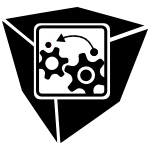 VISSOFT-2005-SmithM #interactive #java #runtime #source code
VISSOFT-2005-SmithM #interactive #java #runtime #source code- Identifying Structural Features of Java Programs by Analysing the Interaction of Classes at Runtime (MPS, MM), pp. 108–113.
 CAiSE-2005-RussellAHE #representation #tool support #workflow
CAiSE-2005-RussellAHE #representation #tool support #workflow- Workflow Resource Patterns: Identification, Representation and Tool Support (NR, WMPvdA, AHMtH, DE), pp. 216–232.
 ICEIS-v2-2005-Celikel #approach #encryption
ICEIS-v2-2005-Celikel #approach #encryption- A Cryptographic Approach to Language Identification: PPM (EC), pp. 213–219.
 ICEIS-v5-2005-TopiLB #enterprise #implementation #usability
ICEIS-v5-2005-TopiLB #enterprise #implementation #usability- Identifying Usability Issues with an ERP Implementation (HT, WTL, TB), pp. 128–133.
 CIKM-2005-ZhaoLTX #framework #performance #visualisation
CIKM-2005-ZhaoLTX #framework #performance #visualisation- Opportunity map: a visualization framework for fast identification of actionable knowledge (KZ, BL, TMT, WX), pp. 60–67.
 ICML-2005-SilvaS #learning #modelling
ICML-2005-SilvaS #learning #modelling- New d-separation identification results for learning continuous latent variable models (RBdAeS, RS), pp. 808–815.
 ICML-2005-SimsekWB #clustering #graph #learning
ICML-2005-SimsekWB #clustering #graph #learning- Identifying useful subgoals in reinforcement learning by local graph partitioning (ÖS, APW, AGB), pp. 816–823.
 SEKE-2005-ZhangLY #delivery #re-engineering
SEKE-2005-ZhangLY #delivery #re-engineering- Service Identification and Packaging in Service Oriented Reengineering (ZZ, RL, HY), pp. 620–625.
 SIGIR-2005-MetzlerBCMZ #data flow
SIGIR-2005-MetzlerBCMZ #data flow- The recap system for identifying information flow (DM, YB, WBC, AM, JZ), p. 678.
 RE-2005-LutzNPFT #analysis #requirements #using
RE-2005-LutzNPFT #analysis #requirements #using- Identifying Contingency Requirements Using Obstacle Analysis (RRL, SN, APH, CRF, DT), pp. 263–272.
 RE-2005-SampaioRR #approach #aspect-oriented #named #requirements
RE-2005-SampaioRR #approach #aspect-oriented #named #requirements- Early-AIM: An Approach for Identifying Aspects in Requirements (AS, AR, PR), pp. 487–488.
 RE-2005-SvetinovicBG #analysis #concept #object-oriented #student #why
RE-2005-SvetinovicBG #analysis #concept #object-oriented #student #why- Concept Identification in Object-Oriented Domain Analysis: Why Some Students Just Don’t Get It (DS, DMB, MWG), pp. 189–198.
 ASE-2005-LienhardDA #concept analysis
ASE-2005-LienhardDA #concept analysis- Identifying traits with formal concept analysis (AL, SD, GA), pp. 66–75.
 ASE-2005-Milanova #composition #diagrams #precise #uml
ASE-2005-Milanova #composition #diagrams #precise #uml- Precise identification of composition relationships for UML class diagrams (AM), pp. 76–85.
 ASE-2005-SampaioCR #aspect-oriented #automation #named #requirements
ASE-2005-SampaioCR #aspect-oriented #automation #named #requirements- EA-Miner: a tool for automating aspect-oriented requirements identification (AS, RC, PR), pp. 352–355.
 SAC-2005-AnshulR #network
SAC-2005-AnshulR #network- A ZKP-based identification scheme for base nodes in wireless sensor networks (DA, SR), pp. 319–323.
 SAC-2005-HsiehCK #online #performance
SAC-2005-HsiehCK #online #performance- Efficient on-line identification of hot data for flash-memory management (JWH, LPC, TWK), pp. 838–842.
 SAC-2005-JangSSH #comparison
SAC-2005-JangSSH #comparison- A comparison on information fusion methods for air target identification (DJ, SYS, CYS, CCH), pp. 45–46.
 SAC-2005-MartinsS #web
SAC-2005-MartinsS #web- Language identification in web pages (BM, MJS), pp. 764–768.
 SAC-2005-PaulyS
SAC-2005-PaulyS - Identifying topological predicates for vague spatial objects (AP, MS), pp. 587–591.
 CASE-2005-KimKYT #realtime #using
CASE-2005-KimKYT #realtime #using- Dynamic shipment planning in an automobile shipment yard using real-time radio frequency identification (RFID) information (JK, SRTK, STY, JDT), pp. 148–153.
 FASE-2005-ChangHK #clustering #component
FASE-2005-ChangHK #clustering #component- A Tool to Automate Component Clustering and Identification (SHC, MJH, SDK), pp. 141–144.
 CSL-2005-SchurmannS #polynomial #recursion
CSL-2005-SchurmannS #polynomial #recursion- Identifying Polynomial-Time Recursive Functions (CS, JS), pp. 525–540.
 TestCom-2005-KrichenT #automaton #problem
TestCom-2005-KrichenT #automaton #problem- State Identification Problems for Timed Automata (MK, ST), pp. 175–191.
 DocEng-2004-BeheraLI #documentation #image #visual notation
DocEng-2004-BeheraLI #documentation #image #visual notation- Visual signature based identification of Low-resolution document images (AB, DL, RI), pp. 178–187.
 DocEng-2004-YehC #topic
DocEng-2004-YehC #topic- Creation of topic map by identifying topic chain in chinese (CLY, YCC), pp. 112–114.
 DRR-2004-MaD #documentation #image #word
DRR-2004-MaD #documentation #image #word- Word level script identification for scanned document images (HM, DSD), pp. 124–135.
 DRR-2004-OzawaTKNY #image
DRR-2004-OzawaTKNY #image- Slide identification for lecture movies by matching characters and images (NO, HT, YK, SN, HY), pp. 74–81.
 SIGMOD-2004-VlachosMV #online #query
SIGMOD-2004-VlachosMV #online #query- Identifying Similarities, Periodicities and Bursts for Online Search Queries (MV, CM, ZV, DG), pp. 131–142.
 ICSM-2004-BruntinkDTE #clone detection #detection #evaluation
ICSM-2004-BruntinkDTE #clone detection #detection #evaluation- An Evaluation of Clone Detection Techniques for Identifying Crosscutting Concerns (MB, AvD, TT, RvE), pp. 200–209.
 ICSM-2004-FengZWW #anti #design
ICSM-2004-FengZWW #anti #design- Software Design Improvement through Anti-Patterns Identification (TF, JZ, HW, XW), p. 524.
 ICSM-2004-Rountev #java #precise
ICSM-2004-Rountev #java #precise- Precise Identification of Side-Effect-Free Methods in Java (AR), pp. 82–91.
 WCRE-2004-MarinDM #analysis #aspect-oriented #using
WCRE-2004-MarinDM #analysis #aspect-oriented #using- Identifying Aspects Using Fan-In Analysis (MM, AvD, LM), pp. 132–141.
 ICEIS-v1-2004-LuciaST #clone detection #similarity #using #web
ICEIS-v1-2004-LuciaST #clone detection #similarity #using #web- Identifying Clones in Dynamic Web Sites Using Similarity Thresholds (ADL, GS, GT), pp. 391–396.
 ICEIS-v2-2004-BailonGPQ
ICEIS-v2-2004-BailonGPQ - G.R.E.E.N. — An Expert System to Identify Gymnosperms (ABB, ELGG, RPP, CQ), pp. 216–221.
 ICEIS-v4-2004-CostaOS
ICEIS-v4-2004-CostaOS - E-Services in Mission-Critical Organizations: Identification Enforcement (CC, JLO, AS), pp. 389–396.
 CIKM-2004-LiO #learning #music
CIKM-2004-LiO #learning #music- Semi-supervised learning for music artists style identification (TL, MO), pp. 152–153.
 ECIR-2004-ChenTH #corpus #novel #using
ECIR-2004-ChenTH #corpus #novel #using- Identification of Relevant and Novel Sentences Using Reference Corpus (HHC, MFT, MHH), pp. 85–98.
 ICML-2004-SimsekB #abstraction #learning #using
ICML-2004-SimsekB #abstraction #learning #using- Using relative novelty to identify useful temporal abstractions in reinforcement learning (ÖS, AGB).
 ICPR-v1-2004-GarainCC #documentation #embedded
ICPR-v1-2004-GarainCC #documentation #embedded- Identification of Embedded Mathematical Expressions in Scanned Documents (UG, BBC, ARC), pp. 384–387.
 ICPR-v1-2004-ParkL #distance #fault #image #using
ICPR-v1-2004-ParkL #distance #fault #image #using- Enhancing Low-Resolution Facial Images Using Error Back-Projection for Human Identification at a Distance (JSP, SWL), pp. 346–349.
 ICPR-v2-2004-GutierrezRA
ICPR-v2-2004-GutierrezRA - Weighted Loss Functions to Make Risk-based Language Identification Fused Decisions (JG, JLR, RAO), pp. 863–866.
 ICPR-v2-2004-MaddageXW #modelling
ICPR-v2-2004-MaddageXW #modelling- Singer Identification Based on Vocal and Instrumental Models (NCM, CX, YW), pp. 375–378.
 ICPR-v2-2004-OhteraH #using
ICPR-v2-2004-OhteraH #using- Faxed Form Identification using Histogram of the Hough-Space (RO, TH), pp. 566–569.
 ICPR-v2-2004-PranckevicieneBS #classification
ICPR-v2-2004-PranckevicieneBS #classification- Consensus-Based Identification of Spectral Signatures for Classification of High-Dimensional Biomedical Spectra (EP, RB, RLS), pp. 319–322.
 ICPR-v2-2004-SchlapbachB #using
ICPR-v2-2004-SchlapbachB #using- Off-line Handwriting Identification Using HMM Based Recognizers (AS, HB), pp. 654–658.
 ICPR-v3-2004-EhtiatiC #architecture
ICPR-v3-2004-EhtiatiC #architecture- A Strongly Coupled Architecture for Contextual Object and Scene Identification (TE, JJC), pp. 69–72.
 ICPR-v3-2004-GaoLT #music
ICPR-v3-2004-GaoLT #music- Indexing with Musical Events and Its Application to Content-Based Music Identification (SG, CHL, QT), pp. 846–849.
 ICPR-v3-2004-TonniesPC #image
ICPR-v3-2004-TonniesPC #image- Local Identification and Removal of Scatter Artefacts based on the Temporal Information in Dynamic SPECT images (KDT, CP, AC), pp. 762–765.
 ICPR-v3-2004-ZhangSGCCY
ICPR-v3-2004-ZhangSGCCY - Information Fusion in Face Identification (WZ, SS, WG, YC, BC, PY), pp. 950–953.
 ICPR-v4-2004-AggarwalCC #approach #recognition
ICPR-v4-2004-AggarwalCC #approach #recognition- A System Identification Approach for Video-based Face Recognition (GA, AKRC, RC), pp. 175–178.
 ICPR-v4-2004-EveringhamZ #automation #visual notation
ICPR-v4-2004-EveringhamZ #automation #visual notation- Automated Visual Identification of Characters in Situation Comedies (ME, AZ), pp. 983–986.
 ICPR-v4-2004-HuangL04a
ICPR-v4-2004-HuangL04a - A Vision-Based Vehicle Identification System (CLH, WCL), pp. 364–367.
 ICPR-v4-2004-KobayashiO #higher-order #multi #polynomial #using
ICPR-v4-2004-KobayashiO #higher-order #multi #polynomial #using- Action and Simultaneous Multiple-Person Identification Using Cubic Higher-Order Local Auto-Correlation (TK, NO), pp. 741–744.
 ICPR-v4-2004-KrichenMGD #using
ICPR-v4-2004-KrichenMGD #using- Iris Identification Using Wavelet Packets (EK, MAM, SGS, BD), pp. 335–338.
 KDD-2004-RusmevichientongZS
KDD-2004-RusmevichientongZS - Identifying early buyers from purchase data (PR, SZ, DS), pp. 671–677.
 KDD-2004-XiongSTK #bound #correlation
KDD-2004-XiongSTK #bound #correlation- Exploiting a support-based upper bound of Pearson’s correlation coefficient for efficiently identifying strongly correlated pairs (HX, SS, PNT, VK), pp. 334–343.
 ECOOP-2004-McCamantE #component #multi
ECOOP-2004-McCamantE #component #multi- Early Identification of Incompatibilities in Multi-component Upgrades (SM, MDE), pp. 440–464.
 RE-2004-KaiyaOK #case study #diagrams
RE-2004-KaiyaOK #case study #diagrams- Identifying Stakeholders and Their Preferences about NFR by Comparing Use Case Diagrams of Several Existing Systems (HK, AO, KK), pp. 112–121.
 SAC-2004-Lanitis #image
SAC-2004-Lanitis #image- Person identification from heavily occluded face images (AL), pp. 5–9.
 SAC-2004-LinsG #automation
SAC-2004-LinsG #automation- Automatic language identification of written texts (RDL, PG), pp. 1128–1133.
 SAC-2004-WeisserK #metric #sequence #statistics #using
SAC-2004-WeisserK #metric #sequence #statistics #using- Identification of fundamental building blocks in protein sequences using statistical association measures (DKW, JKS), pp. 154–161.
 CGO-2004-PanaitSW
CGO-2004-PanaitSW - Static Identification of Delinquent Loads (VMP, AS, WFW), pp. 303–314.
 DATE-v1-2004-HuangM #behaviour #modelling
DATE-v1-2004-HuangM #behaviour #modelling- Identification and Modeling of Nonlinear Dynamic Behavior in Analog Circuits (XH, HAM), pp. 460–467.
 DATE-v1-2004-PadmanabanT #fault #performance #using
DATE-v1-2004-PadmanabanT #fault #performance #using- Using BDDs and ZBDDs for Efficient Identification of Testable Path Delay Faults (SP, ST), pp. 50–55.
 DATE-v1-2004-VandersteenPLD #linear
DATE-v1-2004-VandersteenPLD #linear- Extended Subspace Identification of Improper Linear Systems (GV, RP, DL, SD), pp. 454–459.
 DRR-2003-OgataWIYFSF #implementation
DRR-2003-OgataWIYFSF #implementation- Form-type identification for banking applications and its implementation issues (HO, SW, AI, TY, NF, HS, HF), pp. 208–218.
 DRR-2003-ZhangS #difference #metric
DRR-2003-ZhangS #difference #metric- Binary vector dissimilarity measures for handwriting identification (BZ, SNS), pp. 28–38.
 ECDL-2003-ShipmanPMG #documentation
ECDL-2003-ShipmanPMG #documentation- Identifying Useful Passages in Documents Based on Annotation Patterns (FMSI, MNP, CCM, GG), pp. 101–112.
 ICDAR-2003-AblavskyS #automation #documentation #feature model
ICDAR-2003-AblavskyS #automation #documentation #feature model- Automatic Feature Selection with Applications to Script Identification of Degraded Documents (VA, MRS), pp. 750–754.
 ICDAR-2003-AndersenZ #documentation
ICDAR-2003-AndersenZ #documentation- Features for Neural Net Based Region Identification of Newspaper Documents (TLA, WZ), pp. 403–407.
 ICDAR-2003-BensefiaPH #information retrieval
ICDAR-2003-BensefiaPH #information retrieval- Information Retrieval Based Writer Identification (AB, TP, LH), pp. 946–950.
 ICDAR-2003-BulacuSV #using
ICDAR-2003-BulacuSV #using- Writer Identification Using Edge-Based Directional Features (MB, LS, LV), pp. 937–941.
 ICDAR-2003-HuB #image #web
ICDAR-2003-HuB #image #web- Identifying Story and Preview Images in News Web Pages (JH, AB), pp. 640–644.
 ICDAR-2003-LeedhamC #using
ICDAR-2003-LeedhamC #using- Writer Identification using Innovative Binarised Features of Handwritten Numerals (GL, SC), pp. 413–417.
 ICDAR-2003-PalSC #documentation #multi
ICDAR-2003-PalSC #documentation #multi- Multi-Script Line identification from Indian Document (UP, SS, BBC), pp. 880–884.
 ICDAR-2003-SakoSFII #recognition
ICDAR-2003-SakoSFII #recognition- Form Reading based on Form-type Identification and Form-data Recognition (HS, MS, NF, HI, AI), p. 926–?.
 ICDAR-2003-SeropianGV
ICDAR-2003-SeropianGV - Writer Identification based on the fractal construction of a reference base (AS, MG, NV), pp. 1163–1167.
 ICDAR-2003-WangDL #linear #using
ICDAR-2003-WangDL #linear #using- Writer Identification Using Directional Element Features and Linear Transform (XW, XD, HL), pp. 942–945.
 ICDAR-2003-WirotiusSV
ICDAR-2003-WirotiusSV - Writer Identification from Gray Level Distribution (MW, AS, NV), pp. 1168–1172.
 ICDAR-2003-ZhengLD03a #documentation #image #markov #random #using
ICDAR-2003-ZhengLD03a #documentation #image #markov #random #using- Text Identification in Noisy Document Images Using Markov Random Field (YZ, HL, DSD), p. 599–?.
 CSMR-2003-ClarkeMG #object-oriented #taxonomy #using
CSMR-2003-ClarkeMG #object-oriented #taxonomy #using- Using a Taxonomy Tool to Identify Changes in OO Softwar (PJC, BAM, JPG), pp. 213–222.
 CSMR-2003-TourweM #logic #metaprogramming #refactoring #using
CSMR-2003-TourweM #logic #metaprogramming #refactoring #using- Identifying Refactoring Opportunities Using Logic Meta Programming (TT, TM), pp. 91–100.
 IWPC-2003-RillingK #complexity #comprehension #metric #slicing #using
IWPC-2003-RillingK #complexity #comprehension #metric #slicing #using- Identifying Comprehension Bottlenecks Using Program Slicing and Cognitive Complexity Metric (JR, TK), pp. 115–124.
 WCRE-2003-BevanW
WCRE-2003-BevanW - Identification of Software Instabilities (JB, EJWJ), pp. 134–145.
 DiGRA-2003-Walz #game studies #persuasion #towards
DiGRA-2003-Walz #game studies #persuasion #towards- Delightful identification & persuasion: towards an analytical and applied rhetoric of digital games (SPW).
 EDOC-2003-NealCLMGK #contract #monitoring #requirements
EDOC-2003-NealCLMGK #contract #monitoring #requirements- Identifying requirements for Business Contract Language: a Monitoring Perspectiv (SWN, JBC, PFL, ZM, SG, SK), pp. 50–61.
 ICEIS-v2-2003-Drori #documentation #information management #research #using
ICEIS-v2-2003-Drori #documentation #information management #research #using- Using Knowledge Engineering Tool to Identify the Subject of a Document — Research Results (OD), pp. 442–445.
 ICEIS-v2-2003-ReBB #behaviour
ICEIS-v2-2003-ReBB #behaviour- The Use of Neurofuzzy Computable System to Identify Prominent Behavior Characteristics in Successful Entrepreneurs (AR, RB, LB), pp. 522–528.
 ICEIS-v2-2003-SilvaIE #analysis #database #information management #using
ICEIS-v2-2003-SilvaIE #analysis #database #information management #using- Using Knowledge Discovery to Identify Analysis Patterns for Geographic Database (CS, CI, PME), pp. 359–364.
 ICEIS-v3-2003-ThomI #aspect-oriented #design #workflow
ICEIS-v3-2003-ThomI #aspect-oriented #design #workflow- Identifying Patterns of Workflow Design Relying on Organizational Structure Aspects (LHT, CI), pp. 462–467.
 ICEIS-v4-2003-MajS #flexibility #scalability
ICEIS-v4-2003-MajS #flexibility #scalability- Scalable and Flexible Electronic Identification (SPM, DTS), pp. 335–339.
 CIKM-2003-CampbellMCD #email #using
CIKM-2003-CampbellMCD #email #using- Expertise identification using email communications (CSC, PPM, AC, BD), pp. 528–531.
 CIKM-2003-LalmasR #automation #documentation #retrieval
CIKM-2003-LalmasR #automation #documentation #retrieval- Automatic identification of best entry points for focused structured document retrieval (ML, JR), pp. 540–543.
 ICML-2003-McGovernJ #learning #multi #predict #relational #using
ICML-2003-McGovernJ #learning #multi #predict #relational #using- Identifying Predictive Structures in Relational Data Using Multiple Instance Learning (AM, DJ), pp. 528–535.
 SEKE-2003-BahetiWDC #information management #on the
SEKE-2003-BahetiWDC #information management #on the- On Identifying Deficiencies in a Knowledge Management System (PB, LAW, AD, AC), pp. 385–392.
 SAC-2003-LeeLTY
SAC-2003-LeeLTY - Identify Amino Acid Candidates Critical for Function of Rat Imidase by Cross-reference Voting in Imidase SuperFamily (CL, YtL, CYT, YSY), pp. 127–134.
 DATE-2003-LiuC #approach #fault
DATE-2003-LiuC #approach #fault- A Partition-Based Approach for Identifying Failing Scan Cells in Scan-BIST with Applications to System-on-Chip Fault Diagnosis (CL, KC), pp. 10230–10237.
 DATE-2003-LoKWH #design #standard
DATE-2003-LoKWH #design #standard- A Custom-Cell Identification Method for High-Performance Mixed Standard/Custom-Cell Designs (JYLL, WAK, ACHW, TH), pp. 11102–11103.
 DATE-2003-SyalH #algorithm #fault #low cost #novel
DATE-2003-SyalH #algorithm #fault #low cost #novel- A Novel, Low-Cost Algorithm for Sequentially Untestable Fault Identification (MS, MSH), pp. 10316–10321.
 DATE-2003-WegenerK #fault #linear #modelling
DATE-2003-WegenerK #fault #linear #modelling- Linear Model-Based Error Identification and Calibration for Data Converters (CW, MPK), pp. 10630–10635.
 SCAM-J-2001-SouterP02 #automation
SCAM-J-2001-SouterP02 #automation- Characterization and automatic identification of type infeasible call chains (ALS, LLP), pp. 721–732.
 ICSM-2002-Jungmayr #dependence
ICSM-2002-Jungmayr #dependence- Identifying Test-Critical Dependencies (SJ), pp. 404–413.
 CSCW-2002-WhittakerJT #communication
CSCW-2002-WhittakerJT #communication- Contact management: identifying contacts to support long-term communication (SW, QJ, LGT), pp. 216–225.
 CIKM-2002-LiuH #classification #music
CIKM-2002-LiuH #classification #music- A singer identification technique for content-based classification of MP3 music objects (CCL, CSH), pp. 438–445.
 ICPR-v1-2002-Hayfron-AcquahNC #symmetry
ICPR-v1-2002-Hayfron-AcquahNC #symmetry- Human Identification by Spatio-Temporal Symmetry (JBHA, MSN, JNC), pp. 632–635.
 ICPR-v1-2002-PhillipsSRGB #algorithm #challenge #problem #set
ICPR-v1-2002-PhillipsSRGB #algorithm #challenge #problem #set- The Gait Identification Challenge Problem: Data Sets and Baseline Algorithm (PJP, SS, IRV, PG, KWB), pp. 385–388.
 ICPR-v1-2002-WangHT
ICPR-v1-2002-WangHT - A New Attempt to Gait-based Human Identification (LW, WH, TT), pp. 115–118.
 ICPR-v1-2002-WuWZ #energy #fuzzy
ICPR-v1-2002-WuWZ #energy #fuzzy- Fuzzy Directional Element Energy Feature (FDEEF) Based Palmprint Identification (XW, KW, DZ), pp. 95–98.
 ICPR-v1-2002-WuYS
ICPR-v1-2002-WuYS - Optimal Gabor Filters for High Speed Face Identification (HW, YY, TS), pp. 107–110.
 ICPR-v1-2002-YamNC #automation #on the
ICPR-v1-2002-YamNC #automation #on the- On the Relationship of Human Walking and Running: Automatic Person Identification by Gait (CYY, MSN, JNC), pp. 287–290.
 ICPR-v2-2002-GuimaraesACL #detection #video
ICPR-v2-2002-GuimaraesACL #detection #video- Video Fade Detection by Discrete Line Identification (SJFG, AdAA, MC, NJL), pp. 1013–1016.
 ICPR-v2-2002-Keren #naive bayes #using
ICPR-v2-2002-Keren #naive bayes #using- Painter Identification Using Local Features and Naive Bayes (DK), pp. 474–477.
 ICPR-v2-2002-Miyamori #behaviour #retrieval #using #video
ICPR-v2-2002-Miyamori #behaviour #retrieval #using #video- Improving Accuracy in Behaviour Identification for Content-Based Retrieval by Using Audio and Video Information (HM), pp. 826–830.
 ICPR-v2-2002-Mustafa #image
ICPR-v2-2002-Mustafa #image- Identifying and Classifying Image Transforms (AAYM), pp. 806–809.
 ICPR-v2-2002-PereraGSPM #pattern matching #pattern recognition #recognition
ICPR-v2-2002-PereraGSPM #pattern matching #pattern recognition #recognition- Machine Olfaction: Pattern Recognition for the Identification of Aromas (AP, AGB, TS, TP, SM), pp. 410–413.
 ICPR-v2-2002-QunTHC #algorithm #automation #clustering #using
ICPR-v2-2002-QunTHC #algorithm #automation #clustering #using- Automatic Fingerprint Identification Using Cluster Algorithm (QR, JT, YH, JC), pp. 398–401.
 ICPR-v3-2002-JohnsonB #metric
ICPR-v3-2002-JohnsonB #metric- Relationship between Identification Metrics: Expected Confusion and Area Under a ROC Curve (AYJ, AFB), pp. 662–666.
 ICPR-v3-2002-MottlKKYK #grid #image #similarity
ICPR-v3-2002-MottlKKYK #grid #image #similarity- Elastic Transformation of the Image Pixel Grid for Similarity Based Face Identification (VM, AK, AK, AY, JK), pp. 549–552.
 ICPR-v3-2002-StevensSP #using
ICPR-v3-2002-StevensSP #using- Identifying Vehicles Using Vibrometry Signatures (MRS, MS, DP), pp. 253–256.
 ICPR-v3-2002-SuW #learning #process
ICPR-v3-2002-SuW #learning #process- A Learning Process to the Identification of Feature Points on Chinese Characters (YMS, JFW), pp. 93–97.
 ICPR-v4-2002-BenAbdelkaderCD #automation #estimation #using
ICPR-v4-2002-BenAbdelkaderCD #automation #estimation #using- Person Identification Using Automatic Height and Stride Estimation (CB, RC, LSD), pp. 377–380.
 ICPR-v4-2002-MottlKK #classification #kernel
ICPR-v4-2002-MottlKK #classification #kernel- Support Object Classifiers with Rigid and Elastic Kernel Functions for Face Identification (VM, AK, JK), pp. 205–208.
 KDD-2002-FangHL #using
KDD-2002-FangHL #using- Tumor cell identification using features rules (BF, WH, MLL), pp. 495–500.
 KDD-2002-Frigui #approach #clustering #named #performance #scalability #set
KDD-2002-Frigui #approach #clustering #named #performance #scalability #set- SyMP: an efficient clustering approach to identify clusters of arbitrary shapes in large data sets (HF), pp. 507–512.
 KDD-2002-TejadaKM #independence #learning #string
KDD-2002-TejadaKM #independence #learning #string- Learning domain-independent string transformation weights for high accuracy object identification (ST, CAK, SM), pp. 350–359.
 PLDI-2002-BudimlicCHKOR #performance
PLDI-2002-BudimlicCHKOR #performance- Fast Copy Coalescing and Live-Range Identification (ZB, KDC, TJH, KK, TSO, SWR), pp. 25–32.
 ASE-2002-DiasR #component #concurrent
ASE-2002-DiasR #component #concurrent- Identifying Cause & Effect Relations between Events in Concurrent Event-Based Components (MSD, DJR), pp. 245–248.
 ICSE-2002-MockusH #approach
ICSE-2002-MockusH #approach- Expertise browser: a quantitative approach to identifying expertise (AM, JDH), pp. 503–512.
 SAC-2002-BesnardL #constraints #design #industrial #lessons learnt #optimisation #re-engineering #reuse
SAC-2002-BesnardL #constraints #design #industrial #lessons learnt #optimisation #re-engineering #reuse- Lessons from industrial design for software engineering through constraints identification, solution space optimisation and reuse (DB, ATL), pp. 732–738.
 DAC-2002-ZengAA #using
DAC-2002-ZengAA #using- False timing path identification using ATPG techniques and delay-based information (JZ, MSA, JAA), pp. 562–565.
 DATE-2002-Hsiao #fault
DATE-2002-Hsiao #fault- Maximizing Impossibilities for Untestable Fault Identification (MSH), pp. 949–953.
 DATE-2002-LiuCG
DATE-2002-LiuCG - An Interval-Based Diagnosis Scheme for Identifying Failing Vectors in a Scan-BIST Environment (CL, KC, MG), pp. 382–386.
 DATE-2002-PozziVI #automation #embedded
DATE-2002-PozziVI #automation #embedded- Automatic Topology-Based Identification of Instruction-Set Extensions for Embedded Processors (LP, MV, PI), p. 1138.
 ECDL-2001-RadevBZR #independence #interactive #summary #topic
ECDL-2001-RadevBZR #independence #interactive #summary #topic- Interactive, Domain-Independent Identification and Summarization of Topically Related News Articles (DRR, SBG, ZZ, RSR), pp. 225–238.
 ICDAR-2001-ElgammalI01a #documentation #hybrid #image
ICDAR-2001-ElgammalI01a #documentation #hybrid #image- Techniques for Language Identification for Hybrid Arabic-English Document Images (AME, MAI), pp. 1100–1104.
 ICDAR-2001-FanCW #documentation #using
ICDAR-2001-FanCW #documentation #using- Form Document Identification Using Line Structure Based Features (KCF, MLC, YKW), pp. 704–708.
 ICDAR-2001-IwataYYKIM #library #using
ICDAR-2001-IwataYYKIM #library #using- Book Cover Identification by Using Four Directional Features Filed for a Small-Scale Library System (KI, KY, MY, KK, MI, KM), pp. 582–586.
 ICDAR-2001-KikuchiA #development
ICDAR-2001-KikuchiA #development- Development of Speedy and High Sensitive Pen System for Writing Pressure and Writer Identification (MK, NA), pp. 1040–1044.
 ICDAR-2001-LeedhamTY #markov #using
ICDAR-2001-LeedhamTY #markov #using- Handwritten Country Name Identification Using Vector Quantisation and Hidden Markov Model (GL, WKT, WLY), pp. 685–688.
 ICDAR-2001-MartiMB #using
ICDAR-2001-MartiMB #using- Writer Identification Using Text Line Based Features (UVM, RM, HB), pp. 101–105.
 ICDAR-2001-PalC #automation
ICDAR-2001-PalC #automation- Automatic Identification of English, Chinese, Arabic, Devnagari and Bangla Script Line (UP, BBC), pp. 790–794.
 JCDL-2001-WacholderEK #automation #interactive
JCDL-2001-WacholderEK #automation #interactive- Automatic identification and organization of index terms for interactive browsing (NW, DKE, JK), pp. 126–134.
 ITiCSE-2001-Huizinga #online #programming #topic
ITiCSE-2001-Huizinga #online #programming #topic- Identifying topics for instructional improvement through on-line tracking of programming assignments (DMH), pp. 129–132.
 SCAM-2001-AntoniolVDCM #clone detection #kernel #linux
SCAM-2001-AntoniolVDCM #clone detection #kernel #linux- Identifying Clones in the Linux Kernel (GA, UV, MDP, GC, EM), pp. 92–99.
 WCRE-2001-Krinke #dependence #graph
WCRE-2001-Krinke #dependence #graph- Identifying Similar Code with Program Dependence Graphs (JK), pp. 301–309.
 CHI-2001-BhavnaniRJ #education #using
CHI-2001-BhavnaniRJ #education #using- Beyond command knowledge: identifying and teaching strategic knowledge for using complex computer applications (SKB, FR, BEJ), pp. 229–236.
 EDOC-2001-JainCIR #approach #component #formal method
EDOC-2001-JainCIR #approach #component #formal method- Business Component Identification — A Formal Approach (HKJ, NC, NI, BR), pp. 183–187.
 ICEIS-v2-2001-NunesP #enterprise #information management #modelling
ICEIS-v2-2001-NunesP #enterprise #information management #modelling- The Use of Information Systems Modelling to Identify and Evaluate E-Business Strategies for Small and Medium Enterprises (SMES) (JMBN, DP), pp. 1018–1025.
 CIKM-2001-MarcusML #fault #set
CIKM-2001-MarcusML #fault #set- Ordinal Association Rules for Error Identification in Data Sets (AM, JIM, KIL), pp. 589–591.
 KDD-2001-LiuHM
KDD-2001-LiuHM - Identifying non-actionable association rules (BL, WH, YM), pp. 329–334.
 MLDM-2001-FischerB #automation #using
MLDM-2001-FischerB #automation #using- Automatic Identification of Diatoms Using Decision Forests (SF, HB), pp. 173–183.
 SAS-2001-KomondoorH #slicing #source code #using
SAS-2001-KomondoorH #slicing #source code #using- Using Slicing to Identify Duplication in Source Code (RK, SH), pp. 40–56.
 ASE-2001-MarcusM #concept #source code
ASE-2001-MarcusM #concept #source code- Identification of High-Level Concept Clones in Source Code (AM, JIM), pp. 107–114.
 ESEC-FSE-2001-Brada #component #specification
ESEC-FSE-2001-Brada #component #specification- Component revision identification based on IDL/ADL component specification (PB), pp. 297–298.
 SAC-2001-Grigoriev
SAC-2001-Grigoriev - Computational structural genomics: identifying protein targets for structural studies (IVG), pp. 41–45.
 SAC-2001-ZhouCH #correlation #optimisation #problem #set #using
SAC-2001-ZhouCH #correlation #optimisation #problem #set #using- Identifying the most significant pairwise correlations of residues in different positions of helices: the subset selection problem using least squares optimization (XZ, GC, MTH), pp. 51–55.
 DAC-2001-XiaoM #analysis #correlation #functional
DAC-2001-XiaoM #analysis #correlation #functional- Functional Correlation Analysis in Crosstalk Induced Critical Paths Identification (TX, MMS), pp. 653–656.
 DATE-2001-ZengABA
DATE-2001-ZengABA - Full chip false timing path identification: applications to the PowerPCTM microprocessors (JZ, MSA, JB, JAA), pp. 514–519.
 ADL-2000-PopesculFLUG #clustering #database #documentation #roadmap
ADL-2000-PopesculFLUG #clustering #database #documentation #roadmap- Clustering and Identifying Temporal Trends in Document Databases (AP, GWF, SL, LHU, CLG), pp. 173–182.
 SIGMOD-2000-BreunigKNS #named
SIGMOD-2000-BreunigKNS #named- LOF: Identifying Density-Based Local Outliers (MMB, HPK, RTN, JS), pp. 93–104.
 VLDB-2000-KoudasIM #roadmap #set #sketching #using
VLDB-2000-KoudasIM #roadmap #set #sketching #using- Identifying Representative Trends in Massive Time Series Data Sets Using Sketches (PI, NK, SM), pp. 363–372.
 CSMR-2000-AntoniolCCL #case study #maintenance #set
CSMR-2000-AntoniolCCL #case study #maintenance #set- Identifying the Starting Impact Set of a Maintenance Request: A Case Study (GA, GC, GC, ADL), pp. 227–230.
 ICSM-2000-MockusV #database #using
ICSM-2000-MockusV #database #using- Identifying Reasons for Software Changes using Historic Databases (AM, LGV), pp. 120–130.
 IWPC-2000-AntoniolCM
IWPC-2000-AntoniolCM - Identification of Lower-Level Artifacts (GA, GC, EM), p. 253.
 ICML-2000-CohnC #documentation #learning
ICML-2000-CohnC #documentation #learning- Learning to Probabilistically Identify Authoritative Documents (DC, HC), pp. 167–174.
 ICML-2000-ColtonBW #automation #concept
ICML-2000-ColtonBW #automation #concept- Automatic Identification of Mathematical Concepts (SC, AB, TW), pp. 183–190.
 ICML-2000-DyB #learning #order #set
ICML-2000-DyB #learning #order #set- Feature Subset Selection and Order Identification for Unsupervised Learning (JGD, CEB), pp. 247–254.
 ICML-2000-WalkerWL #comprehension #fault #natural language #using
ICML-2000-WalkerWL #comprehension #fault #natural language #using- Using Natural Language Processing and discourse Features to Identify Understanding Errors (MAW, JHW, IL), pp. 1111–1118.
 ICPR-v2-2000-RitterG #approach #pattern matching #pattern recognition #recognition
ICPR-v2-2000-RitterG #approach #pattern matching #pattern recognition #recognition- A Bayesian Approach to Object Identification in Pattern Recognition (GR, MTG), pp. 2418–2421.
 ICPR-v2-2000-ZhuTW
ICPR-v2-2000-ZhuTW - Biometric Personal Identification Based on Handwritin (YZ, TT, YW), pp. 2797–2800.
 ICPR-v2-2000-ZhuTW00a
ICPR-v2-2000-ZhuTW00a - Biometric Personal Identification Based on Iris Patterns (YZ, TT, YW), pp. 2801–2804.
 ICPR-v3-2000-NodaK #adaptation #probability #using
ICPR-v3-2000-NodaK #adaptation #probability #using- Adaptive Speaker Identification Using Sequential Probability Ratio Test (HN, EK), pp. 3266–3269.
 ICPR-v4-2000-ColiosT #invariant #permutation
ICPR-v4-2000-ColiosT #invariant #permutation- Landmark Identification Based on Projective and Permutation Invariant Vectors (CIC, PET), pp. 4128–4131.
 ICPR-v4-2000-TruongVD #automation #categorisation #video
ICPR-v4-2000-TruongVD #automation #categorisation #video- Automatic Genre Identification for Content-Based Video Categorization (BTT, SV, CD), pp. 4230–4233.
 KDD-2000-ChouGGK
KDD-2000-ChouGGK - Identifying prospective customers (PBC, EG, DG, PK), pp. 447–456.
 KDD-2000-FlakeLG #community #performance #web
KDD-2000-FlakeLG #community #performance #web- Efficient identification of Web communities (GWF, SL, CLG), pp. 150–160.
 TOOLS-PACIFIC-2000-BarberG #architecture #object-oriented #tool support
TOOLS-PACIFIC-2000-BarberG #architecture #object-oriented #tool support- Tool Support for Systematic Class Identification in Object-Oriented Software Architectures (KSB, TJG), pp. 82–93.
 ASE-2000-BuenoJ #monitoring #testing
ASE-2000-BuenoJ #monitoring #testing- Identification of Potentially Infeasible Program Paths by Monitoring the Search for Test Data (PMSB, MJ), pp. 209–218.
 DATE-2000-GulrajaniH #logic #multi
DATE-2000-GulrajaniH #logic #multi- Multi-Node Static Logic Implications for Redundancy Identification (KG, MSH), pp. 729–733.
 ICDAR-1999-ChaudhuryS
ICDAR-1999-ChaudhuryS - Trainable Script Identification Strategies for Indian Languages (SC, RS), pp. 657–660.
 ICDAR-1999-Ho #keyword #learning #performance #word
ICDAR-1999-Ho #keyword #learning #performance #word- Fast Identification of Stop Words for Font Learning and Keyword Spotting (TKH), pp. 333–336.
 ICDAR-1999-Karnik
ICDAR-1999-Karnik - Identifying Devnagri Characters (RRK), pp. 669–672.
 ICDAR-1999-KochiS #documentation
ICDAR-1999-KochiS #documentation- User-defined Template for Identifying Document Type and Extracting Information from Documents (TK, TS), pp. 127–130.
 ICDAR-1999-SobottkaBK
ICDAR-1999-SobottkaBK - Identification of Text on Colored Book and Journal Covers (KS, HB, HK), pp. 57–62.
 SIGMOD-1999-AnkerstBKS #clustering #named
SIGMOD-1999-AnkerstBKS #clustering #named- OPTICS: Ordering Points To Identify the Clustering Structure (MA, MMB, HPK, JS), pp. 49–60.
 IWPC-1999-CanforaCLL #approach #case study
IWPC-1999-CanforaCLL #approach #case study- A Case Study of Applying an Eclectic Approach to Identify Objects in Code (GC, AC, ADL, GADL), pp. 136–143.
 PASTE-1999-FieldR #cobol #source code
PASTE-1999-FieldR #cobol #source code- Identifying Procedural Structure in Cobol Programs (JF, GR), pp. 1–10.
 HCI-CCAD-1999-Komischke #branch #process #sequence
HCI-CCAD-1999-Komischke #branch #process #sequence- Identifying core sequences in process control across branches (TK), pp. 1301–1305.
 CAiSE-1999-SadiqO #graph #modelling #process #reduction
CAiSE-1999-SadiqO #graph #modelling #process #reduction- Applying Graph Reduction Techniques for Identifying Structural Conflicts in Process Models (WS, MEO), pp. 195–209.
 KDD-1999-Oates #clustering #multi #sequence
KDD-1999-Oates #clustering #multi #sequence- Identifying Distinctive Subsequences in Multivariate Time Series by Clustering (TO), pp. 322–326.
 TOOLS-EUROPE-1999-Poo #case study #specification
TOOLS-EUROPE-1999-Poo #case study #specification- Events in Use Cases as a Basis for Identifying and Specifying Classes and Business Rules (DCCP), pp. 204–213.
 POPL-1999-RamalingamFT #program analysis
POPL-1999-RamalingamFT #program analysis- Aggregate Structure Identification and Its Application to Program Analysis (GR, JF, FT), pp. 119–132.
 ICSE-1999-DeursenK #clustering #concept analysis #using
ICSE-1999-DeursenK #clustering #concept analysis #using- Identifying Objects Using Cluster and Concept Analysis (AvD, TK), pp. 246–255.
 DATE-1999-EijkJMT #algorithm #symmetry
DATE-1999-EijkJMT #algorithm #symmetry- Identification and Exploitation of Symmetries in DSP Algorithms (CAJvE, ETAFJ, BM, AHT), pp. 602–608.
 DATE-1999-KonijnenburgLG #generative #testing
DATE-1999-KonijnenburgLG #generative #testing- Illegal State Space Identification for Sequential Circuit Test Generation (MHK, JTvdL, AJvdG), pp. 741–746.
 ECDL-1998-YuwonoA #statistics #summary
ECDL-1998-YuwonoA #statistics #summary- Statistical Identification of Domain-Specific Keyterms for Text Summarisation (BY, MA), pp. 637–638.
 CSMR-1998-HongK #empirical #fault
CSMR-1998-HongK #empirical #fault- Identifying Fault Prone Modules: An Empirical Study in Telecommunication System (SH, KK), pp. 179–184.
 ICSM-1998-CimitileLL #empirical #persistent #scalability
ICSM-1998-CimitileLL #empirical #persistent #scalability- An Experiment in Identifying Persistent Objects in Large Systems (AC, ADL, GADL), p. 122–?.
 ICSM-1998-FiutemA #case study #consistency #nondeterminism #object-oriented
ICSM-1998-FiutemA #case study #consistency #nondeterminism #object-oriented- Identifying Design-Code Inconsistencies in Object-Oriented Software: A Case Study (RF, GA), p. 94–?.
 ICSM-1998-OcaC #data mining #mining #using
ICSM-1998-OcaC #data mining #mining #using- Identification of Data Cohesive Subsystems Using Data Mining Techniques (CMdO, DLC), pp. 16–23.
 ICSM-1998-OhlssonW #component #legacy
ICSM-1998-OhlssonW #component #legacy- Identification of Green, Yellow and Red Legacy Components (MCO, CW), pp. 6–15.
 WCRE-1998-ValasareddiC #graph #process #source code
WCRE-1998-ValasareddiC #graph #process #source code- A Graph-Based Object Identification Process for Procedural Programs (RRV, DLC), pp. 50–58.
 ICPR-1998-BesacierB
ICPR-1998-BesacierB - Time and frequency pruning for speaker identification (LB, JFB), pp. 1619–1621.
 ICPR-1998-FanC #documentation #using
ICPR-1998-FanC #documentation #using- Form document identification using line structure based features (KCF, MLC), pp. 1098–1100.
 ICPR-1998-FinchA #image
ICPR-1998-FinchA #image- Identification of airfield runways in synthetic aperture radar images (IF, AA), pp. 1633–1636.
 ICPR-1998-HameyYWS #image #preprocessor #segmentation #self
ICPR-1998-HameyYWS #image #preprocessor #segmentation #self- Pre-processing colour images with a self-organising map: baking curve identification and bake image segmentation (LGCH, JCHY, TW, SKYS), pp. 1771–1775.
 ICPR-1998-HerouxDRT #automation #classification
ICPR-1998-HerouxDRT #automation #classification- Classification method study for automatic form class identification (PH, SD, AR, ÉT), pp. 926–928.
 ICPR-1998-JainHK #named #using
ICPR-1998-JainHK #named #using- F2ID: a personal identification system using faces and fingerprints (AKJ, LH, YK), pp. 1373–1375.
 ICPR-1998-LiD #automation #video
ICPR-1998-LiD #automation #video- Automatic identification of text in digital video key frames (HL, DSD), pp. 129–132.
 ICPR-1998-OkataniD #invariant #on the #problem #using
ICPR-1998-OkataniD #invariant #on the #problem #using- On identification of singular points using photometric invariants for global shape from shading problem (TO, KD), pp. 1787–1790.
 ICPR-1998-OsbergerM #automation #image
ICPR-1998-OsbergerM #automation #image- Automatic identification of perceptually important regions in an image (WO, AJM), pp. 701–704.
 ICPR-1998-SaidBT
ICPR-1998-SaidBT - Personal identification based on handwriting (HESS, KDB, TNT), pp. 1761–1764.
 ICPR-1998-WarkSC #approach #feature model #modelling #statistics
ICPR-1998-WarkSC #approach #feature model #modelling #statistics- An approach to statistical lip modelling for speaker identification via chromatic feature extraction (TW, SS, VC), pp. 123–125.
 KDD-1998-LaneB #concept #learning #online #security
KDD-1998-LaneB #concept #learning #online #security- Approaches to Online Learning and Concept Drift for User Identification in Computer Security (TL, CEB), pp. 259–263.
 ASE-1998-Ledru #proving #theorem proving
ASE-1998-Ledru #proving #theorem proving- Identifying Pre-Conditions with the Z/EVES Theorem Prover (YL), p. 32–?.
 ICDAR-1997-NobileBSK #documentation #online #using #word
ICDAR-1997-NobileBSK #documentation #online #using #word- Language identification of on-line documents using word shapes (NN, SB, CYS, SK), pp. 258–262.
 ICSM-1997-SiffR #concept analysis
ICSM-1997-SiffR #concept analysis- Identifying modules via concept analysis (MS, TWR), pp. 170–179.
 WCRE-1997-WiggertsBF #legacy
WCRE-1997-WiggertsBF #legacy- Scenarios for the Identification of Objects in Legacy Systems (TW, HB, EF), pp. 24–32.
 WPC-1997-CimitileLLF #legacy
WPC-1997-CimitileLLF #legacy- Identifying objects in legacy systems (AC, ADL, GADL, ARF), pp. 138–147.
 WPC-1997-YangLC #component #comprehension #program transformation #reuse
WPC-1997-YangLC #component #comprehension #program transformation #reuse- Code Understanding through Program Transformation for Reusable Component Identification (HY, PL, WCC), pp. 148–157.
 HCI-CC-1997-DobronetsSV
HCI-CC-1997-DobronetsSV - Ergodynamic Method of Identification of the Cognitive Strategy Used by the Human-Operator (BSD, AAS, VFV), pp. 837–840.
 HCI-CC-1997-ShafferC #question #reduction #why
HCI-CC-1997-ShafferC #question #reduction #why- Identifying Areas for Workload Reduction Through System Changes: Why Bother? (MTS, HKC), pp. 497–500.
 KDD-1997-TurmonMP
KDD-1997-TurmonMP - Bayesian Inference for Identifying Solar Active Regions (MJT, SM, JP), pp. 267–270.
 ASE-1997-SahraouiMLD #concept
ASE-1997-SahraouiMLD #concept- Applying Concept Formation Methods to Object Identification in Procedural Code (HAS, WLM, HL, FD), pp. 210–218.
 WCRE-1996-GravleyL
WCRE-1996-GravleyL - Identifying Enumeration Types Modeled with Symbolic Constants (JMG, AL), p. 227–?.
 FME-1996-ChalinGR #interface #specification
FME-1996-ChalinGR #interface #specification- Identification of and Solutions to Shortcomings of LCL, a Larch/C Interface Specification Language (PC, PG, TR), pp. 385–404.
 CHI-1996-VirziSK #problem #prototype #usability #using
CHI-1996-VirziSK #problem #prototype #usability #using- Usability Problem Identification Using Both Low- and High-Fidelity Prototypes (RAV, JLS, DK), pp. 236–243.
 CSCW-1996-McDanielOM #multi #thread
CSCW-1996-McDanielOM #multi #thread- Identifying and Analyzing Multiple Threads in Computer-Mediated and Face-to-Face Conversations (SEM, GMO, JCM), pp. 39–47.
 ICML-1996-EngelsonK
ICML-1996-EngelsonK - Identifying the Information Contained in a Flawed Theory (SPE, MK), pp. 131–138.
 ICPR-1996-AchermannB #classification
ICPR-1996-AchermannB #classification- Combination of face classifiers for person identification (BA, HB), pp. 416–420.
 ICPR-1996-AzencottDP #multi #scalability
ICPR-1996-AzencottDP #multi #scalability- Multiscale identification of buildings in compressed large aerial scenes (RA, FD, JP), pp. 974–978.
 ICPR-1996-CucchiaraF
ICPR-1996-CucchiaraF - The vector-gradient Hough transform for identifying straight-translation generated shapes (RC, FF), pp. 502–510.
 ICPR-1996-DiasBD #classification #using
ICPR-1996-DiasBD #classification #using- Results of the use of Bayesian classifiers for identification of breast cancer cell nuclei (ÂVD, FB, MRD), pp. 508–512.
 ICPR-1996-LeroyHC
ICPR-1996-LeroyHC - Face identification by deformation measure (BL, IH, LDC), pp. 633–637.
 ICPR-1996-LuoWN #documentation
ICPR-1996-LuoWN #documentation- Identifying contents page of documents (QL, TW, TN), pp. 696–700.
 ICPR-1996-ShimotsujiA
ICPR-1996-ShimotsujiA - Form identification based on cell structure (SS, MA), pp. 793–797.
 ICPR-1996-SoiferKKS #using
ICPR-1996-SoiferKKS #using- Fingerprint identification using the directions field (VAS, VVK, SNK, RVS), pp. 586–590.
 KDD-1996-GaneshSR #database #integration #mining
KDD-1996-GaneshSR #database #integration #mining- Mining Entity-Identification Rules for Database Integration (MG, JS, TR), pp. 291–294.
 SEKE-1996-Hurley #requirements #specification
SEKE-1996-Hurley #requirements #specification- Identifying Language Requirements for Specifying Industrial-Strength Software Agents (WDH), pp. 238–245.
 OOPSLA-1996-EcklundDF #case study #requirements
OOPSLA-1996-EcklundDF #case study #requirements- Change Cases: Use Cases that Identify Future Requirements (EFEJ, LMLD, MJF), pp. 342–358.
 ICRE-1996-BoehmI
ICRE-1996-BoehmI - Identifying Quality-Requirement Conflicts (BWB, HI), p. 218.
 ICSE-1996-Kaindl #domain model #how #modelling
ICSE-1996-Kaindl #domain model #how #modelling- How to Identify Binary Relations for Domain Models (HK), pp. 28–36.
 SAC-1996-HashemiSHL #testing #using
SAC-1996-HashemiSHL #testing #using- Identifying and testing of signatures for non-volatile biomolecules using tandem mass spectra (RRH, TMS, WGH, JOL), pp. 44–49.
 SAC-1996-SucciBR #component #nondeterminism #specification #taxonomy
SAC-1996-SucciBR #component #nondeterminism #specification #taxonomy- A taxonomy for identifying a software component for uncertain and partial specifications (GS, FB, MR), pp. 570–579.
 DAC-1996-IyerLA
DAC-1996-IyerLA - Identifying Sequential Redundancies Without Search (MAI, DEL, MA), pp. 457–462.
 ICDAR-v1-1995-Chen #image
ICDAR-v1-1995-Chen #image- Computer processing on the identification of a Chinese seal image (YSC), pp. 422–425.
 ICDAR-v1-1995-HanS
ICDAR-v1-1995-HanS - Signature identification via local association of features (KH, IKS), pp. 187–190.
 ICDAR-v1-1995-HochbergKKT #automation #clustering #image #using
ICDAR-v1-1995-HochbergKKT #automation #clustering #image #using- Automatic script identification from images using cluster-based templates (JH, LK, PK, TT), pp. 378–381.
 ICDAR-v1-1995-LiuDL
ICDAR-v1-1995-LiuDL - Extracting individual features from moments for Chinese writer identification (CLL, RWD, YJL), pp. 438–441.
 ICSM-1995-CimitileLM #case study #reuse #slicing #specification #using
ICSM-1995-CimitileLM #case study #reuse #slicing #specification #using- Identifying reusable functions using specification driven program slicing: a case study (AC, ADL, MM), pp. 124–133.
 SEKE-1995-LanubileLV #component #modelling
SEKE-1995-LanubileLV #component #modelling- Comparing models for identifying fault-prone software components (FL, AL, GV), pp. 312–319.
 DAC-1995-SparmannLCR #fault #performance #robust
DAC-1995-SparmannLCR #fault #performance #robust- Fast Identification of Robust Dependent Path Delay Faults (US, DL, KTC, SMR), pp. 119–125.
 ICSM-1994-CanforaCTM #data type #precise #reuse
ICSM-1994-CanforaCTM #data type #precise #reuse- A Precise Method for Identifying Reusable Abstract Data Types in Code (GC, AC, MT, MM), pp. 404–413.
 ICSM-1994-KungGHWTC #impact analysis #maintenance #object-oriented
ICSM-1994-KungGHWTC #impact analysis #maintenance #object-oriented- Change Impact Identification in Object Oriented Software Maintenance (DCK, JG, PH, FW, YT, CC), pp. 202–211.
 CIKM-1994-LeeW #image #retrieval
CIKM-1994-LeeW #image #retrieval- Computer Image Retrieval by Features: Selecting the Best Facial Features for Suspect Identification Systems (ESL, TW), pp. 105–111.
 PEPM-1994-DeanCG #object-oriented
PEPM-1994-DeanCG #object-oriented- Identifying Profitable Specialization in Object-Oriented Languages (JD, CC, DG), pp. 85–96.
 EDAC-1994-ChenYF #debugging #design #model checking
EDAC-1994-ChenYF #debugging #design #model checking- Bug Identification of a Real Chip Design by Symbolic Model Checking (BC, MY, MF), pp. 132–136.
 EDAC-1994-WittmannH #optimisation #performance #testing
EDAC-1994-WittmannH #optimisation #performance #testing- Efficient Path Identification for Delay Testing — Time and Space Optimization (HCW, MH), pp. 513–517.
 ISSTA-1994-RothermelH #requirements #test coverage #testing
ISSTA-1994-RothermelH #requirements #test coverage #testing- Selecting Tests and Identifying Test Coverage Requirements for Modified Software (GR, MJH), pp. 169–184.
 ICDAR-1993-GazzoloB #realtime #recognition
ICDAR-1993-GazzoloB #realtime #recognition- Real time signature recognition: A method for personal identification (GG, LB), pp. 707–709.
 ICDAR-1993-KimSK #diagrams #logic #recognition
ICDAR-1993-KimSK #diagrams #logic #recognition- Recognition of logic diagrams by identifying loops and rectilinear polylines (SHK, JWS, JHK), pp. 349–352.
 ICDAR-1993-Nagaishi #induction #recognition
ICDAR-1993-Nagaishi #induction #recognition- Identifying ability of a recognition method based on the field of induction (MN), pp. 926–929.
 ICDAR-1993-YangHT #approximate #automation #using
ICDAR-1993-YangHT #approximate #automation #using- Automatic seal identification using fluency function approximation and relaxation matching method (YY, TH, KT), pp. 786–789.
 WCRE-1993-CanforaCM #data type #reuse #reverse engineering
WCRE-1993-CanforaCM #data type #reuse #reverse engineering- A Reverse Engineering Method for Identifying Reusable Abstract Data Types (GC, AC, MM), pp. 73–82.
 WCRE-1993-CutilloFV #component #independence #scalability #source code
WCRE-1993-CutilloFV #component #independence #scalability #source code- Identification and Extraction of “Domain Independent” Components in Large Programs (FC, PF, GV), pp. 83–92.
 INTERCHI-1993-LeeW #image #retrieval
INTERCHI-1993-LeeW #image #retrieval- Computer image retrieval by features: suspect identification (ESL, TW), pp. 494–499.
 SIGIR-1993-PaiceJ #concept
SIGIR-1993-PaiceJ #concept- The Identification of Important Concepts in Highly Structured Technical Papers (CDP, PAJ), pp. 69–78.
 DAC-1993-BamjiV #constraints #named
DAC-1993-BamjiV #constraints #named- MSTC: A Method for Identifying Overconstraints during Hierarchical Compaction (CB, RV), pp. 389–394.
 DAC-1993-JoneF #optimisation
DAC-1993-JoneF #optimisation- Timing Optimization By Gate Resizing And Critical Path Identification (WBJ, CLF), pp. 135–140.
 DAC-1993-OhlrichEGS #algorithm #morphism #named #performance #using
DAC-1993-OhlrichEGS #algorithm #morphism #named #performance #using- SubGemini: Identifying SubCircuits using a Fast Subgraph Isomorphism Algorithm (MO, CE, EG, LS), pp. 31–37.
 CSCW-1992-KuuttiA #concept #process
CSCW-1992-KuuttiA #concept #process- Identifying Potential CSCW Applications by Means of Activity Theory Concepts: A Case Example (KK, TA), pp. 233–240.
 TRI-Ada-C-1992-Strong #development #lifecycle #object-oriented #scalability
TRI-Ada-C-1992-Strong #development #lifecycle #object-oriented #scalability- Identifying a Complete Object Oriented Life Cycle for Large Systems Development (NSS), pp. 166–175.
 CC-1992-Poetzsch-Heffter #implementation #specification
CC-1992-Poetzsch-Heffter #implementation #specification- Implementing High-Level Identification Specifications (APH), pp. 59–65.
 HT-1991-BotafogoS #hypermedia
HT-1991-BotafogoS #hypermedia- Identifying Aggregates in Hypertext Structures (RAB, BS), pp. 63–74.
 ML-1991-YooF #bound #effectiveness
ML-1991-YooF #bound #effectiveness- Identifying Cost Effective Boundaries of Operationality (JPY, DHF), pp. 569–573.
 DAC-1991-JuS #incremental
DAC-1991-JuS #incremental- Incremental Techniques for the Identification of Statically Sensitizable Critical Paths (YCJ, RAS), pp. 541–546.
 PLDI-1990-Horwitz #difference #semantics
PLDI-1990-Horwitz #difference #semantics- Identifying the Semantic and Textual Differences Between Two Versions of a Program (SH), pp. 234–245.
 DAC-1990-Chakravarty #on the
DAC-1990-Chakravarty #on the- On Synthesizing and Identifying Stuck-Open Testable CMOS Combinational Circuits (SC), pp. 736–739.
 ML-1989-LeviSP #behaviour #knowledge base
ML-1989-LeviSP #behaviour #knowledge base- Identifying Knowledge Base Deficiencies by Observing User Behavior (KRL, VLS, DLP), pp. 296–301.
 SEKE-1989-WuCZT #morphism #novel #query #subclass
SEKE-1989-WuCZT #morphism #novel #query #subclass- A Novel Way 1o Identify IneguaIity Query Subclasses Which possess the Homomorphism Property (TW, JLC, NZ, KT), pp. 158–163.
 HCI-CE-1987-Springer #pretty-printing #retrieval
HCI-CE-1987-Springer #pretty-printing #retrieval- Retrieval of Information from Complex Alphanumeric Displays: Screen Formatting Variables’ Effects on Target Identification Time (CJS), pp. 375–382.
 DAC-1986-ShinshaKSKI #incremental #logic #synthesis
DAC-1986-ShinshaKSKI #incremental #logic #synthesis- Incremental logic synthesis through gate logic structure identification (TS, TK, YS, JK, KI), pp. 391–397.
 ICALP-1982-CaseL #induction
ICALP-1982-CaseL #induction- Machine Inductive Inference and Language Identification (JC, CL), pp. 107–115.
 DAC-1981-Masurkar #algorithm #development #fault #network
DAC-1981-Masurkar #algorithm #development #fault #network- An algorithmic pretest development for fault identification in analog networks (VM), pp. 204–212.
 SIGIR-1980-Paice #approach #automation #generative #self
SIGIR-1980-Paice #approach #automation #generative #self- The Automatic Generation of Literature Abstracts: An Approach Based on the Identification of Self-Indicating Phrases (CDP), pp. 172–191.
 STOC-1972-KarpMR #agile #array #string
STOC-1972-KarpMR #agile #array #string- Rapid Identification of Repeated Patterns in Strings, Trees and Arrays (RMK, REM, ALR), pp. 125–136.
 EDM-2019-AlexandronVP #detection #online #towards
EDM-2019-AlexandronVP #detection #online #towards EDM-2019-HarrakBLB #automation #learning #self
EDM-2019-HarrakBLB #automation #learning #self EDM-2019-HuangBS #collaboration #machine learning #using
EDM-2019-HuangBS #collaboration #machine learning #using EDM-2019-JayaramanGG #machine learning #student #using
EDM-2019-JayaramanGG #machine learning #student #using EDM-2019-JuZABC #learning
EDM-2019-JuZABC #learning EDM-2019-OliveiraM #bias #performance #student
EDM-2019-OliveiraM #bias #performance #student ICSME-2019-Alsuhaibani #identifier #markov #modelling
ICSME-2019-Alsuhaibani #identifier #markov #modelling ICSME-2019-PalacioMMBPS #learning #network #using
ICSME-2019-PalacioMMBPS #learning #network #using ICSME-2019-YangW #comprehension
ICSME-2019-YangW #comprehension ICSME-2019-ZaidAM #automation
ICSME-2019-ZaidAM #automation MSR-2019-DietrichLD #case study #stack overflow
MSR-2019-DietrichLD #case study #stack overflow MSR-2019-MontandonSV #framework #git #library
MSR-2019-MontandonSV #framework #git #library SANER-2019-ChochlovEBIS #case study #industrial
SANER-2019-ChochlovEBIS #case study #industrial SANER-2019-RenZKW #development
SANER-2019-RenZKW #development FSCD-2019-Diaz-CaroD #logic #normalisation #proving
FSCD-2019-Diaz-CaroD #logic #normalisation #proving AIIDE-2019-DemediukYDWB #analysis
AIIDE-2019-DemediukYDWB #analysis CoG-2019-FowlerNC #case study #game studies
CoG-2019-FowlerNC #case study #game studies DiGRA-2019-RegnathE #game studies #social
DiGRA-2019-RegnathE #game studies #social FDG-2019-BoweyFM
FDG-2019-BoweyFM  VS-Games-2019-BakalosRDDPV #network #using
VS-Games-2019-BakalosRDDPV #network #using CIKM-2019-AliARR #named
CIKM-2019-AliARR #named CIKM-2019-FanZDCSL #approach #graph #learning #network #novel
CIKM-2019-FanZDCSL #approach #graph #learning #network #novel CIKM-2019-LiECL #clustering #mobile #multi #network
CIKM-2019-LiECL #clustering #mobile #multi #network CIKM-2019-LiuLLZS #classification
CIKM-2019-LiuLLZS #classification CIKM-2019-SinhaMSMS0 #approach #multi #twitter
CIKM-2019-SinhaMSMS0 #approach #multi #twitter CIKM-2019-SrinivasanRSG
CIKM-2019-SrinivasanRSG  CIKM-2019-ZhangFYZS #framework #network
CIKM-2019-ZhangFYZS #framework #network CIKM-2019-ZhengSKY #clique #set
CIKM-2019-ZhengSKY #clique #set ECIR-p1-2019-TrienesB #community
ECIR-p1-2019-TrienesB #community ECIR-p2-2019-ElsayedNBHSMA #automation #exclamation #verification
ECIR-p2-2019-ElsayedNBHSMA #automation #exclamation #verification ECIR-p2-2019-JolyGBKPSGBVPSS #challenge #predict
ECIR-p2-2019-JolyGBKPSGBVPSS #challenge #predict ECIR-p2-2019-PritsosRS #distance #nearest neighbour #using #web
ECIR-p2-2019-PritsosRS #distance #nearest neighbour #using #web ICML-2019-ChaudhuriK #multi #probability
ICML-2019-ChaudhuriK #multi #probability ICML-2019-JaberZB #equivalence #markov
ICML-2019-JaberZB #equivalence #markov ICML-2019-SarkarR #finite #linear
ICML-2019-SarkarR #finite #linear KDD-2019-ChakrabortyF #framework #robust
KDD-2019-ChakrabortyF #framework #robust KDD-2019-HanYZSLZ0K #graph #matrix #named #network
KDD-2019-HanYZSLZ0K #graph #matrix #named #network KDD-2019-Ning00LR
KDD-2019-Ning00LR  KDD-2019-SchulzeMRLB #using
KDD-2019-SchulzeMRLB #using KDD-2019-Venkataraman0 #towards
KDD-2019-Venkataraman0 #towards KDD-2019-YinH #analysis #estimation #testing
KDD-2019-YinH #analysis #estimation #testing ASE-2019-NamHMMV #api #mining #named #problem #usability
ASE-2019-NamHMMV #api #mining #named #problem #usability ASE-2019-ReicheltKH #named #performance
ASE-2019-ReicheltKH #named #performance ASE-2019-Zhang #approach #injection #machine learning #sql
ASE-2019-Zhang #approach #injection #machine learning #sql ESEC-FSE-2019-Cetin #developer #graph #traceability #using
ESEC-FSE-2019-Cetin #developer #graph #traceability #using ESEC-FSE-2019-FucciMM #api #documentation #machine learning #on the #using
ESEC-FSE-2019-FucciMM #api #documentation #machine learning #on the #using CASE-2019-DuHD #physics #using
CASE-2019-DuHD #physics #using CASE-2019-MatsuokaNT #approach #machine learning #problem #scheduling
CASE-2019-MatsuokaNT #approach #machine learning #problem #scheduling CASE-2019-Pinitnanthakorn #parametricity
CASE-2019-Pinitnanthakorn #parametricity FASE-2019-PonzioBPAF #api #automation
FASE-2019-PonzioBPAF #api #automation ECSA-2018-MartiniFBR #architecture #case study #scalability #smell
ECSA-2018-MartiniFBR #architecture #case study #scalability #smell EDM-2018-Andrews-ToddFSR #collaboration #online #problem
EDM-2018-Andrews-ToddFSR #collaboration #online #problem EDM-2018-LeeCN #framework #online #platform #video
EDM-2018-LeeCN #framework #online #platform #video ICPC-2018-BlasiG #clone detection #named
ICPC-2018-BlasiG #clone detection #named ICPC-2018-DoiHASK #automation #on the #question
ICPC-2018-DoiHASK #automation #on the #question ICPC-2018-LiuDAA #behaviour #component #execution #interface
ICPC-2018-LiuDAA #behaviour #component #execution #interface ICPC-2018-MessaoudiPBBS #approach #search-based
ICPC-2018-MessaoudiPBBS #approach #search-based ICPC-2018-ShatnawiSSASS #api #component #dynamic analysis #object-oriented
ICPC-2018-ShatnawiSSASS #api #component #dynamic analysis #object-oriented ICSME-2018-KlusenerMKW #abstraction
ICSME-2018-KlusenerMKW #abstraction MSR-2018-ClaesMKF08 #automation #developer #open source #towards
MSR-2018-ClaesMKF08 #automation #developer #open source #towards MSR-2018-OttAHBL08 #approach #image #learning #source code #video
MSR-2018-OttAHBL08 #approach #image #learning #source code #video MSR-2018-WilkieHKLNRPK #developer #ide #using
MSR-2018-WilkieHKLNRPK #developer #ide #using SANER-2018-BurgerG #locality #named
SANER-2018-BurgerG #locality #named SANER-2018-Salem #agile #mining #named
SANER-2018-Salem #agile #mining #named SCAM-2018-ChochlovEBIS
SCAM-2018-ChochlovEBIS  CIKM-2018-Avigdor-Elgrabli #email #thread
CIKM-2018-Avigdor-Elgrabli #email #thread CIKM-2018-FanLFSL #network #semantics
CIKM-2018-FanLFSL #network #semantics CIKM-2018-GaoJLD0 #network #social
CIKM-2018-GaoJLD0 #network #social CIKM-2018-HashemiWKZC18a #learning
CIKM-2018-HashemiWKZC18a #learning CIKM-2018-NobariAHN #comprehension #query
CIKM-2018-NobariAHN #comprehension #query CIKM-2018-Yu0LYL #adaptation #network #recommendation #social
CIKM-2018-Yu0LYL #adaptation #network #recommendation #social ICML-2018-Katz-SamuelsS
ICML-2018-Katz-SamuelsS  ICML-2018-TaoBZ #dependence #linear
ICML-2018-TaoBZ #dependence #linear ICML-2018-ZanetteB #bound #learning #problem
ICML-2018-ZanetteB #bound #learning #problem ICPR-2018-AiZYH #algorithm #named
ICPR-2018-AiZYH #algorithm #named ICPR-2018-BoudraYB #metaprogramming #statistics
ICPR-2018-BoudraYB #metaprogramming #statistics ICPR-2018-CaoCHP #learning #metric
ICPR-2018-CaoCHP #learning #metric ICPR-2018-DuSZ #contest #multi #network
ICPR-2018-DuSZ #contest #multi #network ICPR-2018-FerrariBB #dataset
ICPR-2018-FerrariBB #dataset ICPR-2018-GuoLLL #adaptation #kernel #ranking
ICPR-2018-GuoLLL #adaptation #kernel #ranking ICPR-2018-HanAMYU
ICPR-2018-HanAMYU  ICPR-2018-HuangXG #incremental #kernel #null
ICPR-2018-HuangXG #incremental #kernel #null ICPR-2018-JiangLSWZW #learning #similarity
ICPR-2018-JiangLSWZW #learning #similarity ICPR-2018-LicandroSRDDSLK
ICPR-2018-LicandroSRDDSLK  ICPR-2018-LiPZ
ICPR-2018-LiPZ  ICPR-2018-LiuZWWZ #mining #multi
ICPR-2018-LiuZWWZ #mining #multi ICPR-2018-LiZO #video
ICPR-2018-LiZO #video ICPR-2018-MahboubiBC #approach #problem
ICPR-2018-MahboubiBC #approach #problem ICPR-2018-MukherjeeOP0
ICPR-2018-MukherjeeOP0  ICPR-2018-NavyaSSRGPL #gender #multi
ICPR-2018-NavyaSSRGPL #gender #multi ICPR-2018-SoleymaniDKDN #abstraction #multimodal #network
ICPR-2018-SoleymaniDKDN #abstraction #multimodal #network ICPR-2018-WangWLW0 #detection
ICPR-2018-WangWLW0 #detection ICPR-2018-WuYSZ #learning #ranking
ICPR-2018-WuYSZ #learning #ranking ICPR-2018-WuZZKZC #visual notation
ICPR-2018-WuZZKZC #visual notation ICPR-2018-XiangLHH
ICPR-2018-XiangLHH  ICPR-2018-YanKM
ICPR-2018-YanKM  ICPR-2018-ZhangCQZW
ICPR-2018-ZhangCQZW  ICPR-2018-ZhangSOS #network #using
ICPR-2018-ZhangSOS #network #using ICPR-2018-ZhuZLLZC #network
ICPR-2018-ZhuZLLZC #network KDD-2018-CobbEMR #calculus #multi #process
KDD-2018-CobbEMR #calculus #multi #process KDD-2018-KoptelovZBBC #named
KDD-2018-KoptelovZBBC #named KDD-2018-LinKLZSXZQZ #big data #interactive #multi #named
KDD-2018-LinKLZSXZQZ #big data #interactive #multi #named KDD-2018-SunTYWZ #modelling #predict
KDD-2018-SunTYWZ #modelling #predict OOPSLA-2018-VeduradaN #refactoring #subclass
OOPSLA-2018-VeduradaN #refactoring #subclass PLATEAU-2018-ZengC #online #rust
PLATEAU-2018-ZengC #online #rust ASE-2018-DegiovanniMRA #algorithm #search-based
ASE-2018-DegiovanniMRA #algorithm #search-based ASE-2018-DouHXZ0 #spreadsheet
ASE-2018-DouHXZ0 #spreadsheet ASE-2018-YanDWW0Z #android #process
ASE-2018-YanDWW0Z #android #process ESEC-FSE-2018-HeLLZLZ #analysis #problem
ESEC-FSE-2018-HeLLZLZ #analysis #problem CASE-2018-LuPC #automation #process
CASE-2018-LuPC #automation #process JCDL-2017-HassanAH #information management #using
JCDL-2017-HassanAH #information management #using JCDL-2017-YangHHOZKG #learning #library #using
JCDL-2017-YangHHOZKG #learning #library #using EDM-2017-DianaSK #education #logic
EDM-2017-DianaSK #education #logic EDM-2017-GitinabardLHB #community #student
EDM-2017-GitinabardLHB #community #student EDM-2017-HarrakBL #behaviour #student
EDM-2017-HarrakBL #behaviour #student ICPC-2017-MondalRS #debugging
ICPC-2017-MondalRS #debugging ICPC-2017-TangL #feature model #variability
ICPC-2017-TangL #feature model #variability SANER-2017-RahmanR #concept #information retrieval #named #strict
SANER-2017-RahmanR #concept #information retrieval #named #strict SANER-2017-SilvaVB #dependence #javascript #legacy
SANER-2017-SilvaVB #dependence #javascript #legacy SANER-2017-Ujihara0II #named #refactoring
SANER-2017-Ujihara0II #named #refactoring SEFM-2017-MasciZJC #analysis #requirements #safety #user interface
SEFM-2017-MasciZJC #analysis #requirements #safety #user interface FDG-2017-LeeR
FDG-2017-LeeR  VS-Games-2017-BacklundEMT #challenge #game studies #research
VS-Games-2017-BacklundEMT #challenge #game studies #research CIKM-2017-FaniBD #community
CIKM-2017-FaniBD #community CIKM-2017-HuangZLLZH #graph #named
CIKM-2017-HuangZLLZH #graph #named CIKM-2017-LinMZ #approach #modelling #multi #topic
CIKM-2017-LinMZ #approach #modelling #multi #topic CIKM-2017-MandalGPG #automation #documentation
CIKM-2017-MandalGPG #automation #documentation CIKM-2017-MumtazW #network
CIKM-2017-MumtazW #network CIKM-2017-ZhengSWH #generative #keyword #twitter
CIKM-2017-ZhengSWH #generative #keyword #twitter ECIR-2017-JhamtaniRCN #enterprise
ECIR-2017-JhamtaniRCN #enterprise ICML-2017-ChenC0Z #adaptation #multi
ICML-2017-ChenC0Z #adaptation #multi ICML-2017-ChenKB #equation #linear #modelling #testing #using
ICML-2017-ChenKB #equation #linear #modelling #testing #using ICML-2017-MaystreG17a #named #network
ICML-2017-MaystreG17a #named #network ICML-2017-SenSDS #online
ICML-2017-SenSDS #online ICML-2017-ZhouLZ #equilibrium #game studies #nash #random
ICML-2017-ZhouLZ #equilibrium #game studies #nash #random KDD-2017-AlbertKG #network #scalability #using
KDD-2017-AlbertKG #network #scalability #using KDD-2017-SoskaGRC #automation
KDD-2017-SoskaGRC #automation ASE-2017-RupprechtC0BLB #c #c++ #data type #named
ASE-2017-RupprechtC0BLB #c #c++ #data type #named ESEC-FSE-2017-Kohli #android #named
ESEC-FSE-2017-Kohli #android #named ESEC-FSE-2017-PastoreMM #behaviour #named
ESEC-FSE-2017-PastoreMM #behaviour #named ESEC-FSE-2017-ZhouS #automation #commit #debugging #security
ESEC-FSE-2017-ZhouS #automation #commit #debugging #security ASPLOS-2017-ZhangSGCS #security #verification
ASPLOS-2017-ZhangSGCS #security #verification CASE-2017-ChenGL #analysis #markov #online #performance
CASE-2017-ChenGL #analysis #markov #online #performance ECSA-2016-AbukwaikAR #analysis #api #automation #concept #constraints #documentation #towards
ECSA-2016-AbukwaikAR #analysis #api #automation #concept #constraints #documentation #towards WICSA-2016-TsigkanosK #formal method #on the #specification
WICSA-2016-TsigkanosK #formal method #on the #specification EDM-2016-CraigHXFH #behaviour #learning #persistent #predict
EDM-2016-CraigHXFH #behaviour #learning #persistent #predict EDM-2016-MoriC #behaviour #online #performance #student
EDM-2016-MoriC #behaviour #online #performance #student EDM-2016-WangC #online #student
EDM-2016-WangC #online #student ICPC-2016-BeckMW #comparison #composition #multi #visual notation
ICPC-2016-BeckMW #comparison #composition #multi #visual notation ICPC-2016-FernandezBAIG #component
ICPC-2016-FernandezBAIG #component ICPC-2016-SuBKS
ICPC-2016-SuBKS  ICSME-2016-WieseSSTG #ambiguity #heuristic #multi
ICSME-2016-WieseSSTG #ambiguity #heuristic #multi SANER-2016-DamZ #classification #natural language
SANER-2016-DamZ #classification #natural language SANER-2016-MendesVHS #random #using
SANER-2016-MendesVHS #random #using CIKM-2016-0064NRR #detection #framework #learning #multi
CIKM-2016-0064NRR #detection #framework #learning #multi CIKM-2016-ManshaKKA #network #self #speech
CIKM-2016-ManshaKKA #network #self #speech CIKM-2016-NguyenGMD #multi
CIKM-2016-NguyenGMD #multi ECIR-2016-PotthastBBDFGKL #information retrieval #research #web
ECIR-2016-PotthastBBDFGKL #information retrieval #research #web ICPR-2016-AdakCB #testing
ICPR-2016-AdakCB #testing ICPR-2016-Alonso-PerezERS
ICPR-2016-Alonso-PerezERS  ICPR-2016-BertoliniOS #difference #multi #using
ICPR-2016-BertoliniOS #difference #multi #using ICPR-2016-CarbonneauGG #learning #multi #random #using
ICPR-2016-CarbonneauGG #learning #multi #random #using ICPR-2016-HeCL #re-engineering
ICPR-2016-HeCL #re-engineering ICPR-2016-HsiaoC #algorithm #orthogonal #re-engineering #recognition
ICPR-2016-HsiaoC #algorithm #orthogonal #re-engineering #recognition ICPR-2016-JermanPLSC #analysis #automation
ICPR-2016-JermanPLSC #analysis #automation ICPR-2016-KsibiMA
ICPR-2016-KsibiMA  ICPR-2016-LiGYZ
ICPR-2016-LiGYZ  ICPR-2016-LinK
ICPR-2016-LinK  ICPR-2016-MaoFWH #kernel #performance
ICPR-2016-MaoFWH #kernel #performance ICPR-2016-MartinelFM #distributed
ICPR-2016-MartinelFM #distributed ICPR-2016-Martinho-Corbishley #semantics
ICPR-2016-Martinho-Corbishley #semantics ICPR-2016-MatsukawaS #using
ICPR-2016-MatsukawaS #using ICPR-2016-MeiDSB #network
ICPR-2016-MeiDSB #network ICPR-2016-NishiyamaNYYIS #physics #using
ICPR-2016-NishiyamaNYYIS #physics #using ICPR-2016-PratesS #kernel
ICPR-2016-PratesS #kernel ICPR-2016-RaymondI
ICPR-2016-RaymondI  ICPR-2016-SamarasMP #robust
ICPR-2016-SamarasMP #robust ICPR-2016-ShwetaE0B #architecture #interactive #learning
ICPR-2016-ShwetaE0B #architecture #interactive #learning ICPR-2016-WangZWGSH #learning #metric #similarity
ICPR-2016-WangZWGSH #learning #metric #similarity ICPR-2016-ZhaoSJ #classification #robust
ICPR-2016-ZhaoSJ #classification #robust KDD-2016-CartonHJMPWCPHG
KDD-2016-CartonHJMPWCPHG  KDD-2016-HanZWZ #interactive
KDD-2016-HanZWZ #interactive KDD-2016-WulczynKVHWBG
KDD-2016-WulczynKVHWBG  KDD-2016-YuCG #network #social
KDD-2016-YuCG #network #social ASE-2016-Greene0 #developer #mining #named #open source
ASE-2016-Greene0 #developer #mining #named #open source ASE-2016-ThakurG #specification
ASE-2016-ThakurG #specification FSE-2016-Costa #collaboration
FSE-2016-Costa #collaboration FSE-2016-FordSGP #stack overflow
FSE-2016-FordSGP #stack overflow FSE-2016-Meng #fine-grained
FSE-2016-Meng #fine-grained CASE-2016-HuYLD #automation #petri net #scalability
CASE-2016-HuYLD #automation #petri net #scalability CASE-2016-LiZHS #detection #fault
CASE-2016-LiZHS #detection #fault CASE-2016-OetingerKS #design #parametricity
CASE-2016-OetingerKS #design #parametricity CASE-2016-RonB #industrial #modelling #probability
CASE-2016-RonB #industrial #modelling #probability CASE-2016-TanCT #automation #component #diagrams #preprocessor
CASE-2016-TanCT #automation #component #diagrams #preprocessor QoSA-2015-DurisicST #architecture #set #standard
QoSA-2015-DurisicST #architecture #set #standard WICSA-2015-LiLA #architecture #technical debt
WICSA-2015-LiLA #architecture #technical debt DRR-2015-LiGTY #documentation
DRR-2015-LiGTY #documentation JCDL-2015-WeissmanABL #wiki
JCDL-2015-WeissmanABL #wiki SIGMOD-2015-RazniewskiKNS #database #query
SIGMOD-2015-RazniewskiKNS #database #query EDM-2015-MostowGEG #automation #learning #word
EDM-2015-MostowGEG #automation #learning #word EDM-2015-RiddleBGMCCP #mining
EDM-2015-RiddleBGMCCP #mining EDM-2015-SharmaJD #towards
EDM-2015-SharmaJD #towards ICSME-2015-BaloghABVGV #developer #interactive
ICSME-2015-BaloghABVGV #developer #interactive MSR-2015-BlincoeHD #ecosystem #git #using
MSR-2015-BlincoeHD #ecosystem #git #using MSR-2015-GuptaSPA #challenge #overview #process #scalability
MSR-2015-GuptaSPA #challenge #overview #process #scalability SANER-2015-InfanteB
SANER-2015-InfanteB  SANER-2015-OumarouAEDK
SANER-2015-OumarouAEDK  SANER-2015-QiuSM #graph #library #morphism #using
SANER-2015-QiuSM #graph #library #morphism #using SANER-2015-RahmanR
SANER-2015-RahmanR  SANER-2015-SharmaTL #automation #named #twitter
SANER-2015-SharmaTL #automation #named #twitter SCAM-2015-GhafariGR #automation #testing
SCAM-2015-GhafariGR #automation #testing LATA-2015-UlyantsevZS #automaton #symmetry
LATA-2015-UlyantsevZS #automaton #symmetry CHI-2015-FlatlaATKS #named #people
CHI-2015-FlatlaATKS #named #people CHI-2015-HolzBK #mobile #named #using
CHI-2015-HolzBK #mobile #named #using DHM-EH-2015-ColomboFRV15a #automation
DHM-EH-2015-ColomboFRV15a #automation DUXU-UI-2015-SunJ
DUXU-UI-2015-SunJ  HIMI-IKC-2015-WangN #analysis #matrix
HIMI-IKC-2015-WangN #analysis #matrix SCSM-2015-VillelaXP #collaboration #network
SCSM-2015-VillelaXP #collaboration #network ICEIS-v1-2015-EnriquezLGMC #open data #problem
ICEIS-v1-2015-EnriquezLGMC #open data #problem ICEIS-v1-2015-PfaffK #automation #benchmark #classification #documentation #metric #natural language
ICEIS-v1-2015-PfaffK #automation #benchmark #classification #documentation #metric #natural language ICEIS-v2-2015-BeraOC #component #modelling #representation #variability
ICEIS-v2-2015-BeraOC #component #modelling #representation #variability ICEIS-v2-2015-JuniorP #approach #named #ontology #requirements
ICEIS-v2-2015-JuniorP #approach #named #ontology #requirements ICEIS-v3-2015-Wissotzki #approach #process
ICEIS-v3-2015-Wissotzki #approach #process CIKM-2015-BerardiEMO0 #automation #classification
CIKM-2015-BerardiEMO0 #automation #classification CIKM-2015-BizidNBFD #learning #microblog #sequence
CIKM-2015-BizidNBFD #learning #microblog #sequence CIKM-2015-KourogiFKN #social #social media
CIKM-2015-KourogiFKN #social #social media CIKM-2015-MazumderMP #consistency #twitter
CIKM-2015-MazumderMP #consistency #twitter CIKM-2015-RezvaniLXL #network #scalability #social
CIKM-2015-RezvaniLXL #network #scalability #social ECIR-2015-GogMP #on the #statistics #using
ECIR-2015-GogMP #on the #statistics #using ICML-2015-GeigerZSGJ #component #process
ICML-2015-GeigerZSGJ #component #process ICML-2015-WuGS #combinator #feedback #finite #on the
ICML-2015-WuGS #combinator #feedback #finite #on the KDD-2015-KicKimanR #social #social media #towards
KDD-2015-KicKimanR #social #social media #towards KDD-2015-LakkarajuASMBGA #framework #machine learning #student
KDD-2015-LakkarajuASMBGA #framework #machine learning #student KDD-2015-RongCM #modelling #social #why
KDD-2015-RongCM #modelling #social #why KDD-2015-ShaabaniASB
KDD-2015-ShaabaniASB  KDD-2015-ShahafHM
KDD-2015-ShahafHM  MLDM-2015-Babu #classification #using
MLDM-2015-Babu #classification #using SEKE-2015-Tasse #analysis #metric #using
SEKE-2015-Tasse #analysis #metric #using SEKE-2015-TironiMRM #approach #learning
SEKE-2015-TironiMRM #approach #learning SEKE-2015-YangL #classification #requirements
SEKE-2015-YangL #classification #requirements SIGIR-2015-AlbakourMO #data type #metadata #topic #using
SIGIR-2015-AlbakourMO #data type #metadata #topic #using SIGIR-2015-HarelY #clustering #query
SIGIR-2015-HarelY #clustering #query MoDELS-2015-StephanC #clone detection #detection #using
MoDELS-2015-StephanC #clone detection #detection #using ESEC-FSE-2015-Konopka #dependence #eye tracking #navigation
ESEC-FSE-2015-Konopka #dependence #eye tracking #navigation ESEC-FSE-2015-ZhengMZ #capacity #constraints #problem #process
ESEC-FSE-2015-ZhengMZ #capacity #constraints #problem #process SAC-2015-Chakraborti #multi #optimisation #summary #topic
SAC-2015-Chakraborti #multi #optimisation #summary #topic SAC-2015-FahnrichSP #database #in memory #search-based
SAC-2015-FahnrichSP #database #in memory #search-based SAC-2015-Jung0B #analysis #embedded #encoding #power management
SAC-2015-Jung0B #analysis #embedded #encoding #power management SAC-2015-StegagnoMB #distributed
SAC-2015-StegagnoMB #distributed CASE-2015-BasileCC #modelling #petri net #realtime
CASE-2015-BasileCC #modelling #petri net #realtime CASE-2015-RonBF
CASE-2015-RonBF  CASE-2015-RoyelYLLH #optimisation #parametricity #using
CASE-2015-RoyelYLLH #optimisation #parametricity #using DAC-2015-TashjianD #on the #using
DAC-2015-TashjianD #on the #using DATE-2015-ChungSS
DATE-2015-ChungSS  DATE-2015-DoblerHRPRB #adaptation #named
DATE-2015-DoblerHRPRB #adaptation #named DATE-2015-OyaSYT #classification
DATE-2015-OyaSYT #classification DATE-2015-SteinhorstL #composition
DATE-2015-SteinhorstL #composition PDP-2015-LuWWCZ #named #performance
PDP-2015-LuWWCZ #named #performance PPoPP-2015-JinLMLLPCK #automation #benchmark #generative #metric #modelling #parallel #statistics
PPoPP-2015-JinLMLLPCK #automation #benchmark #generative #metric #modelling #parallel #statistics ICST-2015-CarboneCPP #security #testing
ICST-2015-CarboneCPP #security #testing ICTSS-2015-GrozSPO #finite #sequence #state machine #using
ICTSS-2015-GrozSPO #finite #sequence #state machine #using DRR-2014-FielHGS #documentation
DRR-2014-FielHGS #documentation DRR-2014-TaghvaA #fault #web
DRR-2014-TaghvaA #fault #web HT-2014-KumarHL #approach #behaviour #twitter
HT-2014-KumarHL #approach #behaviour #twitter HT-2014-Saez-Trumper #twitter
HT-2014-Saez-Trumper #twitter JCDL-2014-BatjargalKKM #database #image #multi #using
JCDL-2014-BatjargalKKM #database #image #multi #using JCDL-2014-SultanBS #automation #concept #education #towards
JCDL-2014-SultanBS #automation #concept #education #towards VLDB-2014-LiagourisT #knowledge base #owl #performance
VLDB-2014-LiagourisT #knowledge base #owl #performance EDM-2014-YeKB #learning #mining #multi #process
EDM-2014-YeKB #learning #mining #multi #process ITiCSE-2014-FalknerVF #learning #self
ITiCSE-2014-FalknerVF #learning #self ITiCSE-2014-TedreBMC #classification #concept #education #towards
ITiCSE-2014-TedreBMC #classification #concept #education #towards CSMR-WCRE-2014-AntinyanSMOWWHH #agile #case study #development #experience #industrial #risk management
CSMR-WCRE-2014-AntinyanSMOWWHH #agile #case study #development #experience #industrial #risk management ICPC-2014-EshkevariACP #php
ICPC-2014-EshkevariACP #php ICPC-2014-White #data type #named
ICPC-2014-White #data type #named ICSME-2014-AlalfiRSSDC #automation #modelling #representation #variability
ICSME-2014-AlalfiRSSDC #automation #modelling #representation #variability MSR-2014-NguyenNHNF #automation #case study #industrial #performance
MSR-2014-NguyenNHNF #automation #case study #industrial #performance SCAM-2014-KawamitsuIKKRI #repository #reuse #similarity #source code #using
SCAM-2014-KawamitsuIKKRI #repository #reuse #similarity #source code #using SCAM-2014-MondalRS #automation #refactoring
SCAM-2014-MondalRS #automation #refactoring AIIDE-2014-Valls-VargasZO #automation #towards
AIIDE-2014-Valls-VargasZO #automation #towards FDG-2014-HicksCB #game studies #quality
FDG-2014-HicksCB #game studies #quality FDG-2014-YangHR #game studies #predict
FDG-2014-YangHR #game studies #predict CHI-2014-HayashiMH #gesture #using
CHI-2014-HayashiMH #gesture #using CHI-2014-ReetzG #gesture
CHI-2014-ReetzG #gesture CSCW-2014-ShoresHSKR #game studies #multi
CSCW-2014-ShoresHSKR #game studies #multi DUXU-ELAS-2014-GeabelJHABA #using
DUXU-ELAS-2014-GeabelJHABA #using DUXU-TMT-2014-Tao #analysis #user interface
DUXU-TMT-2014-Tao #analysis #user interface HCI-AIMT-2014-ChakravartyC #artificial reality #using
HCI-AIMT-2014-ChakravartyC #artificial reality #using HCI-AS-2014-Stopka #mobile #requirements
HCI-AS-2014-Stopka #mobile #requirements HCI-TMT-2014-MattosPP #interactive
HCI-TMT-2014-MattosPP #interactive HCI-TMT-2014-PenderL
HCI-TMT-2014-PenderL  HIMI-AS-2014-JiangLLC #network #sequence
HIMI-AS-2014-JiangLLC #network #sequence SCSM-2014-FrischlichRR #social
SCSM-2014-FrischlichRR #social SCSM-2014-LeonardoFGPSSUWC #social #social media #trust
SCSM-2014-LeonardoFGPSSUWC #social #social media #trust SCSM-2014-Scheiner #dependence #social #social media
SCSM-2014-Scheiner #dependence #social #social media CAiSE-2014-GralhaG0 #composition #modelling #requirements
CAiSE-2014-GralhaG0 #composition #modelling #requirements CAiSE-2014-SimouKKG #challenge #forensics
CAiSE-2014-SimouKKG #challenge #forensics ICEIS-v2-2014-HoosGKM #analysis #framework #mobile #process
ICEIS-v2-2014-HoosGKM #analysis #framework #mobile #process CIKM-2014-ElsawyMM #social #social media
CIKM-2014-ElsawyMM #social #social media CIKM-2014-GuptaB #query
CIKM-2014-GuptaB #query CIKM-2014-HasanainEM #microblog
CIKM-2014-HasanainEM #microblog CIKM-2014-LiangZHGB #named #novel #sentiment #word
CIKM-2014-LiangZHGB #named #novel #sentiment #word CIKM-2014-Liu0LXL #towards
CIKM-2014-Liu0LXL #towards CIKM-2014-LuSY #network #social
CIKM-2014-LuSY #network #social CIKM-2014-WenR #behaviour #mining #online
CIKM-2014-WenR #behaviour #mining #online CIKM-2014-ZengBLLL #keyword #named #query #relational
CIKM-2014-ZengBLLL #keyword #named #query #relational ECIR-2014-MeguebliKDP #approach
ECIR-2014-MeguebliKDP #approach ICML-c2-2014-ZhouCL #crowdsourcing #multi
ICML-c2-2014-ZhouCL #crowdsourcing #multi ICPR-2014-BertoliniOJS
ICPR-2014-BertoliniOJS  ICPR-2014-ChanK #geometry #image #using
ICPR-2014-ChanK #geometry #image #using ICPR-2014-ChaudhariGN #online
ICPR-2014-ChaudhariGN #online ICPR-2014-ChenZW #learning #metric
ICPR-2014-ChenZW #learning #metric ICPR-2014-DuCZ #aspect-oriented #using
ICPR-2014-DuCZ #aspect-oriented #using ICPR-2014-EikvilH #automation #evaluation #performance
ICPR-2014-EikvilH #automation #evaluation #performance ICPR-2014-FeckerAMEF #documentation
ICPR-2014-FeckerAMEF #documentation ICPR-2014-GarciaMFGM
ICPR-2014-GarciaMFGM  ICPR-2014-GuoCLHS #ambiguity #automation #multi
ICPR-2014-GuoCLHS #ambiguity #automation #multi ICPR-2014-HeS #invariant
ICPR-2014-HeS #invariant ICPR-2014-KrishFROB
ICPR-2014-KrishFROB  ICPR-2014-KumarPJ #music
ICPR-2014-KumarPJ #music ICPR-2014-LiuZC #learning #metric #multi #parametricity
ICPR-2014-LiuZC #learning #metric #multi #parametricity ICPR-2014-MatsukawaOS
ICPR-2014-MatsukawaOS  ICPR-2014-NegiC #image #set
ICPR-2014-NegiC #image #set ICPR-2014-RenL14a #matrix
ICPR-2014-RenL14a #matrix ICPR-2014-SantanaLH #geometry #people #semantics
ICPR-2014-SantanaLH #geometry #people #semantics ICPR-2014-ShivakumaraSPBT #video
ICPR-2014-ShivakumaraSPBT #video ICPR-2014-ShivramRG #case study #comparative #modelling #online
ICPR-2014-ShivramRG #case study #comparative #modelling #online ICPR-2014-YangD #novel #using
ICPR-2014-YangD #novel #using ICPR-2014-YangLLYL #estimation #modelling
ICPR-2014-YangLLYL #estimation #modelling ICPR-2014-YiLLL #learning #metric
ICPR-2014-YiLLL #learning #metric KDD-2014-DundarYR #towards
KDD-2014-DundarYR #towards KDD-2014-KloumannK #community #set
KDD-2014-KloumannK #community #set KDD-2014-LiDDCZ #process
KDD-2014-LiDDCZ #process KDD-2014-XueWCG
KDD-2014-XueWCG  KDIR-2014-BarbantanLP #approach #health #ontology
KDIR-2014-BarbantanLP #approach #health #ontology KDIR-2014-BarcanteJDCCS #mining #using
KDIR-2014-BarcanteJDCCS #mining #using KDIR-2014-JohnsonC #clustering #network
KDIR-2014-JohnsonC #clustering #network KDIR-2014-OkumuraYSO #twitter
KDIR-2014-OkumuraYSO #twitter MLDM-2014-AbdullahiCM #approach #novel #using
MLDM-2014-AbdullahiCM #approach #novel #using SEKE-2014-AdjoyanSS #legacy #metric #migration #object-oriented #quality #towards
SEKE-2014-AdjoyanSS #legacy #metric #migration #object-oriented #quality #towards SEKE-2014-NetoC
SEKE-2014-NetoC  SEKE-2014-SantosM #detection
SEKE-2014-SantosM #detection SEKE-2014-YangL #agile #architecture #development
SEKE-2014-YangL #agile #architecture #development SIGIR-2014-WangZZL #keyword #twitter
SIGIR-2014-WangZZL #keyword #twitter ECMFA-2014-MartinezZKT #variability #visualisation
ECMFA-2014-MartinezZKT #variability #visualisation SPLC-2014-AngererPLGG #dependence #graph #product line
SPLC-2014-AngererPLGG #dependence #graph #product line ECOOP-2014-NittaKT #framework
ECOOP-2014-NittaKT #framework RE-2014-Ionita #evaluation #information management #risk management #security
RE-2014-Ionita #evaluation #information management #risk management #security RE-2014-MasseyRAS #ambiguity #requirements
RE-2014-MasseyRAS #ambiguity #requirements RE-2014-RiazKSW #automation #natural language #requirements #security
RE-2014-RiazKSW #automation #natural language #requirements #security FSE-2014-BosuCHHJ #empirical
FSE-2014-BosuCHHJ #empirical SAC-2014-AnderssonDA #artificial reality #using
SAC-2014-AnderssonDA #artificial reality #using SAC-2014-GraziadioDSSUME #game studies #video
SAC-2014-GraziadioDSSUME #game studies #video SAC-2014-HosokawaNY #information retrieval
SAC-2014-HosokawaNY #information retrieval SAC-2014-HuergoPD #approach #modelling #using
SAC-2014-HuergoPD #approach #modelling #using CASE-2014-HuangYL #approach
CASE-2014-HuangYL #approach CASE-2014-HuangYTC #design
CASE-2014-HuangYTC #design CASE-2014-LeeJMC #framework #recognition #robust
CASE-2014-LeeJMC #framework #recognition #robust DAC-2014-SullivanBZZJ #functional #hardware #named
DAC-2014-SullivanBZZJ #functional #hardware #named DAC-2014-WaksmanRSS #analysis #assessment #functional
DAC-2014-WaksmanRSS #analysis #assessment #functional DAC-2014-WendtKP
DAC-2014-WendtKP  DAC-2014-ZhengBB #analysis #named #robust #towards
DAC-2014-ZhengBB #analysis #named #robust #towards DATE-2014-BeneventiBVDB #analysis #logic
DATE-2014-BeneventiBVDB #analysis #logic OSDI-2014-ChenKWZK #web
OSDI-2014-ChenKWZK #web PPoPP-2014-IsaacsGBBSH #execution #logic #parallel
PPoPP-2014-IsaacsGBBSH #execution #logic #parallel TACAS-2014-BozzanoCGT #component #design #detection #fault #logic #using
TACAS-2014-BozzanoCGT #component #design #detection #fault #logic #using ISSTA-2014-NejatiB #constraints #cpu #trade-off #using
ISSTA-2014-NejatiB #constraints #cpu #trade-off #using HT-2013-KumarMZL
HT-2013-KumarMZL  ICDAR-2013-AlkalaiBSL #analysis
ICDAR-2013-AlkalaiBSL #analysis ICDAR-2013-AmaralFB #feature model #forensics
ICDAR-2013-AmaralFB #feature model #forensics ICDAR-2013-ChenL
ICDAR-2013-ChenL  ICDAR-2013-DanielsB
ICDAR-2013-DanielsB  ICDAR-2013-FerrerMP
ICDAR-2013-FerrerMP  ICDAR-2013-FielS #retrieval #using #visual notation
ICDAR-2013-FielS #retrieval #using #visual notation ICDAR-2013-HangargeSP
ICDAR-2013-HangargeSP  ICDAR-2013-JainD13a #using
ICDAR-2013-JainD13a #using ICDAR-2013-KchaouKO #independence #online
ICDAR-2013-KchaouKO #independence #online ICDAR-2013-KhanKS #problem #question #verification
ICDAR-2013-KhanKS #problem #question #verification ICDAR-2013-KimLT #classification #heuristic #using
ICDAR-2013-KimLT #classification #heuristic #using ICDAR-2013-KleberFDS #database #named #retrieval #word
ICDAR-2013-KleberFDS #database #named #retrieval #word ICDAR-2013-LouloudisGSP #contest
ICDAR-2013-LouloudisGSP #contest ICDAR-2013-MalikLAOBF #contest #verification
ICDAR-2013-MalikLAOBF #contest #verification ICDAR-2013-Newell #question #what
ICDAR-2013-Newell #question #what ICDAR-2013-RaniDL #multi
ICDAR-2013-RaniDL #multi ICDAR-2013-SaidaniEB #word
ICDAR-2013-SaidaniEB #word ICDAR-2013-SharmaCPB #video
ICDAR-2013-SharmaCPB #video JCDL-2013-FenlonV #library
JCDL-2013-FenlonV #library JCDL-2013-HeMNS #using
JCDL-2013-HeMNS #using JCDL-2013-RoochiTHH #case study #social #social media
JCDL-2013-RoochiTHH #case study #social #social media PODS-2013-Gottlob #polynomial
PODS-2013-Gottlob #polynomial SIGITE-2013-LuntA #source code
SIGITE-2013-LuntA #source code CSMR-2013-KazatoHKOOMHS #feature model #incremental #source code
CSMR-2013-KazatoHKOOMHS #feature model #incremental #source code ICPC-2013-MondalRS #co-evolution #empirical
ICPC-2013-MondalRS #co-evolution #empirical ICSM-2013-Karus #automation #development
ICSM-2013-Karus #automation #development ICSM-2013-LiguCCY #smell
ICSM-2013-LiguCCY #smell ICSM-2013-RoehmBHP #behaviour #specification #towards
ICSM-2013-RoehmBHP #behaviour #specification #towards ICSM-2013-ToroiRV #case study #process #testing
ICSM-2013-ToroiRV #case study #process #testing MSR-2013-ManiNMNSN #debugging #repository
MSR-2013-ManiNMNSN #debugging #repository DiGRA-2013-FortimG #community #exclamation #women
DiGRA-2013-FortimG #community #exclamation #women DiGRA-2013-GreuterT #game studies #student
DiGRA-2013-GreuterT #game studies #student DiGRA-2013-NixonB #interactive
DiGRA-2013-NixonB #interactive CHI-2013-BirnbaumBFDK #behaviour #using
CHI-2013-BirnbaumBFDK #behaviour #using CHI-2013-HaraLF #artificial reality #crowdsourcing #problem
CHI-2013-HaraLF #artificial reality #crowdsourcing #problem CSCW-2013-SmithQC #analysis #using
CSCW-2013-SmithQC #analysis #using DUXU-CXC-2013-CarignanK #case study #gamification
DUXU-CXC-2013-CarignanK #case study #gamification HCI-AMTE-2013-SantosM #automation #design #implementation #interactive
HCI-AMTE-2013-SantosM #automation #design #implementation #interactive HCI-UC-2013-RodilJRW #representation
HCI-UC-2013-RodilJRW #representation HIMI-HSM-2013-SakamotoT #interactive
HIMI-HSM-2013-SakamotoT #interactive OCSC-2013-RichterBKF #contest #idea #online
OCSC-2013-RichterBKF #contest #idea #online ICEIS-J-2013-SuB13a #fine-grained #graph #security
ICEIS-J-2013-SuB13a #fine-grained #graph #security CIKM-2013-GuGZLG #effectiveness #named #towards
CIKM-2013-GuGZLG #effectiveness #named #towards ECIR-2013-PritsosS #automation #classification
ECIR-2013-PritsosS #automation #classification ICML-c1-2013-BubeckWV #multi
ICML-c1-2013-BubeckWV #multi KDD-2013-SunBK #optimisation #polynomial
KDD-2013-SunBK #optimisation #polynomial KDD-2013-WangDYWCSI #clustering #data mining #framework #mining #towards
KDD-2013-WangDYWCSI #clustering #data mining #framework #mining #towards KDD-2013-ZhouLSYWY #named
KDD-2013-ZhouLSYWY #named KDIR-KMIS-2013-BastosBGRCSF #modelling
KDIR-KMIS-2013-BastosBGRCSF #modelling KEOD-2013-GeibelEZKJSBMNSTUFTSHT #documentation #information management #ontology
KEOD-2013-GeibelEZKJSBMNSTUFTSHT #documentation #information management #ontology KEOD-2013-SagaeF #development #image
KEOD-2013-SagaeF #development #image MLDM-2013-ChungJKL #personalisation #recommendation
MLDM-2013-ChungJKL #personalisation #recommendation SEKE-2013-AnchietaSM #case study #diagrams #prototype #uml #user interface #using
SEKE-2013-AnchietaSM #case study #diagrams #prototype #uml #user interface #using SEKE-2013-DengWH #algorithm #combinator #multi #using
SEKE-2013-DengWH #algorithm #combinator #multi #using SEKE-2013-KayaF
SEKE-2013-KayaF  SEKE-2013-Kung #case study #on the
SEKE-2013-Kung #case study #on the SEKE-2013-LosadaJ #documentation #semantics
SEKE-2013-LosadaJ #documentation #semantics SEKE-2013-MarcalGCJ #mining #repository #using
SEKE-2013-MarcalGCJ #mining #repository #using SPLC-2013-KoziolekGGDS #analysis #case study #experience #reuse
SPLC-2013-KoziolekGGDS #analysis #case study #experience #reuse ER-BR-2013-OliveiraBLC #portuguese
ER-BR-2013-OliveiraBLC #portuguese RE-2013-NcubeLD #challenge #requirements #research
RE-2013-NcubeLD #challenge #requirements #research RE-2013-ZarghamiVESW #risk management
RE-2013-ZarghamiVESW #risk management REFSQ-2013-CallelePW #interface #requirements #risk management
REFSQ-2013-CallelePW #interface #requirements #risk management ASE-2013-SumnerZ #analysis #execution
ASE-2013-SumnerZ #analysis #execution ESEC-FSE-2013-BlincoeVD #coordination #dependence
ESEC-FSE-2013-BlincoeVD #coordination #dependence ESEC-FSE-2013-GarciaPSHM #distributed
ESEC-FSE-2013-GarciaPSHM #distributed ICSE-2013-ChoudharyPO #named #web
ICSE-2013-ChoudharyPO #named #web ICSE-2013-Ell #developer #network
ICSE-2013-Ell #developer #network ICSE-2013-Khalid #on the
ICSE-2013-Khalid #on the SAC-2013-AraujoGA #artificial reality #towards #using
SAC-2013-AraujoGA #artificial reality #towards #using SAC-2013-HerzogKHFK #automation #web
SAC-2013-HerzogKHFK #automation #web SAC-2013-InzingerHSLD #implementation #using
SAC-2013-InzingerHSLD #implementation #using SAC-2013-KumarR #algorithm #data type #online
SAC-2013-KumarR #algorithm #data type #online SAC-2013-PorterA #algorithm
SAC-2013-PorterA #algorithm CASE-2013-BengtssonL #algorithm #behaviour #modelling #using #visualisation
CASE-2013-BengtssonL #algorithm #behaviour #modelling #using #visualisation CASE-2013-JuLXA #evaluation #performance #quality
CASE-2013-JuLXA #evaluation #performance #quality CC-2013-KempfVP #parallel
CC-2013-KempfVP #parallel DAC-2013-YousofshahiOLH #capacity #nondeterminism
DAC-2013-YousofshahiOLH #capacity #nondeterminism DATE-2013-BernardiBSRB #embedded #fault #online
DATE-2013-BernardiBSRB #embedded #fault #online DATE-2013-DiversiBTBB
DATE-2013-DiversiBTBB  DATE-2013-LagraaTP #concurrent #data access #data mining #memory management #mining #simulation
DATE-2013-LagraaTP #concurrent #data access #data mining #memory management #mining #simulation PDP-2013-SuboticSLV #data flow #modelling #programming
PDP-2013-SuboticSLV #data flow #modelling #programming TACAS-2013-WhiteL #data type #evolution #in memory #learning #memory management
TACAS-2013-WhiteL #data type #evolution #in memory #learning #memory management ICST-2013-Mercaldo #database #process
ICST-2013-Mercaldo #database #process ISSTA-2013-XiaoHZX #performance
ISSTA-2013-XiaoHZX #performance WICSA-ECSA-2012-KebirSCC #approach #component #object-oriented
WICSA-ECSA-2012-KebirSCC #approach #component #object-oriented DRR-2012-KimLT #classification
DRR-2012-KimLT #classification DRR-2012-LinGTHL #documentation #embedded #using
DRR-2012-LinGTHL #documentation #embedded #using DRR-2012-PorwalRG #framework
DRR-2012-PorwalRG #framework JCDL-2012-FosterSDOS #concept #education
JCDL-2012-FosterSDOS #concept #education TPDL-2012-BolandREM #dataset
TPDL-2012-BolandREM #dataset TPDL-2012-MenesesFS #distributed #documentation #fault
TPDL-2012-MenesesFS #distributed #documentation #fault VLDB-2012-AgarwalRB #clustering #graph #realtime
VLDB-2012-AgarwalRB #clustering #graph #realtime VLDB-2012-AngelKSS #maintenance #realtime #streaming
VLDB-2012-AngelKSS #maintenance #realtime #streaming SIGITE-2012-ShaikhK #delphi #education #learning #metric
SIGITE-2012-ShaikhK #delphi #education #learning #metric SIGITE-2012-UzokaCGJ #education #industrial #project management #requirements #standard
SIGITE-2012-UzokaCGJ #education #industrial #project management #requirements #standard CSMR-2012-BertranAGCS #architecture #on the
CSMR-2012-BertranAGCS #architecture #on the CSMR-2012-HottaHK #dependence #graph #refactoring
CSMR-2012-HottaHK #dependence #graph #refactoring CSMR-2012-KlattDKKSW #component #evolution
CSMR-2012-KlattDKKSW #component #evolution CSMR-2012-MurtazaSHC #comparison #kernel #on the
CSMR-2012-MurtazaSHC #comparison #kernel #on the CSMR-2012-NonnenI #monitoring
CSMR-2012-NonnenI #monitoring CSMR-2012-TianSL #debugging
CSMR-2012-TianSL #debugging CSMR-2012-ZiadiFSZ #source code
CSMR-2012-ZiadiFSZ #source code ICPC-2012-AlawnehH #communication
ICPC-2012-AlawnehH #communication ICSM-2012-BertranACGS #architecture
ICSM-2012-BertranACGS #architecture CHI-2012-HollandKT #algorithm #detection #usability #visual notation
CHI-2012-HollandKT #algorithm #detection #usability #visual notation CSCW-2012-PalMK
CSCW-2012-PalMK  CSCW-2012-ZhuKK12a #modelling #online #social
CSCW-2012-ZhuKK12a #modelling #online #social EDOC-2012-HarrisonBADN #detection #framework
EDOC-2012-HarrisonBADN #detection #framework CIKM-2012-BalogN12a #query
CIKM-2012-BalogN12a #query CIKM-2012-CamposBDC #feature model
CIKM-2012-CamposBDC #feature model CIKM-2012-CamposDJN #approach #higher-order #named #web
CIKM-2012-CamposDJN #approach #higher-order #named #web CIKM-2012-RamachandranG #graph #representation
CIKM-2012-RamachandranG #graph #representation CIKM-2012-YuR #query
CIKM-2012-YuR #query ECIR-2012-DasMG #classification #topic
ECIR-2012-DasMG #classification #topic ICML-2012-BootsG #problem
ICML-2012-BootsG #problem ICML-2012-PrasseSLS #email #learning #regular expression
ICML-2012-PrasseSLS #email #learning #regular expression ICML-2012-RossB #learning #modelling
ICML-2012-RossB #learning #modelling ICPR-2012-ChandaPF
ICPR-2012-ChandaPF  ICPR-2012-ChenL
ICPR-2012-ChenL  ICPR-2012-DattaBFP #modelling #using
ICPR-2012-DattaBFP #modelling #using ICPR-2012-DuAL #evaluation
ICPR-2012-DuAL #evaluation ICPR-2012-KawaiMHIY #using
ICPR-2012-KawaiMHIY #using ICPR-2012-MinCMD #3d #realtime
ICPR-2012-MinCMD #3d #realtime ICPR-2012-NejatiZSM0 #image
ICPR-2012-NejatiZSM0 #image ICPR-2012-OliverAA #3d #people
ICPR-2012-OliverAA #3d #people ICPR-2012-SnellCK
ICPR-2012-SnellCK  ICPR-2012-TakalaP #dataset #named #network #people
ICPR-2012-TakalaP #dataset #named #network #people ICPR-2012-TanK #image
ICPR-2012-TanK #image ICPR-2012-TyagiKFSR #classification
ICPR-2012-TyagiKFSR #classification ICPR-2012-YiicelMH #evaluation #modelling
ICPR-2012-YiicelMH #evaluation #modelling KDD-2012-Mayer #internet #multi
KDD-2012-Mayer #internet #multi KDD-2012-WangZSY #community #network #social
KDD-2012-WangZSY #community #network #social KDIR-2012-FengYS #documentation #robust
KDIR-2012-FengYS #documentation #robust KDIR-2012-SchonebergM #documentation
KDIR-2012-SchonebergM #documentation KDIR-2012-SorkhiAHH #framework #game studies #network #social
KDIR-2012-SorkhiAHH #framework #game studies #network #social MLDM-2012-HossainC #behaviour
MLDM-2012-HossainC #behaviour SEKE-2012-BoaratiP #design #guidelines #interface
SEKE-2012-BoaratiP #design #guidelines #interface SEKE-2012-MaZQQXY #analysis #dependence #design pattern #using
SEKE-2012-MaZQQXY #analysis #dependence #design pattern #using SEKE-2012-MiaoCLZZ #clustering #correctness #fault #locality #testing
SEKE-2012-MiaoCLZZ #clustering #correctness #fault #locality #testing SIGIR-2012-SpinaMROBB #aspect-oriented #microblog
SIGIR-2012-SpinaMROBB #aspect-oriented #microblog SIGIR-2012-TanGS #exclamation
SIGIR-2012-TanGS #exclamation SIGIR-2012-ZhangXCHDALC #information management #semantics #sentiment #syntax
SIGIR-2012-ZhangXCHDALC #information management #semantics #sentiment #syntax SPLC-2012-LeitnerZTW #variability
SPLC-2012-LeitnerZTW #variability SPLC-2012-PatzkeBSSSF #case study #evolution #product line
SPLC-2012-PatzkeBSSSF #case study #evolution #product line TOOLS-EUROPE-2012-MarrD #abstraction #concurrent #implementation #multi #virtual machine
TOOLS-EUROPE-2012-MarrD #abstraction #concurrent #implementation #multi #virtual machine RE-2012-CharradaKG #requirements #source code
RE-2012-CharradaKG #requirements #source code RE-2012-Todoran #communication #in the cloud #named #requirements
RE-2012-Todoran #communication #in the cloud #named #requirements REFSQ-2012-BeckersFKS
REFSQ-2012-BeckersFKS  ASE-2012-Meananeatra #maintenance #refactoring #sequence
ASE-2012-Meananeatra #maintenance #refactoring #sequence ASE-2012-MorenoM #automation #java #named
ASE-2012-MorenoM #automation #java #named ICSE-2012-MengWZM #approach #evolution #framework
ICSE-2012-MengWZM #approach #evolution #framework ICSE-2012-MitchellS #process
ICSE-2012-MitchellS #process ICSE-2012-TianLL #debugging #linux
ICSE-2012-TianLL #debugging #linux ICSE-2012-Vetro #automation #static analysis #technical debt #using
ICSE-2012-Vetro #automation #static analysis #technical debt #using ICSE-2012-Yu #analysis #using
ICSE-2012-Yu #analysis #using SAC-2012-MakanjuZML #clustering #composition #detection
SAC-2012-MakanjuZML #clustering #composition #detection SAC-2012-MaruhashiTT #using
SAC-2012-MaruhashiTT #using SAC-2012-ParkDNDKK #memory management #named
SAC-2012-ParkDNDKK #memory management #named SAC-2012-SantosCSLB #analysis #heuristic #modelling #process
SAC-2012-SantosCSLB #analysis #heuristic #modelling #process SAC-2012-SardinhaYNR #aspect-oriented #named #traceability
SAC-2012-SardinhaYNR #aspect-oriented #named #traceability ASPLOS-2012-JoaoSMP #parallel #scheduling #thread
ASPLOS-2012-JoaoSMP #parallel #scheduling #thread CASE-2012-HeZWZ #using
CASE-2012-HeZWZ #using CASE-2012-LiuJCLX #analysis #canonical #correlation #fault #linear #research
CASE-2012-LiuJCLX #analysis #canonical #correlation #fault #linear #research CASE-2012-WakamatsuAMAH #image #towards
CASE-2012-WakamatsuAMAH #image #towards DAC-2012-ZhangTT #using
DAC-2012-ZhangTT #using DATE-2012-RudolfTWW #automation #configuration management
DATE-2012-RudolfTWW #automation #configuration management ISMM-2012-InoueN #hardware #java #source code
ISMM-2012-InoueN #hardware #java #source code PPoPP-2012-SimDKV #analysis #framework #performance
PPoPP-2012-SimDKV #analysis #framework #performance ICST-2012-GhandehariLXKK #combinator #testing
ICST-2012-GhandehariLXKK #combinator #testing SAT-2012-ZhangMZ #constraints #interactive #optimisation #theorem proving
SAT-2012-ZhangMZ #constraints #interactive #optimisation #theorem proving ECSA-2011-StolAB #design pattern #evaluation #open source #process
ECSA-2011-StolAB #design pattern #evaluation #open source #process DRR-2011-ChenCL #constraints #using
DRR-2011-ChenCL #constraints #using DRR-2011-CutterBSB #using
DRR-2011-CutterBSB #using DRR-2011-KimLT #automation #using
DRR-2011-KimLT #automation #using DRR-2011-SiddiqiKV #analysis
DRR-2011-SiddiqiKV #analysis DRR-2011-YouADRGT #automation #documentation #hybrid #image #retrieval #towards
DRR-2011-YouADRGT #automation #documentation #hybrid #image #retrieval #towards HT-2011-ChoudhuryCC #social #social media
HT-2011-ChoudhuryCC #social #social media ICDAR-2011-BerettaL #algorithm #evaluation #performance
ICDAR-2011-BerettaL #algorithm #evaluation #performance ICDAR-2011-BuiVPO #recognition #using #word
ICDAR-2011-BuiVPO #recognition #using #word ICDAR-2011-CaoPN #adaptation #recognition
ICDAR-2011-CaoPN #adaptation #recognition ICDAR-2011-CaoPN11a #markov #modelling #recognition #using
ICDAR-2011-CaoPN11a #markov #modelling #recognition #using ICDAR-2011-ChaabouniBKAA #independence #modelling #multi #online
ICDAR-2011-ChaabouniBKAA #independence #modelling #multi #online ICDAR-2011-ChaabouniBKAA11a #feature model #online
ICDAR-2011-ChaabouniBKAA11a #feature model #online ICDAR-2011-ChandaFP
ICDAR-2011-ChandaFP  ICDAR-2011-DuL #privacy
ICDAR-2011-DuL #privacy ICDAR-2011-FornesDGL #contest #music
ICDAR-2011-FornesDGL #contest #music ICDAR-2011-GhoshC #detection #image
ICDAR-2011-GhoshC #detection #image ICDAR-2011-HassaineAAJB #contest
ICDAR-2011-HassaineAAJB #contest ICDAR-2011-JainD #using
ICDAR-2011-JainD #using ICDAR-2011-KimL #library
ICDAR-2011-KimL #library ICDAR-2011-LinGTLH #documentation
ICDAR-2011-LinGTLH #documentation ICDAR-2011-LouloudisSG #contest
ICDAR-2011-LouloudisSG #contest ICDAR-2011-PhanSDLT #video
ICDAR-2011-PhanSDLT #video JCDL-2011-GollapalliGMC #library #on the
JCDL-2011-GollapalliGMC #library #on the JCDL-2011-MurthyLHFPDT #using
JCDL-2011-MurthyLHFPDT #using ITiCSE-2011-GiannakosV #education #predict
ITiCSE-2011-GiannakosV #education #predict SIGITE-2011-RoweLH #assessment #framework #source code
SIGITE-2011-RoweLH #assessment #framework #source code ICPC-J-2009-HammadCM11 #automation #evolution #traceability
ICPC-J-2009-HammadCM11 #automation #evolution #traceability ICPC-J-2009-PoonTTK11 #category theory #experience #testing
ICPC-J-2009-PoonTTK11 #category theory #experience #testing SCAM-J-2009-DesharnaisAS11 #analysis #metric
SCAM-J-2009-DesharnaisAS11 #analysis #metric CSMR-2011-BelderrarKGAG #architecture #evolution #mining #object-oriented
CSMR-2011-BelderrarKGAG #architecture #evolution #mining #object-oriented ICSM-2011-SoaresMG #implementation #refactoring
ICSM-2011-SoaresMG #implementation #refactoring ICSM-2011-SyerAH #concurrent #performance #thread
ICSM-2011-SyerAH #concurrent #performance #thread ICSM-2011-YousefiS #distributed #mining
ICSM-2011-YousefiS #distributed #mining DiGRA-2011-Shaw #exclamation #game studies #quote #representation #video
DiGRA-2011-Shaw #exclamation #game studies #quote #representation #video FDG-2011-DominguezYR #3d #automation #game studies #generative
FDG-2011-DominguezYR #3d #automation #game studies #generative CHI-2011-EppLM #using
CHI-2011-EppLM #using CHI-2011-LinGTMA #people #question
CHI-2011-LinGTMA #people #question CHI-2011-MiyataF #documentation
CHI-2011-MiyataF #documentation CHI-2011-YoderS #facebook #interface #social
CHI-2011-YoderS #facebook #interface #social CHI-2011-ZhuKWK #wiki
CHI-2011-ZhuKWK #wiki DUXU-v2-2011-KomogortsevTMCH #approach #automation #named #usability
DUXU-v2-2011-KomogortsevTMCH #approach #automation #named #usability HCI-ITE-2011-AokiKIMKK #gesture
HCI-ITE-2011-AokiKIMKK #gesture HCI-MIIE-2011-BraunK #smarttech
HCI-MIIE-2011-BraunK #smarttech HCI-MIIE-2011-HyrkkanenN #functional #how #mobile #physics #question
HCI-MIIE-2011-HyrkkanenN #functional #how #mobile #physics #question HCI-UA-2011-NisimuraMKKI #automation #development #interface #recognition #speech
HCI-UA-2011-NisimuraMKKI #automation #development #interface #recognition #speech IDGD-2011-ChenCC11b #user interface
IDGD-2011-ChenCC11b #user interface ICEIS-v2-2011-BaiW #detection #fuzzy #multi
ICEIS-v2-2011-BaiW #detection #fuzzy #multi ICEIS-v2-2011-LiOAK #fault #modelling #network #using
ICEIS-v2-2011-LiOAK #fault #modelling #network #using ICEIS-v3-2011-JuniorNI #execution #legacy #overview #source code
ICEIS-v3-2011-JuniorNI #execution #legacy #overview #source code ICEIS-v3-2011-Li11c #performance
ICEIS-v3-2011-Li11c #performance ICEIS-v3-2011-QuG #analysis #outsourcing #risk management
ICEIS-v3-2011-QuG #analysis #outsourcing #risk management CIKM-2011-LiSLKC #twitter
CIKM-2011-LiSLKC #twitter ICML-2011-LeeW #learning #online #probability
ICML-2011-LeeW #learning #online #probability KDD-2011-NamataKG #graph
KDD-2011-NamataKG #graph KDIR-2011-ReuterC #learning #similarity #using
KDIR-2011-ReuterC #learning #similarity #using SEKE-2011-ZaatarHH #approach #implementation #product line
SEKE-2011-ZaatarHH #approach #implementation #product line SIGIR-2011-CetintasRSF #modelling #network #people #probability #social
SIGIR-2011-CetintasRSF #modelling #network #people #probability #social SIGIR-2011-JethavaCBBD #multi #scalability #using
SIGIR-2011-JethavaCBBD #multi #scalability #using SIGIR-2011-YangGU #clustering #self
SIGIR-2011-YangGU #clustering #self MoDELS-2011-BavotaGOLTGC #comprehension #diagrams #uml
MoDELS-2011-BavotaGOLTGC #comprehension #diagrams #uml MoDELS-2011-LettnerTM #embedded #migration #overview #problem
MoDELS-2011-LettnerTM #embedded #migration #overview #problem PLEASE-2011-Li #evolution #product line
PLEASE-2011-Li #evolution #product line RE-2011-BoutkovaH #automation #specification
RE-2011-BoutkovaH #automation #specification RE-2011-MaxwellAS #requirements #taxonomy
RE-2011-MaxwellAS #requirements #taxonomy ASE-2011-ParizekL #traversal
ASE-2011-ParizekL #traversal ICSE-2011-FokaefsTSC #named #refactoring
ICSE-2011-FokaefsTSC #named #refactoring ICSE-2011-HolmesN #behaviour
ICSE-2011-HolmesN #behaviour ICSE-2011-HolmesN11a #behaviour
ICSE-2011-HolmesN11a #behaviour ICSE-2011-LimDF #network #requirements #social #using
ICSE-2011-LimDF #network #requirements #social #using ICSE-2011-OlivetoGBPL #smell
ICSE-2011-OlivetoGBPL #smell ICSE-2011-Xiao #developer #generative #problem #testing #towards
ICSE-2011-Xiao #developer #generative #problem #testing #towards ICSE-2011-XiaoXTH #generative #precise #problem #testing
ICSE-2011-XiaoXTH #generative #precise #problem #testing ICSE-2011-XiaoXTH11a #named #precise #problem
ICSE-2011-XiaoXTH11a #named #precise #problem SAC-2011-KimDB #dependence #diagrams #state machine #uml
SAC-2011-KimDB #dependence #diagrams #state machine #uml SAC-2011-TariqBGMTAZ #correlation
SAC-2011-TariqBGMTAZ #correlation SAC-2011-WangZG #classification #network
SAC-2011-WangZG #classification #network CASE-2011-AranovskiyBB #metric
CASE-2011-AranovskiyBB #metric DATE-2011-SreedharK #design #on the #process
DATE-2011-SreedharK #design #on the #process CAV-2011-AndreychenkoMSW #markov #modelling #parametricity
CAV-2011-AndreychenkoMSW #markov #modelling #parametricity ECSA-2010-KiwelekarJ10a #architecture #communication #concept analysis
ECSA-2010-KiwelekarJ10a #architecture #communication #concept analysis HT-2010-GippB #approach #detection #independence
HT-2010-GippB #approach #detection #independence HT-2010-ZhangQHJWHHJ #approach #collaboration #hybrid #web
HT-2010-ZhangQHJWHHJ #approach #collaboration #hybrid #web JCDL-2010-AngroshCS #library #random #towards #using
JCDL-2010-AngroshCS #library #random #towards #using VLDB-2010-MathioudakisBK
VLDB-2010-MathioudakisBK  VLDB-2010-SettyBBW #named
VLDB-2010-SettyBBW #named VLDB-2010-VlachouDNK #query
VLDB-2010-VlachouDNK #query EDM-2010-MontalvoBPNG #machine learning #student #using
EDM-2010-MontalvoBPNG #machine learning #student #using EDM-2010-ShanabrookCWA #behaviour #student #using
EDM-2010-ShanabrookCWA #behaviour #student #using ITiCSE-2010-KiesmullerSBR #online #pattern matching #pattern recognition #problem #recognition #using
ITiCSE-2010-KiesmullerSBR #online #pattern matching #pattern recognition #problem #recognition #using CSMR-2010-AsadiPAG #approach #concept #execution #heuristic
CSMR-2010-AsadiPAG #approach #concept #execution #heuristic ICPC-2010-BernardiL #object-oriented
ICPC-2010-BernardiL #object-oriented ICPC-2010-SuttonHM #c++ #library
ICPC-2010-SuttonHM #c++ #library ICSM-2010-BavotaOLAG #game studies #refactoring
ICSM-2010-BavotaOLAG #game studies #refactoring ICSM-2010-ChoudharyVO #automation #named #web
ICSM-2010-ChoudharyVO #automation #named #web ICSM-2010-DraganCM #automation
ICSM-2010-DraganCM #automation ICSM-2010-JalbertB #clone detection #concurrent #debugging #detection #using
ICSM-2010-JalbertB #clone detection #concurrent #debugging #detection #using MSR-2010-GegickRX #case study #debugging #industrial #mining #security
MSR-2010-GegickRX #case study #debugging #industrial #mining #security MSR-2010-PentaGA #approach #using
MSR-2010-PentaGA #approach #using WCRE-2010-AthanasopoulosK #legacy
WCRE-2010-AthanasopoulosK #legacy CIAA-2010-TirnaucaT #automaton #query
CIAA-2010-TirnaucaT #automaton #query CHI-2010-Vaananen-Vainio-MattilaWOS #experience #social #user interface #web #web service
CHI-2010-Vaananen-Vainio-MattilaWOS #experience #social #user interface #web #web service CAiSE-2010-WeidlichDM #framework #modelling #process
CAiSE-2010-WeidlichDM #framework #modelling #process ICEIS-AIDSS-2010-SalasPRR #using
ICEIS-AIDSS-2010-SalasPRR #using ICEIS-AIDSS-2010-SilvaCRN #assessment #fault #network
ICEIS-AIDSS-2010-SilvaCRN #assessment #fault #network ICEIS-ISAS-2010-ClariziaGN #query #web
ICEIS-ISAS-2010-ClariziaGN #query #web ICEIS-ISAS-2010-FerreiraAB #communication #modelling
ICEIS-ISAS-2010-FerreiraAB #communication #modelling ICEIS-J-2010-FerreiraAB10a #communication #modelling
ICEIS-J-2010-FerreiraAB10a #communication #modelling CIKM-2010-KamathC #realtime #web
CIKM-2010-KamathC #realtime #web CIKM-2010-MelliE #concept #ontology
CIKM-2010-MelliE #concept #ontology CIKM-2010-MiaoLTZ #approach #category theory #community #modelling #topic
CIKM-2010-MiaoLTZ #approach #category theory #community #modelling #topic CIKM-2010-PalK #bias #community
CIKM-2010-PalK #bias #community CIKM-2010-RaiberK #documentation #on the
CIKM-2010-RaiberK #documentation #on the ECIR-2010-GottronL #comparison
ECIR-2010-GottronL #comparison ECIR-2010-KarlgrenEST
ECIR-2010-KarlgrenEST  ECIR-2010-Schenkel #web
ECIR-2010-Schenkel #web ICML-2010-SyedR #dataset
ICML-2010-SyedR #dataset ICPR-2010-BasakKTR #approach #multi
ICPR-2010-BasakKTR #approach #multi ICPR-2010-BazzaniCPFM #multi
ICPR-2010-BazzaniCPFM #multi ICPR-2010-ChaabouniBKAA #multi
ICPR-2010-ChaabouniBKAA #multi ICPR-2010-ChandaFPW #independence
ICPR-2010-ChandaFPW #independence ICPR-2010-ChandaPFK #perspective
ICPR-2010-ChandaPFK #perspective ICPR-2010-ChuHC #classification #gender #image #set
ICPR-2010-ChuHC #classification #gender #image #set ICPR-2010-CoutinhoFF #parsing #using
ICPR-2010-CoutinhoFF #parsing #using ICPR-2010-DuYXGT
ICPR-2010-DuYXGT  ICPR-2010-GhiasiS #independence #performance
ICPR-2010-GhiasiS #independence #performance ICPR-2010-GilliamWC
ICPR-2010-GilliamWC  ICPR-2010-HabedAB #image #parallel
ICPR-2010-HabedAB #image #parallel ICPR-2010-JungO #image #web
ICPR-2010-JungO #image #web ICPR-2010-KeustermansMVS #automation #modelling #using
ICPR-2010-KeustermansMVS #automation #modelling #using ICPR-2010-LariosSSMLD #kernel #random
ICPR-2010-LariosSSMLD #kernel #random ICPR-2010-LutfYL #using
ICPR-2010-LutfYL #using ICPR-2010-MarinaiMS #clustering #recognition
ICPR-2010-MarinaiMS #clustering #recognition ICPR-2010-MarsicoNR #named #segmentation
ICPR-2010-MarsicoNR #named #segmentation ICPR-2010-NaseemTB10a #representation
ICPR-2010-NaseemTB10a #representation ICPR-2010-PatrauceanGC #invariant #using
ICPR-2010-PatrauceanGC #invariant #using ICPR-2010-PiroonratanaWUALC #morphism #nondeterminism #ranking #symmetry #using
ICPR-2010-PiroonratanaWUALC #morphism #nondeterminism #ranking #symmetry #using ICPR-2010-PutpuekCLS #approach #detection
ICPR-2010-PutpuekCLS #approach #detection ICPR-2010-SaeidiMKTCJF #independence #speech
ICPR-2010-SaeidiMKTCJF #independence #speech ICPR-2010-SuXCWM #concept
ICPR-2010-SuXCWM #concept ICPR-2010-WangLS #documentation #using
ICPR-2010-WangLS #documentation #using ICPR-2010-WuS #approach #testing
ICPR-2010-WuS #approach #testing ICPR-2010-XuPJ #3d #component
ICPR-2010-XuPJ #3d #component ICPR-2010-ZhangST
ICPR-2010-ZhangST  ICPR-2010-ZhouK #image #locality #using
ICPR-2010-ZhouK #image #locality #using KDIR-2010-HaCohen-KernerSS #automation #documentation
KDIR-2010-HaCohen-KernerSS #automation #documentation KDIR-2010-KleizaKT #approach #documentation #query #semantics #similarity #visualisation #word
KDIR-2010-KleizaKT #approach #documentation #query #semantics #similarity #visualisation #word KDIR-2010-KoopmansW #community
KDIR-2010-KoopmansW #community KDIR-2010-Molokov #combinator
KDIR-2010-Molokov #combinator KEOD-2010-FukumotoS #classification
KEOD-2010-FukumotoS #classification KEOD-2010-NG #named
KEOD-2010-NG #named RecSys-2010-Said #hybrid #recommendation
RecSys-2010-Said #hybrid #recommendation RecSys-2010-WuGC #multi
RecSys-2010-WuGC #multi SIGIR-2010-LeeJSL #mining
SIGIR-2010-LeeJSL #mining SIGIR-2010-LiLX #music #robust
SIGIR-2010-LiLX #music #robust SIGIR-2010-LiLX10a #music #robust
SIGIR-2010-LiLX10a #music #robust SPLC-2010-YoshimuraAF #constraints #feature model #mining
SPLC-2010-YoshimuraAF #constraints #feature model #mining OOPSLA-2010-UpadhyayaMP #automation #memory management #source code
OOPSLA-2010-UpadhyayaMP #automation #memory management #source code RE-2010-GacituaSG #abstraction #effectiveness #on the #requirements
RE-2010-GacituaSG #abstraction #effectiveness #on the #requirements RE-2010-YoungA #policy #requirements
RE-2010-YoungA #policy #requirements ASE-2010-GermanMI #automation #source code
ASE-2010-GermanMI #automation #source code ASE-2010-KessentiniVS #risk management
ASE-2010-KessentiniVS #risk management ICSE-2010-AdamsJH #using
ICSE-2010-AdamsJH #using ICSE-2010-LohK #difference #named
ICSE-2010-LohK #difference #named ICSE-2010-WuGAK #approach #evolution #framework #hybrid #named
ICSE-2010-WuGAK #approach #evolution #framework #hybrid #named SAC-2010-AhmedLSH #performance
SAC-2010-AhmedLSH #performance SAC-2010-AntonelliRL #domain model
SAC-2010-AntonelliRL #domain model SAC-2010-BernalFMD #approach #process #rule-based
SAC-2010-BernalFMD #approach #process #rule-based SAC-2010-LevyLMS #bias #multi
SAC-2010-LevyLMS #bias #multi SAC-2010-MillerRPW #using
SAC-2010-MillerRPW #using SAC-2010-PenimA #modelling
SAC-2010-PenimA #modelling GPCE-2010-RysselPK #automation #modelling
GPCE-2010-RysselPK #automation #modelling SLE-2010-HerrmannsdoerferRK #analysis #metamodelling
SLE-2010-HerrmannsdoerferRK #analysis #metamodelling SLE-2010-HostO #canonical #implementation #java #semantics #using
SLE-2010-HostO #canonical #implementation #java #semantics #using CASE-2010-BengtssonTLAYMF #automation #design #sequence #visualisation
CASE-2010-BengtssonTLAYMF #automation #design #sequence #visualisation DAC-2010-WangCW #performance
DAC-2010-WangCW #performance DATE-2010-ChenO #adaptation #effectiveness
DATE-2010-ChenO #adaptation #effectiveness PDP-2010-LiuYCWZ #towards
PDP-2010-LiuYCWZ #towards FASE-2010-CortellessaMRT #effectiveness #performance #process
FASE-2010-CortellessaMRT #effectiveness #performance #process ICST-2010-KimSGSHN #analysis #automation #debugging
ICST-2010-KimSGSHN #analysis #automation #debugging ISSTA-2010-CarbinR #automation
ISSTA-2010-CarbinR #automation CBSE-2009-BirkmeierO #classification #comparison #component #on the #state of the art
CBSE-2009-BirkmeierO #classification #comparison #component #on the #state of the art DRR-2009-BhardwajCG #image #word
DRR-2009-BhardwajCG #image #word DRR-2009-SrihariRMB
DRR-2009-SrihariRMB  DRR-2009-TanVK #clustering #online #using
DRR-2009-TanVK #clustering #online #using ECDL-2009-MurthyFCHTRF #image #retrieval
ECDL-2009-MurthyFCHTRF #image #retrieval ICDAR-2009-ArlandisPU
ICDAR-2009-ArlandisPU  ICDAR-2009-BenjelilKMA
ICDAR-2009-BenjelilKMA  ICDAR-2009-ChandaPFP #approach
ICDAR-2009-ChandaPFP #approach ICDAR-2009-ChaudhuriB
ICDAR-2009-ChaudhuriB  ICDAR-2009-FornesLSB #music #on the #using
ICDAR-2009-FornesLSB #music #on the #using ICDAR-2009-Garain #documentation #image
ICDAR-2009-Garain #documentation #image ICDAR-2009-GarainP #multi #using
ICDAR-2009-GarainP #multi #using ICDAR-2009-LiST #independence #online
ICDAR-2009-LiST #independence #online ICDAR-2009-LiT #independence #online #sequence
ICDAR-2009-LiT #independence #online #sequence ICDAR-2009-PavelecOJNB #modelling #using
ICDAR-2009-PavelecOJNB #modelling #using ICDAR-2009-PengSGSB #documentation #markov #random
ICDAR-2009-PengSGSB #documentation #markov #random ICDAR-2009-ShahabiR #documentation
ICDAR-2009-ShahabiR #documentation ICDAR-2009-TanVK #online
ICDAR-2009-TanVK #online ICDAR-2009-TanVK09a #information retrieval #online
ICDAR-2009-TanVK09a #information retrieval #online ICDAR-2009-WangJW #performance
ICDAR-2009-WangJW #performance JCDL-2009-BethardGMS #automation #topic
JCDL-2009-BethardGMS #automation #topic PODS-2009-KirschMPPUV #approach #performance #statistics
PODS-2009-KirschMPPUV #approach #performance #statistics EDM-2009-NugentAD #clustering #student
EDM-2009-NugentAD #clustering #student ITiCSE-2009-KiesmullerB #algorithm #automation #problem
ITiCSE-2009-KiesmullerB #algorithm #automation #problem SIGITE-2009-Ekstrom
SIGITE-2009-Ekstrom  CSMR-2009-GarciaPEM #architecture #smell
CSMR-2009-GarciaPEM #architecture #smell CSMR-2009-LuciaDGR #behaviour #parsing #visual notation
CSMR-2009-LuciaDGR #behaviour #parsing #visual notation CSMR-2009-Trifu #approach
CSMR-2009-Trifu #approach CSMR-2009-TsantalisC #refactoring
CSMR-2009-TsantalisC #refactoring ICPC-2009-HammadCM #automation #traceability
ICPC-2009-HammadCM #automation #traceability ICSM-2009-Li #analysis #dependence #using
ICSM-2009-Li #analysis #dependence #using SCAM-2009-BinkleyH #clustering #dependence #scalability
SCAM-2009-BinkleyH #clustering #dependence #scalability WCRE-1999-BernardiL99a #analysis #named #object-oriented
WCRE-1999-BernardiL99a #analysis #named #object-oriented WCRE-1999-LavalDDB99a #dependence #matrix
WCRE-1999-LavalDDB99a #dependence #matrix WCRE-1999-TangHZ99a
WCRE-1999-TangHZ99a  ICFP-2009-GenevesLQ #evolution #query #xml
ICFP-2009-GenevesLQ #evolution #query #xml DiGRA-2009-PaulP
DiGRA-2009-PaulP  HCI-AUII-2009-Heimgartner #interactive
HCI-AUII-2009-Heimgartner #interactive HCI-NIMT-2009-BravoHFVCNFCPV #interactive #towards
HCI-NIMT-2009-BravoHFVCNFCPV #interactive #towards HIMI-DIE-2009-OkaOMS #case study #people
HIMI-DIE-2009-OkaOMS #case study #people HIMI-II-2009-MacedoI #standard
HIMI-II-2009-MacedoI #standard HIMI-II-2009-SawaragiIHN #approach #using
HIMI-II-2009-SawaragiIHN #approach #using IDGD-2009-AlostathAA #design #difference #interface
IDGD-2009-AlostathAA #design #difference #interface ICEIS-SAIC-2009-DronavajjalaNS #analysis #enterprise #process #project management #relational
ICEIS-SAIC-2009-DronavajjalaNS #analysis #enterprise #process #project management #relational CIKM-2009-DewriRRW #named
CIKM-2009-DewriRRW #named CIKM-2009-JainP #web
CIKM-2009-JainP #web CIKM-2009-LinEF #web
CIKM-2009-LinEF #web CIKM-2009-ZhuM #analysis #multi
CIKM-2009-ZhuM #analysis #multi ICML-2009-MaSSV #learning #online #scalability
ICML-2009-MaSSV #learning #online #scalability KDD-2009-TantipathananandhB #algorithm #approximate #community
KDD-2009-TantipathananandhB #algorithm #approximate #community KEOD-2009-OliveiraTO #image
KEOD-2009-OliveiraTO #image SIGIR-2009-ShaparenkoJ #documentation #modelling
SIGIR-2009-ShaparenkoJ #documentation #modelling SIGIR-2009-YangGH #information retrieval #problem
SIGIR-2009-YangGH #information retrieval #problem REFSQ-2009-TunYLN #approach #interactive #problem
REFSQ-2009-TunYLN #approach #interactive #problem SAC-2009-BreauxLOA #requirements #using
SAC-2009-BreauxLOA #requirements #using SAC-2009-FloraTB #forensics #image #using
SAC-2009-FloraTB #forensics #image #using SAC-2009-LiuMZ #approach #dependence #evolution
SAC-2009-LiuMZ #approach #dependence #evolution SAC-2009-MacielPRG #web
SAC-2009-MacielPRG #web SAC-2009-RekapalliHZ #named #scalability
SAC-2009-RekapalliHZ #named #scalability SAC-2009-SinghB #multi #web
SAC-2009-SinghB #multi #web CASE-2009-SuCFTJKL #approach #information management #novel #ontology
CASE-2009-SuCFTJKL #approach #information management #novel #ontology DAC-2009-YuanX #on the #pseudo #testing
DAC-2009-YuanX #on the #pseudo #testing DATE-2009-KorhonenK
DATE-2009-KorhonenK  DATE-2009-MonyBMB #scalability
DATE-2009-MonyBMB #scalability ISMM-2009-MarronKH
ISMM-2009-MarronKH  ICST-2009-HalfondCO #testing
ICST-2009-HalfondCO #testing ICST-2009-HeckmanW #process #static analysis
ICST-2009-HeckmanW #process #static analysis ISSTA-2009-ChengLZWY #debugging #graph #mining #using
ISSTA-2009-ChengLZWY #debugging #graph #mining #using ISSTA-2009-ClauseO #automation #named #using
ISSTA-2009-ClauseO #automation #named #using ISSTA-2009-GorgZ #aspectj #difference #semantics #source code
ISSTA-2009-GorgZ #aspectj #difference #semantics #source code ISSTA-2009-HalfondAO #analysis #interface #precise #testing #web
ISSTA-2009-HalfondAO #analysis #interface #precise #testing #web CBSE-2008-AlbaniOB #component #towards
CBSE-2008-AlbaniOB #component #towards WICSA-2008-AllouiCV #architecture #component #towards
WICSA-2008-AllouiCV #architecture #component #towards DocEng-2008-AdamDS #web
DocEng-2008-AdamDS #web DocEng-2008-ValleCP #documentation #performance #using #visual notation
DocEng-2008-ValleCP #documentation #performance #using #visual notation DRR-2008-BrinkKS #automation #verification
DRR-2008-BrinkKS #automation #verification DRR-2008-ChanVT #online #prototype #using
DRR-2008-ChanVT #online #prototype #using DRR-2008-DolegaAA
DRR-2008-DolegaAA  DRR-2008-KimLT #approach #hybrid #statistics
DRR-2008-KimLT #approach #hybrid #statistics ECDL-2008-Ernst-GerlachC
ECDL-2008-Ernst-GerlachC  ECDL-2008-TaniguchiN
ECDL-2008-TaniguchiN  JCDL-2008-BogenJKFS
JCDL-2008-BogenJKFS  JCDL-2008-OyamaST #web
JCDL-2008-OyamaST #web VLDB-2008-BaykanHW #web
VLDB-2008-BaykanHW #web VLDB-2008-DDH #diagrams #reduction #robust
VLDB-2008-DDH #diagrams #reduction #robust VLDB-2008-HayMJTW #network #social
VLDB-2008-HayMJTW #network #social VLDB-2008-LiuC #keyword #reasoning #xml
VLDB-2008-LiuC #keyword #reasoning #xml SIGITE-2008-Edirisinghe #education #fault #game studies #programming #student #using
SIGITE-2008-Edirisinghe #education #fault #game studies #programming #student #using SIGITE-2008-Rubino #authentication
SIGITE-2008-Rubino #authentication CSMR-2008-Trifu #data flow #object-oriented #using
CSMR-2008-Trifu #data flow #object-oriented #using CSMR-2008-TsantalisCC #named #smell
CSMR-2008-TsantalisCC #named #smell ICPC-2008-ComanS #automation #development
ICPC-2008-ComanS #automation #development ICPC-2008-DongG #architecture #object-oriented
ICPC-2008-DongG #architecture #object-oriented ICPC-2008-SridharaHPV #case study #comparative #semantics #similarity #tool support #word
ICPC-2008-SridharaHPV #case study #comparative #semantics #similarity #tool support #word ICSM-2008-JeffreyGG #debugging #memory management #using
ICSM-2008-JeffreyGG #debugging #memory management #using ICSM-2008-JiangHHF #automation #problem #testing
ICSM-2008-JiangHHF #automation #problem #testing ICSM-2008-SuttonM #automation #c++ #concept
ICSM-2008-SuttonM #automation #c++ #concept MSR-2008-AlonsoDG #cvs #visualisation
MSR-2008-AlonsoDG #cvs #visualisation PASTE-2008-ZhangLGZ #approach #effectiveness #hybrid
PASTE-2008-ZhangLGZ #approach #effectiveness #hybrid CHI-2008-MiaskiewiczSK #analysis #semantics
CHI-2008-MiaskiewiczSK #analysis #semantics ICEIS-J-2008-BoglSPW08a #automation #modelling #semantics
ICEIS-J-2008-BoglSPW08a #automation #modelling #semantics CIKM-2008-ChalamallaNSR
CIKM-2008-ChalamallaNSR  CIKM-2008-LiuMG #bound #detection #documentation
CIKM-2008-LiuMG #bound #detection #documentation CIKM-2008-MahouiTSC #modelling #predict #using
CIKM-2008-MahouiTSC #modelling #predict #using ECIR-2008-OfoghiYM #natural language #semantics
ECIR-2008-OfoghiYM #natural language #semantics ICPR-2008-BrasnettB #image #performance #robust
ICPR-2008-BrasnettB #image #performance #robust ICPR-2008-ChenSXS #algorithm #search-based #using
ICPR-2008-ChenSXS #algorithm #search-based #using ICPR-2008-GesuBF
ICPR-2008-GesuBF  ICPR-2008-HossainMJY #adaptation #invariant #using
ICPR-2008-HossainMJY #adaptation #invariant #using ICPR-2008-LiT #image
ICPR-2008-LiT #image ICPR-2008-MerchanOS #image
ICPR-2008-MerchanOS #image KDD-2008-BhattacharyaGJ #categorisation #documentation
KDD-2008-BhattacharyaGJ #categorisation #documentation KDD-2008-BouguessaDW #exclamation
KDD-2008-BouguessaDW #exclamation KDD-2008-ChoRC #data mining #mining #network
KDD-2008-ChoRC #data mining #mining #network KDD-2008-FujiwaraSY #markov #modelling #named #performance
KDD-2008-FujiwaraSY #markov #modelling #named #performance KDD-2008-JensenFTM #automation #design
KDD-2008-JensenFTM #automation #design KDD-2008-Sindhgatta #developer #source code
KDD-2008-Sindhgatta #developer #source code KDD-2008-ZhaoWLYC #data flow #multi #semistructured data
KDD-2008-ZhaoWLYC #data flow #multi #semistructured data KR-2008-CalvaneseGLLR #constraints #logic
KR-2008-CalvaneseGLLR #constraints #logic KR-2008-TomanW #logic
KR-2008-TomanW #logic SEKE-2008-BalushiSPCL #ontology #quality #using
SEKE-2008-BalushiSPCL #ontology #quality #using SEKE-2008-JanesSS #process
SEKE-2008-JanesSS #process SIGIR-2008-WelchC #automation #query
SIGIR-2008-WelchC #automation #query MoDELS-2008-StalhaneS #case study #comparison #diagrams #safety
MoDELS-2008-StalhaneS #case study #comparison #diagrams #safety SPLC-2008-KumarBC #variability
SPLC-2008-KumarBC #variability MoDELS-2008-StalhaneS #case study #comparison #diagrams #safety
MoDELS-2008-StalhaneS #case study #comparison #diagrams #safety REFSQ-2008-WelshS #adaptation #problem
REFSQ-2008-WelshS #adaptation #problem ASE-2008-HsuJO #agile #debugging #named #process
ASE-2008-HsuJO #agile #debugging #named #process FSE-2008-HalfondO #automation #parametricity #web
FSE-2008-HalfondO #automation #parametricity #web SAC-2008-AhamedRH #architecture #distributed #scalability #using
SAC-2008-AhamedRH #architecture #distributed #scalability #using SAC-2008-BesshoKKS #framework #ubiquitous
SAC-2008-BesshoKKS #framework #ubiquitous SAC-2008-CarvalhoLGS #programming #search-based #using
SAC-2008-CarvalhoLGS #programming #search-based #using SAC-2008-PavelecJBO #independence #using
SAC-2008-PavelecJBO #independence #using SAC-2008-StrapparavaM #learning
SAC-2008-StrapparavaM #learning SAC-2008-WeiSWS #email #forensics #mining
SAC-2008-WeiSWS #email #forensics #mining CASE-2008-Andoh #using
CASE-2008-Andoh #using CASE-2008-HanX #multi #network #using
CASE-2008-HanX #multi #network #using CASE-2008-SchroederMT #health #monitoring #process
CASE-2008-SchroederMT #health #monitoring #process CASE-2008-SunWHRW #case study #effectiveness #monitoring #set
CASE-2008-SunWHRW #case study #effectiveness #monitoring #set DAC-2008-HamersE #automation #independence
DAC-2008-HamersE #automation #independence DAC-2008-HoTDDGS #logic #verification
DAC-2008-HoTDDGS #logic #verification DATE-2008-KoN #automation #validation
DATE-2008-KoN #automation #validation DATE-2008-LaiHK #multi #verification
DATE-2008-LaiHK #multi #verification ICST-2008-TravisonS #automation #pattern matching
ICST-2008-TravisonS #automation #pattern matching ISSTA-2008-EdwardsTWVD #automation #fault #named
ISSTA-2008-EdwardsTWVD #automation #fault #named DRR-2007-KimLT #documentation #online #using
DRR-2007-KimLT #documentation #online #using ECDL-2007-BabeuBCKW
ECDL-2007-BabeuBCKW  ECDL-2007-MiottoO #automation #music
ECDL-2007-MiottoO #automation #music HT-2007-ChinC #hypermedia #social #using
HT-2007-ChinC #hypermedia #social #using ICDAR-2007-BrinkSB #towards #using #verification
ICDAR-2007-BrinkSB #towards #using #verification ICDAR-2007-BulacuSB #independence #verification
ICDAR-2007-BulacuSB #independence #verification ICDAR-2007-ChandaTP
ICDAR-2007-ChandaTP  ICDAR-2007-DasariB #using
ICDAR-2007-DasariB #using ICDAR-2007-GazzahA #analysis #using
ICDAR-2007-GazzahA #analysis #using ICDAR-2007-ImdadBERE #using
ICDAR-2007-ImdadBERE #using ICDAR-2007-LuLT #categorisation
ICDAR-2007-LuLT #categorisation ICDAR-2007-NejadR #verification
ICDAR-2007-NejadR #verification ICDAR-2007-SchlapbachB #online
ICDAR-2007-SchlapbachB #online ICDAR-2007-Schomaker07a #roadmap #verification
ICDAR-2007-Schomaker07a #roadmap #verification ICDAR-2007-SiddiqiV #documentation
ICDAR-2007-SiddiqiV #documentation ICDAR-2007-ValleCP #database #image
ICDAR-2007-ValleCP #database #image ICDAR-2007-VikramG #documentation #modelling
ICDAR-2007-VikramG #documentation #modelling JCDL-2007-CunninghamM #library
JCDL-2007-CunninghamM #library PODS-2007-ChakaravarthyPRAM #algorithm #approximate
PODS-2007-ChakaravarthyPRAM #algorithm #approximate SIGMOD-2007-LiuC #keyword #xml
SIGMOD-2007-LiuC #keyword #xml WCRE-J-2005-KuhnDG07 #clustering #semantics #source code #topic
WCRE-J-2005-KuhnDG07 #clustering #semantics #source code #topic ICPC-2007-CareyG #automation #concept #source code
ICPC-2007-CareyG #automation #concept #source code ICPC-2007-Vivanco #algorithm #complexity #metric #modelling #predict #search-based #source code #using
ICPC-2007-Vivanco #algorithm #complexity #metric #modelling #predict #search-based #source code #using ICSM-2007-FokaefsTC #named #smell
ICSM-2007-FokaefsTC #named #smell MSR-2007-CanforaCP #repository #source code
MSR-2007-CanforaCP #repository #source code WCRE-2007-RaberL07a #approach #automation #named #obfuscation
WCRE-2007-RaberL07a #approach #automation #named #obfuscation CHI-2007-WhiteMF #automation #design #mobile #user interface
CHI-2007-WhiteMF #automation #design #mobile #user interface DHM-2007-LiLZ #algorithm #approach #modelling #multi #robust
DHM-2007-LiLZ #algorithm #approach #modelling #multi #robust DHM-2007-LuoYZ
DHM-2007-LuoYZ  HCI-AS-2007-HayakawaUSAK #design #developer #process #web
HCI-AS-2007-HayakawaUSAK #design #developer #process #web HCI-IDU-2007-EschenbrennerN #information management #what
HCI-IDU-2007-EschenbrennerN #information management #what HCI-MIE-2007-ZhongCZL #adaptation #incremental #online
HCI-MIE-2007-ZhongCZL #adaptation #incremental #online HIMI-MTT-2007-KieliszewskiCBLH #analysis #visualisation
HIMI-MTT-2007-KieliszewskiCBLH #analysis #visualisation OCSC-2007-SchimkeSZ #community #online #social
OCSC-2007-SchimkeSZ #community #online #social CAiSE-2007-PachecoT #quality #requirements
CAiSE-2007-PachecoT #quality #requirements ICEIS-AIDSS-2007-Rodriguez-EliasMFVS #analysis #approach #design #information management
ICEIS-AIDSS-2007-Rodriguez-EliasMFVS #analysis #approach #design #information management ICEIS-DISI-2007-NguyenT #constraints #ontology #web
ICEIS-DISI-2007-NguyenT #constraints #ontology #web ICEIS-EIS-2007-ValenteS #case study #process
ICEIS-EIS-2007-ValenteS #case study #process CIKM-2007-GoldsteinCC #summary
CIKM-2007-GoldsteinCC #summary CIKM-2007-RosenfeldF #clustering
CIKM-2007-RosenfeldF #clustering CIKM-2007-SongCHT
CIKM-2007-SongCHT  KDD-2007-FriedlandJ
KDD-2007-FriedlandJ  KDD-2007-TantipathananandhBK #community #framework #network #social
KDD-2007-TantipathananandhBK #community #framework #network #social MLDM-2007-CoenenLSW #classification #statistics
MLDM-2007-CoenenLSW #classification #statistics MLDM-2007-SilvaGF
MLDM-2007-SilvaGF  RecSys-2007-AngladeTV #clustering
RecSys-2007-AngladeTV #clustering SAS-2007-WeiMZC #algorithm #decompiler
SAS-2007-WeiMZC #algorithm #decompiler RE-2007-Kof #named
RE-2007-Kof #named ASE-2007-Gawley #automation #feature model #modelling #variability
ASE-2007-Gawley #automation #feature model #modelling #variability ESEC-FSE-2007-SherriffHLW #static analysis #using
ESEC-FSE-2007-SherriffHLW #static analysis #using ICSE-2007-KojarskiL #aspect-oriented #feature model #framework #interactive #multi
ICSE-2007-KojarskiL #aspect-oriented #feature model #framework #interactive #multi CASE-2007-Andoh
CASE-2007-Andoh  CASE-2007-DotoliFM #monitoring #on the #petri net #specification
CASE-2007-DotoliFM #monitoring #on the #petri net #specification CASE-2007-LaaksoHKF #automation #open source
CASE-2007-LaaksoHKF #automation #open source CASE-2007-NaZW #process
CASE-2007-NaZW #process CASE-2007-YangZL #modelling #performance
CASE-2007-YangZL #modelling #performance CASE-2007-YeMY #2d #metric
CASE-2007-YeMY #2d #metric DATE-2007-FerrignoPSL #design #process
DATE-2007-FerrignoPSL #design #process ISSTA-2007-OstrandWB #algorithm #automation
ISSTA-2007-OstrandWB #algorithm #automation ECDL-2006-Tolosana-CalasanzALNMZ #metadata #on the #problem #quality
ECDL-2006-Tolosana-CalasanzALNMZ #metadata #on the #problem #quality HT-2006-Delort #documentation #using
HT-2006-Delort #documentation #using SIGMOD-2006-DuanB #performance #problem
SIGMOD-2006-DuanB #performance #problem ITiCSE-2006-ThomassonRT #design #object-oriented
ITiCSE-2006-ThomassonRT #design #object-oriented CSMR-2006-KaczorGH #algorithm #design pattern #performance
CSMR-2006-KaczorGH #algorithm #design pattern #performance ICPC-2006-Marinescu #assessment #design #enterprise #quality
ICPC-2006-Marinescu #assessment #design #enterprise #quality ICPC-2006-PoshyvanykMRGA #probability #ranking #semantics
ICPC-2006-PoshyvanykMRGA #probability #ranking #semantics ICSM-2006-CanforaCP #co-evolution #on the #using
ICSM-2006-CanforaCP #co-evolution #on the #using MSR-2006-KakimotoMKTTM #using
MSR-2006-KakimotoMKTTM #using CIG-2006-GordonR #game studies #set #using
CIG-2006-GordonR #game studies #set #using CSCW-2006-CataldoWHC #collaboration #coordination #design #requirements #tool support
CSCW-2006-CataldoWHC #collaboration #coordination #design #requirements #tool support ICEIS-AIDSS-2006-RokachRM #automation #concept
ICEIS-AIDSS-2006-RokachRM #automation #concept CIKM-2006-HuZZ #array #clustering #integration #mining
CIKM-2006-HuZZ #array #clustering #integration #mining CIKM-2006-LuPLA #feature model #machine learning #query
CIKM-2006-LuPLA #feature model #machine learning #query ECIR-2006-ParaparB #retrieval #topic
ECIR-2006-ParaparB #retrieval #topic ICML-2006-ZhengJLNA #debugging #multi #statistics
ICML-2006-ZhengJLNA #debugging #multi #statistics ICPR-v1-2006-IshidaTIMM #generative #learning
ICPR-v1-2006-IshidaTIMM #generative #learning ICPR-v1-2006-YipW
ICPR-v1-2006-YipW  ICPR-v2-2006-ChoL #clustering #image #novel
ICPR-v2-2006-ChoL #clustering #image #novel ICPR-v2-2006-DhandraNHHM #documentation #image #re-engineering
ICPR-v2-2006-DhandraNHHM #documentation #image #re-engineering ICPR-v2-2006-FarooqSG #documentation
ICPR-v2-2006-FarooqSG #documentation ICPR-v2-2006-LimCG #using
ICPR-v2-2006-LimCG #using ICPR-v2-2006-MakiharaSMEY #adaptation
ICPR-v2-2006-MakiharaSMEY #adaptation ICPR-v3-2006-Eidenberger #image #robust
ICPR-v3-2006-Eidenberger #image #robust ICPR-v3-2006-IsukapalliE #learning #policy
ICPR-v3-2006-IsukapalliE #learning #policy ICPR-v3-2006-LamL #using
ICPR-v3-2006-LamL #using ICPR-v3-2006-SchlapbachB #modelling #using
ICPR-v3-2006-SchlapbachB #modelling #using ICPR-v3-2006-WangGZLZ #using
ICPR-v3-2006-WangGZLZ #using ICPR-v4-2006-LiL06a #using
ICPR-v4-2006-LiL06a #using ICPR-v4-2006-LiWD #retrieval
ICPR-v4-2006-LiWD #retrieval ICPR-v4-2006-NilssonRCJ
ICPR-v4-2006-NilssonRCJ  ICPR-v4-2006-ProencaA #image #normalisation
ICPR-v4-2006-ProencaA #image #normalisation ICPR-v4-2006-SunY #3d #evaluation #feature model
ICPR-v4-2006-SunY #3d #evaluation #feature model ICPR-v4-2006-WangAC #multi #recognition #using
ICPR-v4-2006-WangAC #multi #recognition #using ICPR-v4-2006-WongYL #predict
ICPR-v4-2006-WongYL #predict ICPR-v4-2006-WuQ #geometry #using
ICPR-v4-2006-WuQ #geometry #using ICPR-v4-2006-XieLYD #robust
ICPR-v4-2006-XieLYD #robust ICPR-v4-2006-YamadaKNT #behaviour
ICPR-v4-2006-YamadaKNT #behaviour ICPR-v4-2006-YaoLYZL #algorithm #analysis
ICPR-v4-2006-YaoLYZL #algorithm #analysis ICPR-v4-2006-YaoZDLX #correlation #matrix #modelling
ICPR-v4-2006-YaoZDLX #correlation #matrix #modelling ICPR-v4-2006-YinAC
ICPR-v4-2006-YinAC  KDD-2006-AgichteinZ #behaviour #mining #web
KDD-2006-AgichteinZ #behaviour #mining #web KDD-2006-ZhangCWZ #clustering #concept
KDD-2006-ZhangCWZ #clustering #concept KDD-2006-ZhaoLBX #data mining #mining
KDD-2006-ZhaoLBX #data mining #mining SIGIR-2006-JindalL #comparative #documentation
SIGIR-2006-JindalL #comparative #documentation SIGIR-2006-ShenCST #automation #database #music #performance #scalability #towards
SIGIR-2006-ShenCST #automation #database #music #performance #scalability #towards MoDELS-2006-HogganvikS #approach #empirical #motivation #risk management #visual notation
MoDELS-2006-HogganvikS #approach #empirical #motivation #risk management #visual notation MoDELS-2006-HogganvikS #approach #empirical #motivation #risk management #visual notation
MoDELS-2006-HogganvikS #approach #empirical #motivation #risk management #visual notation SAS-2006-HuangCS #debugging
SAS-2006-HuangCS #debugging RE-2006-ChantreeNRW #natural language #requirements
RE-2006-ChantreeNRW #natural language #requirements RE-2006-ChenZZM #analysis #dependence #requirements
RE-2006-ChenZZM #analysis #dependence #requirements ASE-2006-KimZPW #automation
ASE-2006-KimZPW #automation ASE-2006-WeissgerberD #refactoring #source code
ASE-2006-WeissgerberD #refactoring #source code ICSE-2006-FrantzeskouSGK #effectiveness #source code #using
ICSE-2006-FrantzeskouSGK #effectiveness #source code #using ICSE-2006-Grunske #architecture #design #multi #optimisation
ICSE-2006-Grunske #architecture #design #multi #optimisation SAC-2006-ArtemenkoMSW #documentation #evaluation #multi
SAC-2006-ArtemenkoMSW #documentation #evaluation #multi SAC-2006-LokhandeAG #image #parametricity
SAC-2006-LokhandeAG #image #parametricity SAC-2006-WangTTY #approach #multi
SAC-2006-WangTTY #approach #multi ASPLOS-2006-ChilimbiG #debugging #detection #named #using
ASPLOS-2006-ChilimbiG #debugging #detection #named #using CASE-2006-DotoliFM #case study #online
CASE-2006-DotoliFM #case study #online CASE-2006-ZhangCY #adaptation #automation #fuzzy #hybrid
CASE-2006-ZhangCY #adaptation #automation #fuzzy #hybrid DAC-2006-VimjamH #induction #performance #satisfiability
DAC-2006-VimjamH #induction #performance #satisfiability DATE-2006-BiswasDIP #architecture #automation #functional
DATE-2006-BiswasDIP #architecture #automation #functional DATE-2006-RosselloS #fault
DATE-2006-RosselloS #fault STOC-2006-GavinskyKRW #bound #communication #complexity #exponential #quantum
STOC-2006-GavinskyKRW #bound #communication #complexity #exponential #quantum A-MOST-J-2005-Robinson-MallettLMG06 #model checking #using #verification
A-MOST-J-2005-Robinson-MallettLMG06 #model checking #using #verification FATES-RV-2006-KrichenT #finite #problem #transducer
FATES-RV-2006-KrichenT #finite #problem #transducer DocEng-2005-BeheraLI #documentation
DocEng-2005-BeheraLI #documentation DRR-2005-MaD #using
DRR-2005-MaD #using ICDAR-2005-BeheraLI #documentation #geometry #using
ICDAR-2005-BeheraLI #documentation #geometry #using ICDAR-2005-BharathDM #approach #online #recognition
ICDAR-2005-BharathDM #approach #online #recognition ICDAR-2005-BulacuS #clustering #comparison #verification
ICDAR-2005-BulacuS #clustering #comparison #verification ICDAR-2005-DholakiaNM
ICDAR-2005-DholakiaNM  ICDAR-2005-HeTFDY #novel
ICDAR-2005-HeTFDY #novel ICDAR-2005-JaegerMD
ICDAR-2005-JaegerMD  ICDAR-2005-LiuCL #image #machine learning #using
ICDAR-2005-LiuCL #image #machine learning #using ICDAR-2005-MandalCDC #automation #segmentation
ICDAR-2005-MandalCDC #automation #segmentation ICDAR-2005-PanSB #using
ICDAR-2005-PanSB #using ICDAR-2005-SchlapbachKB #feature model
ICDAR-2005-SchlapbachKB #feature model ICDAR-2005-TulyakovG
ICDAR-2005-TulyakovG  ICDAR-2005-YacoubP #documentation
ICDAR-2005-YacoubP #documentation CSMR-2005-SukumaranS #maintenance
CSMR-2005-SukumaranS #maintenance ICSM-2005-AntoniolG #approach #case study #novel
ICSM-2005-AntoniolG #approach #case study #novel ICSM-2005-LuoZS #clustering #composition #object-oriented
ICSM-2005-LuoZS #clustering #composition #object-oriented ICSM-2005-MarcusR #concept #source code
ICSM-2005-MarcusR #concept #source code IWPC-2005-KirkRW #framework #problem #reuse
IWPC-2005-KirkRW #framework #problem #reuse MSR-2005-RoblesG #developer
MSR-2005-RoblesG #developer DiGRA-2005-Martin #online #visual notation
DiGRA-2005-Martin #online #visual notation VISSOFT-2005-SmithM #interactive #java #runtime #source code
VISSOFT-2005-SmithM #interactive #java #runtime #source code CAiSE-2005-RussellAHE #representation #tool support #workflow
CAiSE-2005-RussellAHE #representation #tool support #workflow ICEIS-v2-2005-Celikel #approach #encryption
ICEIS-v2-2005-Celikel #approach #encryption ICEIS-v5-2005-TopiLB #enterprise #implementation #usability
ICEIS-v5-2005-TopiLB #enterprise #implementation #usability CIKM-2005-ZhaoLTX #framework #performance #visualisation
CIKM-2005-ZhaoLTX #framework #performance #visualisation ICML-2005-SilvaS #learning #modelling
ICML-2005-SilvaS #learning #modelling ICML-2005-SimsekWB #clustering #graph #learning
ICML-2005-SimsekWB #clustering #graph #learning SEKE-2005-ZhangLY #delivery #re-engineering
SEKE-2005-ZhangLY #delivery #re-engineering SIGIR-2005-MetzlerBCMZ #data flow
SIGIR-2005-MetzlerBCMZ #data flow RE-2005-LutzNPFT #analysis #requirements #using
RE-2005-LutzNPFT #analysis #requirements #using RE-2005-SampaioRR #approach #aspect-oriented #named #requirements
RE-2005-SampaioRR #approach #aspect-oriented #named #requirements RE-2005-SvetinovicBG #analysis #concept #object-oriented #student #why
RE-2005-SvetinovicBG #analysis #concept #object-oriented #student #why ASE-2005-LienhardDA #concept analysis
ASE-2005-LienhardDA #concept analysis ASE-2005-Milanova #composition #diagrams #precise #uml
ASE-2005-Milanova #composition #diagrams #precise #uml ASE-2005-SampaioCR #aspect-oriented #automation #named #requirements
ASE-2005-SampaioCR #aspect-oriented #automation #named #requirements SAC-2005-AnshulR #network
SAC-2005-AnshulR #network SAC-2005-HsiehCK #online #performance
SAC-2005-HsiehCK #online #performance SAC-2005-JangSSH #comparison
SAC-2005-JangSSH #comparison SAC-2005-MartinsS #web
SAC-2005-MartinsS #web SAC-2005-PaulyS
SAC-2005-PaulyS  CASE-2005-KimKYT #realtime #using
CASE-2005-KimKYT #realtime #using FASE-2005-ChangHK #clustering #component
FASE-2005-ChangHK #clustering #component CSL-2005-SchurmannS #polynomial #recursion
CSL-2005-SchurmannS #polynomial #recursion TestCom-2005-KrichenT #automaton #problem
TestCom-2005-KrichenT #automaton #problem DocEng-2004-BeheraLI #documentation #image #visual notation
DocEng-2004-BeheraLI #documentation #image #visual notation DocEng-2004-YehC #topic
DocEng-2004-YehC #topic DRR-2004-MaD #documentation #image #word
DRR-2004-MaD #documentation #image #word DRR-2004-OzawaTKNY #image
DRR-2004-OzawaTKNY #image SIGMOD-2004-VlachosMV #online #query
SIGMOD-2004-VlachosMV #online #query ICSM-2004-BruntinkDTE #clone detection #detection #evaluation
ICSM-2004-BruntinkDTE #clone detection #detection #evaluation ICSM-2004-FengZWW #anti #design
ICSM-2004-FengZWW #anti #design ICSM-2004-Rountev #java #precise
ICSM-2004-Rountev #java #precise WCRE-2004-MarinDM #analysis #aspect-oriented #using
WCRE-2004-MarinDM #analysis #aspect-oriented #using ICEIS-v1-2004-LuciaST #clone detection #similarity #using #web
ICEIS-v1-2004-LuciaST #clone detection #similarity #using #web ICEIS-v2-2004-BailonGPQ
ICEIS-v2-2004-BailonGPQ  ICEIS-v4-2004-CostaOS
ICEIS-v4-2004-CostaOS  CIKM-2004-LiO #learning #music
CIKM-2004-LiO #learning #music ECIR-2004-ChenTH #corpus #novel #using
ECIR-2004-ChenTH #corpus #novel #using ICML-2004-SimsekB #abstraction #learning #using
ICML-2004-SimsekB #abstraction #learning #using ICPR-v1-2004-GarainCC #documentation #embedded
ICPR-v1-2004-GarainCC #documentation #embedded ICPR-v1-2004-ParkL #distance #fault #image #using
ICPR-v1-2004-ParkL #distance #fault #image #using ICPR-v2-2004-GutierrezRA
ICPR-v2-2004-GutierrezRA  ICPR-v2-2004-MaddageXW #modelling
ICPR-v2-2004-MaddageXW #modelling ICPR-v2-2004-OhteraH #using
ICPR-v2-2004-OhteraH #using ICPR-v2-2004-PranckevicieneBS #classification
ICPR-v2-2004-PranckevicieneBS #classification ICPR-v2-2004-SchlapbachB #using
ICPR-v2-2004-SchlapbachB #using ICPR-v3-2004-EhtiatiC #architecture
ICPR-v3-2004-EhtiatiC #architecture ICPR-v3-2004-GaoLT #music
ICPR-v3-2004-GaoLT #music ICPR-v3-2004-TonniesPC #image
ICPR-v3-2004-TonniesPC #image ICPR-v3-2004-ZhangSGCCY
ICPR-v3-2004-ZhangSGCCY  ICPR-v4-2004-AggarwalCC #approach #recognition
ICPR-v4-2004-AggarwalCC #approach #recognition ICPR-v4-2004-EveringhamZ #automation #visual notation
ICPR-v4-2004-EveringhamZ #automation #visual notation ICPR-v4-2004-HuangL04a
ICPR-v4-2004-HuangL04a  ICPR-v4-2004-KobayashiO #higher-order #multi #polynomial #using
ICPR-v4-2004-KobayashiO #higher-order #multi #polynomial #using ICPR-v4-2004-KrichenMGD #using
ICPR-v4-2004-KrichenMGD #using KDD-2004-RusmevichientongZS
KDD-2004-RusmevichientongZS  KDD-2004-XiongSTK #bound #correlation
KDD-2004-XiongSTK #bound #correlation ECOOP-2004-McCamantE #component #multi
ECOOP-2004-McCamantE #component #multi RE-2004-KaiyaOK #case study #diagrams
RE-2004-KaiyaOK #case study #diagrams SAC-2004-Lanitis #image
SAC-2004-Lanitis #image SAC-2004-LinsG #automation
SAC-2004-LinsG #automation SAC-2004-WeisserK #metric #sequence #statistics #using
SAC-2004-WeisserK #metric #sequence #statistics #using CGO-2004-PanaitSW
CGO-2004-PanaitSW  DATE-v1-2004-HuangM #behaviour #modelling
DATE-v1-2004-HuangM #behaviour #modelling DATE-v1-2004-PadmanabanT #fault #performance #using
DATE-v1-2004-PadmanabanT #fault #performance #using DATE-v1-2004-VandersteenPLD #linear
DATE-v1-2004-VandersteenPLD #linear DRR-2003-OgataWIYFSF #implementation
DRR-2003-OgataWIYFSF #implementation DRR-2003-ZhangS #difference #metric
DRR-2003-ZhangS #difference #metric ECDL-2003-ShipmanPMG #documentation
ECDL-2003-ShipmanPMG #documentation ICDAR-2003-AblavskyS #automation #documentation #feature model
ICDAR-2003-AblavskyS #automation #documentation #feature model ICDAR-2003-AndersenZ #documentation
ICDAR-2003-AndersenZ #documentation ICDAR-2003-BensefiaPH #information retrieval
ICDAR-2003-BensefiaPH #information retrieval ICDAR-2003-BulacuSV #using
ICDAR-2003-BulacuSV #using ICDAR-2003-HuB #image #web
ICDAR-2003-HuB #image #web ICDAR-2003-LeedhamC #using
ICDAR-2003-LeedhamC #using ICDAR-2003-PalSC #documentation #multi
ICDAR-2003-PalSC #documentation #multi ICDAR-2003-SakoSFII #recognition
ICDAR-2003-SakoSFII #recognition ICDAR-2003-SeropianGV
ICDAR-2003-SeropianGV  ICDAR-2003-WangDL #linear #using
ICDAR-2003-WangDL #linear #using ICDAR-2003-WirotiusSV
ICDAR-2003-WirotiusSV  ICDAR-2003-ZhengLD03a #documentation #image #markov #random #using
ICDAR-2003-ZhengLD03a #documentation #image #markov #random #using CSMR-2003-ClarkeMG #object-oriented #taxonomy #using
CSMR-2003-ClarkeMG #object-oriented #taxonomy #using CSMR-2003-TourweM #logic #metaprogramming #refactoring #using
CSMR-2003-TourweM #logic #metaprogramming #refactoring #using IWPC-2003-RillingK #complexity #comprehension #metric #slicing #using
IWPC-2003-RillingK #complexity #comprehension #metric #slicing #using WCRE-2003-BevanW
WCRE-2003-BevanW  DiGRA-2003-Walz #game studies #persuasion #towards
DiGRA-2003-Walz #game studies #persuasion #towards EDOC-2003-NealCLMGK #contract #monitoring #requirements
EDOC-2003-NealCLMGK #contract #monitoring #requirements ICEIS-v2-2003-Drori #documentation #information management #research #using
ICEIS-v2-2003-Drori #documentation #information management #research #using ICEIS-v2-2003-ReBB #behaviour
ICEIS-v2-2003-ReBB #behaviour ICEIS-v2-2003-SilvaIE #analysis #database #information management #using
ICEIS-v2-2003-SilvaIE #analysis #database #information management #using ICEIS-v3-2003-ThomI #aspect-oriented #design #workflow
ICEIS-v3-2003-ThomI #aspect-oriented #design #workflow ICEIS-v4-2003-MajS #flexibility #scalability
ICEIS-v4-2003-MajS #flexibility #scalability CIKM-2003-CampbellMCD #email #using
CIKM-2003-CampbellMCD #email #using CIKM-2003-LalmasR #automation #documentation #retrieval
CIKM-2003-LalmasR #automation #documentation #retrieval ICML-2003-McGovernJ #learning #multi #predict #relational #using
ICML-2003-McGovernJ #learning #multi #predict #relational #using SEKE-2003-BahetiWDC #information management #on the
SEKE-2003-BahetiWDC #information management #on the SAC-2003-LeeLTY
SAC-2003-LeeLTY  DATE-2003-LiuC #approach #fault
DATE-2003-LiuC #approach #fault DATE-2003-LoKWH #design #standard
DATE-2003-LoKWH #design #standard DATE-2003-SyalH #algorithm #fault #low cost #novel
DATE-2003-SyalH #algorithm #fault #low cost #novel DATE-2003-WegenerK #fault #linear #modelling
DATE-2003-WegenerK #fault #linear #modelling SCAM-J-2001-SouterP02 #automation
SCAM-J-2001-SouterP02 #automation ICSM-2002-Jungmayr #dependence
ICSM-2002-Jungmayr #dependence CSCW-2002-WhittakerJT #communication
CSCW-2002-WhittakerJT #communication CIKM-2002-LiuH #classification #music
CIKM-2002-LiuH #classification #music ICPR-v1-2002-Hayfron-AcquahNC #symmetry
ICPR-v1-2002-Hayfron-AcquahNC #symmetry ICPR-v1-2002-PhillipsSRGB #algorithm #challenge #problem #set
ICPR-v1-2002-PhillipsSRGB #algorithm #challenge #problem #set ICPR-v1-2002-WangHT
ICPR-v1-2002-WangHT  ICPR-v1-2002-WuWZ #energy #fuzzy
ICPR-v1-2002-WuWZ #energy #fuzzy ICPR-v1-2002-WuYS
ICPR-v1-2002-WuYS  ICPR-v1-2002-YamNC #automation #on the
ICPR-v1-2002-YamNC #automation #on the ICPR-v2-2002-GuimaraesACL #detection #video
ICPR-v2-2002-GuimaraesACL #detection #video ICPR-v2-2002-Keren #naive bayes #using
ICPR-v2-2002-Keren #naive bayes #using ICPR-v2-2002-Miyamori #behaviour #retrieval #using #video
ICPR-v2-2002-Miyamori #behaviour #retrieval #using #video ICPR-v2-2002-Mustafa #image
ICPR-v2-2002-Mustafa #image ICPR-v2-2002-PereraGSPM #pattern matching #pattern recognition #recognition
ICPR-v2-2002-PereraGSPM #pattern matching #pattern recognition #recognition ICPR-v2-2002-QunTHC #algorithm #automation #clustering #using
ICPR-v2-2002-QunTHC #algorithm #automation #clustering #using ICPR-v3-2002-JohnsonB #metric
ICPR-v3-2002-JohnsonB #metric ICPR-v3-2002-MottlKKYK #grid #image #similarity
ICPR-v3-2002-MottlKKYK #grid #image #similarity ICPR-v3-2002-StevensSP #using
ICPR-v3-2002-StevensSP #using ICPR-v3-2002-SuW #learning #process
ICPR-v3-2002-SuW #learning #process ICPR-v4-2002-BenAbdelkaderCD #automation #estimation #using
ICPR-v4-2002-BenAbdelkaderCD #automation #estimation #using ICPR-v4-2002-MottlKK #classification #kernel
ICPR-v4-2002-MottlKK #classification #kernel KDD-2002-FangHL #using
KDD-2002-FangHL #using KDD-2002-Frigui #approach #clustering #named #performance #scalability #set
KDD-2002-Frigui #approach #clustering #named #performance #scalability #set KDD-2002-TejadaKM #independence #learning #string
KDD-2002-TejadaKM #independence #learning #string PLDI-2002-BudimlicCHKOR #performance
PLDI-2002-BudimlicCHKOR #performance ASE-2002-DiasR #component #concurrent
ASE-2002-DiasR #component #concurrent ICSE-2002-MockusH #approach
ICSE-2002-MockusH #approach SAC-2002-BesnardL #constraints #design #industrial #lessons learnt #optimisation #re-engineering #reuse
SAC-2002-BesnardL #constraints #design #industrial #lessons learnt #optimisation #re-engineering #reuse DAC-2002-ZengAA #using
DAC-2002-ZengAA #using DATE-2002-Hsiao #fault
DATE-2002-Hsiao #fault DATE-2002-LiuCG
DATE-2002-LiuCG  DATE-2002-PozziVI #automation #embedded
DATE-2002-PozziVI #automation #embedded ECDL-2001-RadevBZR #independence #interactive #summary #topic
ECDL-2001-RadevBZR #independence #interactive #summary #topic ICDAR-2001-ElgammalI01a #documentation #hybrid #image
ICDAR-2001-ElgammalI01a #documentation #hybrid #image ICDAR-2001-FanCW #documentation #using
ICDAR-2001-FanCW #documentation #using ICDAR-2001-IwataYYKIM #library #using
ICDAR-2001-IwataYYKIM #library #using ICDAR-2001-KikuchiA #development
ICDAR-2001-KikuchiA #development ICDAR-2001-LeedhamTY #markov #using
ICDAR-2001-LeedhamTY #markov #using ICDAR-2001-MartiMB #using
ICDAR-2001-MartiMB #using ICDAR-2001-PalC #automation
ICDAR-2001-PalC #automation JCDL-2001-WacholderEK #automation #interactive
JCDL-2001-WacholderEK #automation #interactive ITiCSE-2001-Huizinga #online #programming #topic
ITiCSE-2001-Huizinga #online #programming #topic SCAM-2001-AntoniolVDCM #clone detection #kernel #linux
SCAM-2001-AntoniolVDCM #clone detection #kernel #linux WCRE-2001-Krinke #dependence #graph
WCRE-2001-Krinke #dependence #graph CHI-2001-BhavnaniRJ #education #using
CHI-2001-BhavnaniRJ #education #using EDOC-2001-JainCIR #approach #component #formal method
EDOC-2001-JainCIR #approach #component #formal method ICEIS-v2-2001-NunesP #enterprise #information management #modelling
ICEIS-v2-2001-NunesP #enterprise #information management #modelling CIKM-2001-MarcusML #fault #set
CIKM-2001-MarcusML #fault #set KDD-2001-LiuHM
KDD-2001-LiuHM  MLDM-2001-FischerB #automation #using
MLDM-2001-FischerB #automation #using SAS-2001-KomondoorH #slicing #source code #using
SAS-2001-KomondoorH #slicing #source code #using ASE-2001-MarcusM #concept #source code
ASE-2001-MarcusM #concept #source code ESEC-FSE-2001-Brada #component #specification
ESEC-FSE-2001-Brada #component #specification SAC-2001-Grigoriev
SAC-2001-Grigoriev  SAC-2001-ZhouCH #correlation #optimisation #problem #set #using
SAC-2001-ZhouCH #correlation #optimisation #problem #set #using DAC-2001-XiaoM #analysis #correlation #functional
DAC-2001-XiaoM #analysis #correlation #functional DATE-2001-ZengABA
DATE-2001-ZengABA  ADL-2000-PopesculFLUG #clustering #database #documentation #roadmap
ADL-2000-PopesculFLUG #clustering #database #documentation #roadmap SIGMOD-2000-BreunigKNS #named
SIGMOD-2000-BreunigKNS #named VLDB-2000-KoudasIM #roadmap #set #sketching #using
VLDB-2000-KoudasIM #roadmap #set #sketching #using CSMR-2000-AntoniolCCL #case study #maintenance #set
CSMR-2000-AntoniolCCL #case study #maintenance #set ICSM-2000-MockusV #database #using
ICSM-2000-MockusV #database #using IWPC-2000-AntoniolCM
IWPC-2000-AntoniolCM  ICML-2000-CohnC #documentation #learning
ICML-2000-CohnC #documentation #learning ICML-2000-ColtonBW #automation #concept
ICML-2000-ColtonBW #automation #concept ICML-2000-DyB #learning #order #set
ICML-2000-DyB #learning #order #set ICML-2000-WalkerWL #comprehension #fault #natural language #using
ICML-2000-WalkerWL #comprehension #fault #natural language #using ICPR-v2-2000-RitterG #approach #pattern matching #pattern recognition #recognition
ICPR-v2-2000-RitterG #approach #pattern matching #pattern recognition #recognition ICPR-v2-2000-ZhuTW
ICPR-v2-2000-ZhuTW  ICPR-v2-2000-ZhuTW00a
ICPR-v2-2000-ZhuTW00a  ICPR-v3-2000-NodaK #adaptation #probability #using
ICPR-v3-2000-NodaK #adaptation #probability #using ICPR-v4-2000-ColiosT #invariant #permutation
ICPR-v4-2000-ColiosT #invariant #permutation ICPR-v4-2000-TruongVD #automation #categorisation #video
ICPR-v4-2000-TruongVD #automation #categorisation #video KDD-2000-ChouGGK
KDD-2000-ChouGGK  KDD-2000-FlakeLG #community #performance #web
KDD-2000-FlakeLG #community #performance #web TOOLS-PACIFIC-2000-BarberG #architecture #object-oriented #tool support
TOOLS-PACIFIC-2000-BarberG #architecture #object-oriented #tool support ASE-2000-BuenoJ #monitoring #testing
ASE-2000-BuenoJ #monitoring #testing DATE-2000-GulrajaniH #logic #multi
DATE-2000-GulrajaniH #logic #multi ICDAR-1999-ChaudhuryS
ICDAR-1999-ChaudhuryS  ICDAR-1999-Ho #keyword #learning #performance #word
ICDAR-1999-Ho #keyword #learning #performance #word ICDAR-1999-Karnik
ICDAR-1999-Karnik  ICDAR-1999-KochiS #documentation
ICDAR-1999-KochiS #documentation ICDAR-1999-SobottkaBK
ICDAR-1999-SobottkaBK  SIGMOD-1999-AnkerstBKS #clustering #named
SIGMOD-1999-AnkerstBKS #clustering #named IWPC-1999-CanforaCLL #approach #case study
IWPC-1999-CanforaCLL #approach #case study PASTE-1999-FieldR #cobol #source code
PASTE-1999-FieldR #cobol #source code HCI-CCAD-1999-Komischke #branch #process #sequence
HCI-CCAD-1999-Komischke #branch #process #sequence CAiSE-1999-SadiqO #graph #modelling #process #reduction
CAiSE-1999-SadiqO #graph #modelling #process #reduction KDD-1999-Oates #clustering #multi #sequence
KDD-1999-Oates #clustering #multi #sequence TOOLS-EUROPE-1999-Poo #case study #specification
TOOLS-EUROPE-1999-Poo #case study #specification POPL-1999-RamalingamFT #program analysis
POPL-1999-RamalingamFT #program analysis ICSE-1999-DeursenK #clustering #concept analysis #using
ICSE-1999-DeursenK #clustering #concept analysis #using DATE-1999-EijkJMT #algorithm #symmetry
DATE-1999-EijkJMT #algorithm #symmetry DATE-1999-KonijnenburgLG #generative #testing
DATE-1999-KonijnenburgLG #generative #testing ECDL-1998-YuwonoA #statistics #summary
ECDL-1998-YuwonoA #statistics #summary CSMR-1998-HongK #empirical #fault
CSMR-1998-HongK #empirical #fault ICSM-1998-CimitileLL #empirical #persistent #scalability
ICSM-1998-CimitileLL #empirical #persistent #scalability ICSM-1998-FiutemA #case study #consistency #nondeterminism #object-oriented
ICSM-1998-FiutemA #case study #consistency #nondeterminism #object-oriented ICSM-1998-OcaC #data mining #mining #using
ICSM-1998-OcaC #data mining #mining #using ICSM-1998-OhlssonW #component #legacy
ICSM-1998-OhlssonW #component #legacy WCRE-1998-ValasareddiC #graph #process #source code
WCRE-1998-ValasareddiC #graph #process #source code ICPR-1998-BesacierB
ICPR-1998-BesacierB  ICPR-1998-FanC #documentation #using
ICPR-1998-FanC #documentation #using ICPR-1998-FinchA #image
ICPR-1998-FinchA #image ICPR-1998-HameyYWS #image #preprocessor #segmentation #self
ICPR-1998-HameyYWS #image #preprocessor #segmentation #self ICPR-1998-HerouxDRT #automation #classification
ICPR-1998-HerouxDRT #automation #classification ICPR-1998-JainHK #named #using
ICPR-1998-JainHK #named #using ICPR-1998-LiD #automation #video
ICPR-1998-LiD #automation #video ICPR-1998-OkataniD #invariant #on the #problem #using
ICPR-1998-OkataniD #invariant #on the #problem #using ICPR-1998-OsbergerM #automation #image
ICPR-1998-OsbergerM #automation #image ICPR-1998-SaidBT
ICPR-1998-SaidBT  ICPR-1998-WarkSC #approach #feature model #modelling #statistics
ICPR-1998-WarkSC #approach #feature model #modelling #statistics KDD-1998-LaneB #concept #learning #online #security
KDD-1998-LaneB #concept #learning #online #security ASE-1998-Ledru #proving #theorem proving
ASE-1998-Ledru #proving #theorem proving ICDAR-1997-NobileBSK #documentation #online #using #word
ICDAR-1997-NobileBSK #documentation #online #using #word ICSM-1997-SiffR #concept analysis
ICSM-1997-SiffR #concept analysis WCRE-1997-WiggertsBF #legacy
WCRE-1997-WiggertsBF #legacy WPC-1997-CimitileLLF #legacy
WPC-1997-CimitileLLF #legacy WPC-1997-YangLC #component #comprehension #program transformation #reuse
WPC-1997-YangLC #component #comprehension #program transformation #reuse HCI-CC-1997-DobronetsSV
HCI-CC-1997-DobronetsSV  HCI-CC-1997-ShafferC #question #reduction #why
HCI-CC-1997-ShafferC #question #reduction #why KDD-1997-TurmonMP
KDD-1997-TurmonMP  ASE-1997-SahraouiMLD #concept
ASE-1997-SahraouiMLD #concept WCRE-1996-GravleyL
WCRE-1996-GravleyL  FME-1996-ChalinGR #interface #specification
FME-1996-ChalinGR #interface #specification CHI-1996-VirziSK #problem #prototype #usability #using
CHI-1996-VirziSK #problem #prototype #usability #using CSCW-1996-McDanielOM #multi #thread
CSCW-1996-McDanielOM #multi #thread ICML-1996-EngelsonK
ICML-1996-EngelsonK  ICPR-1996-AchermannB #classification
ICPR-1996-AchermannB #classification ICPR-1996-AzencottDP #multi #scalability
ICPR-1996-AzencottDP #multi #scalability ICPR-1996-CucchiaraF
ICPR-1996-CucchiaraF  ICPR-1996-DiasBD #classification #using
ICPR-1996-DiasBD #classification #using ICPR-1996-LeroyHC
ICPR-1996-LeroyHC  ICPR-1996-LuoWN #documentation
ICPR-1996-LuoWN #documentation ICPR-1996-ShimotsujiA
ICPR-1996-ShimotsujiA  ICPR-1996-SoiferKKS #using
ICPR-1996-SoiferKKS #using KDD-1996-GaneshSR #database #integration #mining
KDD-1996-GaneshSR #database #integration #mining SEKE-1996-Hurley #requirements #specification
SEKE-1996-Hurley #requirements #specification OOPSLA-1996-EcklundDF #case study #requirements
OOPSLA-1996-EcklundDF #case study #requirements ICRE-1996-BoehmI
ICRE-1996-BoehmI  ICSE-1996-Kaindl #domain model #how #modelling
ICSE-1996-Kaindl #domain model #how #modelling SAC-1996-HashemiSHL #testing #using
SAC-1996-HashemiSHL #testing #using SAC-1996-SucciBR #component #nondeterminism #specification #taxonomy
SAC-1996-SucciBR #component #nondeterminism #specification #taxonomy DAC-1996-IyerLA
DAC-1996-IyerLA  ICDAR-v1-1995-Chen #image
ICDAR-v1-1995-Chen #image ICDAR-v1-1995-HanS
ICDAR-v1-1995-HanS  ICDAR-v1-1995-HochbergKKT #automation #clustering #image #using
ICDAR-v1-1995-HochbergKKT #automation #clustering #image #using ICDAR-v1-1995-LiuDL
ICDAR-v1-1995-LiuDL  ICSM-1995-CimitileLM #case study #reuse #slicing #specification #using
ICSM-1995-CimitileLM #case study #reuse #slicing #specification #using SEKE-1995-LanubileLV #component #modelling
SEKE-1995-LanubileLV #component #modelling DAC-1995-SparmannLCR #fault #performance #robust
DAC-1995-SparmannLCR #fault #performance #robust ICSM-1994-CanforaCTM #data type #precise #reuse
ICSM-1994-CanforaCTM #data type #precise #reuse ICSM-1994-KungGHWTC #impact analysis #maintenance #object-oriented
ICSM-1994-KungGHWTC #impact analysis #maintenance #object-oriented CIKM-1994-LeeW #image #retrieval
CIKM-1994-LeeW #image #retrieval PEPM-1994-DeanCG #object-oriented
PEPM-1994-DeanCG #object-oriented EDAC-1994-ChenYF #debugging #design #model checking
EDAC-1994-ChenYF #debugging #design #model checking EDAC-1994-WittmannH #optimisation #performance #testing
EDAC-1994-WittmannH #optimisation #performance #testing ISSTA-1994-RothermelH #requirements #test coverage #testing
ISSTA-1994-RothermelH #requirements #test coverage #testing ICDAR-1993-GazzoloB #realtime #recognition
ICDAR-1993-GazzoloB #realtime #recognition ICDAR-1993-KimSK #diagrams #logic #recognition
ICDAR-1993-KimSK #diagrams #logic #recognition ICDAR-1993-Nagaishi #induction #recognition
ICDAR-1993-Nagaishi #induction #recognition ICDAR-1993-YangHT #approximate #automation #using
ICDAR-1993-YangHT #approximate #automation #using WCRE-1993-CanforaCM #data type #reuse #reverse engineering
WCRE-1993-CanforaCM #data type #reuse #reverse engineering WCRE-1993-CutilloFV #component #independence #scalability #source code
WCRE-1993-CutilloFV #component #independence #scalability #source code INTERCHI-1993-LeeW #image #retrieval
INTERCHI-1993-LeeW #image #retrieval SIGIR-1993-PaiceJ #concept
SIGIR-1993-PaiceJ #concept DAC-1993-BamjiV #constraints #named
DAC-1993-BamjiV #constraints #named DAC-1993-JoneF #optimisation
DAC-1993-JoneF #optimisation DAC-1993-OhlrichEGS #algorithm #morphism #named #performance #using
DAC-1993-OhlrichEGS #algorithm #morphism #named #performance #using CSCW-1992-KuuttiA #concept #process
CSCW-1992-KuuttiA #concept #process TRI-Ada-C-1992-Strong #development #lifecycle #object-oriented #scalability
TRI-Ada-C-1992-Strong #development #lifecycle #object-oriented #scalability CC-1992-Poetzsch-Heffter #implementation #specification
CC-1992-Poetzsch-Heffter #implementation #specification HT-1991-BotafogoS #hypermedia
HT-1991-BotafogoS #hypermedia ML-1991-YooF #bound #effectiveness
ML-1991-YooF #bound #effectiveness DAC-1991-JuS #incremental
DAC-1991-JuS #incremental PLDI-1990-Horwitz #difference #semantics
PLDI-1990-Horwitz #difference #semantics DAC-1990-Chakravarty #on the
DAC-1990-Chakravarty #on the ML-1989-LeviSP #behaviour #knowledge base
ML-1989-LeviSP #behaviour #knowledge base SEKE-1989-WuCZT #morphism #novel #query #subclass
SEKE-1989-WuCZT #morphism #novel #query #subclass HCI-CE-1987-Springer #pretty-printing #retrieval
HCI-CE-1987-Springer #pretty-printing #retrieval DAC-1986-ShinshaKSKI #incremental #logic #synthesis
DAC-1986-ShinshaKSKI #incremental #logic #synthesis ICALP-1982-CaseL #induction
ICALP-1982-CaseL #induction DAC-1981-Masurkar #algorithm #development #fault #network
DAC-1981-Masurkar #algorithm #development #fault #network SIGIR-1980-Paice #approach #automation #generative #self
SIGIR-1980-Paice #approach #automation #generative #self STOC-1972-KarpMR #agile #array #string
STOC-1972-KarpMR #agile #array #string











